

Traveling to Europe: How to Plan Your First Trip (+21 Tips & Tricks)
By Author Jurga
Posted on Last updated: June 3, 2024

Thinking of traveling to Europe for the first time, but not sure where to start with the preparations for your dream vacation? Where and when to go, how much time you need, and how to make a European trip itinerary without getting overwhelmed… In this guide, you’ll find our top tips for planning your first trip to Europe.
Dreaming of seeing the Colosseum, standing at the top of the Eiffel Tower, hiking in the Alps, or exploring the cobblestone streets of charming European towns? Indeed, a trip to Europe is the perfect opportunity to immerse yourself in centuries-old history, discover different cultures, marvel at some of the most beautiful landscapes, and enjoy culinary delights.
However, Europe is big and extremely diverse. With dozens of countries, each with different languages and traditions, and innumerable places of interest, planning a European vacation might seem absolutely overwhelming.
How do you even start planning a trip to Europe?
Let’s be honest – there is not one simple answer and no two trips to Europe will ever be the same. But there are some things and simple tips that can help you get the most out of your trip and make it truly enjoyable instead of overwhelming.
Good to know: We live in Europe, have traveled across the continent for decades, and have planned countless trips and itineraries for different regions and in all seasons. In this article, we’ll walk you through some essential steps to help you plan your own unforgettable journey across the Old Continent. Find out!
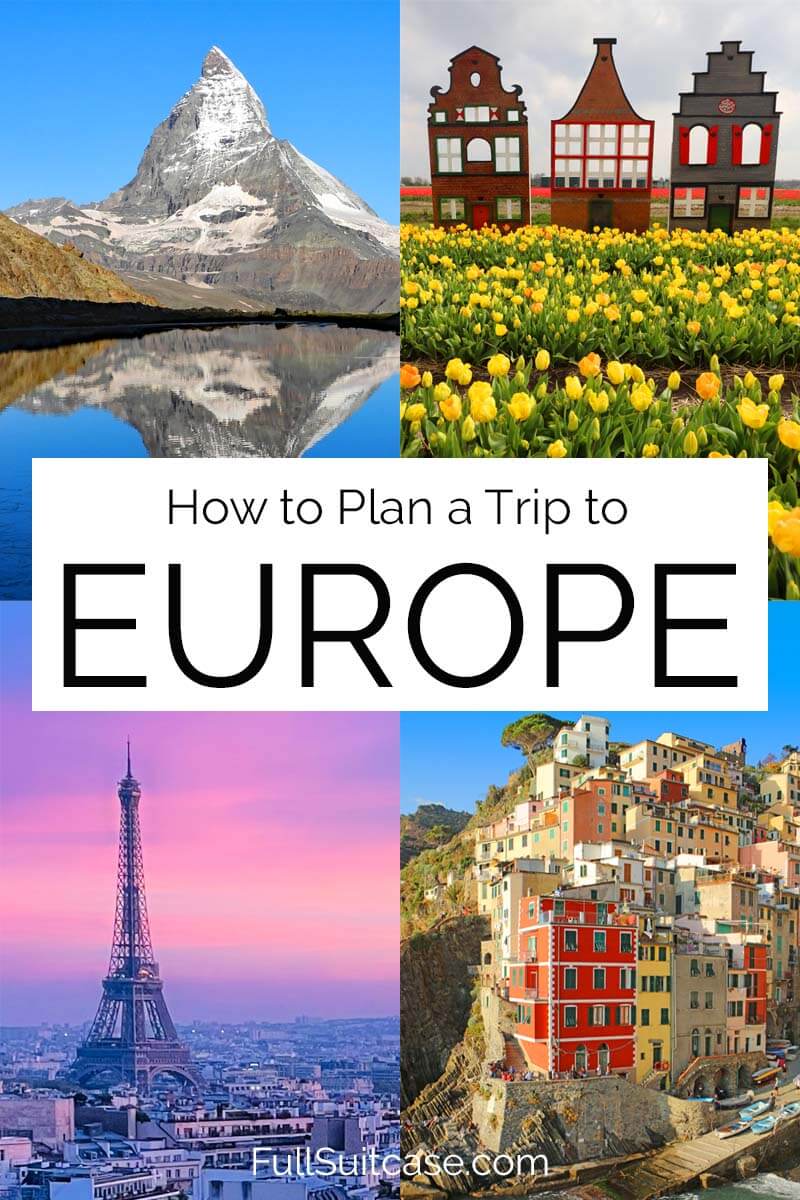
Here are some essential steps and tips for planning a trip to Europe:
1. Decide When You’ll Travel
Before starting to plan a trip to Europe, decide WHEN you will travel. The season might influence where to travel in Europe and what to do there.
While for certain destinations the season doesn’t matter that much, there are many others where summer travel will give you a totally different experience than visiting in winter.
For example, if you are visiting Europe in the summer and want to do lots of sightseeing, you may prefer to avoid the biggest cities in the south where the temperatures often are way too hot for exploring. Whereas if you are interested in beaches or hiking in the Alps, summer is the perfect time to travel.
Also when planning a trip to the mountains or other nature destinations, the season is really important. Some places can only be visited in the summer months, and some experiences can only be had in the winter… But there are also many iconic mountain destinations like e.g. Mt Titlis or Zermatt in Switzerland that can be visited the whole year round.
It all seems pretty logical, but you’d be surprised at how often we get questions from readers about seeing the Northern Lights in Iceland in the summer, or hiking in the Italian Dolomites and visiting the Dutch tulip fields in the fall or even winter…
TIP: If you can, avoid traveling to the most popular places in Europe in the peak summer season (July – August) and major school holidays (Easter and Christmas-New Year). Not only it will be less busy everywhere, but you’ll also save money on flights and accommodations.
However, keep in mind that some destinations are always popular and some places also have their own peak seasons (e.g. Venice during the Carnival, German cities during the Christmas Market season, or popular Swiss ski resorts in February-March, etc.).
READ ALSO: Best Time to Visit Europe (+ Where to Go in Which Season)

2. Determine the Duration of Your Trip
Deciding HOW LONG you’ll spend in Europe is crucial. You cannot start planning a trip without having a very good idea of how much time you’ll have for it.
If you are traveling to Europe for the first time, a two-week trip is often a good starting point. It allows you to explore multiple European cities without feeling rushed.
Of course, three or four weeks will be better as you will be able to cover more of Europe. But if you wait until you have that much vacation time, you may never travel at all… So see what works for you and make the most of it!
Remember that no matter how much time you have, you’ll never be able to see all of Europe anyway. You can spend 2-3 weeks in any country alone and still just scratch the surface. Or you can have a nice European trip in just 10-14 days, see several major cities, and go home feeling perfectly happy that you ticked off some of those iconic bucket list destinations…
It’s not the duration of your trip that will determine how enjoyable it is, but how you plan your time. See below for some tips!

3. Choose Your Destinations Wisely
Now it’s time to decide WHERE to go.
As already mentioned, “Europe” is not one destination. There are 27 countries in the European Union and 44 countries in the continent of Europe (and even more depending on how you count, but let’s not get into politics).
There is simply no way to see “everything” in Europe in one, two, or even a dozen trips. So you have to choose your destination/s wisely.
Start by making a list of your dream places that you’ve always wanted to visit . Consider their location and the season, as already mentioned above. Remember that you are traveling for yourself and you don’t absolutely have to see all of the most beautiful churches in Italy or the best museums in Amsterdam if they don’t interest you. Well, you may want to see one or two, but only if that’s what you want…
In the end, it’s your personal wishlist that should determine where to travel in Europe and not someone else’s ‘must-sees’.
Decide whether you’ll just concentrate on the main cities or will also spend a bit more time traveling around in each country. Do you prefer to explore just one or two countries deeper or do you absolutely want to cover as much ground as feasible? There are so many ways to plan a trip to Europe…
TIP: No matter which destinations you decide to visit, we highly recommend choosing a mix of cities, smaller towns, and also some nature destinations if possible. This will not only make your trip more relaxing and enjoyable, but you will also get a much better idea of how diverse and beautiful Europe really is.
SOME TRAVEL INSPIRATION: Europe’s Fairytale Destinations
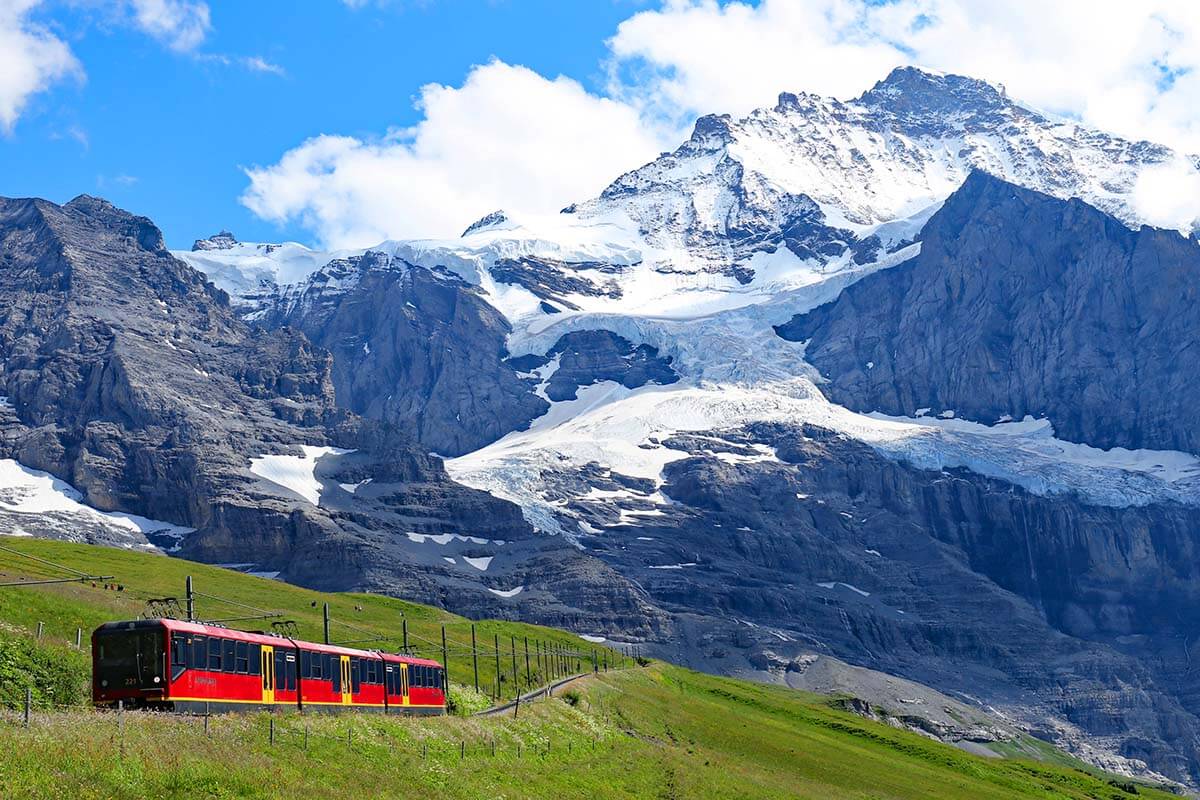
4. Don’t Overdo It
Many first-time visitors to Europe focus on the major (capital) cities and travel to a new country every few days. Just do yourself a favor and don’t overdo it !
While it might be tempting to pack in as much as you possibly can, visiting a different country every day will leave you overwhelmed and exhausted.
Yes, you can see some of the main landmarks of London in a day, take a train to Amsterdam and Paris, and fly over to Rome, Barcelona, or Athens in the same week, but you’ll spend more time at the airports and railway stations than sightseeing…
TIP: Don’t try to cover too many countries and different regions in too little time, especially if you only have 1-2 weeks in Europe. Instead, focus on your bucket list and make sure that you make the best use of your time.
Also, take into account travel times between different places. While you only need 2-3 hours to travel between the center of London and Paris or Brussels by train, you’ll spend more than half a day flying from London or Paris to Athens or Barcelona (don’t forget the time you need to get to the airport, etc.), and you’ll need at least a few days for just one destination if you decide to visit places like Iceland, Faroe Islands, Sicily, or Madeira.
Luckily, with some good planning, you can see a lot of Europe while still keeping it enjoyable. For that, it’s very important to prepare a good itinerary. See below for some tips.

5. Prepare a Rough Itinerary
Once you have figured out the season, the duration of your trip, and some of the must-sees, it’s time to make an itinerary.
This is probably the most important step in the entire process of planning a trip to Europe! If you do it right, you’ll have a fun and fulfilling trip. Pack in too much or not think things through, and your vacation might get ruined… So take your time and be sure that all the puzzle pieces fit together.
Here are some tips:
- Decide on the airports you will fly in and out of.
- Don’t forget to account for travel days and time differences when planning your trip! If you are traveling from the US to Europe, you’ll likely arrive here a day later, plus, you have to account for the jet lag. See this guide for our experience-based tips for dealing with jet lag .
- Keep in mind that travel time can add up due to unforeseen circumstances, so factor in some extra time for transportation. Flights get delayed, trains don’t always run as planned, traffic can be a mess, and you really don’t want to miss something important because your itinerary is too tight.
- Create a rough itinerary outlining the main cities, the number of days you’ll spend in each area, and key attractions you don’t want to miss.
- Opt for a mix of iconic destinations and hidden gems to create a well-rounded experience. Also, balance your schedule between sightseeing and some relaxation, and make sure to always leave at least some time for some unexpected discoveries and spontaneous exploration.
Planning an itinerary for any trip is easier said than done, and I realize that. After all, you can see some of the main landmarks of any place in a day or two, but you can also spend a week and still leave with a feeling that you could have stayed longer…
As long as you don’t try to squeeze in four days worth of sightseeing in one or two days, you’ll be fine. For that, focus on what’s important to you , plan well, and let go of the rest. Remember, you can’t see “everything” anyway, so don’t let the fear of missing out ruin your experience.
TIP: It’s better to see fewer attractions and truly enjoy them than run around like a headless chicken and constantly stress about the next item on your itinerary rather than enjoy the moment.

Sample European itineraries for 2-3 weeks
Since the majority of people planning their first trip to Europe are mostly interested in the most iconic landmarks in the main cities, we created a few very rough and rather packed itineraries to show you what’s possible.
Please remember that these are just meant to give you an idea of how you could plan a trip to Europe focusing mostly on the most popular destinations.
There are thousands of ways to plan a European trip (and also much more to see beyond London, Paris, or Rome), so you can ignore these altogether and prepare your own perfect itinerary visiting the places that appeal to you the most.
2 weeks in Europe:
- Day 1: Flight to Amsterdam. Days 2-3: Amsterdam. Day 4: Train to Brussels or Antwerp. Day 5: Day trip to Bruges. Day 6: Train to Paris. Days 7-8-9: Paris. Day 10: Train to London. Days 11-12-13-14: London.
- Day 1: Flight to Rome. Days 2-3: Rome. Day 4: Train to Florence. Day 5: Florence or a day trip to Cinque Terre. Day 6: Train to Venice. Day 7: Venice and flight to Paris. Days 8-9-10: Paris. Day 11: Train to London. Days 12-13-14: London.
- Day 1: Flight to London. Days 2-3 London. Day 4: Train to Brussels. Day 5: Day trip to Bruges or Antwerp. Day 6: Train to Paris. Days 7-8-9: Paris. Day 10: Flight to Venice or Florence. Day 11: Venice or Florence. Day 12: Train to Rome. Days 13-14: Rome.
- Day 1: Flight to Barcelona or Lisbon. Days 2-3: Barcelona or Lisbon. Day 4: Flight to Rome. Days 5-6: Rome. Day 7: Flight to Paris. Days 8-9-10: Paris. Day 11: Train to London. Days 12-13-14: London.

3 weeks in Europe:
- Day 1: Flight to Rome. Days 2-3: Rome. Day 4: Train to Florence. Day 5: Florence or a day trip nearby. Day 6: Train to Verona. Day 7: Day trip to Venice. Day 8: Train to Milan. Day 9: Day trip to Lake Como. Day 10: Flight to Amsterdam. Day 11-12: Amsterdam. Day 13: Train to Brussels or Antwerp. Day 14: Day trip to Bruges. Day 15: Train to Paris. Days 16-17-18: Paris. Day 19: Train to London. Days 20-21: London.
- Day 1: Flight to Lisbon. Days 2-3: Lisbon. Day 4: Flight to Barcelona. Days 5-6: Barcelona. Day 7: Flight to Naples. Days 8-9: Capri and Amalfi Coast. Day 10: Train to Rome. Days 11-12-13: Rome. Day 14: Train to Florence. Day 15: Florence or a day trip nearby. Day 16: Train to Venice. Day 17: Venice. Day 18: Flight to Paris or London. Days 19-20-21: Pari or London (or even both by train).
- Day 1: Flight to London. Days 2-3-4 London. Day 5: Train to Amsterdam. Days 6-7: Amsterdam. Day 8: Train to Bruges. Day 9: Train to Paris. Days 10-11-12: Paris. Day 13: Train to Strasbourg. Day 14: Day trip to the Alsace region. Day 15: Train to Lucerne. Days 16-17-18: Swiss Mountains. Day 19: Train to Milan (via Bernina Express). Days 20-21: Milan & Lake Como.
- Day 1: Flight to Paris, Barcelona, Lisbon, London, or Amsterdam. Days 2-4: In the city of your choice. Day 5: Flight to Rome. Days 6-7: Rome. Day 8: Train to Florence. Day 9: Florence or a day trip nearby. Day 10: Train to Venice. Day 11: Venice. Days 12-13-14: Italian Dolomites & Lake Garda (rent a car). Day 15: Milan (return a car). Day 16: Lake Como day trip from Milan. Day 17: Train to Lugano. Day 18: Train to Lucerne (via Bernina Express). Days 19-20-21: Swiss Mountains.
Further below, you’ll find very detailed itineraries for some of the most popular destinations in Europe. But first, documents, transportation, and money matters – see below.
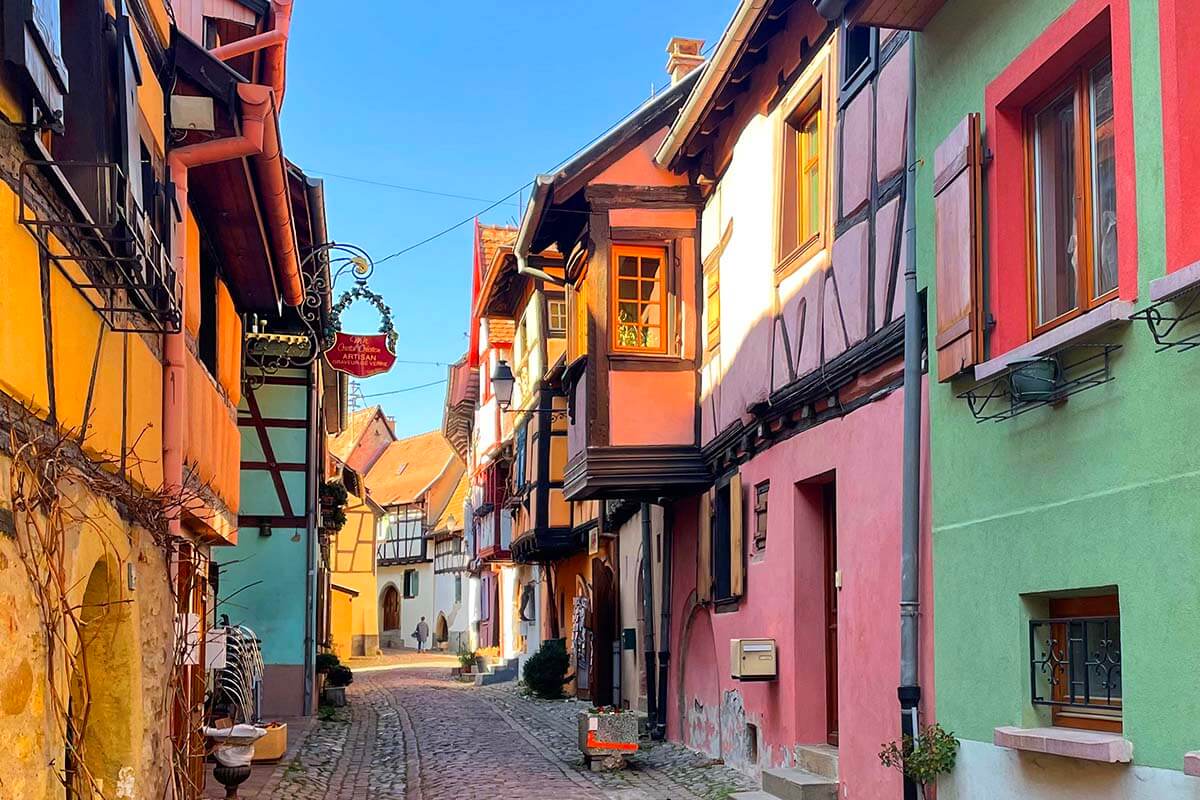
6. Check What Kind of Travel Documents You Need
Depending on where you live, which nationality you have, and which European countries you are planning to visit, you may need different travel documents. It’s very important that you do your own research for that!
As a minimum, if traveling from abroad (like the USA), you will need an international travel passport (make sure your passport is valid for at least 6 months beyond your planned return date!). In some cases, you may need a visa or an electronic travel authorization.
It’s also important to understand that many European countries are in the Schengen Zone which means that once you arrive in one country, you can freely travel around to other places without any additional documents. However, not all of Europe falls under this agreement.
For example, most EU countries are in the Schengen Area but not Ireland, Cyprus, Romania, or Bulgaria. Whereas Switzerland, Iceland, Norway, and Lichtenstein are not in the EU, but are part of the Schengen Zone. The UK is not part of the Schengen Zone.
Good to know: Starting from 2025, travelers from visa-exempt countries (also from the USA) will be required to have travel authorization to enter most European countries. It’s called ETIAS and you can find all the information about it on the official website . It is very similar to the ESTA system that Europeans have to use when visiting the USA. Basically, you have to fill in an online form and provide some travel information before your trip.
However, the ETIAS project has been postponed time and again, so it’s not clear when this travel authorization will finally be introduced. At the moment of the last update to this article, they have pushed the dates once again.
TIP: Use official sources such as government websites when researching which travel documents you need. Also, remember, that it’s often very simple (and cheap) to apply for any documents online by yourself, so don’t get tricked by all kinds of online visa services.
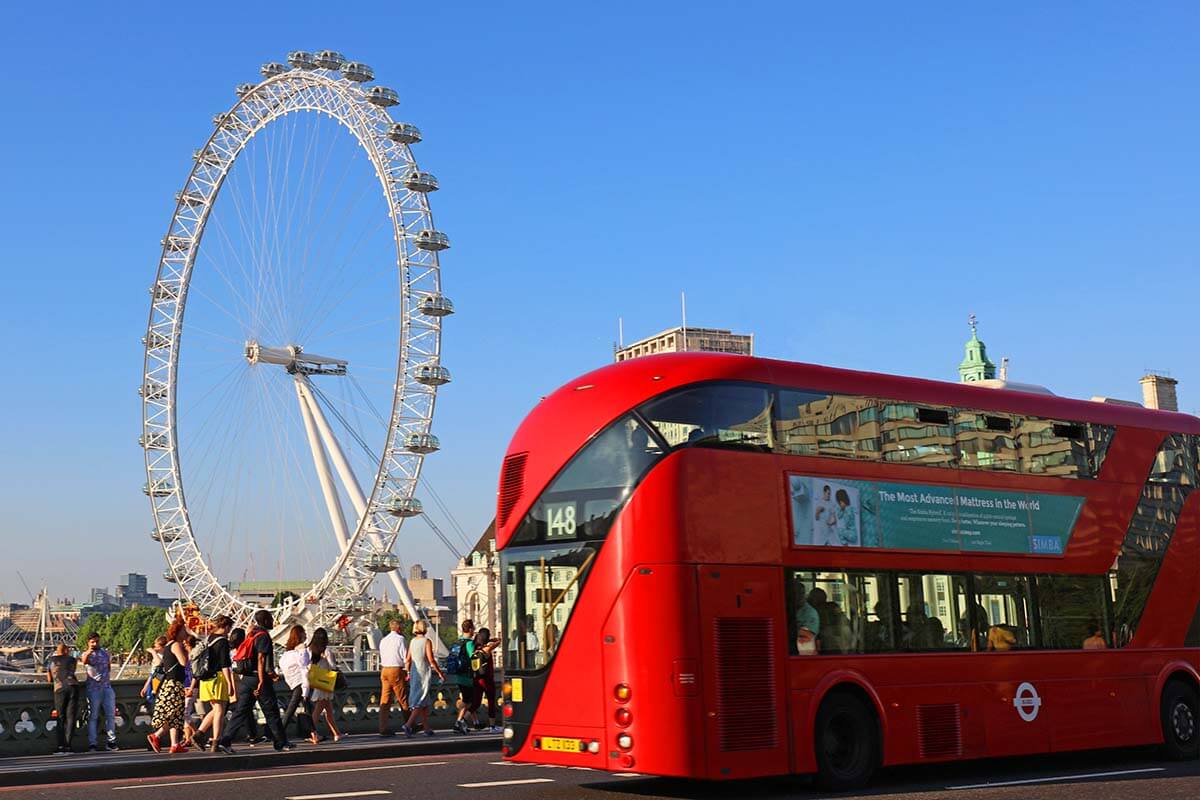
7. Research Long-Haul Flights
Once you have a rough itinerary, it’s time to research the best flight options to Europe and back.
- Search for flight deals well in advance to secure affordable fares.
- Consider open-jaw flights (flying into one city and departing from another) to optimize your sightseeing time.
- Research flight options to/from alternative airports. It might be cheaper to start or end at another airport than the one you originally planned. Sometimes, a few simple changes like that can save you a lot of money.
- There are many websites that you can use to research the best flight options. We use Skyscanner, Momondo, Google Flights, and often also directly with our favorite airlines.
TIP: Some airlines offer free stopovers at their hub destination, which might enable you to visit an additional country/city at no extra cost. For example, Icelandair often has good deals that give you some time to explore Iceland on the way to continental Europe. Also, TAP Portugal sometimes has a good deal for a stopover in Lisbon . These are just a few examples, just to show you that there are more options than you may think of.

8. Make a Realistic Budget
Traveling to Europe from overseas might be very pricey, so be sure to make a realistic budget for your trip. Keep in mind that the biggest cost of your trip to Europe will likely not be the transatlantic flight, but accommodations and meals. We’re always surprised how quickly the costs of dining out can add up on a longer trip.
Also, don’t let the prices scare you off. With some careful planning and research, you may be able to do that dream trip for much less than you think.
You might simply have to make some adjustments to your itinerary or choose an alternative mode of transportation or accommodation to make it work. You can also save a lot of money by opting for a picnic or a simple local snack for lunch rather than dining at a restaurant twice a day.
Good to know: Please don’t ask me how much your trip to Europe will cost. I get this question for so many destinations time and again, and my answer is always the same. It depends on so many factors, such as when you travel, how long in advance you book, if you can get any special deals for the flights, which hotels you choose (and how many people share the room), which attractions you visit, where you dine, etc.
You can make any trip as expensive or as cheap as you like, so it all depends on your choices.

Here are some tips to make your European trip more affordable:
- Start planning (and book!) well ahead, ideally at least 6 months before your trip, for some destinations/seasons even earlier. The earlier you book, the more choice you have in all budgets.
- Limit the number of destinations you visit. Staying in one place longer is usually much more affordable than traveling to a different place every couple of days. Not only will you save on transportation, but many cities/regions in Europe also have multi-day cards which can save you a lot of money on sightseeing. Most of these cards are only really worth it if you stay in the same place for at least 2-3 days and offer the best value on longer stays like 4-7 days.
- For longer travel distances within Europe, check if there are budget airlines operating the route that you need. Some of the most popular budget airlines in Europe include Ryanair, EasyJet, Wizzair, Vueling, Transavia, Norwegian, and several others. If your budget is tighter, you may also want to consider intercity buses, also for international routes.
- Opt for lesser-known places or cheaper countries in Europe. For example, your money will stretch much further in Krakow , Seville , or Lisbon than in London , Amsterdam , or Brussels .
- Choose your restaurants wisely. You can have a perfectly good meal in many places in Europe for 10-15 euros, but it’s not abnormal to pay 30-50 euros for the main dish either. And while you can have a 5-10 euro cocktail in most places, prepare to pay 25-30 euros at the best rooftop bars in Florence …
- Get a good travel credit card before your trip. Some cards allow you to collect points/miles, some others give cashback, etc. You’ll be spending lots of money on your trip anyway, so try to make the most out of it.

9. Research Transportation in Europe
Next, it’s time to research the transportation options within Europe.
There are countless ways to travel around Europe. Depending on your budget, time, and overall itinerary, you may want to fly, take (international) trains, or buses, rent a car, or even opt for some form of overwater transportation or even book a (river) cruise for a few days…
Covering transportation options within Europe would require quite a few extra articles, so here are just a few general tips:
- Don’t fly short distances in Europe (e.g. London to Paris). Often, it’s much more efficient to take a train, even for longer distances, especially if there are high-speed trains available. The train stations are usually located in the city center and you don’t have to arrive hours in advance, which saves a lot of time. Plus, there are fewer baggage restrictions, and the trains are usually cheaper. TIP: You can use websites like Omio to compare all the best transportation options for any route. Or use the official sites of the national railway companies for every country that you plan to visit.
- Don’t rent a car if you don’t absolutely need it (that is if you are mainly visiting cities and big towns). Traffic can be really busy and driving is often stressful and takes more time than public transport. Plus, parking can be expensive and hard to find. And you don’t want to get me started on different toll systems, green zones, and limited traffic zones which are all different in each country and sometimes even in each city… That said, renting a car is often the best way to explore the countryside and see more places a bit off the beaten path, but this is something that most first-time visitors to Europe don’t even consider.
- If you decide to rent a car, only rent it for the days when you need it (so not when you are in major cities). Also, do extensive research if planning to drive through several countries. A lot is possible, of course, but each situation is different. TIP: We always use this website to compare prices and find the best deals for car hire.
- Consider guided day tours for some destinations (e.g. Lake Como from Milan or the Dutch Countryside from Amsterdam). It will save you a hotel change, transportation costs, and lots of stress and hassle while allowing you to maximize the time that you have. We mainly use GetYourGuide to research the best excursion options. Viator is also good for some destinations.
- Most European cities are very walkable and public transport is excellent too. Taxis are available and in many places, you can also use Uber or Bolt. Bike tours are also great if you want to see a lot in a short time.
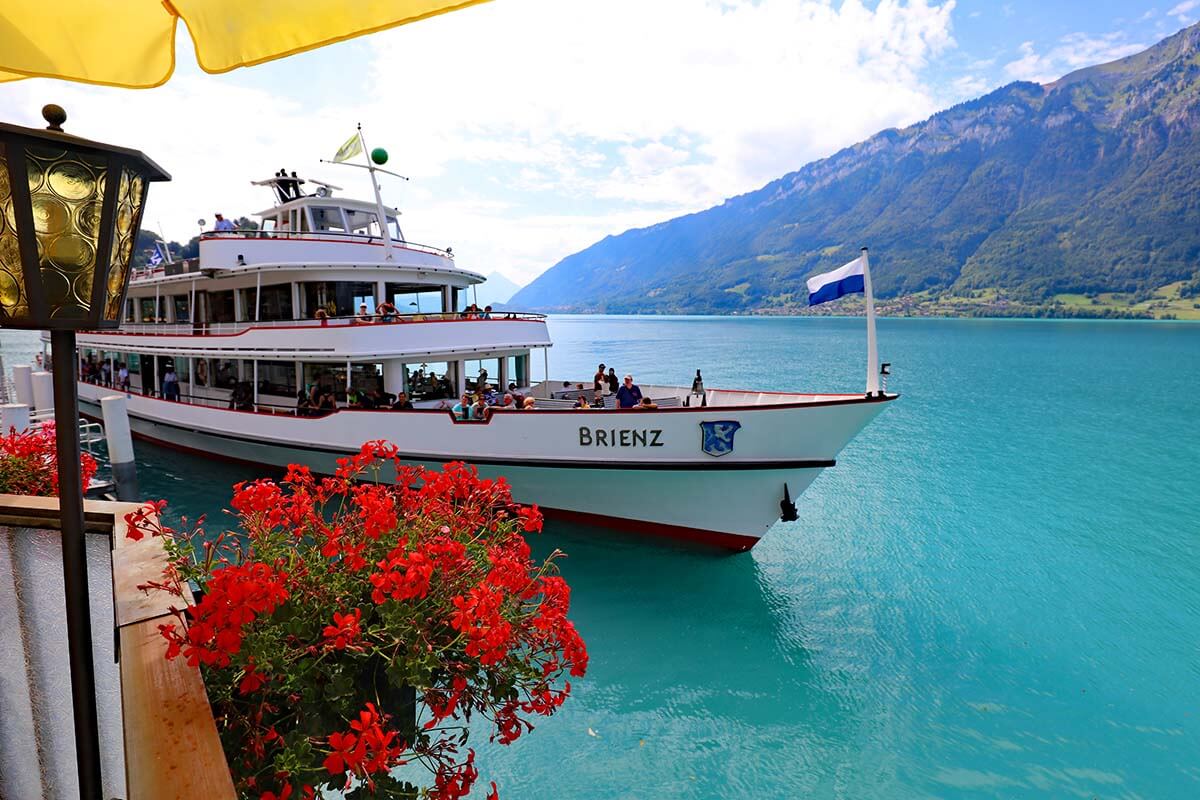
10. Book Your Accommodations
Once you have a rough itinerary and an idea of how you’ll travel around, it’s time to book your accommodations.
Unless you are traveling to Europe for several months with lots of flexibility and without a set itinerary, be sure to book your accommodation as soon as you know your travel dates. The availability at some places is really limited and the prices often skyrocket the closer it gets to the travel date.
Just one example. If you are looking for a hotel in Venice a month before your summer trip, you’ll often find that the cheapest rooms in the city cost $500-700 per night. Whereas if you book ahead, you should find plenty of nice choices at about half that price. Some of our friends recently traveled to Venice and decided to stay outside the city and then take a train because hotels in Venice were simply unaffordable.
When looking for a place to stay, consider the transportation that you’ll use. Often, staying close to the railway station is the best choice, especially if you are only in the city for a day or two. It can save you a lot of time!
TIP: Check Booking.com for your travel dates to get a better idea of availability and prices, and to book your stay. This is by far the most popular accommodation booking website in Europe and you’ll find all types of lodging here: from luxury hotels to hostels, private apartments, villas, etc.
If you are not familiar with it, Booking.com is Europe’s answer to Expedia, Airbnb, Vrbo, and many others all in one place (but often with much better booking conditions and customer service). We use it for all our lodging bookings worldwide, but it’s an absolute #1 in Europe.
Here are some articles that you may find useful:
- Where to stay in London .
- Where to stay in Amsterdam .
- Where to stay in Rome .
- Where to stay in Brussels .
- Where to stay in Antwerp.
- Where to stay in Reykjavik .
- Where to stay in Cinque Terre .
- Where to stay in Lake Como .
- Where to stay in Amalfi Coast .
- Where to stay in Naples.
- Where to stay in Algarve, Portugal .

Good to know: Many popular European destinations were forced to introduce all kinds of laws to limit private rentals for short stays because websites like Airbnb have made housing completely unaffordable for locals. Countless articles and books have been written about the devastating impact private rentals had on Europe, especially in major cities like Amsterdam, Barcelona, or Lisbon…
So in order to keep European cities liveable and authentic, please consider resisting the urge to ‘live like a local for a few days’ and simply book a hotel or a hostel. There are also ‘aparthotels’ (apartments with hotel service) if you are traveling with a family and need more space.
That way, you’ll actually contribute to the local economy rather than make the problem worse. Renting a tiny apartment in Paris or Rome will really not make you ‘a traveler and not a tourist’ (no idea who even came up with this absolutely ridiculous distinction). Better be a responsible tourist than an ignorant ‘traveler’.
Of course, you can choose to do whatever feels right for you. And if you are traveling with a big family like we do, sometimes apartments might be the best or even the only option. I just want you to be aware of the problem that led to so many cities and popular areas losing their authentic charm which made those places attractive to tourists to start with (oh, the irony)…
Ok, rant over. 😉
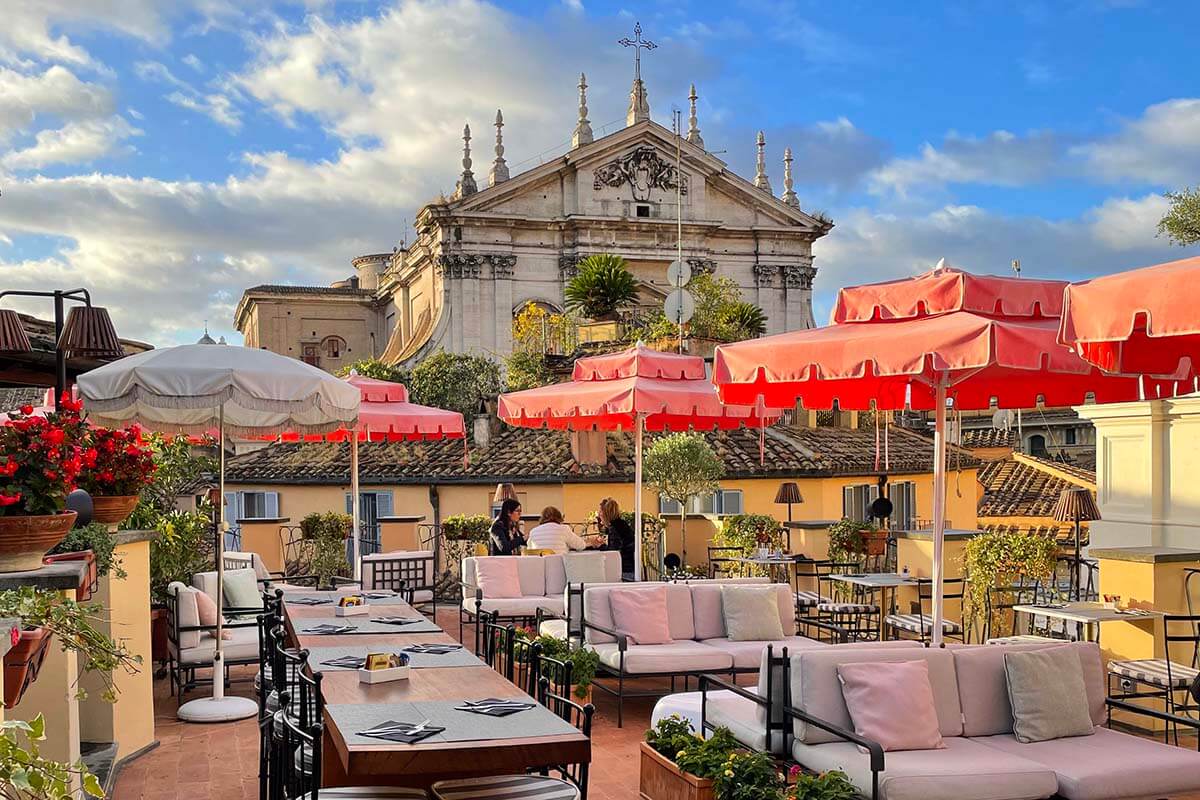
11. Fine-tune Your Itinerary & Book Tickets!
When planning any trip, I always start with flights, accommodations, and transportation, as that makes it easier to plan the rest. Once you know where you’ll be staying and at what time your flights/trains are, you can start looking into sightseeing, booking attraction tickets, and researching day trips, excursions, etc.
Now it’s time to fine-tune your itinerary. This means researching which places you want to visit and making sure that you can do everything in the most efficient way.
TIP: For some places, you may also want to research if city passes or (regional) travel cards make sense and book them in advance. For example, in Switzerland, you may consider the Swiss Travel Pass (an all-in ticket that includes all the public transport and many museums across the country). In Rome, you may want to get the popular Omnia Card , and in Paris – the Paris Museum Pass , etc.
Important! Pretty much any popular tourist attraction in Europe requires advance booking nowadays (even if it’s included with one or the other city pass). If you didn’t think of booking tickets for the Van Gogh Museum in Amsterdam , the Louvre in Paris , or the Colosseum in Rome weeks in advance, it’s very likely that won’t be able to visit at all.
Also, remember that even the most popular attractions often close at least one day of the week, so you may have to move things around to be able to visit a place you really want to see.
For some places, tickets sell out months in advance and for some others, you cannot book more than a few weeks upfront (but have to be quick when the tickets are released). So doing your research in advance is essential!
TIP: Booking as much as possible in advance is the best way to be sure that you will be able to visit all those places from your European bucket list! It will also save you so much stress and make your trip more relaxing.
Below, we have a few examples of how to fine-tune your itinerary. Read on!
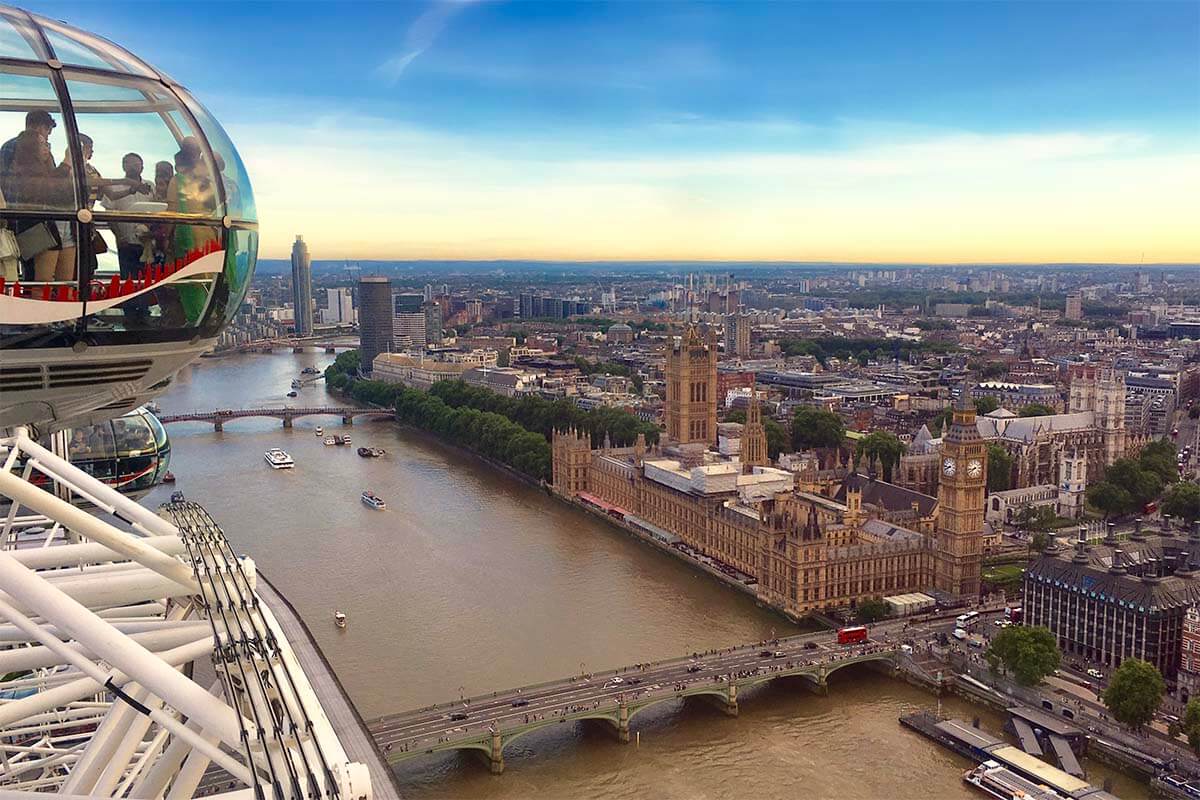
Detailed itineraries for popular destinations in Europe
TIP: We have quite a few very detailed itineraries for several major cities that will help you plan your European trip.
These itineraries focus on ‘the musts’ taking into account the time that you have in each place. You will also find all the information about which tickets you have to prebook and how, etc. Check them out via the links below:
- 1 Day in London
- 2 Days in London
- + Best Day Trips from London
- 1 Day in Amsterdam
- 2 Days in Amsterdam
- 3 Days in Amsterdam
- 4 Days in Amsterdam
- + Best Day Trips from Amsterdam
- 1 Day in Paris
- 4 Days in Paris
- 1 Day in Barcelona
- 2 Days in Barcelona
- + Montserrat Day Trip from Barcelona
- 1 Day in Seville
- 2 Days in Seville
- 1 Day in Madrid
- + Toledo Day Trip from Madrid
- 1 Day in Lisbon
- + Best Day Trips from Lisbon
- 1 Day in Rome
- 2 Days in Rome
- 4 Days in Rome
- 1 Day in Florence
- 1 Day in Venice
- 3 Days in Venice
- 1 Day in Milan
- 1 Day in Naples
- 1 Day in Cinque Terre
- Dolomites Itinerary
- Amalfi Coast Itinerary
- Naples + Amalfi Coast + Capri Itinerary
- Lake Garda Itinerary
- 1 Day in Salzburg
- 2 Days in Salzburg
- … For many more cities, smaller towns, and other popular destinations all over Europe, please see our destinations page .

12. Research Airport Transfers
No matter where you arrive in Europe, the very first thing you’ll need to do is find your way from the airport to your accommodation. Figuring this out on the spot can be very stressful even for seasoned travelers. Plus, you’ll be tired and jet-lagged, and you may have difficulty with the local language too…
So save yourself the stress and do some research before your trip! That way, you know exactly what to expect and what to do after you step out of the plane. Also, remember to do this for every place where you’ll need any kind of transportation/ transfer.
Don’t forget that you’ll have luggage as well. In many major cities, there is luggage storage at the station. But most hotels will keep your bags for free before you can check in or after you check out.
Good to know: In most places in Europe, the train is the best option to get to the city from the airport, but this may not always be the case. Sometimes, you are better off using a shuttle bus or private transfer.
Taxi is usually the most expensive (and often the slowest) option, so we usually tend to use taxis/Uber/Bolt for short distances in the city or when we travel during the quiet times of the day. But this varies a lot depending on the destination. See below for some examples.
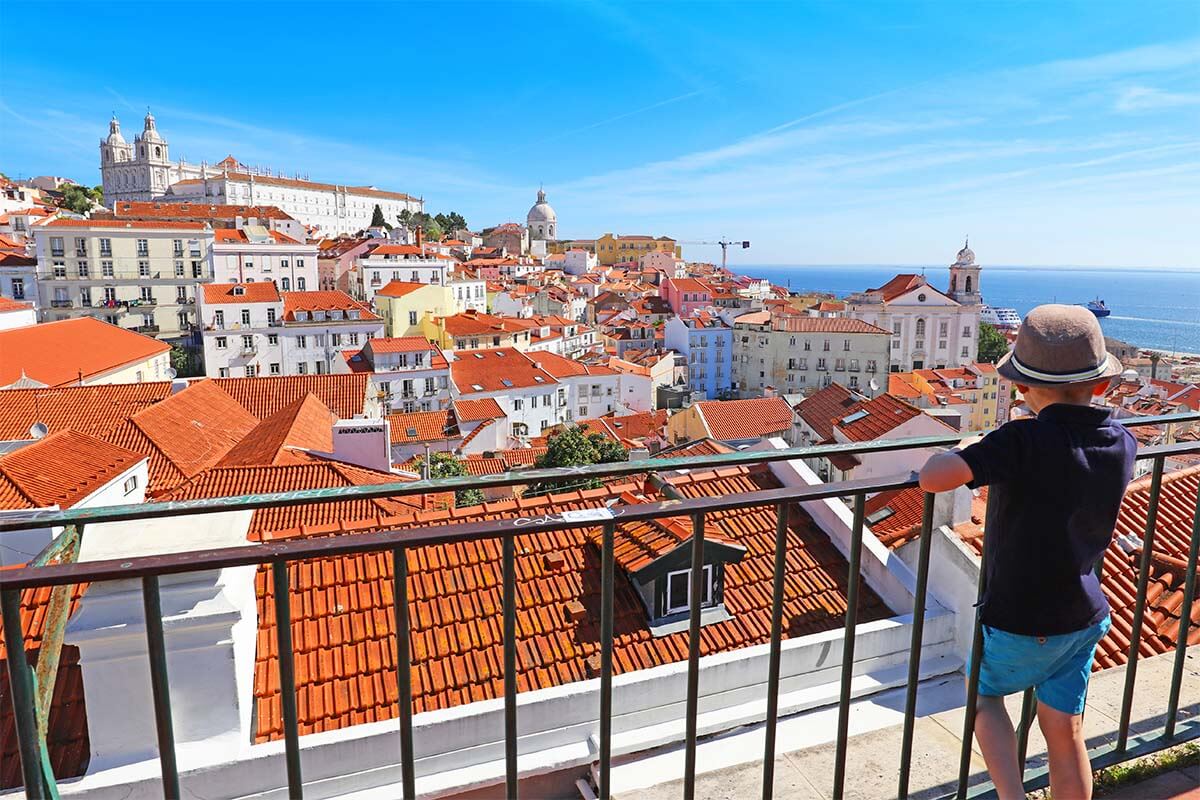
Here is some info for the airport transfers in several popular destinations in Europe:
- Flying to Rome ? There are quite a few options to get to the city. Check out our guide on how to get to the city from Rome airports for more information.
- Arriving in Paris by train? The easiest way to get to your hotel is usually by metro (unless your hotel is within walking distance from Paris Nord Station). Uber/taxi is also an option, but you can get stuck in traffic forever.
- Flying to London and need to get to the city center? Depending on where exactly you arrive, see the airport transfers here . If you are coming by train, use the metro to get to your hotel (or book a hotel near St. Pancras International Station).
- In Amsterdam , book a train from the airport to the central station. If you stay near the station, you can easily walk to your hotel.
- In Barcelona , Aerobus is the best way to get from the airport to the city center, or the metro but it can take much longer.
- In Lisbon , a private transfer is by far the best option to reach the city from the airport.
- In Reykjavik , the airport is so far away and the taxis are so expensive that you’re better off using a shuttle. See our guide to Reykjavik airport transfers for all the best options.
- In Brussels , the train is the best way to reach the city from the airport or any other major city nearby. Book a hotel in the center and you can simply walk from the station.

13. Get Travel Insurance
Travel insurance is essential for any trip, so also when traveling to Europe.
There are so many companies and so many different policies that it would be really hard to recommend something specific. Check if your credit card includes any kind of trip insurance and look online for the best options in your area.
Also, be sure to read the small letters so that you know what exactly is covered. Some insurance policies might include trip cancellation insurance, coverage for stolen or lost belongings, etc.
But the most important is getting coverage for all medical emergencies and repatriation (bringing you home due to serious illness or injury, etc.). Money is the last thing you want to be thinking about if you end up in a hospital in a foreign country.
TIP: If you are taking any prescription medicine at home, be sure to pack it with you!
PRO TIP: Make copies of all the important documents and store them in a safe place that you can access from anywhere in the world (Google Drive or email, for example). We always have a copy of our passports, driver’s licenses, insurance and flight info, etc.

14. Share Your Travel Plans
No matter if you are traveling alone or with friends, it’s always a good idea to share your travel plans and detailed itinerary with someone who stays at home. You never know what might happen.
This will also give your family peace of mind since they will know exactly where to find you if need be.
At the same time, don’t share your plans too widely. There is no need to tell the whole world that your house will be empty for a month or to share your exact location on social media channels.
We usually only post on social media after we leave the place and there is a good reason for that. I have heard it on quite a few occasions that people who live in the area show up at someone’s hotel after seeing their posts on Instagram… And this doesn’t only happen to ‘famous’ people or ‘influencers’.
TIP: If traveling solo, be sure that your hotel or accommodation host is aware of your whereabouts, especially if you are exploring outdoors on your own or going out late at night.

Once you have everything planned and settled, it’s time to prepare for your actual trip to Europe. There are quite a few things to think about – here are some of the most important ones:
15. Familiarize Yourself with Money Matters
Decide if you’ll be taking cash with you, how much, and in which currency. Remember that you cannot pay in USD in Europe. And while most EU countries use Euros, it’s not the case everywhere, not even to mention the non-EU countries like Switzerland or the UK.
TIP: If you use an ATM abroad, try to avoid the ones with the Euronet sign on them because the fees and exchange rates are outrageous. Instead, look for ATMs at the local banks. When withdrawing money or using your card to pay, always choose local currency. You’ll usually see two options – local currency and USD amounts. If you choose to pay in USD, you’ll get a much worse exchange rate. So when in doubt, remember LOCAL currency is always the way to go.
While some southern European countries still prefer cash, you can usually pay with your debit – or credit card (or your phone, watch, etc.) pretty much everywhere in Europe. In fact, in many countries (especially in the Nordics), hardly anyone uses cash at all.
TIP: Get a good travel credit card (with no foreign fees) and notify your bank about your travel dates and destinations to be sure that your cards will work abroad.
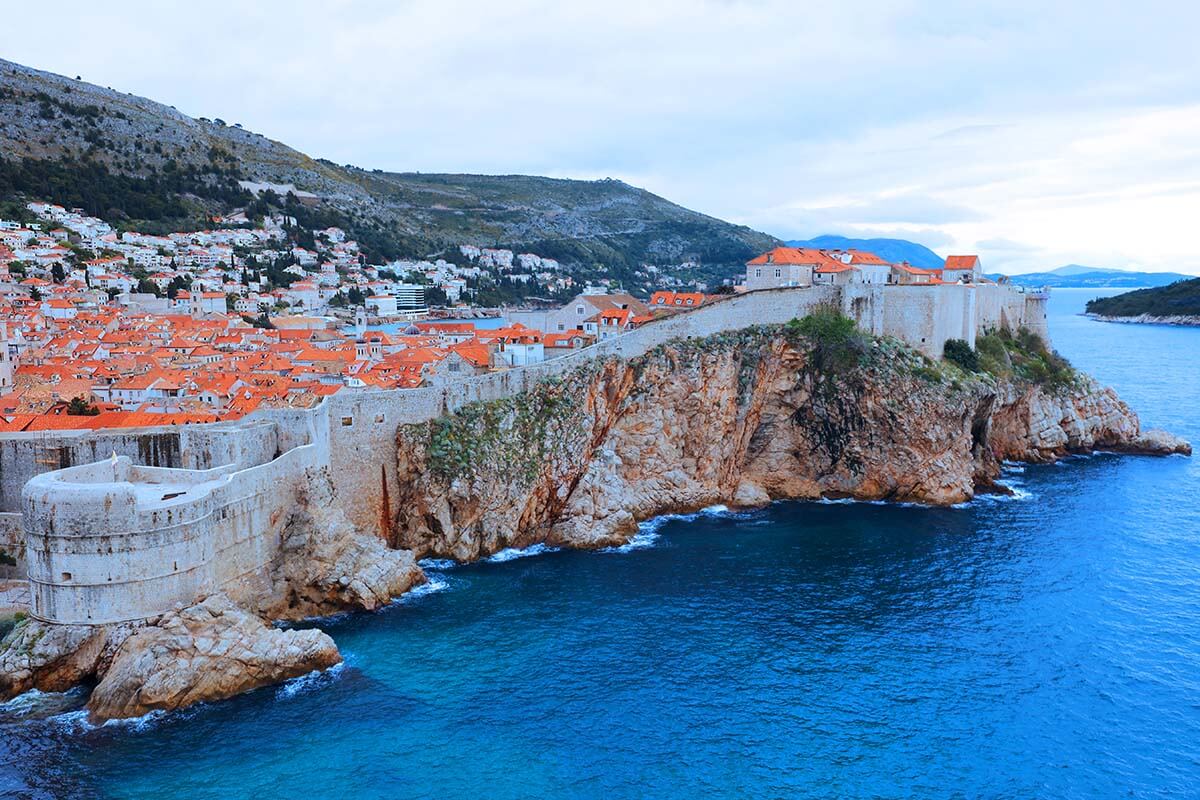
16. Figure Out How to Stay Connected
Most hotels (and many other places) in Europe offer free WiFi these days. So if you don’t absolutely have to stay online the whole day, you can usually do just fine without the internet (it can be very nice to disconnect during your vacation too!).
However, if you want to use data on your phone, keep in mind that using your provider’s data plan might be very expensive. Usually, it’s much cheaper to buy a local SIM card (just make sure that your phone is unlocked), or – easier – you can also buy an eSIM in advance . With an eSim you can simply use your phone without having to worry about changing physical SIM cards.
A pocket WiFi is yet another good option, allowing you to connect several devices to it at the same time. If you are traveling to Europe with a family, it might be a much cheaper solution than getting individual eSIM cards for everyone.
Good to know: The majority of European countries do not have roaming fees between them, so if you buy an eSIM in one country, you’ll be able to use it in other places too. This applies to all the EU countries, but also Iceland, Liechtenstein, and Norway. Some operators also don’t charge extra for roaming in the UK, but you’d have to double-check this depending on which card you buy.

17. Get a Travel Adaptor & Portable Charger
Don’t forget that you will need to charge all your devices when traveling through Europe. Also here, most countries use the same plugs, but there are also exceptions.
Depending on where you’ll be traveling, you will need either a Type C Travel Adapter (most of Europe) and/or a Type G Plug (The United Kingdom).
We recommend travel adapters that have a combination of several outlets including USB or USB-C plugs (like this for example). These adapters often have multiple outlets, allowing you to charge several devices at the same time. This can be very handy because some hotel rooms have a very limited number of sockets.
TIP: We usually pack an adapter like this . The long cable makes it simpler to connect multiple devices without having to worry about the location of the socket (which can sometimes be in the strangest and most difficult-to-reach places).
PRO TIP: Get a small portable charger that you can use to recharge your phones when on the go. If you are planning on using your smartphone for photos, maps, tickets, and similar, the battery will likely be low in a few hours. So make sure that you can always charge your phone when needed.
Of course, an adapter or a power bank alone is not enough. Be sure to pack your charging cables as well!

18. Pack Smartly
When traveling to Europe for the first time, you may be tempted to overpack. Indeed, it may not always look simple especially if you are visiting a mix of colder and warmer destinations, and nature as well as cities.
But remember that you’ll need to carry around whatever you pack. Every time I take a train or visit a bigger city in Europe, I see so many international travelers struggling with their luggage. There are stairs and cobblestones everywhere, and limited baggage spaces on the trains, etc.
Also if you are flying within Europe, you’ll see that many airlines have very strict hand luggage rules and every extra bag will cost you a small fortune.
So try to pack smartly and remember that you’ll likely not use half of what you want to take. Here are some tips on what to pack so that you can travel lightly:
- Pack versatile clothing suitable for different weather conditions and activities. Be sure that you can mix and match all your clothes.
- Pack one jacket (light rain jacket in the summer and warmer insulated jacket in the winter), one or two sweaters, two pairs of pants/shorts/skirts, T-shirts/shirts/blouses, underwear, and socks for a week (you can easily wash and dry some small items in your hotel).
- Be sure that you can layer your clothing if necessary (so that the jacket is big enough to wear a sweater or even two underneath).
- Comfortable walking shoes are a must, as you’ll be exploring on foot a lot. While in the past, Europeans only wore sneakers for sports, nowadays everyone walks around in (fancier) sneakers in the cities too. That said, a lot depends on your specific itinerary. If you are going to the mountains, you may need hiking shoes, and if you are visiting theaters and fancy restaurants, you may want to pack a pair of nicer shoes.
- Pack only essential toiletries ; you can always buy extra if you run out or forget something.

Here are a few extra items that we recommend packing:
- If visiting Europe in summer, remember that many churches require modest clothing. It’s always good to pack a light summer scarf – you can use it to cover your shoulders or wear it when it gets colder.
- Pack a small crossbody bag rather than a backpack for exploring the cities. Many attractions don’t allow backpacks inside, no matter how small (you’ll be asked to use the lockers), whereas crossbody bags are usually just fine.
- Pack a small reusable water bottle to reduce plastic waste. Tap water is safe to drink (and delicious) in most places in Europe, plus, many cities have free water fountains where you can refill your bottle.
Don’t worry about ‘looking like a tourist’ when traveling around Europe. You are a tourist after all and a red beret hat in Paris will definitely betray you (but if it makes your trip more fun, who cares). Remember that comfort is more important than trying to blend in. You won’t last long in high heels on cobbled streets…
TIP: Always keep the important documents, electronic devices, or medications in your hand luggage. It can be useful to take a photocopy of your documents and place it in a different bag than the originals (in addition to digital copies as mentioned before).
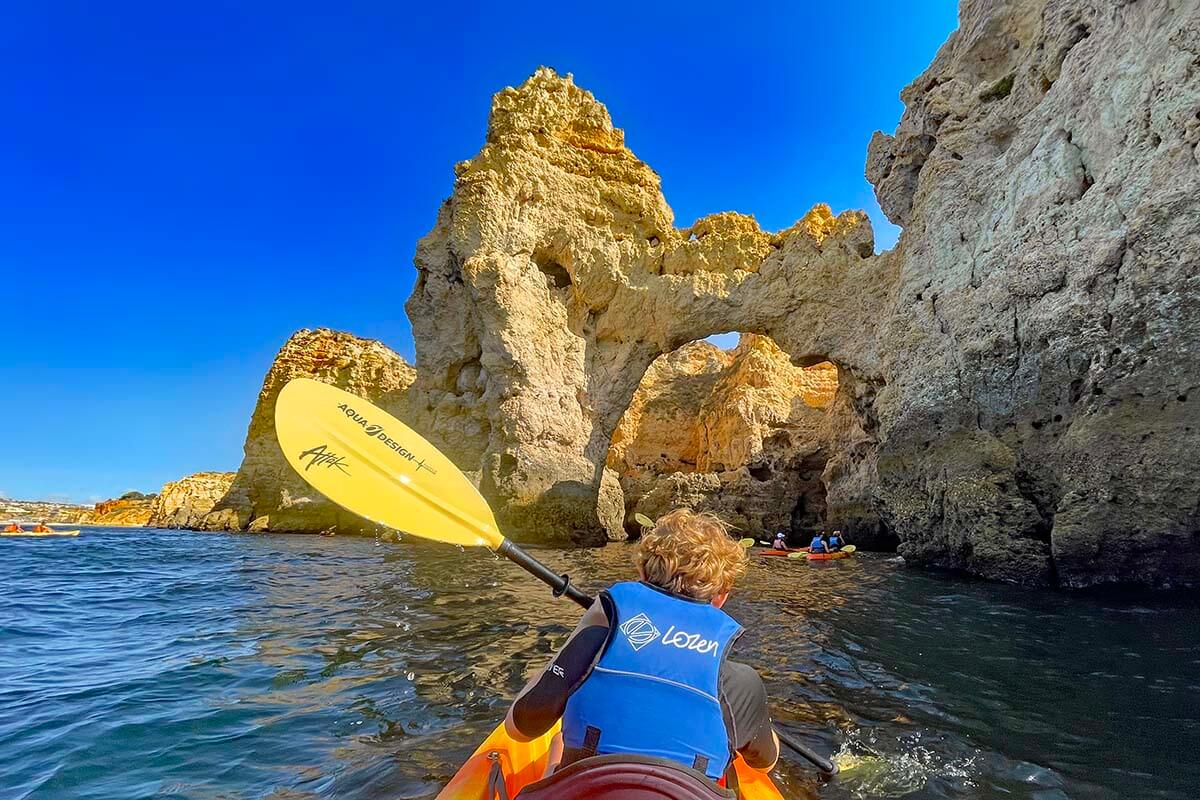
19. Don’t Stress About the Language Barrier
With so many countries and different languages spoken all over Europe, there is not one European that speaks them all. So if we can travel around Europe and get by just perfectly, so can you.
To give you an idea, in our family, we speak 5 European languages fluently and understand another 3-4 quite well, but we still use English a lot when traveling around Europe.
This is because if people in Europe learn a second language, they usually opt for English. Especially younger generations. While in the past it wasn’t easy to communicate in English in many countries, nowadays, it’s hardly even an issue anymore, definitely in the more touristy areas and bigger cities.
And if you run into a situation where you really don’t find anyone who speaks English, remember that a smile goes a long way. Plus, you can always use Google Translate if need be (even offline if you download certain languages in advance).
TIP: Learn a few basic local phrases for each country that you will be visiting. People always appreciate the effort, even if all you can say is ‘bonjour’ or ‘merci’ (‘hello’ and ‘thank you’ in French).
20. Try Local Food!
There is probably no better way to experience a new culture than through its food and dining experiences. So forget about all the food that you are used to at home and embrace European cuisine!
Food is such an essential part of traveling in Europe and your trip will be so much more special if you make the effort to try some local dishes everywhere you visit.
Try galettes (pancakes) or escargots (snails) in France, suppli (a deep-fried rice ball) in Rome, taste a cheese fondue or a raclette in Switzerland and discover countless different types of real Belgian waffles or moules-frites (mussels and French fries) in Brussels…
Every country, every region, and even every city has its own specialties. It’s worth traveling all the way to Europe just for its food!
TIP: One of the best ways to familiarize yourself with local dishes in a new place is by joining a food tour with a local guide. In just a few hours, you’ll get to taste all kinds of traditional specialties of that region coupled with local stories and tips about the place you are visiting. We are fans of food tours and try to do them wherever we can. It’s always so much fun (and the kids love it too!).
We always book food tours via GetYourGuide . Just type in the name of the city + food tour, and you’ll find plenty of choices.
You may also want to read some of our food guides, with tips on where to try these local dishes:
- British Food
- French Food
- Italian Food by Region
- Lithuanian Food
- Best Street Food Tour in Rome

21. Leave Some Room for Spontaneity and Enjoy the Moment!
While planning is extremely important, be sure to leave room for spontaneity as well.
Take some time to sit down for a cup of coffee and do some people-watching, get a gelato, or splurge on a cocktail on a rooftop terrace, and simply enjoy the moment. Take a detour via a nice little street along the way and look for some hidden gems beyond the main attractions.
Remember that some of the best experiences in Europe come from wandering aimlessly, stumbling upon charming neighborhoods, local cafes, markets, or talking to locals.
Often, it’s the little things and unexpected discoveries that make for some of the most memorable travel experiences!
TIP: Talking about getting a bit off the beaten path, here are some of our favorites: hidden gems in London and hidden gems in Rome .

So, these are some of the main steps for planning your first trip to Europe. I hope that our tips and advice will help you plan a truly memorable vacation.
Traveling to Europe for the first time will open up a whole new world for you, with rich history, diverse cultures, and breathtaking landscapes. You are sure to come back home with some incredible experiences and unforgettable memories.
Have a great trip!
TIP: As already mentioned, we live in Europe and have traveled around extensively. On our blog, you can find lots of guides to some of the destinations we visited most recently. Below, we highlighted some articles that you may find useful.
Useful tips for visiting some of the most popular cities in Europe:
- Amsterdam Travel Tips
- Barcelona Travel Tips
- Krakow Travel Tips
- London Travel Tips
- Paris Travel Tips
- Rome Travel Tips
Be sure to also take a look at our travel destinations page for more information and inspiration for a wide variety of destinations that we have written about.
If you found this post helpful, don’t forget to bookmark it and share it with your friends. Are you on Pinterest? Pin this image!

This site uses Akismet to reduce spam. Learn how your comment data is processed .
Wednesday 1st of May 2024
We are thinking of travelling in Hungary, Budapest and Austria. Do you have any travel tips for those destinations?
Thanks, Pam
Friday 3rd of May 2024
Hi Pam, while we have been to Budapest, Vienna, and quite a few other places in those countries, most of those trips were way before I had this blog. That said, we have quite a few recent articles about a variety of mountain destinations in Austria, as well as Salzburg. Please see here.
Thursday 7th of September 2023
I haven't been into Europe, but this will really help me and other people who will travel for the first time in Europe. I will surely keep this in mind. Thank you for the information!
Monday 11th of September 2023
Thanks for reading and hope you get to visit Europe very soon!
Wednesday 6th of September 2023
Thank you for this write up. Me and my partner are making our second European trip and we cant wait to spend time. Any tips is especially welcome and this article has been so informative and fun. I've bookmarked this for further reading.
Glad to hear this, Neil. If you have any specific questions for destinations that we feature on our blog, feel free to leave a comment under a related article and we'll try to help. Enjoy Europe!

Your 13-Step Guide to Traveling to Europe for the First Time
There is absolutely nothing like traveling to Europe for the first time–and we want to help make your experience as magical as possible!
It has been about a decade since our very first trip to Europe, and I still remember it like it was yesterday.
The thrill of the plane touching down in Paris , the confusion of taking the RER B train into the city, and the absolute electricity that shot through my veins as we exited the train stop and I marveled at the real-life version of Saint-Germain-des-Prés unfolding before my eyes (I swear, actual church bells were going off)–I remember it all.
I remember the next trip, too, where we upped the stakes: instead of a week in Paris, we spent 2.5 weeks exploring Krakow , Budapest , Plitvice Lakes National Park , Zadar , Dublin , and the Cliffs of Moher .
… and then we quit our jobs to travel the world , and we’ve only gotten more obsessed with traveling Europe since.

Some links in this post may be affiliate links. If you make a purchase through one of these links, we may earn a small commission at no extra cost to you. Please see our disclosure policy for more detail.
In the decade since that first trip to Paris, we’ve thrown ourselves into exploring the world, traveling full-time for 4+ years, visiting 50+ countries (including most countries in Europe), and even living in Portugal along the way.
One of my absolute favorite parts of my job, though, is to help people–primarily Americans like myself–plan their first trip to Europe.
Because here’s the thing: neither my husband Jeremy nor I ever had a passport or left the USA until we were adults.
We taught ourselves how to travel Europe and the world at large from scratch, and I remember the fear we felt and the mistakes we made along the way almost as well as I remember the beauty of that first glimpse of the Eiffel Tower.
If you find yourself with a major case of European wanderlust and a dizzying array of questions about how to turn those travel dreams into your actual first trip to Europe, this checklist is for you.
Here’s your step-by-step guide to traveling to Europe for the first time!
Table of Contents
Ready to Plan Your First Europe Trip?
Our top 2 tips for visiting europe for the first time, planning your first trip to europe: your 13-step checklist, faq about traveling to europe for the first time.

Helping people plan trips is our passion and purpose here on Our Escape Clause.
Once you read this step-by-step checklist for planning your first trip to Europe, we’d love to help you continue to plan your travels in more detail!
We have around a dozen general Europe travel guides on our website, including everything from suggested Europe travel itineraries to where to find the most magical Christmas markets , plus literally hundreds of posts on specific European destinations!
We’ll link relevant blog posts throughout this Europe travel guide, but if you’re curious about our coverage of any particular place, you can use the search bar in the top right corner of the site (or on the pop-out menu if you’re reading on your phone) to see what we’ve written.
You can also check out our destinations page to browse by country!

We have a lot to say when it comes to Europe travel tips ( here are 75 of our best ones ), but specifically for travelers visiting Europe for the first time, there are 2 pieces of advice we’d give above all others.
First, resist the urge to overcrowd your itinerary.
I go into this more below, but believe us, we absolutely relate: I still have to fight this urge with every trip we take!
However, moving around constantly is a surefire way to end up overwhelmed, exhausted, and not getting to appreciate all of the magnificent places you’re seeing.

Second, know that throwing down money and committing to finally taking the trip of your dreams is often the hardest part–once you board the plane, everything gets easier.
I vividly remember how nervous we were to book our first (and second, and third) trips abroad.
For 2 people who had never even had passports until they were adults, we had a lot to learn!
But at the same time–I’m so, so, so glad we took the plunge, and you will be too.
After all, millions of people travel to foreign countries each year, and there’s absolutely no reason that you can’t be among them.
You’ve got this!
Now onto the details…
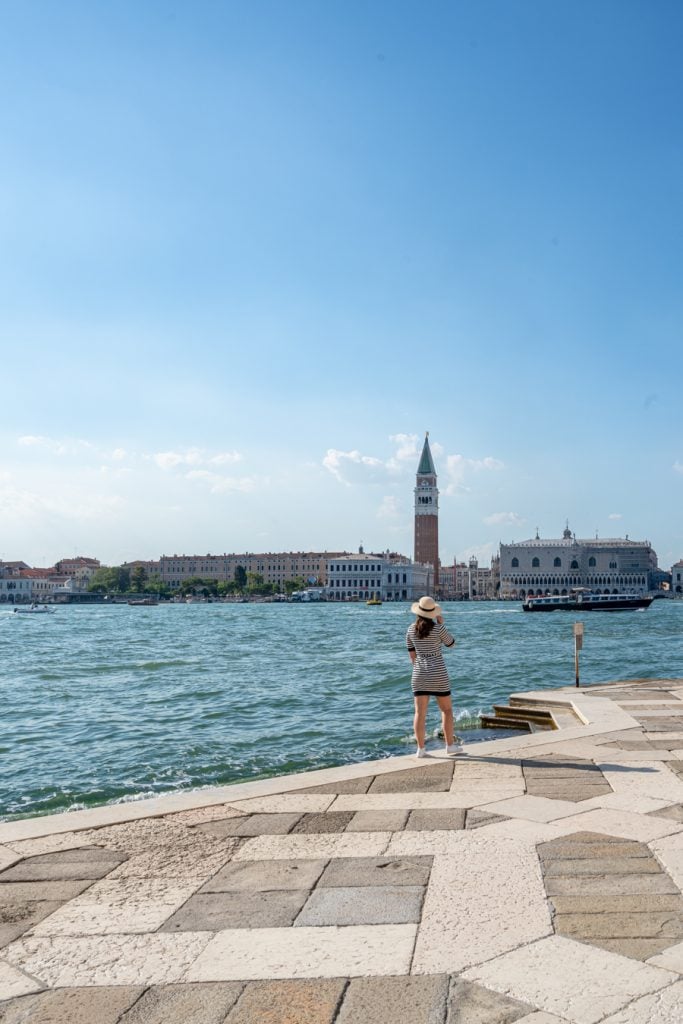
Step 1: Get inspired and brainstorm where you want to go.
Without a doubt, the first step to planning a trip to Europe is brainstorming all of the places you want to visit!
If you’re anything like us, odds are high that the list is longer than what you could rationally accomplish in a decade, let alone on a single vacation, but it never hurts to dream!
Whether you want to road trip Tuscany , wander the streets of Paris , marvel at the Alhambra in Spain, hike on a glacier in Iceland, stroll along the Cliffs of Moher in Ireland , or something radically different, pay attention to what calls to you the most.
There are no wrong answers when deciding which destinations are most interesting to you!

Step 2: Check visa requirements for Europe.
While most readers of this blog post, such as Americans like us and other people from non-European, strong-passport countries like Canada and Australia, will likely not need a visa to take their dream trip to Europe, it’s always best to triple-check!
(And, in a post-2020 world, we all know more than ever that expectations can change quickly.)
As you research what you need to travel to Europe, you’ll likely come across many references to the Schengen Area .
These are the 26 European countries that share open borders with each other.

Americans and many others can visit these countries for up to 90 days out of any 180 without a visa.
In the future, the ETIAS system –essentially an e-visa procured by filling out paperwork online before traveling, which will cost a nominal 7 Euro–will come into effect for the Schengen Area.
ETIAS is currently slated to begin operating sometime in 2024, though the starting date has been pushed back several times.
Other countries–like the UK, Montenegro, and Romania, for example–are not part of this system, but if you come from a country with a strong passport, you likely won’t need a visa there either.
A few nearby places that might be on your radar, like Turkey , require an e-visa for Americans to enter.
Step 3: Shop for flights (and be as flexible as possible).
Once you have a list of your most-wanted travel destinations and have confirmed you’re clear to travel, it’s time to shop for your flights to Europe!
We recommend being as flexible as possible during this process, either with your travel dates, your destinations, or ideally, both.
Flight prices and routes can vary dramatically depending on where you’re coming from and where you’re going, which is one reason why we don’t recommend finalizing your Europe itinerary until you have your flights purchased (more on that below).
Ideally, you’ll want to start and end your first Europe trip in a major airport hub.
This doesn’t necessarily need to be the same hub, though!

While one-way tickets can be pricier than round-trip ones, if you’re flexible on your dates and destinations (so deciding which cities to start and end in partially based on price), you can usually find excellent deals.
This is exactly how we ended up flying into Krakow and out of Dublin during our first multi-country trip to Europe!
As far as airports go, for those of you coming from the USA (or anywhere in North America, really), you’ll want to potentially check ticket prices for London, Madrid , Dublin, Paris , Lisbon , Frankfurt, Amsterdam , and Milan .
That’s not an exhaustive list by any means, but there are often flight deals to and from these cities.

Step 4: Narrow down your itinerary for your first Europe trip.
Now that you’ve scored a great flight deal on the “bookends” of your trip, it’s time to fill in the rest of your itinerary for traveling Europe for the first time!
As we mentioned above, the biggest challenge here for most travelers is to not bite off more than they can chew and travel too fast.
Trust me, we understand the temptation–I still have to trim destinations from every. single. trip. that we plan, because my overwhelming desire to do it all fights with logic every step of the way.
I promise, though, you will have a much better trip if you slow it down.
Ideally, allow at least 2 full days (typically not including days you travel to or from the destination, though there are exceptions) to each “base” or city.
Staying in one place for 3 or 4 days is even better, and will give you time for a day trip or two.

We have several suggested Europe itineraries outlined here , and can highly recommend all of them!
However, there are truly infinite possibilities when it comes to structuring your first Europe trip.
When it comes to deciding exactly which of your dream destinations make the cut, we recommend letting geography be the tiebreaker.
For example, if you’re trying to decide whether to visit Amsterdam or Budapest on a trip where you fly into Paris, Amsterdam is the clear winner.
If you fly into Vienna instead of Paris, though… Budapest it is!
Other factors to keep in mind when narrowing down your itinerary include seasonality/weather and your budget.
Using Google Flights and searching the general term “Europe” in the “Where To?” box can be a great way to find unexpected flight deals!
(Don’t forget to play around with the map, zooming in and out on different regions–you might be surprised at what deals you find).

Step 5: Finalize your budget for traveling to Europe for the first time.
Now that you know exactly when your trip to Europe is happening and where you are going, it’s time to finalize your travel budget!
We recommend taking the total amount you hope to spend in Europe, subtracting any splurges or major expenses you know are coming (a pricey tour, some clothes shopping, etc.), and then dividing the remaining amount by the number of days you’ll be traveling in Europe.
Voila–you have your daily Europe travel budget!
This is the number you should try to stay under each day when you add up the amount you spend on food, activities, lodging, and intra-city transportation.
We have used this simple strategy to budget our trips for years and detail it more thoroughly in our travel budgeting guide .

Step 6: Book some of your accommodation.
Once you have your plane tickets, a plan for where you’re going, and a budget set, it’s time to decide where to sleep!
We offer specific hotel suggestions in the vast majority of our destination-specific travel guides, but generally speaking, you’ll want to look for something well-reviewed (we aim for an 8.0 rating or better on Booking.com ) in a central location.
Also, keep an eye out for air conditioning and/or heating as the weather demands–those things are not a guarantee in all areas!
A very general rule to keep in mind when booking hotels?
The smaller the destination, the earlier you will want to book.
Somewhere like Cinque Terre simply doesn’t have as much lodging available as it does people who want to visit, while places like Paris are big enough to absorb their travelers in spite of their popularity.
As a result, tiny, popular places are where we tend to book our accommodation the earliest.
Of course, if you’re headed somewhere for a big event or festival–say Oktoberfest in Munich or Christmas markets in Salzburg –you’ll want to book ASAP.
We find virtually all of our accommodation (short-term apartment rentals included) via Booking.com these days.
If we get stuck, we may occasionally check Airbnb too, but as the years have gone by, prices and guest expectations have both increased dramatically, so we find ourselves using it much less than we once did.

Step 7: Figure out your inter-city (or country) transportation.
When it comes to traveling between each of your destinations during your vacation in Europe, you might find that you come up with quite a mix of methods!
Trains are our favorite way to travel in Europe–they’re simple, comfortable, safe, and extremely convenient for visiting most major cities (there are caveats to this, in places like the Balkans).
We would only recommend renting a car if you’re visiting the countryside somewhere.

If your itinerary is a more typical first-timer’s route and sticks to major cities–something like London-Paris-Amsterdam–then a car is absolutely unnecessary.
Buses are our least favorite method, as they tend to be slow and uncomfortable, but are undoubtedly the cheapest.
Flights are by far and away the best option for extreme distances, but are cumbersome and tend to eat up an entire day.
And, finally: if you’re visiting Europe in the summer , don’t forget about ferries!

Step 8: Book some of your bucket-list travel experiences in Europe.
While simply existing in a gorgeous new destination is a bucket-list travel experience in and of itself, booking some unique tours and attractions can help make your trip even more memorable!
From touring the Colosseum at night to eating our way through Athens on an incredible food tour to snorkeling between 2 tectonic plates in Iceland, we have never been sorry to splurge on a memorable experience abroad.
(And yes, we paid our way on each of those tours–we don’t accept sponsored trips or tell anyone that we’re bloggers while there.)

Booking your experiences in advance goes beyond the small group tours, though: skip-the-line tickets for major attractions like the Arc de Triomphe , Vatican Museums , and Sagrada Familia are so beneficial that I cannot sing their praises enough.
We never show up to a major attraction without booking tickets in advance these days (and it’s even more important in a post-2020 world).
We book our skip-the-line tickets and many of our tours through Get Your Guide .
For bespoke, small-group tours that go above and beyond the “normal” experience, we love Take Walks .

Step 9: Learn a little bit of the local language(s).
If you’re staying firmly on the tourist trail on your trip to Europe, you won’t necessarily need to speak any of the local language(s) to travel there.
… But you will almost certainly encounter some monolingual Europeans, and either way, it will definitely enhance your experience in the country to know a tiny bit of their language.
Simple phrases like hello, goodbye, please, thank you, you’re welcome, do you speak English, and the numbers 1-10 can go a long way!
If you’d like to go a bit further, learning to order in restaurants and read menus is both helpful and efficient.
In addition to being fun and practical to learn, it’s one of the conversations that you’re likely to have repeatedly enough during your travels that the phrases will potentially stick with you until long after your trip is over.

Step 10: Make a packing list (and shop!).
Packing can often be one of the most unexpectedly stressful parts of getting ready for a trip, and even more so for your very first European vacation!
We have full suggested packing lists for Europe in spring , summer , winter , and fall , which go into far more detail than I have room for here.
Our absolute biggest advice for packing for Europe, though, is not to stress too much about it: just about anything you could possibly forget will be available there too!
For now, here are a few essentials that we absolutely recommend adding to your list:

Travel Adaptors for Europe — If you’re coming from outside of Europe, you’ll definitely need adaptors for your electronics.
Be sure to check the requirements for any particular country that you visit–the United Kingdom, for example, is well-known for using different plugs than most of the continent.
Comfortable Day Bag — We currently use Pacsafe’s sleek anti-theft backpack and love it, but if you don’t want to shell out the cash for this trip, that’s totally understandable.
Just aim for something comfortable to wear, not flashy, and medium-sized–we used a Northface Jester backpack for years and loved it as well.
Portable USB Charger — Don’t stress about your phone dying while you’re sightseeing: add a portable charger to your packing list for Europe.
Basic Medication — Some people prefer to buy medication for basic headaches, fevers, and stomach aches as needed, but who wants to deal with language barriers when they’re sick?
I personally learned this lesson the hard way on our very first trip to Europe, and have never hopped continents without my own supply since.
Step 11: Purchase travel insurance.
Don’t forget to purchase travel insurance before jetting off to Europe!
While Europe is generally a perfectly safe place to travel, the reality is that traveling in general opens you up to vulnerabilities that you simply don’t have at home.
If you miss a plane or train, have your luggage get lost, get pickpocketed, or worse, get injured, you’ll be glad that you have insurance.
Given how inexpensive travel insurance is when purchased in advance (especially as compared to the price of plane tickets!), it’s well worth the investment.
Consider checking inclusions and prices with Safety Wing for your first trip to Europe.
Step 12: Plan for your arrival.
The penultimate step of planning a trip to Europe is as simple as it is important: make an arrival plan.
When you arrive, you’re undoubtedly going to be exhausted, overwhelmed, and probably a bit jetlagged, too!
No matter how many times we step foot in a new country, it never stops being a tiny bit stressful, simply because there are a lot of variables at play in the first few hours of arriving somewhere new.

Make life easier on yourself by thinking ahead!
When learning how to travel to Europe, set aside time to figure out your exact steps for what to do after the plane lands.
That means knowing exactly how far away your hotel is, how you’ll get there from the airport (train, bus, rental car, taxi?).
If you’ll be traveling by taxi, look up what a reasonable price is at your destination and/or if there’s a set fare from the airport to the city center (in major cities, there often is).
Though it’s not strictly necessary, if you’d like to make arriving in Europe for the first time extra easy on yourself, consider treating yourself to an airport transfer when you arrive (like tours, you can often book these on Get Your Guide ).
Options like this one in Rome and this one in Paris can be a great way to make sure your very first Europe trip starts off on the right foot.
Step 13: Have an amazing first trip to Europe!
Once you’ve done the planning… then it’s time for the fun part!
Enjoy every step of your first trip to Europe, from the confusing parts to the magical ones–and yes, both will probably end up with a prominent place in your memories.
If you’re anything like us, the odds are high that your first experience of traveling in Europe won’t be your last.
Once you start… it’s hard to stop.

Every day, I wake up to emails from readers planning a trip to Europe.
I love answering emails (and yes, I will probably answer yours!), but there are definitely some frequently asked questions that come up often enough that they deserve a blanket response here.
These are some of the most common FAQs we see about traveling in Europe!

What’s the easiest way to get Euros and other currency?
The answer to this question has a significant caveat: be sure to check foreign transaction fees and ATM fees with your bank before leaving and let your financial institutions know that you’ll be abroad.
However, generally speaking, by far the easiest way to acquire a new currency when traveling in Europe is to simply withdraw money from the ATM when you arrive.
It has been years since we’ve done anything else, anywhere in the world!

When you’re at the ATM, be sure to opt to have the transaction go through in the currency you’re receiving (ie, Euros), not your home currency (ie, USD).
Your bank’s conversion rate will undoubtedly be better than the ATM’s!
Also, avoid Euronet-branded ATMs like the plague: they’re infamous for their extremely high fees.
Instead, look for an ATM operated by a local bank.

How should I get from city to city in Europe?
This depends entirely on your itinerary, but here’s a very short, very general answer.
Trains are the most comfortable, and often the most expensive.
Buses are the least comfortable, frequently take the longest, and are generally the cheapest.
Rental cars have their place–there are some truly phenomenal road trips in Europe –but rarely make sense for first-time travelers, who tend to bounce between major cities that are well-connected by rail.

Flights are the most cumbersome, as they burn time dealing with things like security and getting to and from airports located outside of city centers, and simply aren’t comfortable.
However, flights can be surprisingly affordable compared to trains and are obviously the fastest option for covering very long distances.
When traveling Europe for the first time, we recommend traveling by train wherever it makes sense, and filling in the other options as necessary ( here’s our full guide to train travel in Europe ).
Our first multi-country trip to Europe included an overnight train, a daytime train, 2 rental cars, and a flight–in other words, you can definitely mix and match!

How can I use my phone in Europe?
If your phone is unlocked, the cheapest and easiest way to use your phone in Europe is to buy a local SIM card.
You can either do that on the ground once you land (there’s almost always a selection of helpful kiosks near the airport exit) or if you’d prefer not to worry about it once you arrive, you can buy one online before you go or even try out an eSIM card.
If your phone is not unlocked, or you just hate the idea of changing your SIM card, check with your carrier and see what they offer as far as international plans go.

Will I need an adaptor for my electronics?
Most likely, yes!
Luckily, adaptors are cheap to buy and easy to carry–we recommend picking these up before you go.
Keep in mind that the UK and a few other countries ( Ireland , Malta ) use a separate plug from the bulk of the continent.
If you’re heading to a place that uses UK plugs, you’ll want these adaptors as well.

Do I need to be worried about pickpockets?
I wouldn’t go so far as the use the word “worried”, but aware, yes.
Pickpockets are a problem around the world in places where there are crowds, and that includes major European cities.
Barcelona, Rome, Paris, and Naples are examples of places that are particularly prone to pickpockets.
Watch your belongings carefully, especially near particularly crowded tourist attractions and in and around transportation hubs like train stations, and you will most likely be fine.

Very generally speaking, the closer to a world-famous landmark you are, the higher the risk of getting pickpocketed is in that place.
We have never been pickpocketed, but it does happen, even to experienced travelers.
We don’t choose to use a money belt anymore, and pickpockets certainly know about them, but if you would like another layer of protection, they’re an option (we used this one when we first started traveling).
An anti-theft day bag that can be locked and/or attached to a chair can help too, and we carry one everywhere ( we love this one ).
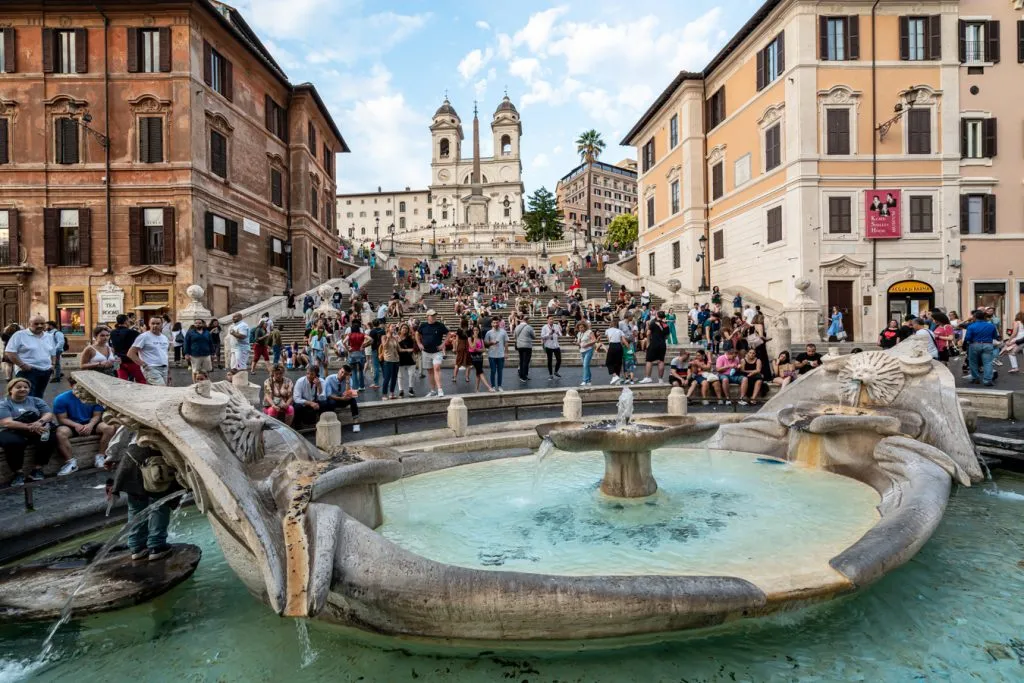
How severe is the language barrier?
It varies significantly, of course, but generally, it’s not nearly as difficult as first-time visitors to Europe worry before they arrive (ourselves included).
We recommend learning basic phrases in the language of the countries that you are planning to visit during your first European vacation, but this is usually more for good manners than out of necessity.
While you can absolutely find monolingual Europeans in virtually any country, especially in smaller cities and towns, the people employed in customer service roles and in the tourism industry in major cities–in other words, where most or all of your trip will likely take place–generally speak some English.

Can I drink the tap water in Europe?
Usually, yes!
We drink out of the tap just about anywhere in Europe.
In rare cases where the water is not safe to drink (usually in remote areas of southern and eastern Europe, or in very old buildings with iffy pipes), there will generally be large and obvious signs stating so.
If you’re worried about it, though, you can always ask your hotel concierge or host about it!
How far in advance should I book my trip?
For plane tickets, we recommend booking your trip as soon as you can commit to dates!
Not only will this allow you to have more time to plan and budget with a bit of structure, but it will also spread out your costs a bit more.
During peak seasons, like coastal locations in the summer or popular central European cities during the Christmas markets, you’ll want to book your hotels as far in advance as you can commit to them as well.

What’s your favorite country in Europe?
We get asked this all the time, and the answer is: we couldn’t possibly choose!
We definitely have a very special love for Italy –we’ve spent more time there than any other country outside the USA, traveled the country from north to south, know the travel scene there very intimately, and will continue to visit extensively for the rest of our lives.
And no, we haven’t discounted the possibility of living there one day, either!
However, simply naming Italy as our favorite would discount so much.
Like, for example, how much we adore hiking amongst the Alps in Switzerland, or waking up in picturesque bed and breakfasts in Ireland .

It skips over the joy of wandering through the art museums of Paris , admiring the rocky coastline of the western Algarve in Portugal, and jumping into the Adriatic Sea in Croatia .
Simply naming one favorite doesn’t leave room for sharing just how incredible it is to marvel at Neuschwanstein Castle in Germany, or devour Greek salads on Santorini … or so much more than I could include in this list.
And really, the answer to the question behind the question is this: as long as it’s somewhere that you’re desperate to visit, and you plan your trip well, it doesn’t really matter where you decide to go on your first trip to Europe.
Traveling to Europe for the first time is a magnificent and potentially (in our case, definitely) life-altering experience, and there are no wrong answers.
[convertkit form=3127238]
About Kate Storm

In May 2016, I left my suburban life in the USA and became a full-time traveler. Since then, I have visited 50+ countries on 5 continents and lived in Portugal, developing a special love of traveling in Europe (especially Italy) along the way. Today, along with my husband Jeremy and dog Ranger, I’m working toward my eventual goal of splitting my life between Europe and the USA.
2 thoughts on “Your 13-Step Guide to Traveling to Europe for the First Time”
Your blog is SO informative! Planning my first ever trip to Europe (Scotland in particular) and all the info you have is super helpful! 🙂
So glad to help, and I hope you have a fantastic trip to Scotland!
Leave a Comment Cancel reply

The Complete 2-Week Europe Packing List
Last Updated on November 15, 2023
by Maggie Turansky
Disclaimer: This article contains affiliate links. That means if you click a link and make a purchase, we may make a small commission. As an Amazon Associate we earn from qualifying purchases. For more information, see our privacy policy.

Putting together a 2-week Europe packing list can prove incredibly difficult regardless if it’s your first trip to the continent or if you are a seasoned traveller.
Especially if you’re trying to travel light and minimalistically, prioritising things for your trip to Europe can be a bit tricky. We have travelled extensively all over Europe and have refined this ultimate packing list in order to ensure that you have everything you need, but also not too much!
So if you’re after the perfect packing list for Europe, then look no further. We’re here to make sure that you’re perfectly well-equipped for your trip without bringing one item too many in your limited space!
Table of Contents
Europe Packing Tips
Before I jump right into what you actually need to pack for Europe, we do need to discuss a few things in order to ensure that you are completely prepared to leave on your trip to Europe.
One of the most important things to be aware of is the season where you’re travelling, along with the region. Europe is vast with an array of varied climates and what you need to bring to be prepared largely depends on where and when you are visiting.
What you eventually end up taking with you really inevitably comes down to if you’re visiting Europe in winter or summer, northern or southern Europe.
Another thing to keep in mind when you’re planning out a packing list for visiting Europe is just how much you plan to bring with you.
It can be really hard to know what you’ll need or use on your trip, especially if you haven’t travelled much in Europe before. However, it is always a great idea to try to limit the amount of stuff you cart around with you.
Packing light can be a lot more pleasant in almost every aspect of travelling, from not having to worry about the weight limits on airlines or hauling your bags up stairs, through train stations and luggage racks.
Packing light also has the added benefit of making your things a lot easier to pack up and move when you move destination. It is unlikely that you will plan to stay in just one location on your trip and you don’t want to have to unpack and repack a bunch of different things every few days – not only is this simply a pain, it can also be very stressful.
The packing list below is quite minimalist, however, in times of travelling for similar-length trips to Europe, I’ve found that it is beyond sufficient.
When it comes to selecting items of clothing, especially, try to stray away from anything that you cannot mix and match and, often, opting for darker colours can be a great option.
Thinking more in the mindset of bringing a small capsule wardrobe rather than individual outfits to wear will help you be able to pack light while also mixing and matching to create a new look every day.
The other tip when it comes to packing light is to find accommodation that offers laundry facilities. Planning to do a wash while on the road will allow you not to have to bring so many things considering the fact that you can do a load of laundry mid-way through your trip.
Many hotels and hostels offer laundry services or, alternatively, you could find an Airbnb that has a washing machine you could use yourself. Laundromats are also always an option, though I can’t imagine it’s the preferable option considering the limited amount of time you have when it comes to exploring Europe.
Finally, when it comes to bringing items such as a hairdryer, curling iron or straightener, I would recommend refraining from this.
The vast majority of accommodations will have at least a hairdryer on-site and, especially if you’re travelling to Europe from North America, the voltage in the plugs is completely different and you risk completely ruining your devices should you use them, even if you are using an adaptor.
All in all, there are a number of things that one needs to take into consideration when figuring out what to pack for Europe. Follow the guidelines below and you should be perfectly well-equipped for your trip!
Ultimate Packing List for Europe
This ultimate Europe packing list is perfect for those looking to pack light and be a bit more minimalist in their adventure. While this certainly isn’t a complete bare-bones packing list for those who want to, say, travel carry-on only, it is good for those looking to not bring everything but the kitchen sink.
This is intended that you pack in a larger main piece of luggage (whether that be a travel backpack , wheeled backpack or traditional suitcase) along with a smaller piece of carry-on luggage such one from Level8 .
If you want to keep your items all organised then we also suggest using some packing cubes like the Eagle Creek Pack-It Compression Cubes
This checklist is also appropriate for all sexes and genders, just pick and choose some things as they don’t apply to you.

Figuring out what kind of clothing to bring is arguably the most important and most difficult thing about packing for Europe.
As mentioned earlier, it’s always a great idea to opt for neutral colours and items that you can mix and match to ensure that you can have some variety in your outfits without having to bring too many things and take up necessary valuable space in your luggage.
- Depending on the season or region of Europe you’re visiting, either bring a mixture of long-sleeve and short-sleeve tops, just long-sleeve or just short-sleeve tops to wear in Europe.
- I always recommend bringing one or two nicer tops or button-down shirts along with more casual t-shirts or tops. We like Bluffworks t-shirts as they’re both practical and also look good!
- Bringing one pair of jeans and one pair of another type of trouser is a great idea or one pair of lighter jeans and one pair of darker jeans. Having at least one pair of pants that can be dressed up is always a good idea
- You can browse some of our the best options in our best pants for travel in Europe guide.
- I, personally, love Bluffworks’ dresses , which have concealed pockets, a classic and flattering cut and can be dressed up or dressed down depending on the situation. Oh, it also is wrinkle-resistant and fully machine washable.
- If you’re visiting Southern Europe or simply travelling in the summer months, then having one or two pairs of shorts can be a great idea, especially when you need to keep cool or are heading to the beach.
- If your trip is during winter, having a tank top or light base layer will keep you warm without having to result in a bulky coat or jacket.
- Depending on the season or region, a cosy wool sweater or a light cardigan is a great idea when packing for 2 weeks in Europe. It can also be a good idea if you bring one that can be dressed up or down depending on the occasion (are you seeing a trend here?).
- Of course, you likely don’t need to include a jacket at all if you’re travelling to, say southern Spain or Malta in July, however, depending on the season, a warm, lightweight jacket is always a good idea for your trip.
- We recommend a packable down jacket ( click here for men’s version ), however, we have written a detailed guide for the best jacket for Europe depending on your needs.
- No matter the region or season, a rain jacket is always a good idea, as you can get caught out in a storm regardless of where and when you are travelling.
- We love the North Face Resolve ( click here for men’s version) as it has consistently kept us warm and dry in the rainiest of conditions.
- How much underwear you bring really depends on at what point in your trip you want to do laundry. If you want to avoid washing at all, then go ahead and bring 14 or 15 pairs of underwear. They do take up valuable space, however.
- Like underwear, how many socks (and the kinds of socks) you bring really depends on your shoe preference and just how often you want to do laundry.
- Bringing a swimming suit is a great idea even if you’re not going to a seaside destination. You never know when you may go to a bathhouse, sauna or pool on your Europe trip no matter the season.
- If you happen to be travelling to a beachy destination like Italy or Spain , consider bringing 2 pairs so you have time to dry each suit between wearings.
- I, personally, like to bring one regular bra and one sports bra, but this really depends on your needs and preferences.
- If you’re not a pajamas person, then don’t bother. I am, so I bring them. One pair for 2 weeks is sufficient.

Shoes take up A LOT of space in your luggage so limiting the footwear you bring on your Europe trip can be the ticket for maximising the space in your bags.
We have a complete guide on the best shoes for Europe to help you pick the right footwear for you. This is just what we recommend bringing when you’re compiling a packing list for 2 weeks.
- A good pair of sturdy, stylish walking sneakers is essential. Pick comfortable walking shoes that you can walk in for hours and kilometres and not have sore feet.
- I, personally, love the Ecco Soft 7 trainers and wear them all the time. For a men’s version consider the Ecco Soft 7 Runner.
- Choose your second pair of shoes depending on your style and the season you’re travelling in.
- If you’re an active traveller, are visiting a largely outdoor destination, or simply plan to do a bit of walking and hiking, then a good pair of hiking boots such as the Merrell Siren Edge for women ( available on REI here ) or Merrell Moab 2 for men ( available on REI here ) is essential.
- Small, compact, and helpful for everywhere from the beach to a hostel shower to a public pool, a pair of flip flops should always make it into your luggage!
Accessories
Whether fashion accessories or handy electronic gadgets, some of these are absolutely essential items to bring with you on your trip to Europe!
- The most important accessory of them all!
- Perfect for add a splash of style to any outfit, sipping over your head or shoulders if you’re visiting a church, using as a makeshift blanket, and also for its traditional use, a scarf is absolutely necessary to bring with you no matter the season.
- A warm hat to keep you toasty in the winter in Europe is always welcome, as is a sun hat to protect you from the harsh rays during summer in Europe.
- An essential item on any winter packing list!
- A solid anti-theft handbag like the PacSafe Cityscape or day pack is perfect for keeping your valuables safe and secure while you’re out and about sightseeing and exploring.
- Buying water and using plastic water bottles is a thing of the past. There are an infinite number of great water bottles for travelling to choose from like a Hydro Flask and you’ll never need to buy a single-use plastic bottle again.
- If you’re more serious about your photography than simply relying on your phone, then bringing a good camera is a great idea.
- We love the Sony A6400 for its high-quality images at a decent starting budget and there being several great travel lenses to use with it. Make sure to bring extra memory cards!
- You always need to have something good to read, but don’t want to pack a bunch of heavy books to bring with you – a Paperwhite Kindle solves all of these problems and it is an absolutely essential item if you love to read.
- Buy a prepaid SIM card like the Orange 20GB SIM either as physical SIM or eSIM to ensure you can stay connected in Europe.
- Finding a universal plug adaptor with a number of different USB drives is a fantastic option and is an absolutely essential item when travelling to Europe from elsewhere in the world!
- Finally, a power bank will give you peace of mind should your phone die while you are out and about or if you forget to give something a much-needed charge when you need to use it.
- Making sure you have an adequate number of charging cords for all of your devices will ensure that you can make sure everything can get the best battery life possible.
- A travel pillow is nice to have if you have a long flight or are taking overnight trains or buses.
- World Nomads offers flexible and simple travel insurance policies with coverage for more than 150 activities that you can buy or extend while on the road.
- SafetyWing offers travel medical insurance policies that can are an option for long term budget travellers.
- Save your money and landfill space and forgo the travel-sized toiletries for refillable bottles of your shampoo and conditioner. We love GoToobs .
- You might want to bring earplugs if you’re staying at a hostel or budget accommodation where street noise can be an issue or for your flight.
- To avoid unnecessary spills in your toiletry bag, we recommend using a bar soap rather than a shower gel, but this is really up to you
- Keep your dry skin nice and hydrated!
- Bring as little makeup as you need. Personally, I limit myself to one lipstick, one eyeliner, mascara, a small eye shadow palette, foundation and a few brushes. I also make sure I have facial cleansing wipes for makeup removal and just to wash my face at the end of the day.
- If you’re a lens wearer, you need to pack this!
- Blisters and cuts happen, best to be prepared rather than have to hunt for a pharmacy to find these things while travelling.
- While you can get ibuprofen and the other over-the-counter pretty much everywhere, it’s always nice to have it on hand should a headache threaten to put a damper in your Europe trip. Ditto with other OTC medications you take regularly.
Piecing together the Europe packing list for 2 weeks doesn’t have to be all that difficult if you take into consideration all of the things outlined above. Think minimally and pack light and you’re sure to have a fantastic time on your adventure — wherever it may be that you’re going!
Are you trying to figure out what to pack for two weeks in Europe? Was this packing list helpful for your trip? Let us know in the comments!

Related Posts:

The Best SIM Card For Europe with Data in 2024

The Best Packing Cubes For Backpacking

The Best Shoes for Walking on Cobblestones in Europe

About Maggie Turansky
Maggie is a co-founder and writer for The World Was Here First. Originally from the US, she has lived in five different countries and has travelled to dozens more, both solo and with her partner, Michael. She particularly loves exploring Spain and spending time in the Caucasus and the Baltics. Read more about Maggie
This is a great comprehensive list. It helps to prioritize what is really essential and can serve as a thorough starting point even if you want to tweak it some to meet your needs. I would add socks, belt and 1 or two costume jewelry pieces to the list.
Great list. I reviewed it against my list and they were pretty close. I have been reading your other articles and they have been most helpful. Many thanks!
This is very helpful. Thanks. I always seems to pack too much. Helen
Can most of this fit in a carry on and a personal bag?
This can be really dependent on the kind of bag, how you pack and the airline’s requirements! Sorry I couldn’t be more helpful 🙂
Thanks this was very helpful for a first time traveler 😉
Leave a Comment Cancel reply

100+ Europe Travel Tips for First Timers & Must-Knows Before You Go
Last Updated: November 6, 2023
*FYI - this post may contain affiliate links, which means we earn a commission at no extra cost to you if you purchase from them. Also, as an Amazon Associate I earn from qualifying purchases. Check out our Privacy Policy and Disclosure. for more info.
Headed to Europe for the first time and trying not to cry?
I get it. You’re probably a hot mess of emotion right now. Between the excitement of ticking off bucket list moments and the anxiety of getting pickpocketed or (possibly worse) getting side-eyed by cool European youths, there’s a lot of potential for stress carbs and sheer overwhelm.
Don’t worry though – I have all the Europe tips you need in this post to keep those first time jitters at bay, and ensure you’re fully prepared for your big European adventure.
So, what are some must-knows before you travel to Europe for the first time? Read on for a full of my best Europe travel tips, after over a decade of travelling around/living on this gorgeous and delicious continent.
NOTE: As an aggressively apologetic Canadian, I must first clarify that these European travel tips are written from a North American perspective, and there are some culture shocks that (while seemingly basic) can really confuse a 1st time visitor, so… yes, this is just me covering all the bases. Enjoy!

Save this list of Europe Travel Tips for Later!
You’ll be very glad you did.
Europe Travel Planning Tips
Let’s start with some planning-related Europe tips to help you with flights, booking hotels in Europe, choosing dates, the best times to visit Europe, etc. to get you from armchair travel to your real-life dream trip.
Steal my step by step guide to planning a trip to Europe from scratch
This post is full of random Europe travel tips, but if you are looking more for step by step guidance, be sure to check out my step by step guide to planning a Europe trip.
Also be sure to check out my free Europe trip planner book , as well as my free International Travel Checklist for a list of things to do before you travel abroad.
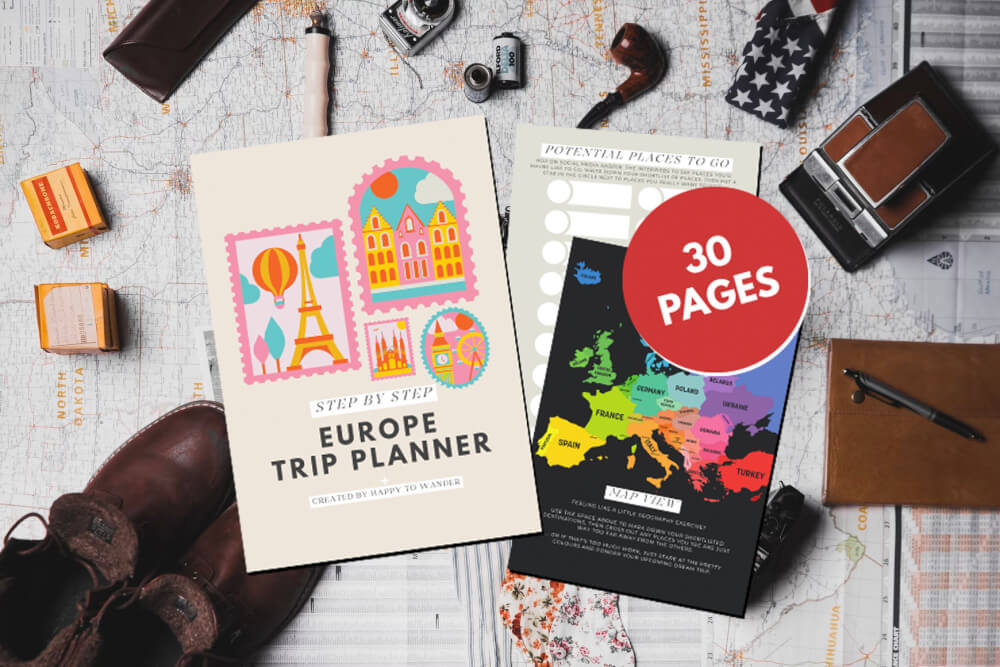
Avoid peak travel times
If you have the luxury of flexibility, I’d avoid visiting Europe between mid-June to the end of August.
Simply put, this is when prices and crowds are at their highest, and (depending on where you go) temperatures during this season can reach a point of salty, sweaty discomfort.
Instead, consider going in the Spring , Fall or Winter!

Avoid European holidays
In addition to avoiding North American holiday periods, be sure to also consider popular European school holidays too.
Generally, speaking longer European school holidays will take place during Easter/Christmas, a very popular time for European families to travel around the continent too.
Yes, Europeans can be avid tourists too. Don’t forget that!

Go for Christmas markets!
Okay, this may be a direct contradiction to what I said above, but one exception I’d make for “peak season travel” in Europe is going to Christmas markets.
This is one of the most magical times to visit Europe, and if you plan your visit for earlier in the season (late November, rather than close to Christmas), you’ll usually be able to avoid the bulk of the crowds.
Here are my top must-knows for visiting Christmas markets in Europe if you want to learn more.

Consider getting a travel credit card
I’m going to level with you: no matter how you plan it, even if you stay in hostels and subsist solely on hummus and bread scraps, you will end up spending a lot of money on your Europe trip.
… so you might as well try to reap as many rewards from it as possible!
Getting a travel rewards credit card before booking all your hotels and flights is one of my favourite underrated Europe travel tips.
There’s a million options out there, so I’ll leave the research/choice up to you, but just make sure you’re booking everything on a card that maximizes the amount of benefits you get.
For me personally, I have the Amex Platinum , which yes has a really high fee but at least for the first year it’s super worth it because you get travel credits, travel insurance, lounge access, and most importantly, enough bonus sign-up points to get you a roundtrip flight to Europe from North America! It’s not for everyone, but definitely worth looking into.
Bonus sneaky point hoarding tip: Travelling with friends? Especially if they don’t collect points of their own, offer to book for everyone, then have them pay you back. Whee – free points without needing to spend all the money!

Get a Wise card
If you’re not interested in getting a travel credit card, a handy and free alternative I can highly recommend is a Wise card.
Having a Wise card allows you to “send and spend money around the world at the real exchange rate”, avoiding hidden fees in the process.
It is SO handy for travel, because you can use it for over 150 currencies around the world, and you even get 2 free ATM withdrawals per month with it overseas.
And because your card is linked to your Wise account, you can simply load it up with a minimal amount of money so you don’t have to risk your normal credit/debit cards while walking around.
You can use my referral link here to transfer your first $500 fee-free.
NOTE: I’ve also had a good experience with Revolut when I lived in Germany, but they don’t offer services for Canadians so I can no longer use them.

Focus on one or two countries for shorter trips
Unless you have a lot of time to work with, I would recommend getting to know one or two countries well rather than trying to visit too many countries in one go just for the sake of checking them off your list.
While travelling between European countries can be affordable and quick, hopping around too much can be a sure recipe for burnout and time lost commuting.
Plus, the more you see of one country, the more you’re able to get more off-the-beaten path and find spots you hadn’t heard of before!
Check out my list of 1 week itineraries for Europe if you need inspiration.

Learn all about the Schengen Area
An important must-know for all first time visitors to Europe is that border-free travel doesn’t exist across the continent (as is commonly believed).
Rather, border-free travel apples only between countries in the Schengen Area, this group of 27 countries (accurate as of 2023):
- Liechtenstein
- The Netherlands
- Switzerland
When crossing borders outside of these countries, you will need to clear passport control as normal.
Understanding this distinction will help you plan how long you can stay in different countries, as well as Europe in general, and give you some insight into logistics like when you’ll need to clear passport control, and which visas you might need for where.
Use your understanding of the Schengen Zone to legally stay in Europe longer
For most tourists, the maximum amount of time you can spend in the Schengen Zone is 90 days out of 180 days .
Simply put, if by the time you leave, you can look back on the past 180 days and say you stayed less than 90 days total, you’re good.
BUT if you want to stay in Europe for longer than that amount of time, you can utilize your Schengen Area understanding to stay longer, simply by including travel to non-Schengen countries.
For example: Let’s say you can only spend 90 days in the Schengen Zone, but you’re allowed to spend 180 total in the UK. You can easily make your European trip longer than 90 days by adding time in the UK, Ireland, Bulgaria, Romania or any other non-Schengen country.

Consider more off-the-beaten path destinations
Another benefit of visiting non-Schengen countries is they’re often lesser visited, and filled with some truly amazing hidden gems.
For example, I’m a HUGE fan of Bulgaria. (Here are some of the coolest things to do in Bulgaria that you probably haven’t heard of.)
While I totally understand the desire to see the most popular and best-known destinations on your trip, sometimes visiting these lesser known spots can bring amazing surprises that end up being the highlight of your vacation!
Of course, there’s a middle ground too – you can easily get the ‘best of both worlds’ by combining a hugely popular destination with some side trips to other lesser known places in the same country. These posts might help with that:
- The Best Places to Visit in England (Besides London)
- The Best Places to Visit in France (Besides Paris)

Offset pricey destinations with more budget-friendly ones
If you’re hoping to visit Europe on a budget, but still have some pricier destinations on your bucket list (e.g. Switzerland, Norway, Sweden, Iceland, UK, Germany, etc.), then a great way to cut costs is to round out your itinerary with more affordable stops (e.g. Bulgaria, Romania, Poland, Montenegro, Lithuania, etc.)
This of course makes more sense on longer trips where you’ll be covering a lot of ground, but just remember than some European destinations are MUCH rougher on the budget than others, so mix it up if you’re looking to give your wallet a break.
Alternate between busy and chill destinations
On a similar note, you should make sure your Europe trip itinerary also includes a mix of busy and relaxed places.
One of the biggest mistakes I made during my first backpacking trip was I crammed SO many huge cities into my itinerary, one after another.
But when your itinerary is nothing but European heavyweights like Paris, London, Amsterdam, Rome and Florence… yikes, you’ll be sightseeing your eyeballs off daily with zero chance for breaks.
So, here’s a very important Europe travel tip when planning your itinerary: try to space out the “big” cities with chiller destinations, maybe nature or beach breaks so you have time to rest up before sightseeing like the Energizer bunny once more.

Learn the tricks to getting cheap flights TO Europe
Not sure how to get the best flight deals for your big Europe trip? Be sure to check out my guide on how to get the cheapest flights to Europe .
I promise it’ll save you hundreds of dollars, if not more.

Take advantage of free stopovers
Certain airlines have a free stopover program where you can have a long layover for no extra cost, meaning you get two destinations for the price of one plane ticket!
Here are some Europe-based airlines that offer this:
- IcelandAir: Free stopovers in Reykjavik for 1-7 days
- Iberia: Free stopovers in Madrid for 1-6 nights
- TAP Portugal: Free stopovers in Lisbon and Porto for 1-5 nights

Steal my step by step process for finding the best hotels
If you’re overwhelmed by the prospect of booking all your own places to stay, I have just the resource for you.
Here’s how to find the best accommodation in Europe every time.

Book hotels far in advance
And if you don’t have time to check out my whole step by step process, then here’s the #1 piece of Europe accommodation wisdom I can give you: book your hotels as soon as possible.
In many of Europe’s most popular destinations, good value accommodation books out quickly, so your biggest defense against outrageous prices and poor quality hotels is booking early.
Even if you’re not going in peak season, you never know when an unexpected event (e.g. a big concert, sports game or conference) will send hotel prices soaring, so the sooner you book, the better.
I know that committing to a hotel early can feel scary, but if you use Booking.com , you can find hundreds of hotels that offer free reservations and free cancellations up until a certain point.
I’ll often hop on Booking.com to make a placeholder / “just in case” reservation in the early stages of my planning just to ensure I have a Plan B in case prices skyrocket.

The European hotel star system is different to North America
I grew up with a North American hotel system where 5* meant opulent luxury and 1* meant run for the hills, unless you want to lose your kidneys.
The star ratings in Europe are a bit different. Instead of stars coinciding to quality on a scale of 1-5, the stars actually correspond to a checklist of amenities/requirements.
SO, you can get some amazing 2* properties that are simply smaller and don’t really have things like a spa or pool, while also finding crappy 4 or 5* properties that have that rating just because they’re big and have amenities like fitness centers and valets (i.e. many chains).
Learn more about the criteria for star ratings here.

Avoid airport hotels unless flying in or out
Tempted by a cheap hotel deal near the airport? Run.
Unless you are flying into your destination late and need a place to crash or are flying out early in the morning, do NOT book a stay at any airport hotels.
With Europe travel, you want to ideally be close to the sights or at least in a scenic neighbourhood, not next to a motorway. Adding in the time and cost of commuting to/from the city centre, it’s rarely worth it so keep that in mind the next time you’re tempted by the siren’s call of an airport Ibis.
Learn the options for free accommodation in Europe
Hoping to find places to stay for free in Europe? There are indeed options for that!
Here are a few ways you can potentially find accommodation for free:
- Couchsurfing: Crashing with someone within a community of travellers where people offer to host each other in their homes free of charge
- House Swap: Trading homes with someone (like in The Holiday). Many sites facilitate these exchanges, including HomeExchange and Kindred
- House and Pet Sitting: Looking after someone’s house/pets in exchange for free accommodation. One of the most popular platforms for this is Trusted Housesitters
- Workaway: Volunteering your time/services in exchange for accommodation

Don’t forget travel insurance
I personally believe that travel insurance is a must for every trip. Trust me, the peace of mind is worth the cost!
Click here to check rates with WorldNomads.

Make sure you’ll have Internet access
This tip goes without saying, but if you’re old school and prefer to travel without Internet, don’t.
Really, as romantic as it is to disconnect during your travels, having an Internet plan for your phone is crucial. It allows you to navigate with Google Maps, use translation apps, do research on the go, etc.
Without it, your trip will be infinitely harder. No joke – some places these days even require you to have data to scan menus!
Luckily, roaming within the EU is free, and it’s wayyyy cheaper than what we have in Canada.

Download helpful apps before you go
On that note, once you have a data plan set up, you can take advantage of all the helpful apps for Europe travel available.
Some of my favourites include…
- Omio : Great for comparing and booking transport options (including buses, trains, and flights) from Point A to Point B.
- Google Translate : A must for translating signs and menus if you are in a country where English isn’t the main language
- Splitwise : Helpful for tracking expenses split between friends, great for minimizing awkwardness when dealing with trip finances
- Too Good to Go : Perfect for buying discounted meals at the end of the day to save food from going to waste

Download TripIt to keep track of all your travel bookings
Speaking of helpful Europe travel apps, another one I can recommend is TripIt.
This app works like magic to organize your hotel bookings, flights, tickets and all in one place… the best thing is, it does it automatically through scanning your inbox for confirmation emails.
If you’re planning a long trip with multiple stops, hotels, modes of transport, etc. to worry about, then TripIt is a great tool for organizing everything in one neat place.

Ensure you have proof of onward travel
“Proof of onward travel” is a very important consideration that many first-time travellers forget about.
In sum, it’s proof that you’re leaving your destination before your visa or allowance expires.
Usually this proof is provided in the form of a ticket back home, or a ticket elsewhere to prove that you’ll be leaving at some point.
A lot of people dismiss this requirement as a myth, but trust me: it’s not.
I was once almost barred from boarding a flight to Germany because my return flight was after the 90 day Schengen Zone allowance, and I didn’t have proof I would be leaving the Schengen Zone before the 90 days was over. I intended to spend some time out of the Schengen Zone to ensure I never overstayed, but they demanded proof… so yes, they do check!
Want to learn more? I have a full article if you want to read more about proof of onward travel and my experience lawyer-ing myself out of that (very awkward) situation.
Steal my pre-made itineraries
Lastly Europe travel planning tip: I know that making itineraries can be exhausting, but luckily there are Type A laptop gremlins like me who adore doing it.
So, here are some itineraries for you to steal in case you need them:
- My 1.5 month Western Europe backpacking itinerary
- My 40+ one week in Europe itineraries
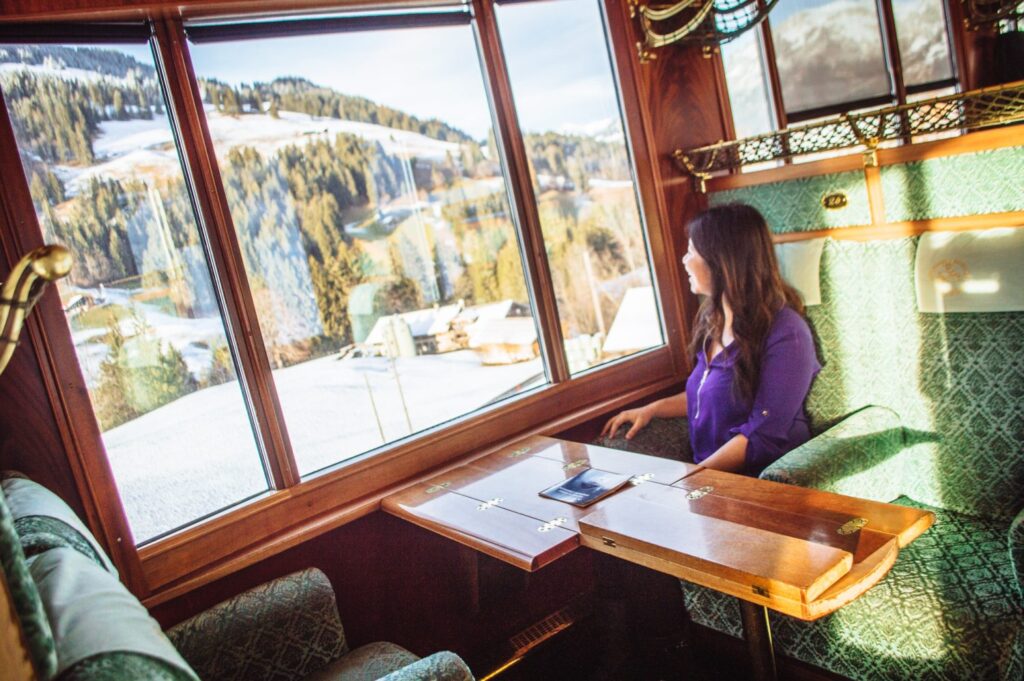
Europe Travel Tips for Transport & Getting Around
Getting around Europe can be really daunting for a first-time visitor, so here are all my best Europe tips related to transport and getting from one place to another.
Public transport is abundant and amazing
Don’t be afraid of using it!
I’m always shocked when I hear travellers who think that they’ll need to rent a car for their Europe trip.
Oftentimes, you really won’t need to, especially if you’re mainly visiting big cities.

On that note…
Avoid renting a car
Unless you are doing a trip that focuses heavily on natural sights or smaller remote villages, odds are you won’t need a car.
Public transport (as I mentioned above) is a solid option, and involves a fraction of the stress often unleashed by car rentals.

… But beware of hidden costs if you do rent a car
When it comes to car rentals in Europe, often the first price you see isn’t indicative of what you’ll have to pay in the end.
Some hidden/additional costs might include…
- Age or nationality based surcharges
- Additional driver fees
- Multiple country fees
- Extra miles
- Extra insurance
- One way fees
- Tolls/vignettes
So if you still want to rent a car, here is a post to help you figure out how much renting a car in Europe really costs .
Renting a car? You might need a vignette
One of the pains of car rentals is the additional fees. In many European countries, you need to pay for a vignette (a sticker you put on your car) to use their motorways.
In Switzerland for instance, this costs 40 francs… and yes, you need to make sure you have the vignette BEFORE you drive into the country, as there are automatic scanners at the border that can pick up your details and send you a ticket later (which we learned the hard way).

Do a lot of research before committing to a Eurail pass
Many first time visitors to Europe think of a rail pass as the cheapest option, but very often, booking your train tickets in advance will work out to be cheaper than a Eurail pass, especially if you aren’t taking that many trains and don’t need full flexibility (i.e. you are okay to book the trains advance).
Eurail passes can be great value, but not always. If you need help figuring out whether they’d make sense for you, read my full Eurail review for more details.
Look into scenic European train rides
I’ve already made my allegiance to European public transport pretty clear, but one of the main reasons is simply how beautiful it can be.
Sure, trains aren’t always the cheapest way to to travel Europe , but they’re often the most scenic and beautiful.
So if you’re into the idea of travel as an experience, then be sure to read my post on the best scenic train rides in Europe , and the best scenic train rides in Switzerland .

Familiarize yourself with Europe’s most famous budget airlines
One of the cheapest ways to get around Europe is hopping around on budget airlines… where sometimes an international flight is cheaper than a 6 pack of nuggets.
Of course, the epic prices come with their own set of drawbacks, usually in terms of the flight experience, customer support, and additional add-ons (which always come at an extra fee).
You can learn more specifics about Europe’s top budget airlines through my reviews here:
- Honest RyanAir Review
- Honest easyJet Review
- Honest WizzAir Review
Consider bus/coach travel if you’re on a budget
In addition to planes and trains, Europe is very well connected by an extensive bus (AKA coach) network.
One of the main contenders in this space is Flixbus, but depending on the country you’re visiting, there’s often local companies offering affordable bus travel between cities as well.
Again, I’d recommend using Omio so you can quickly compare buses, trains, and flights at the same time, but just know that bus travel in Europe can be a really cheap, safe, and easy way to get around.
Although there are of course some downisdes as well. You can read my full Flixbus review for more details.

Book an airport transfer for minimal stress
I love navigating Europe with public transport but if you’re travelling with a lot of luggage or as a big group, one of the more cost effective ways might actually be to just book a private transfer or taxi.
Of course, depending on where you go, taxi scams can be a real possibility, so for the least stressful option, consider booking a Welcome Pickups transfer, which is a set price, includes an English speaking driver who monitors your flight arrival time, and offers free cancellations up until 24 hours before.
This saves you the hassle of trying to get a taxi/navigate the language barriers to do so.
… Plus they pick you up with a cute little sign that has your name on it!
Do research on how trains work in your destination
I have to say, one of the most overwhelming things for me in Europe was getting used to how trains work. I come from West Coast Canada, where passenger rail from city to city is very limited.
SO if you’re new to train travel, it might be helpful to do some research on how the train system works in your destinations, paying attention to particularities like…
- Where to find the right platform for your train
- Where to stand in order to find the right section of your train
- Whether you need to buy and validate tickets before you get on board
Train stations are chaotic and stressful places, so you’ll ideally want to know these main things before you get there, otherwise you may have a lil mental breakdown on-site.
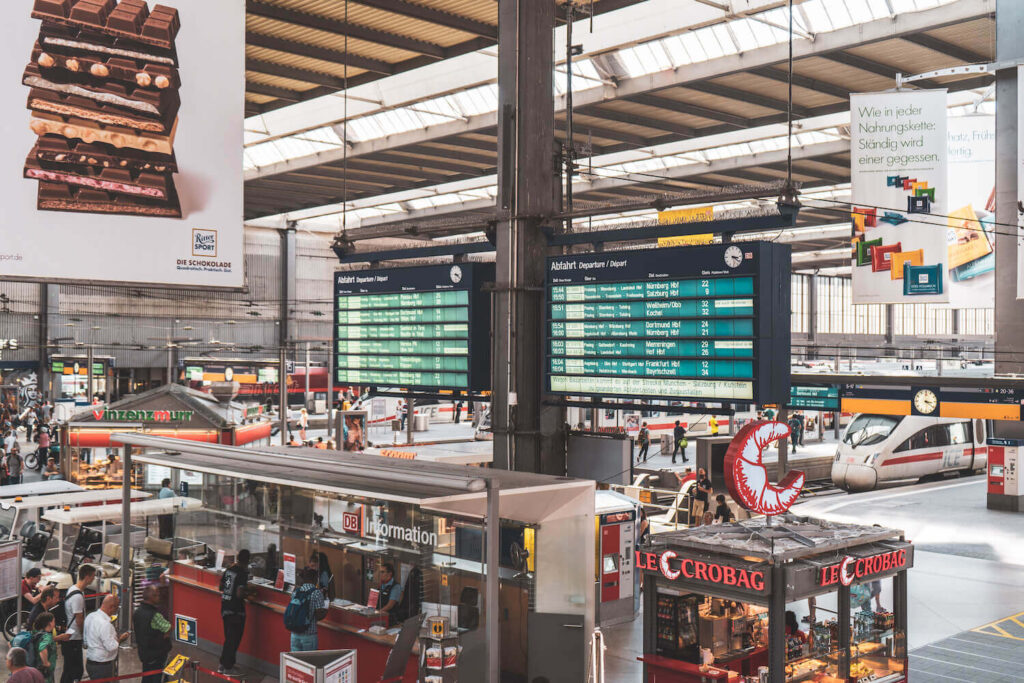
Use train station lockers
If you’re looking for a stress-free way to explore a city for the day, or if you need a place to dump your bags before check-in or after check-out, a convenient solution can often be found at your destination’s train station.
At larger train stations in Europe, there will usually be paid lockers or a ‘left luggage’ office for you to leave your bags for a small fee. Be sure to take advantage of these so you can explore without hauling all your lively possessions with you.
Order taxis or rides through apps whenever possible
Of course, this isn’t possible everywhere, but taxi scams are so widespread in certain European countries that you should definitely use an app when you’re able to.
The most popular ones in Europe include Uber, or FreeNow which is like Uber except you’re ordering an official licensed taxi.
Ordering through an app helps ensure you get a fair rate, and is also (in most cases) more convenient than waiting at a taxi stand or trying to wave one down in the street.
Always look for deals with public transport
If you’re relying on public transportation to get around during your trip (which I highly recommend), then doing a bit of research on ticket types and discounts can really save you a lot of money.
Most major European cities offer some kind of discount for day tickets, group tickets, or multiple trip bundles, so be sure to look into those rather than buying single tickets every time.
Always validate and hold onto your ticket
When it comes to navigating public transportation in Europe, most times it’s not enough to simply buy a ticket – you must usually a) validate it properly and b) keep it on you in case of inspection.
Who’s checking you ask? Well, most major European cities have random ticket controllers who periodically go around to make sure you’ve paid for and validated your fare correctly.
Sometimes (like in Paris) they’ll even ask to see your ticket after you’ve left the train platform, so be sure to hold onto your ticket until you’ve left the station.
Avoid public transport during rush hour… and during big events like sports games
When you’re a care-free tourist, it can be easy to forget the woes of mundane daily life like trying to get home during rush hour. Well, don’t forget: no matter where you go, they have a rush hour too, so be sure to avoid it whenever possible.
Ideally, you should aim to avoid public transport during times that locals are commuting to/from work. Pay special attention as well to big events like huge concerts or sport games, which can also make public transport a nightmare.

Easily rent bikes or scooters
Most major European cities now have e-bikes and e-scooters that you can easily rent on-the-go through an app. This can be a fun way to quickly and cheaply get around the city.
Options will depend on your destination, but keep an eye out upon arrival! If they are available, odds are you will see them everywhere.

Europe Tips for Attractions
Odds are, if you’re visiting Europe, your plans involve a lot of sightseeing. So, here are some of my best Europe travel tips related to attractions and itinerary planning.
Prepare yourself for scaffolding and restorations
Europe is an amazing destination thanks to its history.
… But the flip side of that is that it is old and so are many of its most famous monuments.
So, mentally prepare yourself for the possibility that the amazing church or landmark you’ve seen a million times on social media is covered in scaffolding, or doesn’t look as you hoped due to restorations.
For example, the first time I went to Rome, I was devastated to see the Trevi Fountain completely covered with scaffolding, and drained of water.
And most travelers have similar stories. There’s no way around it, but just keep in mind that it’s possible!
Look into age-based discounts
Oftentimes, whether you’re looking at train tickets or attraction tickets, there will be enticing discounts available based on your age, so be sure to look into those for additional savings, especially if you’re considered a child, youth (often this goes up to age 27!) or senior.

Get an ISIC Card if you’re a student
Here’s a very important Europe travel tip for students: if you are a student, the good news is you’re eligible for a wealth of additional discounts and offers.
The bad news is, often European institutions won’t recognize or accept student IDs from abroad, since they’re all so different.
An easy way to get around this though is by getting an ISIC Card , which is an internationally recognized student ID that costs about twenty dollars, but will save you at least that much in discounts.
I’d recommend getting one if you plan to travel around Europe for a longer time.

On a budget? Prioritize free museums and sights
This is one of my top Europe backpacking tips – do not sleep on the many free things to see and do in Europe.
Everywhere you go in Europe, there will be free things to do and see, ranging from free museums to beautiful architecture and street art.
So, be sure to research beforehand and see what free things there are to do at your destination.
NOTE: A lot of museums across Europe offer free admission on particular days of the month. Take advantage of these offers!

Book tickets for attractions in advance whenever possible
This is usually cheaper, and can save you a lot of time on the day of your visit because at major attractions, there’s usually a separate line for people who already have tickets.

Skip the line tickets are usually worth it
If you’re visiting a busy destination, then I’d highly recommend looking into Skip the Line tickets for major attractions, which will allow you to get in quicker.
Remember, during your trip, time is money, so paying a bit extra to skip the line is definitely a good use of funds.

Visit attractions shortly before closing time
While most guides advise that you visit the main sights early, another sneaky hack that works quite well is visiting right before it closes.
I did this once with the Vatican Museums, entering about 1.5 hours before closing time and it I practically had the place all to myself!
In contrast, one time I did an early morning tour of the Vatican and it was already quite busy because other tour groups were starting at the same time.

Book special tours that are before or after public opening hours
Many busier destinations will offer this now, and it’s a magical way to experience the top sights with a fraction of the crowds.
I once did a sunrise tour around Venice and it was incredible to see all the main sights and feel like I had them mainly to myself.

Seek out fun and unique tours in general
Gone are the days that destinations offer just your old standard tours that cover everything generally.
These days, in most major European destinations, there are special tours you can book based on interest, with tours focusing on everything from history and food to street art and photography.
I usually like to have a quick search on GetYourGuide to see what’s available.

For touristy cities, research on local blogs
In big cities like Paris or London, sure there’s a lot of tourists, but there are even more locals, who live there and call it home.
This means there’s a whole other side to the city that many tourists miss out on, from cool pop-ups and restaurants to special cultural events. I always try to look up fun events/updates on local blogs before every trip, and have gotten some really fun travel memories out of it.
You might find my guide on How to Find Cool Stuff to Do Near You helpful.

Seek alternate viewpoints to main landmarks
If you ever find yourself in a place wanting to get THE photo of a major landmark (e.g. the Eiffel Tower in Paris, the Coliseum in Rome, etc.) then a great way to get an amazing photo away from the crowds is by seeking out alternative angles and perspectives.
Remember, landmarks are big, so odds are you can find some cool places to get your photos without having to cram with everyone else. Simply walk a few blocks away and try to find unique views!

Always search for information on the official websites of attractions (even in the local language)
These days, hours/entry requirements can change quickly and third party guides (yes, even Google Maps!) may be inaccurate.
So, if you’re trying to find information on how to book tickets or what opening times are, make sure you always go straight to the source rather than other sites or blogs (even mine!)
For example, on my most recent visit to Rome, the Pantheon had changed its policy to be open only for reserved time slots on weekends, which would have been really unlucky because I saw no information about this anywhere else.

Don’t spread yourself too thin
An ideal itinerary should have a mix of sights, experiences & relaxing. Don’t burn out by forcing yourself to see everything. I personally always ensure that there’s a relaxing or chill activity on each day, whether that be a picnic or just a relaxed coffee/cake afternoon.

If you’re not interested, don’t force yourself just because it’s a must do
I think too often, first-time visitors in Europe get caught in this trap of needing to see all THE most famous things, but remember: at the end of the day, this is your vacation, so don’t force yourself to see something just because a random person on the Internet told you to.
I personally love museums but they’re not for everyone, so just remember it’s your vacation and there’s no need to do something just because it’s famous.
… but psst – if you ARE into museums, don’t wait until your trip to go! There are tons of really cool virtual museums you can check out when you’re bored. Pro tip from one hopeless nerd to another.

Safety Tips for Europe (And How to Not Get Scammed!)
Is Europe dangerous to travel? This is one of the most common questions that first-time visitors ask. Honestly, so long as you keep the following Europe safety tips in mind, you will be fine.
Be wary of petty theft and scams when you visit Europe
Certainly in more touristy cities like Paris and Barcelona, opportunistic crime is abundant.
You can learn the most common pickpocket techniques and how to avoid them in my post about how to avoid pickpockets in Europe , but overall, the key is to always be vigilant and keep an eye on your belongings.
Pickpockets thrive on distraction, and tend to operate in high-traffic areas that have a lot of people/tourists (e.g. train stations), so be especially careful to not let anyone get too close.

Look into theft-proof bags and accessories
There are a lot of amazing theft-proof travel accessories out there these days. The bad news is they’re not always the cheapest.
If you’re willing to splurge a bit on something high-quality and designed to thwart pickpockets, here are some options:
- PacSafe’s products are all made to be theft-proof, including their signature backpack here and day bag here
- Secret passport scarves like these are a great way to stash THE most important things in a subtle and discreet way
Research the pickpocket hot zones for your destination
Most major cities have certain areas that are particularly well-known as pickpocket destinations.
In Rome for example, there’s Termini Train Station where I got pickpocketed, and Bus 64 AKA the Pickpocket Express.
Knowing where pickpockets tend to operate can help provide some ease of mind, and help you figure out when to be on guard.

Keep valuables out of sight
Leaving your phone on a terrace table, or your purse hanging on your chair are both easy ways to get your valuables stolen!
Sure, it’s easy to let your guard down when you’re trying to relax, but remember that keeping your valuables out like that can be an easy way for them to get snatched.
Whenever I’m dining anywhere, I always keep my bag between my feet so they’re hard to access, and make sure to not leave my phone out on the table (on my lap, under a big napkin is often a safer bet!)

Don’t take “free stuff”
A very common scam in touristy European places is people will offer you something for free “as a gift”, but then demand you (or one of your travel buddies) pay for it.
Some examples include…
- Friendship bracelets
Generally, they will set up shop in busy, touristy areas, so remember to be especially cautious in these areas.

Don’t sign any petitions
Another common scam is the petition scam, usually run by groups of young women.
They’ll come ask you to sign a petition (often first breaking the ice by asking if you speak English) and then either demand a donation from you, or distract you as someone else picks your pockets.
… So if someone asks you to sign a petition, just ignore and walk away. Better safe than sorry!
Rudeness is the way to get rid of scammers
On that note, if you find yourself in a situation where you are being followed or confronted by one of the aforementioned scammers, the best thing to do is ignore them and walk away.
They can be very persistent, but will give up eventually when you ignore them.
Limit the amount of cash you bring out with you
I always say to plan for ‘worst case scenario’, so another one of my top Europe safety tips is to not bring around more cash than you’d stand to lose.
Once upon a time, my friend was carrying around hundreds of euros in her bag (at the start of her trip) and was pickpocketed in Nice on her very first day! Pickpockets work quickly and unexpectedly, so don’t bring out more than you’d be okay losing.
Store your cards separately
On a similar note, make sure to not carry all your cards in one wallet, so that (in case you are pickpocketed), you have a back-up.
I would recommend keeping one card in your suitcase, or in a separate bag.

Don’t make yourself appear to be a good target for robbery
Sometimes when I’m travelling I’ll see people doing photoshoots posing with their designer shopping bags, completely oblivious to the fact that they’re making themselves targets.
Worse, sometimes they just leave the bags on a bench or on the stairs while they’re occupied on their phone.
If I were to write a “how to get robbed in Europe” article, these are the types of behaviours that would make the list, so make sure you’re not making yourself a clear target, and don’t wear unnecessarily flashy outfits or accessories which might catch a thief’s eye.

Keep your phone out of reach
Phone snatchings are becoming a really common crime, especially in big cities like London, so avoid having your phone haphazardly out, or at least be sure to pay more attention when you do, especially…
- If you’re standing close to doors on public transport
- If you’re walking along a bike lane or road

Be careful of bike lanes
Speaking of bike lanes, here’s another important (physical) Europe safety tip: be mindful of them.
If you’re like me and come from somewhere that they’re not overly common, it’s way too easy to accidentally walk onto them and potentially get yourself run over (or more likely, make yourself an annoyance to a cyclist just trying to get home).
Beware of strangers asking you to go for drinks randomly
This is a scam that’s more prevalent in famous party cities, but if a random person (usually an unreasonably attractive woman) comes up to you off the street and asks you to grab a drink, odds are rather good that they’re not just a friendly local looking to grab drinks with a stranger.
This is a common scam where people (again, usually beautiful women, but not always) will bring targeted tourists into bars they’re working with to get a few drinks, only for these tourists to get charged extortionate rates for these drinks, because you never question how much stuff costs when you’re trying to flirt.
Extreme stories even say that bar staff will block the door until the tourists pay up.
Moral of the story: if it seems too good to be true, it probably is.

And beware of children
A general rule of thumb is this: if a kid is confidently coming up to you and/or getting close unannounced, keep your valuables close and watch your pockets. This is often a distraction tactic used by pickpockets, and sadly some kids are also trained to steal from a young age too.
I almost lost my wallet in Bratislava this way, when a woman asked me to take her photo and her kid started running around me as a distraction.
I realized pretty quickly what was happening and caught my pickpocket literally with her hand in my purse. Luckily, I was able to swat her hand away just in time.

Buy some small locks to put around your zippers
Another great travel hack I’ve picked up over the years is simply buying a set of small cable locks like these and keeping one in each bag.
That way, you can quickly lock your zippers together in crowded situations and prevent anyone from randomly opening your bag.
Simple, but effective.
Look up common taxi rates and scams before arriving
While I’m a firm believer that public transport is the way to go, sometimes you might need to take a taxi, whether it’s because you’re arriving late, running late, or just want to splurge a little.
While this varies depending on the country, taxis are often prime scam zones! I’ve personally been scammed by taxis in Prague and also in Sofia.
Particularly if you are leaving from busy areas like airports or train stations, some opportunistic drivers will take advantage. This is how I got charged 4x the usual fare in Sofia, mainly because I didn’t know better.
So, if you plan on taking a taxi, make sure you search up how much that route should generally cost, and also familiarize yourself with common scams.
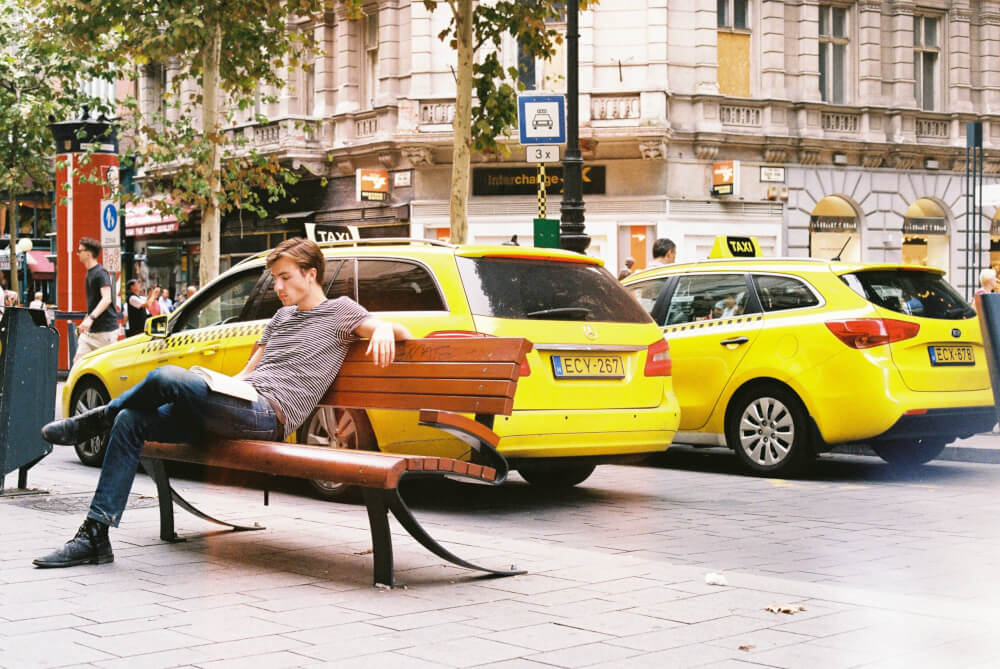
Know the emergency numbers
In North America, 911 is the go-to when you have any kind of emergency, but the numbers are different in Europe.
Within the EU (and a handful of other countries), the general emergency number is 112, and most countries will have other numbers for more specific emergency services as well.
So, be sure to take note of what these are before your trip, although I’ve heard anecdotally that 911 should reroute to emergency services as well.
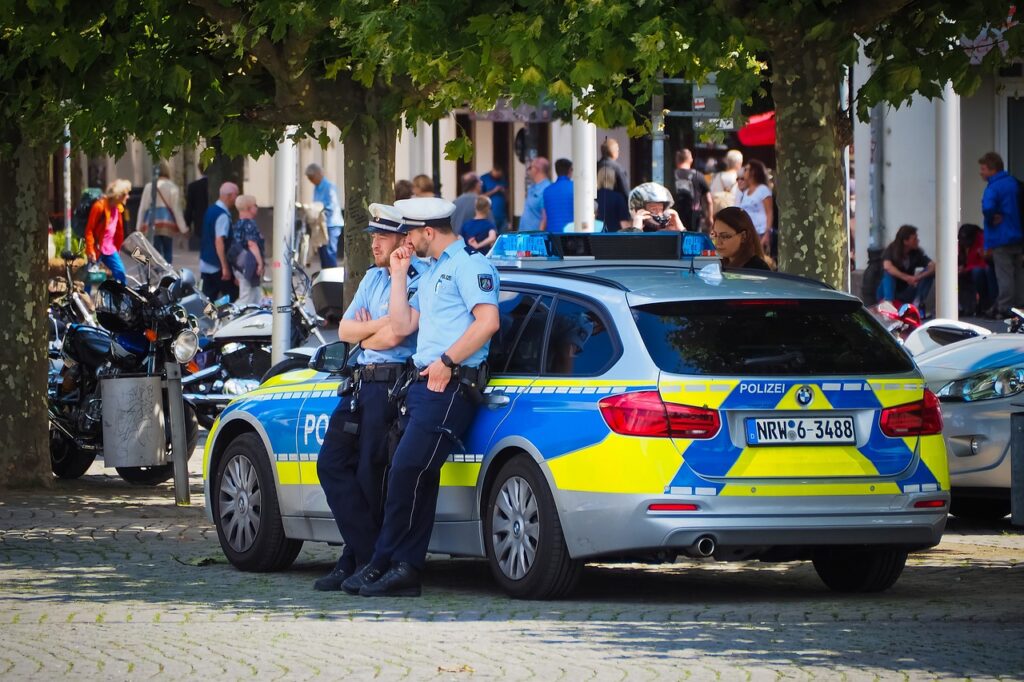
Avoid sketchy EuroNet ATMs
If you’re going to an ATM, try your best to find one that’s connected to an actual bank.
There are a lot of ATMs (especially around tourist areas) that charge huge fees, or make currency conversion more confusing than it needs to be so you can get charged more.
As a general rule, don’t use any of those Euronet ATMs – they’re the worst!
Have a plan in case of a worst case scenario
This isn’t just a good Europe travel tip, but a good tip for travelling anywhere – make a plan for the worst case scenario.
Imagine your bags get stolen with your passports and all your cash/cards – what would be your backup plan? What would you do if you lost your phone?
Having a plan in place can minimize stress in the event that anything does happen, and having that peace of mind is very important for any vacation!

Get a good VPN
If you plan to be travelling longer-term, getting a reliable VPN is a must.
In short, VPNs (or Virtual Private Networks) mask your IP address and encrypt your data so that you can protect your identity online, browse anonymously, and even change the geographical location you’re browsing from.
This can be helpful in a lot of backpacking situations. In the past, I’ve used a VPN to…
- Access streaming for my favourite TV shows that weren’t available in the country I was travelling in
- Visit sites that were blocked in the country I was travelling in
- Access important sites (e.g. banking portals) that flagged my visit as suspicious because I was in a new country
- Securely browse the Internet with public WiFi knowing my data/identity was protected
As a real cheapskate (especially in my earlier travel days), I’ve tried every free VPN under the sun, and always found them to be unreliable or buggy.
After doing lots of research, I decided to splurge on Private Internet Access , which I’ve been using for the past few years, and I’ve been loving it. It’s super easy to use, very reliable, and actually (when you break it down) not expensive it all.
Subscribe via this link and you can get it for under 3 bucks a month.

Food & Drink Tips for Europe
When in Europe, eating and drinking well is a must! Here are some of my best tips for making the most of Europe’s varied food culture.
Visit grocery stores to save big
Not only is visiting supermarkets abroad just a fun cultural activity in general, you can save a great deal of money by buying snacks/drinks there vs. from vendors as you’re out and about.
If you have cooking facilities at your accommodation, making some of your own meals can also be a huge money-saver, even if you’re just swapping out a sit-down lunch for a picnic one.

Beware that you might need to weigh your own produce
Of course, visiting supermarkets abroad can come with its own healthy dose of culture shocks, one of the main ones being that most countries have their own different method of handling produce.
Should you weigh it? Print a sticker? Just bring it as-is?
The answer will depend, so observe what others are doing before you get caught awkwardly at the cashier with a woman shouting at you in Bulgarian because you didn’t weigh your tomatoes (true story).

Have a quick search of regional specialties before you go
European cuisine is SO diverse, and even within one country, you’ll have all kinds of different regional dishes to try, so I’d recommend doing some research beforehand about the top must-tries, so you can keep an eye out for them.
For example, you might think you know what Italian food is but when you go to actual Italy, you’ll realize that every region has their own special dishes, so be sure to look into what those are before just getting pizza everywhere.

Dine far away from tourist attractions
A general rule of thumb is that any restaurants right next to major tourist attractions are probably gonna have a poor price to quality ratio, since they cater more to tourists who are flush with cash and unlikely to return.
My tip? Just walk a few blocks over before starting your food hunt, or d some research beforehand to find well-rated restaurants near you.

Learn how to spot a tourist trap restaurant
Tourist trappy restaurants are a dime a dozen in Europe’s more popular destinations, so make sure you work on your tourist trap radar.
A few red flags include…
- Big pictures
- The menu being translated into a million languages
- The words “TOURIST MENU” over it
- A really persistent person out front beckoning you to come inside
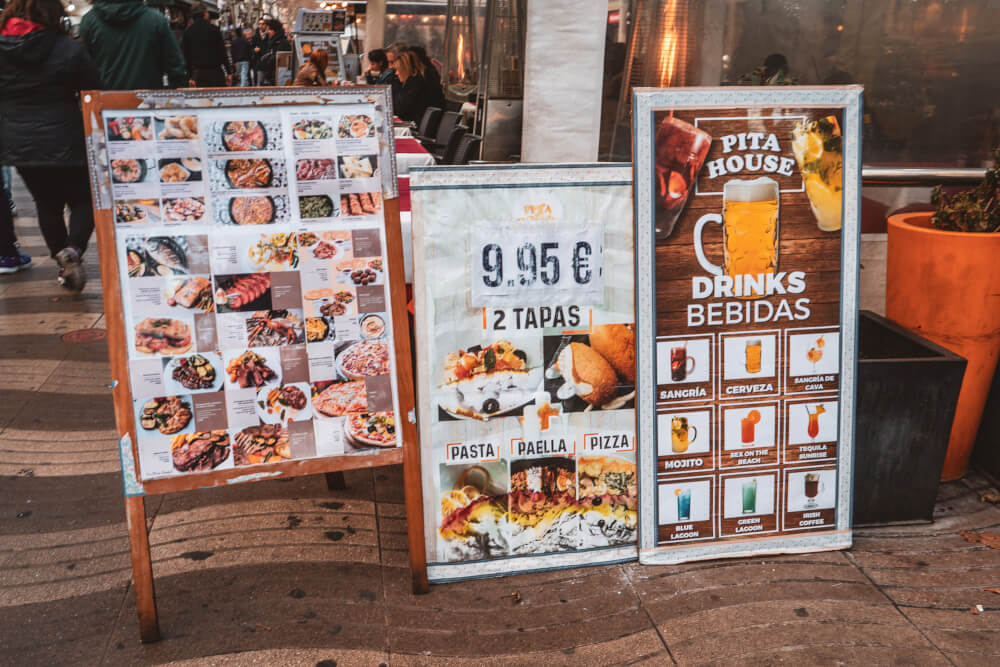
Double check that places have prices on display before ordering
This may be the oldest scam in Europe’s “let’s extort tourists” playbook, but any restaurant with fair pricing will be transparent with their pricing.
If you come across a restaurant that doesn’t list prices upfront, then run for the hills.
Never assume “it can’t be that bad” because odds are they’ve omitted their prices for a reason and plan to charge you an extortionate amount, like this place which went viral for a 500 euro lunch bill.

A quick check of reviews is a must
While I don’t believe reviews are accurate 100% of the time, I do think they’re very helpful for establishing patterns, especially when there’s a bunch of reviews all saying the same thing.
A quick search of the restaurant (even on Google Maps Reviews) can help prevent you from getting scammed or being subject to mediocre food/service.
Lunch specials are usually cheaper
If you’re gonna splurge and treat yourself, lunch might be the time to do it. Many places will offer special deals for lunch, so keep an eye out for those!

Usually the bill won’t come until you ask for it
Generally speaking, the ultra-friendly and proactive customer service you get in North America doesn’t really exist in European countries.
Very rarely will you have servers come up to constantly check on you and ask how you’re doing, so if you’re wondering why nobody has brought the bill around, just get their attention because they don’t tend to drop it off until you ask (doing so without asking is actually considered a bit rude in itself).
Don’t shy away from food tours
If you’re running on limited stomach space but want to try as many local specialties as possible, then food tours are a really fun and delicious option.
Most big destinations in Europe have them these days, and they’re a great way to sample a lot of local foods while also getting a local guide’s perspective and expertise.
Context is key and learning about food (while eating it!) is the best.

Take a cooking class
Another foodie activity that’s now offered in most European destinations these days is cooking classes.
There’s no better souvenir than learning how to prep your favourite foods once you get home, so definitely consider adding one to your itinerary.

Get used to sparkling water
Sparkling water is a lot more common in certain European countries than in North America, to the point where sometimes it’s the default if you ask for water.
If you’re not a fan of spicy H20, then make sure to specify Still when you order water.
Don’t pay extra for hotel breakfast
Don’t get me wrong, I love a good hotel breakfast when it’s included in the room rate, but if you’re given a choice, you can save a lot of money by going out to get breakfast at a bakery, which is also more fun in my opinion.

When weather permits, picnics are a much better option
I love picnics. They’re such a romantic and affordable way to enjoy a meal, especially when you have a great backdrop.
Make sure you picnic at least once during your trip – I promise you’ll love it! And your wallet will too.

Generally speaking, Europeans eat later than North Americans
After living in Germany for a few years, making dinner plans with friends at home almost put me in a coma. Dinner at 5:30 or 6pm? Wayyyy earlier than most European countries, especially Spain where dinner time is often after 9pm.
Of course, you can take advantage of this cultural difference by getting a table at popular restaurants simply through booking as soon as they open.

Be openminded with trying new foods
I hated beer until I had it in Belgium. I hated cheese until I tried smoked cheese in the Netherlands.
I don’t know how to explain it, but certain food and drink items just taste different, and frankly, better in Europe than they do in North America.
So before you write something off as a food you don’t like, give it a try. You might be pleasantly surprised, especially if it’s the regional specialty.
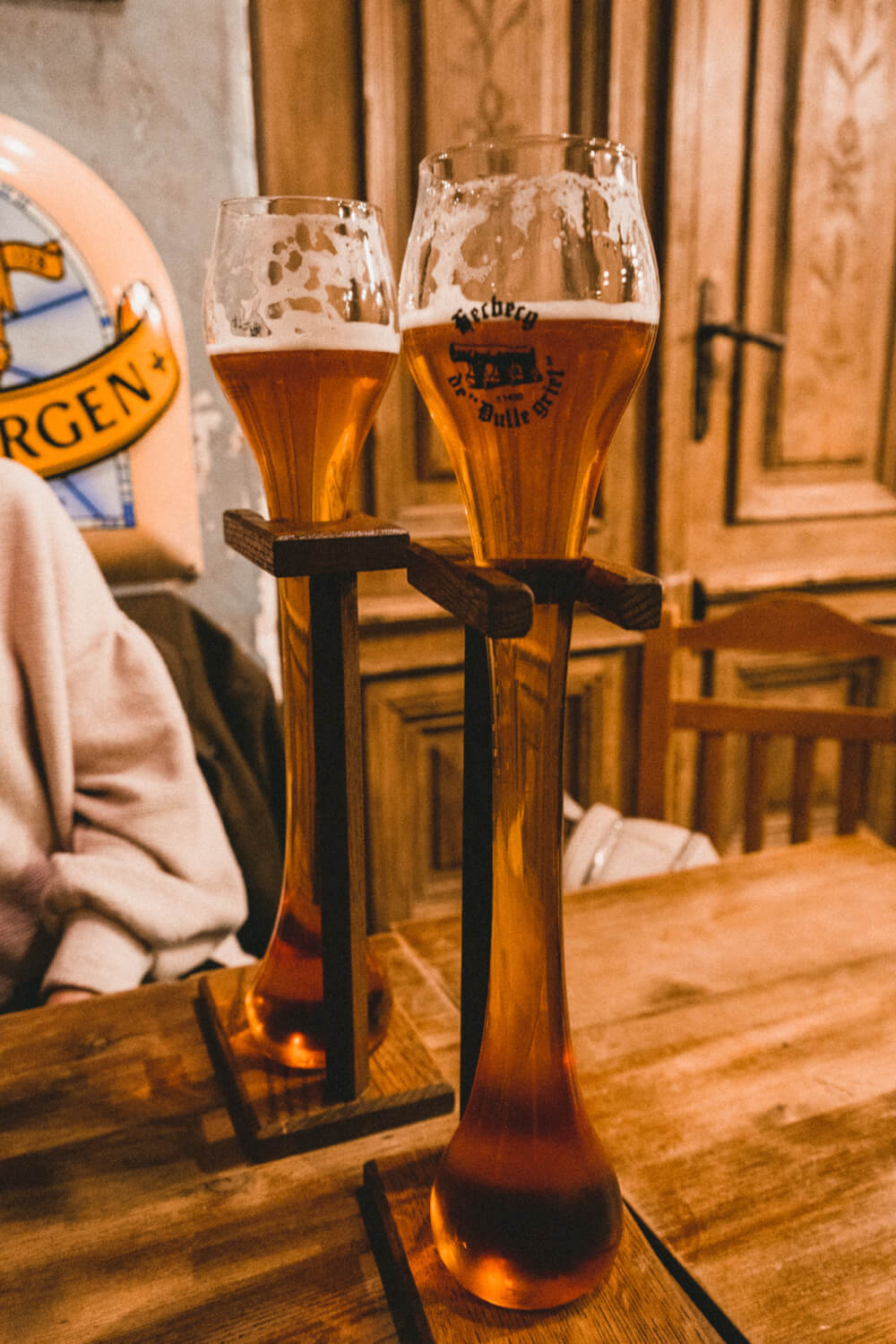
Get takeout for super cheap with Too Good to Go
One of my favourite (little-known) Europe travel apps is called Too Good to Go.
They service many major European cities, and basically, it’s a free app that restaurants use to sell their leftover food at the end of the day (sometimes at lunch too).
This helps minimize food waste, and means you can pick up an entire take out meal for less than 5 euros.
Sure, you don’t get to choose what you get, but it’s an excellent way to eat cheap and help reduce waste at the same time.
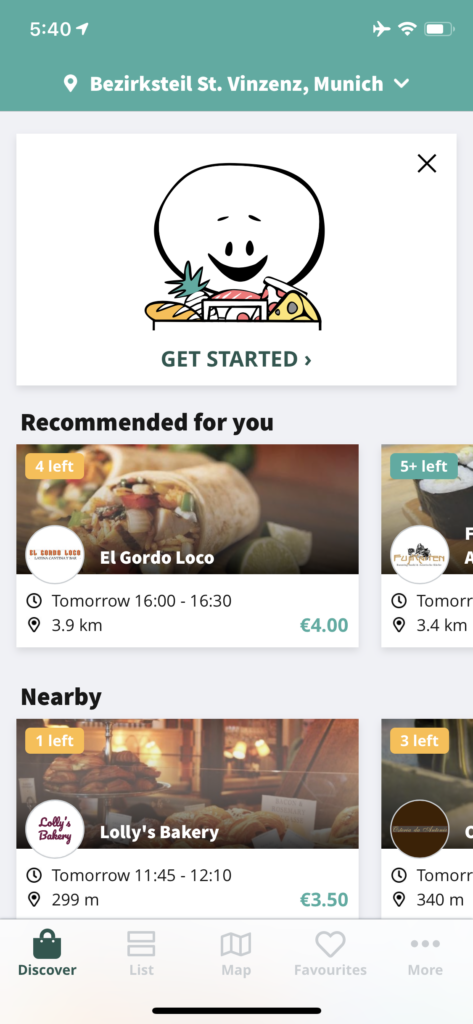
Culture & Etiquette Tips for Europe
Tourists can often have a reputation for being rude… but not you! Not on my watch. Here are some culture and etiquette tips to keep in mind for your trip to Europe.
Culturally, Europe is a million different entities
One of my biggest pet peeves when it comes to Europe travel advice is when books or sites tell you “In Europe, tipping is like…”, “In Europe, locals are…”
… Which I know is kind of ironic in an article simply called “Europe Travel Tips” but shhh just go with it.
Long story short: Europe is composed of dozens of countries, each with their unique cultural nuances and norms, so be sure to research culture tips specifically for where you’re going, because things like tipping, queuing, meal times, etc. can vary considerably across the continent.

Learn at least hello and thank you
While visitors can often survive just fine without learning the local language, i’s generally good manners to know basics such as hello and thank you for every country you visit.
… So be sure to practice that a bit before you go!
Do not tip by North American standards
As I previously mentioned, tipping in Europe does vary from country to country, but never would a 20% tip be considered the bare minimum like in North America sometimes.
So, be sure to research tipping culture in your destination before you go. In many countries, tipping involves simply rounding up.

Try to not speak too loud
In Europe, North Americans generally have a reputation for being… loud. Sometimes obnoxiously so.
So if you’re out in public, try to lower the volume of your voice to closer match what’s around you (easier said than done, I know, but something to be mindful of).
When in doubt, mimic the locals
Cultural norms can vary widely from place to place, so your best bet is to just observe the status quo and try to imitate that.
If nobody is chatting on the train, it’s probably a good sign that you shouldn’t either. If everybody is lining up in an orderly queue, maybe you should join that queue instead of barging in the front.
Remember, tourists can have a reputation for being disrespectful and annoying, so try your best to shatter that stereotype wherever you go.

Look into festivals and folk events to attend
One of the most amazing things about Europe as a continent is that it is so deeply rooted in heritage and tradition, with some cultural traditions dating back thousands of years.
For a truly unforgettable experience, I’d recommend looking up some fun festivals or events to enjoy.
Here are some of my favourites I’ve been to:
- September: Bad Dürkheim Wurstmarkt (the world’s largest wine festival)
- September/October: Oktoberfest in Munich (the world’s largest beer festival)
- February: Crazy Days at Cologne Carnival
- March – April: Starkbierfest in Munich (unique strong beer festival)
- March – May: Keukenhof (the world’s largest flower garden)

Packing Tips for Europe
Not sure what to wear and what to pack for Europe? Here are my top Europe packing tips.
Steal my pre-made packing lists
If you’re overwhelmed with what to pack, I’ve already made some packing lists that you can use as a starting point!
Download them, print them, mail them to all your friends and exes! I hope you get tons of use out of them:
- My Europe winter packing list
- My Europe summer packing list
- My versatile minimalist packing list
- My toiletries packing list

Don’t bring any suitcases you can’t carry
I’ve always been an advocate for packing light, but a good rule of thumb is to not bring any suitcases you aren’t physically capable of carrying yourself.
There’s a million and one scenarios where you might have to end up carrying your suitcase in Europe, like…
- Your hotel or accommodation unexpectedly has no elevator
- The elevator you were counting on at the train station is out of order
- You need to carry your bag up some ancient staircase to get to your accommodation
- You need to lift your suitcase on/off the train you’re taking
So yes, whatever bag or suitcase you bring, make sure you’re able to carry it yourself.

Good walking shoes are a must
I cannot explain to you how much walking you’ll end up doing, so comfortable shoes are much more important than cute stylish ones.
That said, if you’re able to find comfortable walking shoes that are a bit dressier, opt for those over beat up runners.
Generally speaking, casual wear in Europe is more dressed up than what we’re used to in North America, so packing a nice pair of white sneakers or comfy leather boots would definitely be a more versatile choice over hole-filled running shoes.

Buy AirTags to track your suitcases
With airlines losing baggage all the time these days, I’ve finally caved and bought an AirTag to track my checked bag.
And honestly? I regret nothing! I love the ease of mind it provides, and should a thief ever nab my bag one day, I feel very smug knowing I’ll be able to track them down.

Pack an emergency outfit in your carry-on
On a similar note, one Europe packing tip I live by is always having an emergency set of clothes in your carry-on bag.
Checked bags get lost all the time, so having extra clothes with you is key for ease of mind. I usually bring all the top essentials with me in my carry-on. Better safe than sorry!
Pack clothes with hidden inner pockets rather than a money belt
While many travel experts tout the the benefits of money belts, I’ve honestly never been able to get on board with them. They’re awkward, sweaty, and reaching under your clothes to get change for an ice cream is just… not my idea of fun.
Instead of a money belt, I always have either:
- A backpack with a zippered pocket in the back, which makes it inaccessible to anyone else when worn
- A crossbody purse with a pocket on the backside, again making it inaccessible to anyone so long as I hold it close to me
- A jacket with inner pockets so it’s impossible to reach in without getting super super close
These anti-theft methods are a LOT more comfortable to me than a money belt… so remember: a money belt isn’t the only way!
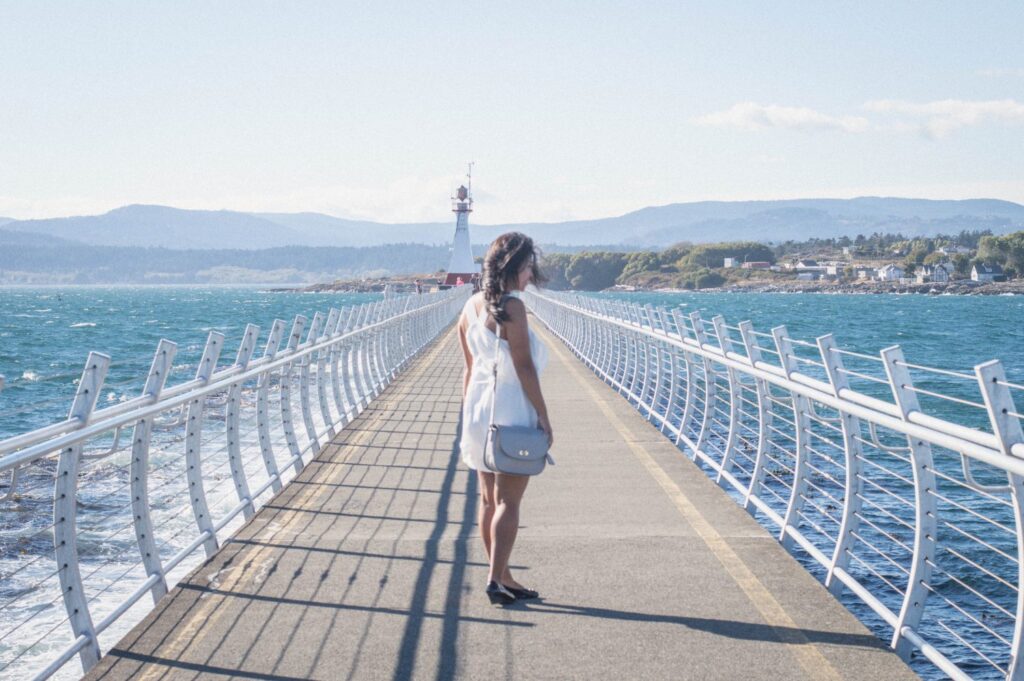
Bring a universal adapter
Power sockets in most European countries have two round holes and if you’re visiting from overseas, odds are you’ll need an adapter for your plugs to fit.
I’d strongly recommend buying a universal adapter like this one if you don’t have one already. Not only is it good for the standard round hole outlets, but it can also work for the three prong plugs in the UK, Malta, and Cyprus.
It’s cheap, can be re-used for every trip, and covers you in all situations. Definitely some of the best money I’ve ever spent!
Use packing cubes to organize and compress your clothes
I am such a packing cubes fangirl.
These beauties are a magical way to keep all your goods organized, while saving space in your bag as well. Gone are the days that you rummage through your entire pack for a particular t-shirt!
Not all packing cubes have to be expensive either. There’s plenty of affordable options on Amazon, like this blue set from Amazon Basics , but you definitely get what you pay for.
PS: I’m a total packing cube nerd and once bought a bunch of different brands to compare. See my full packing cube showdown for more.

Pack a re-usable bag for purchases
Single use bags are slowly getting phased out in Europe, so I find it’s always a good idea to bring an extra bag or two whenever I travel, whether to stash my souvenir haul for the day or to carry around snacks.
So, when in doubt, pack a tote or two! They can be such lifesavers.
DIY your own travel sized toiletries
This is a very basic packing tip I always recommend, but rather than buy the bottles of toiletries which give you like, three good squeezes of shampoo, I find it’s easier (and more eco-friendly) these days to buy small reusable bottles that you can fill with your own toiletries of choice.
This allows you to bring your favourite products with you, and saves needless one-use toiletries from ending up in the landfill.
Need help picking the right one? Read my guide to reusable toiletry bottles for more info.

Final Europe Travel Tips to Know Before You Go
Alright, before I let you get back to… your real life, friends, and family, here are some final random Europe travel tips to keep in mind.
Having cash is important
With the exception of Northern Europe and some parts of the UK, cash is still important to carry around, whether for small purchases or for essentials like using the washroom. Keeping coins is also a good idea.
So, don’t forget that cash is still king in many parts of Europe!

Claim VAT refunds at the airport
Taxes are generally built into the price in Europe, so many travellers don’t realize they are paying up to to 20% in VAT (Value Added Tax) for everything they purchase.
The good news is, when it comes to goods that you are buying and taking home (e.g. clothes, gifts, etc.), non-residents of Europe are eligible for a refund on this VAT that you pay.
VAT refund rules vary from country to country, but usually there’s a minimum spend amount in one single location (around 175 EUR in most cases).
So, keep this in mind and you can get a good chunk of change back. To get the step by step process, Google your destination + VAT refund, as the process does differ country to country.
Floors start at zero so don’t get confused
If you’ve seen Emily in Paris you’ll already know this one.
The floor system in European buildings tends to differ from North America.
Whereas in North America, the ground floor is often the 1st floor, the ground floor is considered its own separate entity in most countries (i.e. Floor 0) and then the next one above that would be the 1st floor.

Prepare for beds to be different
Bed sizes in Europe tend to be smaller, and doubles can often just be two single beds pushed together (so romantic, I know).
Depending on where you go, the pillows and comforters can be different as well, like in Germany where they’ve randomly decided that the optimal shape for a pillow is square. *shudder*
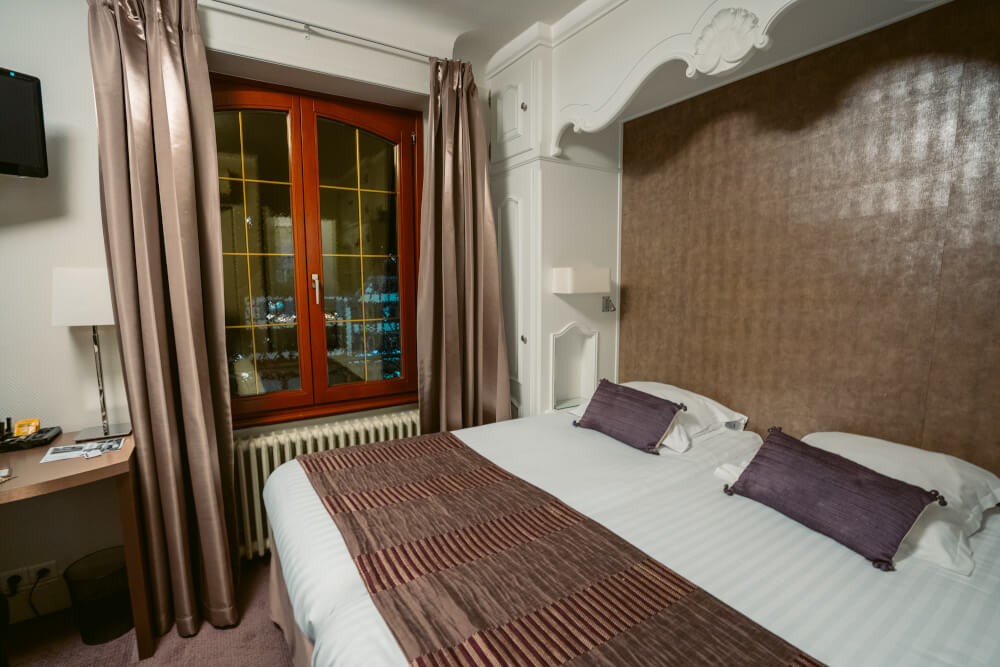
Beware of words you know that may mean a different thing in other languages
For example, a menu for North Americans is a list of dishes you can order, but a menu in France means a set meal or combo.
Similarly, entrées in North America are the main course, when in France, it means appetizer.
Use Google Maps to save spots you want to see
Google Maps is an amazing resource not just for navigating a new city, but also for saving spots you might want to visit in the future.
One of my favourite travel hacks is starring every location I deem interesting on Google Maps. You can do this by pressing the Save button when you search up that spot.
This allows you to have a visual map of all the cool cafes, street art murals, attractions, restaurants, etc. that you’ve saved during your research, which means you can easily organize your itinerary/sightseeing.
I love doing this because I’ll often end up in new areas during my explorations, and I can just look at my map to see if anything interesting I read about happens to be nearby. Saves a lot of planning!
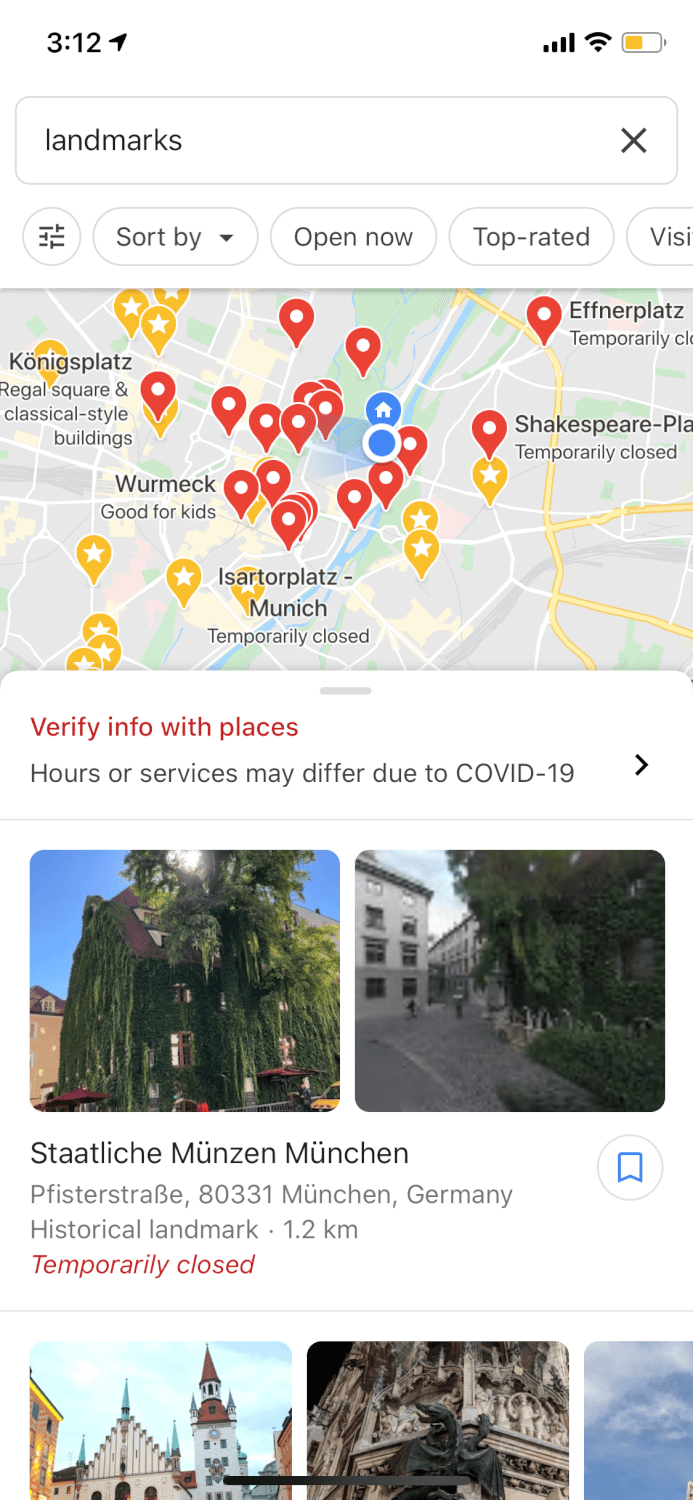
Need customer support? Hop on Twitter
Don’t ask me why this is, but if you need to get ahold of customer support during your trip (e.g. an airline, a train company, etc.), usually the quickest response time will be through Twitter.
The best way to tell if you’ll get a reply on Twitter is by checking the official accounts’ replies – if there are recent replies to Tweets, odds are good that there’s a dedicated staff member monitoring the account.
This of course works in non-travel settings as well!
Get crowdless photos by using this cool photo hack
For iPhone users, there’s a super easy way to get cool photos in crowded places without getting a bunch of people in the shot.
Simply follow these steps:
- Turn on Live photo
- Pose for your photo, making sure to stand still
- Get your photographer to snap a few photos of you standing still
- Edit the photo by going in the upper left corner, click on the LIVE button with the downwards arrow, and turn on Long Exposure
- The crowds walking around you should now be blurry, with you still in focus
Binge on movies set in your destination before your visit
You know, I could binge travel quotes all day but nothing will put me in more of a wanderlusty mood that a good movie set somewhere beautiful.
So, if you binge travel movies set in your destination, I promise your trip will be 1000000x times more enjoyable when you recognize the sights that you’re seeing. Trust me.
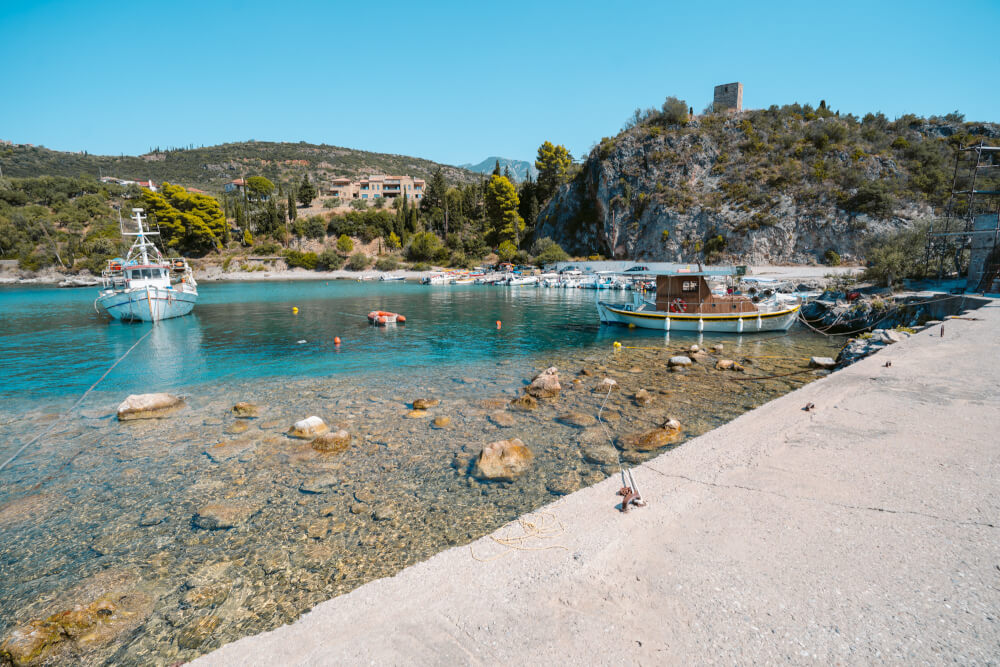
Consider learning the Cyrillic alphabet
If you are travelling somewhere that uses the Cyrillic alphabet, it can be very beneficial to learn how to read it.
This is because sometimes destination names at train/bus stations are written only in the local alphabet, which can lead to a lot of confusion if you’re unfamiliar with it.
European countries that use the Cyrillic alphabet include…
- North Macedonia

Remember: Europe is more about the experience than it is about seeing a million sights
Last but not least, I have to say… Europe is beautiful, yes. It’s packed to the brim with gorgeous museums, architecture, natural beauty, etc. BUT at the end of the day, what you need to focus more is on the experience of just being present and enjoying every moment.
Don’t stress yourself out too much with a heavy itinerary and trying to cram as much as possible in.
Enjoy it! Because your trip will go by far quicker than you think.

I hope this list of Europe travel tips was helpful!
If you’ve made it this far, wow. I applaud the stamina. And patience! This ha admittedly been a VERY long list of tips for Europe, but if you have any more questions, let me know in the comments… and be sure to read my list of unconventional travel hacks if you’re eager for more.
My Go-To Travel Favourites:
🧳 Eagle Creek: My favourite packing cubes
💳 Wise: For FREE travel friendly credit cards
🍯 Airalo: My go-to eSIM
🏨 Booking.com: For searching hotels
📷 Sony A7IV: My (amazing) camera
✈️ Google Flights : For finding flight deals
🌎 WorldNomads: For travel insurance
🎉 GetYourGuide: For booking activities
Leave a Comment Cancel reply
By using this form you agree with the storage and handling of your data by this website. *
This World Traveled
Traveling the world one place at a time.
- Faroe Islands
- Netherlands
- Philippines
- New Zealand
- South Africa
- Travel Gear
Planning a Trip to Europe: 30 Tips to Help You Plan a European Vacation
May 19, 2020 · In: Austria , Belgium , Bosnia & Herzegovina , Croatia , Destinations , England , Estonia , Europe , Faroe Islands , France , Germany , Greece , Iceland , Ireland , Italy , Netherlands , Northern Ireland , Norway , Slovenia , Svalbard , Sweden , Switzerland
Planning a trip to Europe is incredibly exciting but it can also be a bit overwhelming. After living in Europe for 6 years I frequently get asked questions about how to plan a trip to Europe.

In this comprehensive guide I will give you lots of tips on how to plan a European vacation. Everything from deciding which countries to visit, how to create an itinerary, when is the best time to go, money saving tips and more!
Creating a plan for your European travels in advance will make your trip far more enjoyable and way less stressful. So grab your pen and paper and lets start trip planning!
DON’T HAVE TIME TO READ NOW? PIN IT FOR LATER!

Table of Contents
Is Europe a Country or a Continent?
One common misconception is that Europe is a country. It is, in fact, an entire continent made up of many countries. Europeans find it hilarious when other people say that they went on summer vacation in Europe and not specify the name of the country they traveled to.

1. Where to Travel in Europe: Make a List of Your Top Choices
This is probably going to be the toughest decision to make when planning a trip to Europe. Before you even begin the planning process, you’ll want to narrow down your choices of where to go in Europe. The best way to do this is to start by making a list of about 5-7 different countries that you dream of visiting. Then choose a few different cities within those countries that you’ll want to see.

If you’re list is starting to get pretty long and you feel like it’s all over the place don’t worry. It’s completely normal to get excited and feel overwhelmed. There are so many incredible places within Europe that you’ll no doubt want to squeeze in as much as you can.

However, the main goal of writing a list is not to create jam packed itinerary but to help with narrowing things down later. You will use this list plus a number of different factors that I will discuss to help you figure out your exact European itinerary!
If you are having a difficult time deciding on a few destinations try thinking about what kind of places and experiences you’d like to have. Are you interested in doing a city trip which would include more history, architecture, cafes & restaurants, shopping and sightseeing.

Or are you interested in creating an itinerary that revolves around nature and outdoor adventures. Exploring waterfalls, kayaking in fjords, hiking mountains and road tripping through the countryside.

Maybe you’d like to combine a bit of both, city and nature? These are all important factors that will help you make your decision of where to go in Europe.
How Many Countries are There in Europe?
Let’s start by discussing how many countries does Europe have? There is a total of 51 countries within Europe. This number does not include the other territories or archipelagos that are governed by countries within Europe. Those include destinations such as the Faroe Islands, Svalbard, Gibraltar and Isle of Man just to name a few.

What Countries are Part of the European Union?
There are 27 countries that are included in the European Union. These counties abide by the same rules, regulations and policies that are agreed upon unanimously by those within the member states.

These 27 countries are Austria, Belgium, Bulgaria, Croatia, Cyprus, Czechia, Denmark, Estonia, Finland, France, Germany, Greece, Hungary, Ireland, Italy, Latvia, Lithuania, Luxembourg, Malta, Netherlands, Poland, Portugal, Romania, Slovakia, Slovenia, Spain and Sweden.
What are the Schengen Countries & What is a Schengen Visa?
The Schengen Agreement was created in 1985 and is essentially a treaty where certain countries within Europe have chosen to remove their internal borders to allow free movement within what is called the Schengen Zone.

There are officially 26 countries that are part of the Schengen zone. These countries are Austria, Belgium, Czechia, Denmark, Estonia, Finland, France, Germany, Greece, Hungary, Iceland, Italy, Latvia Liechtenstein, Lithuania, Luxembourg, Malta, Netherlands, Norway, Poland, Portugal, Slovakia, Slovenia, Spain, Sweden and Switzerland.
What European Countries Require a Visa?
What does this mean for travelers visiting from countries not within Europe? First thing you need to do is to check whether you actually need to apply for a visa to enter Europe or the Schengen Zone. You can find a list of all the countries that require and do not require a visa here.

If you do need to apply for a visa you can do so by filling out the proper paperwork and applying at your local Embassy or Consulate. You can apply for a single entry visa, double entry visa or a multiple entry visa.
If you apply for a single entry visa you are allowed to visit any of the countries in the Schengen Zone during your one entry, not just one single country.

However, be sure to guarantee that the country you are visiting is within the Schengen Zone or you could run into some issues. You can find more details about the different types of Schengen Visas, fees and validity HERE .
The best thing to do if you need a visa to visit Europe is to make an appointment with the closest embassy or consulate and discuss the details with a professional.
Make Sure You Have a Valid Passport When Planning a Trip to Europe
The most important thing that you will need to do before even booking your trip to Europe is to confirm you have a valid passport . Your passport will need to have at least 6 months validity or you could be turned away at the airport before even boarding your flight. Additionally, you will need to have at least 2 full pages in your passport that are completely free without any stamps.

2. When is the Best Time to Go to Europe?
Now that you have created your list of the top places you want to visit in Europe you can start to narrow it down based on a number of other factors. The next step in planning your trip to Europe is deciding which time of year you will go. Are you flexible or are you locked into specific dates?
This is very important because different countries and cities are better to visit depending on the season. There may be flowers in bloom you’d like to see, a festival or event that happens once a year or maybe you’re interested in attending the Christmas Markets.

You also may want to avoid the rainy season in some cities like Amsterdam or London. These are all factors that need to be considered when planning a trip to Europe.
3. Figure out your budget for a European Vacation
The third major thing to consider when planning a trip to Europe is budget. In fact, this may be the most important part of planning your European vacation once you’ve decided on a location and time frame. You’ll want to establish your budget long before you even step foot onto the European continent.

Now the key part of setting a budget is actually sticking to it once you are in Europe. I know just how easy it is to convince yourself that you need to buy that dress or have that expensive latte because when in Rome, right?
However, doing this over and over during the duration of your stay in Europe will quickly blow your budget and probably stress you out.

This is why it is important to set a budget which will include the upfront costs of the trip plus a little extra for those unexpected purchases and experiences.
How much does it cost to travel Europe?
The cost of traveling around Europe depends on a lot of different things. The destination will be one of the top deciding factors in regards to budget. Scandinavian countries are going to be more expensive than those in Eastern Europe for example.

When planning a trip to Europe consider that the popular destinations within countries like France, Italy or Spain are going to be more expensive. However, if you visit some of the lesser known spots within those same countries your expenses will be lower and you can find more budget friendly options.

If you are trying to decide on a destination within your budget you can start by researching how much accommodation is in that particular city. Another way is check out different restaurant menus and search for public transportation costs. This will give you a quick and relatively easy idea of the approximate amount you will spend once you are there.
How to Travel Europe on a Budget
There are a few easy ways that you can plan a trip to Europe on a budget. For starters look for accommodation that isn’t at the top of your budget.

Another way that you can cut costs is by visiting local markets or supermarkets and purchasing food or snacks there. This will save some money since dining in a restaurant is always more expensive.

In Italy for example, you can save money by standing at the bar to have your espresso or cafe. This will save you the cost, albeit small, of the coperto or cover charge that they add to the bil if you choose to sit down.
You can also save money while traveling in Europe by using the public transportation systems. Most airports have public buses, trains or underground metros to get from the terminal to the city center.

This will cost much less than taking a taxi or hiring a private car through your hotel. The only reason to take a taxi is if you are with a large group and the cost ends up the same once you split it.
Where to Go in Europe on a Budget
Within Europe you will find that certain countries are less expensive than others. Some of the more expensive destinations will be the big cities such as Paris, London, Amsterdam and Rome. Of course that is only a small sampling of the most popular places to visit in Europe.
Luckily, just because those particular cities are expensive it doesn’t mean that the entire country is expensive either.

You can easily travel around small towns or lesser known cities in France, Italy, the Netherlands, Germany, etc on a budget. That’s not to say you can’t find accommodation within your budget in the bigger cities as well. You’ll just have to do a little more research and read the reviews carefully.

The most expensive countries within Europe will be the Nordic countries, Switzerland and the UK. The Nordic countries include Iceland, Norway, Sweden, Denmark and Finland.

The cheapest countries to visit in Europe are the Eastern European countries. These typically include the top destinations like Hungary, Czechia, Poland, Slovakia, Slovenia, Croatia and many others.

Some of the mid-range countries budget wise would be France, Portugal, Germany, Italy, Greece, Austria, Spain and others. While this is by no means a complete list, I hope that it helps gives some perspective on the different places you might consider visiting based on your budget.
4. Determine How Many Days You Have to Travel Around Europe
Narrowing down the actual amount of days you’ll have when planning a trip to Europe will help you decide where to go and how long to spend in each destination. This is a key part of mapping out your itinerary so make sure you know the exact number of days you have before settling on your final destinations.

Don’t Forget about Travel Time
One thing that you don’t want to forget about when creating an itinerary for your European travels is travel time. Determining how long it actually takes to get from one destination to the next is hugely important when deciding all the locations you want to visit.

Keep in mind that when traveling around Europe you will spend quite a bit of time in transit if you are hopping between different countries and cities.
When you travel by plane you will have to arrive at least 1.5 to 2 hours early to the airport. Then you have to consider how long it will take to reach your final destination from the airport. If you travel by train the transit time could potentially be similar.
How to Travel Europe by Train
If you are planning to spend a month or more traveling around Europe then I would recommend checking out the Rail Europe Pass called Eurail . However, the pass is really only necessary if you plan to cover a lot of distance.

Therefore, if your itinerary doesn’t include a ton of country hopping than purchasing a European Rail pass is most likely an unnecessary expense.
An alternative option is to use the local train systems within each country. Booking train travel in Europe is not only easy but also safe, efficient and very convenient. You can check timetables, purchase tickets and inquire about other information online.

Most of the train stations have either a ticket counter and/or a kiosk where you can purchase your ticket inside the train station as well
These are a few of the common local train companies within Europe:
- SNCF (French National Railway Company) in France
- Trenitalia in Italy
- Renfe in Spain
- Deutsche Bahn in Germany
- SNCB in Belgium
- NS ( Nederlandse Spoorwegen) in the Netherlands
- CP (Comboios de Portugal) in Portugal
- ÖBB in Austria
- SBB (Schweizerische BundesBahn) in Switzerland
- VY (ACP Rail International) in Norway
- DSB in Denmark
*This is not a complete list of all the national and regional train companies throughout Europe.
How to Travel Europe by Plane
Traveling around Europe by plane is incredibly easy and relatively inexpensive. With budget airlines like EasyJet and RyanAir you will be able to find flights to your desired destinations at a very reasonable price.

Typically the budget airlines will arrive and depart out of a smaller airport rather than the main international hub. Luckily, these airports will also have very easy public transportation to get you to the city center so it is 100% worth it to fly the budget airlines.
Remember that if you book flights with a budget airline there are no extras included. This means that you will need to purchase checked baggage, food, drinks and a few other things separately. Most of the airlines will include a small carry on bag but be sure to check the dimension and weight restrictions as they are very strict.

In addition to the budget airlines, you can also book your travels through a number of main airline companies. It is worth it to check fees for both the budget airlines and the main airlines.
Sometimes you’ll be able to find that the prices are similar but with the non-budget airlines you’ll have luggage allowance and would fly into a main airport.

The Best Budget Airlines in Europe Include:
- Transavia (mostly for flights in the Netherlands)
- Norwegian Air
- WOW Air (cheap flights to Iceland)
Many of these budget airlines run special deals throughout the year. Therefore, if you are planning of traveling around Europe by air I would suggest signing up for their email list. They will send you direct emails with their exclusive deals. You can always unsubscribe later!

The best website to use when browsing for flights within Europe is skyscanner.com . The website aggregates most of the budget airline options for you with one easy click.
You can quickly navigate through the website by selecting one way, roundtrip or multiple destinations. Another feature that I love about Skyscanner is that you can select a specific departure airport but type in ‘everywhere’ as your arrival destination. The site will then show you all the cheapest destinations for your selected dates based on your departure airport.

Additionally, you can select the departure and arrival airport with no specific dates. Click the month you will be traveling and the website will show you all the cheapest flights on each day within the month. Honestly, it is a great European travel planning tool and I always recommend using it!
With that being said I almost never book directly through skyscanner, instead I go directly to the airports website and book through them. If you have the time you can manually go to each of the airlines I mentioned and search their websites.
You can definitely find the best deals doing it manually since some flights and airlines might not show up on skyscanner. However, using a 3rd party website will save you a significant amount of time.

Budget Saving Tip for Air Travel In Europe: If you are traveling roundtrip within Europe be sure to check multiple airlines for your departure and return flight. For example, I took a one way flight via Volotea for €7 from Venice to Mykonos with a return ticket through EasyJet for €23. Traveling roundtrip using different airlines saved me a ton of money.
I’ve always been able to find great deals both through skyscanner.com and by searching manually. I’ve traveled from Venice, Italy to Paris, France roundtrip for €50 once, not even kidding! I cannot stress enough the importance of checking with multiple airlines and websites to find the best deals possible.
Should You Rent a Car in Europe?
Renting a car in Europe will depend entirely on the destination that you choose. I have personally rented a car in Europe many times and found it very handy for destinations where public transportation is not easily available. Renting a car is really only necessary if you plan on driving to destinations a bit off the beaten path or you want to do a road trip style vacation.

During my travels I always use the rental car company Europcar . Their prices are fair and their customer service was always very good. When you rent a car you can always add additional insurance and coverage to the rental policy. I would check with your credit cards prior to renting a car to see what they cover. I have the Chase Sapphire Preferred credit card and they cover quite a bit so I never added extra insurance through the car rental company.

Some of the times that I’ve rented a car in Europe was to do a road trip though the Netherlands , drive around the Faroe Islands , a road trip through Southern Spain and so much more! I will also note that I previously resided in Italy for 6 years and so I used my own personal car to travel around as well. Having your own car is beneficial if you have the time and prefer to have a loose itinerary where you can add additional stops along the way.
I’ve also rented a camper van twice in Iceland to circumnavigate the country which was such a fun experience and one that I would highly recommend!
5. Create a Rough Itinerary of your European Travels
Now that you’ve narrowed down your list, determined the time when you can go and laid out your budget it’s time to create an itinerary for your trip! Use a calendar and jot down where exactly you want to be on each given day. Then dive in a bit further and start making a list of the sights you want to visit or things you want to do on each day.

This will help to give you a better understanding of how much time you’ve actually allotted in a day to see and do the things you want. Be sure not to pack too many things into one day as you will end up being overwhelmed and have to skip something anyways. You will always need to take into account the time it’ll take you to move around as most of the sights aren’t right next to each other.
When creating a rough itinerary for your European travels you’ll also want to play around with the flights. While you may be set on arriving in Paris and departing out of Rome you should also check flight prices the other way around. There are times where just by switching your starting and ending point you could save hundreds of dollars!

Which brings me to my next point. Do you want to visit multiple countries during your European travels? Or do you want to stick to just one country but travel amongst multiple cities?
6. Visiting Multiple Countries or Cities on One Trip
If you have your heart set on visiting multiple countries during your trip to Europe it can actually be quite easy to arrange. The key part of the equation is to choose destinations that are geographically close to each other. This will significantly reduce travel time and allow you to make the most of each day.

Below are a few sample itineraries that you could use to plan your European travels strategically while still visiting multiple countries:
- Northern Italy, Slovenia and Austria
- The main cities of Paris, London & Amsterdam
- Southern Spain and Portugal
- The Netherlands & Belgium
- Croatia, Montenegro and Bosnia
- Finland, Estonia, Latvia & Lithuania
- Stockholm, Copenhagen & Oslo
- Norway (Bergen & Lofoten Islands) and the Faroe Islands
These are just a few ideas and all trips that I have personally done. If you want to visit non-neighboring countries the most efficient way to do so is to visit larger cities with easily accessible airports.
One of the main take aways about creating a multi country trip in Europe is to not over plan and plan strategically.
7. Start Booking Your Trip to Europe
Once you’ve created your rough itinerary and finally decided on the dates and destinations you’ll be visiting you can proceed with booking your trip to Europe. This is one of the most exciting parts of planning a trip to Europe and once you’ve hit purchase on those flights to can begin counting down the days till your trip!

Book Your Airfare to Europe
A good rule of thumb is to begin checking flights at least 6 months in advance. You can book directly through an airline or use one of the websites that aggregate ton of possible flights options. I personally use Expedia because in the past they usually have the best deals for international flights plus they offer free cancellation within 24 hours. Other reputable options are Google Flights , Kiwi.com , Cheapoair.com and Kayak.com .

Budget Saving Tips:
- If you have a VPN or IP blocker you can set it to a lower income country. Then open a new private or incognito window to check flight prices.
- Another way that you can potentially save month on flights is to search on different days of the week. Be sure to use the private or incognito window on your browser.
- Hopper app is something that you can use to track flight prices. On the app you will input the dates and airport codes of where you want to go and it will send you updates with changes in flight prices. It will also advise you if now is a good time to purchase or if they predict that prices will decrease.
- Arrive in one city and depart from another, this is called a multi-city or open jaw option. Essentially it saves time from back tracking plus its more economical and efficient.
Book Your Accommodation in Europe
Choosing the perfect accommodation in Europe is an important part of creating your itinerary. The two main booking sites that I use are booking.com and airbnb.com . There are many other booking sites out there but I used these two exclusively during my 6 years in Europe. I’ve also used only these during my year long travels throughout Asia.

Safe to say that I trust booking.com and airbnb.com although there is always that chance that you could have a bad experience. It is extremely important to read the reviews and the small print. Find out if taxes are included or what other charges may be applied upon arrival so that you aren’t blindsided by extra fees.
You can also book directly through a hotel or guesthouse website if you prefer to do so.
Travel Tip: Stay centrally located. If you’ve found a hotel that is €20 cheaper a night but 30 minutes outside the city center you’ll end up spending the same once you’ve added in transportation costs. Plus you’ll have to add on the additional travel time which will take away from your exploration of the cityIt’s always better just to spend the little bit extra to be within the city.
Book Local Tours Within Europe
When planning a trip to Europe you might want to book a few local tours. While I’m not usually a big fan of large group or guided tours, there are a few that can be pretty fun. For example I’ve done small group bike tours in both London and Amsterdam. I’ve kayaked the Norwegian fjords near Bergen with a tour, twice! . And I’ve also done glacier hiking in Iceland , just to name a few!

In addition to adventure style tours, you can book guided tours for some historical sights you might be visiting. This would be extremely beneficial when visiting places such as Pompeii, the Colosseum and many other sights within Europe that have historical significance.
Book Tickets in Advance to Some of the Main Attractions
While not everything you do in Europe needs to be pre-booked or planned in advance there are a few places that you might want to purchase tickets for before you arrive. This is different from booking a tour as these are solely entrance tickets to some of Europe’s most popular sights.

A few places that you’ll definitely want to consider pre-booking tickets would be to climb the Eiffel Tower in Paris , visit the Anne Frank House in Amsterdam and the Vatican. Of course there are many other places that you would benefit from pre-purchasing you ticket.
Additionally, some sights may offer discounts if you purchase online. Follow the instructions of obtaining either a printed or electronic ticket and come prepared with all necessary documentation.
8. Must Haves for European Travel
Now that you’ve booked your flights, accommodation and tours it is time to start thinking about what to pack for your trip to Europe. There are some things that you’ll want to take care of prior to your trip so getting organized a few weeks out is key.

What to Pack When Traveling to Europe
Deciding what to pack for a trip to Europe or anywhere in general is usually one of my least favorite things to do before a trip. It is so hard to remember all the essential things that you may need and often times you end up overpacking. Just remember that if you forget to pack something you will be able to find it easily in Europe once you arrive.

One of the main things you’ll want to purchase and pack is a universal plug adaptor. These adaptors come in super handy when traveling around Europe as the plugs aren’t always the same in each country.
Another key thing that you’ll want to check is if your appliances (hair dryer, straightener, curling iron, etc) are dual voltage. In Europe they use 22 volts while in America they use 110 volts. If you check your appliance and it says “110-220 volts” then you will be just fine. If you want to use a 110 volt appliance in Europe or any country which uses 220 volts then you will need to purchase a travel converter which is different than a travel plus adaptor.
Be sure to pack all of your daily medications as well as some additional medications that you may need. I always pack some cold medicine, sinus & allergy medication, stomach medication and headache medication. The reason is that you never know when you might feel sick and you don’t want to be out searching for medication in those instances. I also recommend packing a small first aid kit with some additional bandaids.

Figuring out how to dress for travel in Europe can be one of the most challenging parts of packing up your suitcase. After living in Italy for 6 years and traveling extensively around Europe I can tell you that wearing neutral colors is the best way to not stand out as a tourist.
By all means pack whatever you’d like but if you are like me and prefer to blend in, then I would leave the sports team t-shirts and neon colored athletic tops at home.
I also recommend that you pack a light sweater during the summer months for cooler nights. Additionally, be sure to wear a comfortable pair of shoes since you will probably doing a lot of walking around the cities.
Get a Small Amount of Euro Cash from Your Bank
Only get a small amount of euro cash out from your local bank at home if that is an option. And by small I mean no more than €200. Once you arrive in Europe you won’t have a problem finding an ATM to withdraw euros. Plus the exchange rate will be way better than your bank back home.

Additionally, most places in Europe will take debit or credit cards so there shouldn’t be any problems. You can even purchase your train tickets via credit card through their machines.
Also, be sure to call your bank or go online and put a travel alert on all the cards you will use while in Europe. This way they won’t get immediately flagged as fraud and you won’t have to make an international call to unlock your credit card.
International Phone plan or get a SIM card when you arrive
Since we are all connected through our phones you’ll most likely want to have some kind of internet connection while traveling throughout Europe. Most cell phone providers offer an international phone plan option which you can add as an extra service. Those fews however can really add up depending on how long you’ll be traveling.
An alternative to adding an international plan to your phone is to purchase a SIM card in the country where you are traveling. Keep in mind that this will only work if your phone is UNLOCKED. Most phones in the states are locked while they are under contract with your phone company. The phone will be unlocked if you have completely paid it off.

During the time I was traveling through Europe I was living in Italy. Therefore I had a SIM card from the Italian internet provider called TIM. Through TIM I was able to purchase a SIM card and then add money to my phone as needed for internet or minutes. TIM also has an inexpensive plan which you can purchase allowing you to use a certain amount of minutes and data in other countries.
You can easily do the same with any European country that you are visiting. If you purchase a SIM card I recommend getting around 8-10 GB of internet usage and adding some minutes in case of an emergency.

While wifi is widely available in most European countries it is not always advisable to rely on that for your main source of connection.
Download the free app WhatsApp. You can use your current phone number to send messages or make phone calls off of wifi or data.
Travel Insurance
Travel insurance is an absolute must when planning a trip abroad. There are plenty of different companies out there offering a variety of plans to fit your individual needs. Make sure you do your research and decide which plan best suits you and your travels.

You can also purchase plans that cover travel costs if you have to cancel for an emergencies. One of the companies that I can recommend is Safety Wing . They have great customer service and offer packages as low as $37 for 4 weeks of coverage.
As always when purchasing travel insurance make sure you thoroughly read the coverage details and fine print.
Download an Offline Map
Whenever I know that I am heading to a new destination I always download an offline map. For the majority of my travels I use Google Maps. However, there have been plenty of times where the data on my phone switches to no service and Google Maps stops working. Therefore an offline map can really save you in these moments!

An offline map is also super handy if you are traveling to Europe for a short amount of time and are only relying on wifi. The offline map that I use and have used for years is Maps.me . It is a free, downloadable app that you can get on an iPhone or android.
You can save space on your phone by only downloading the cities that you need and then off load them when you are done. Even when you off load the destination Maps.me will still save all your pinned locations so you can always re-download again later.
Get a Guidebook and a Paper Map of the Destination You are Visiting in Europe
In a world that revolves around technology, we have become dependent on using our phones for just about everything we do. Before your trip to Europe you’ll probably have downloaded that offline map and pinned a bunch of must see places on it. You’ll create lists on your phone of tips and tricks to remember when traveling around and you’ll probably have saved some blog posts to read later.

However, if you have the space in your luggage I would highly recommend packing a paper guidebook. Or at the very least a paper map of the destination you are visiting. You never know when your phone (and your power bank) may run out of battery and you don’t want to be stranded without your map.
The best thing to do is pack a back up paper map and jot down your must see list, places to eat and the address & phone number of where you are staying. This will help out so much if you happen to run into any issues while abroad!
LIKE THIS POST ABOUT PLANNING A TRIP TO EUROPE? SAVE TO PINTEREST TO READ LATER

WHAT CAMERA GEAR DO I USE?
» Click HERE for the Full Travel Photography Gear Guide to see what’s in my camera bag!
- Main Camera: Sony A7III
- Wide angle lens: Sony G Master 16-35mm f/2.8
- Zoom lens: Sony 24-240mm f/3.5-6.3
- Prime lens: Sony 85mm f/1.8
- Secondary Camera: Canon 6D Mark II
- Canon wide angle lens: Canon EF 17-40mm f/4L
- Canon lens: Canon EF 24-70mm f/2.8L
- Underwater camera: Leica X-U
- Camera with gimbal: DJI Osmo Pocket & Underwater Housing
- Drone: DJI Mavic Pro 2
- Camera Bag: Polar Pro Drone Trekker
- External Hard Drive: LaCie 2 TB rugged mini external hard drive
You’ll Also Love

May 30, 2020 at 11:21 am
Love this in-depth guide! Thank you for sharing all this info 🙂
June 2, 2020 at 3:49 am
Thank you so much! I am so glad that you found it helpful!
May 30, 2020 at 12:44 pm
A trip through Europe is such an amazing experience! Some of my favorite countries in the world are in Europe like Italy and Greece. <3
June 2, 2020 at 3:50 am
Yes, I completely agree! Those are some of my favorite as well! Even after living in Italy for 6 years I would love to go back and spend more time there!
May 30, 2020 at 2:00 pm
Haha I’m one of those Europeans that find it hilarious that non-Europeans say they went to Europe… or don’t know that it’s a continent!! This is such a great guide though, I really need to explore more European countries. There’s so many incredible places to visit!
June 2, 2020 at 3:51 am
Thank you Sophie! It is really funny, isn’t it! And yes, Europe has so many wonderful and unique destinations that I would also love to go back and explore even more!
May 30, 2020 at 4:35 pm
Haha it’s so funny to think that many people are thinking about Europe as a country. You post has so many useful information, it will be so helpful for a first timer in Europe!
June 2, 2020 at 3:52 am
Thank you Kriszti! I’m so glad that you found the information useful and feel that it would be helpful for someone traveling to Europe!
May 31, 2020 at 5:28 am
Thank you for sharing such a detailed, useful post to help anyone plan out their next epic European holiday! There really are so many factors to take into consideration when planning and your article covers everything! I’ll be bookmarking this one for later 🙂
June 2, 2020 at 3:43 am
Thank you so much Ann Kelly! It’s great to hear that you found the post useful!
May 31, 2020 at 6:56 am
This is a very comprehensive and useful guide. I definitely will keep it handy.
Thank you so much! Hope it is helpful for the next time you go to Europe!
Leave a Reply Cancel reply
Your email address will not be published. Required fields are marked *

75 Best Travel Captions for Instagram That Will Create Instant Wanderlust
Explore the blog.
- Destinations
- Photography
Find a Post
- Privacy Policy
- Disclosure Policy
Copyright © 2024 This World Traveled · Theme by 17th Avenue
Get Daily Travel Tips & Deals!
By proceeding, you agree to our Privacy Policy and Terms of Use .

Planning a Trip to Europe: Your 10-Step Guide
Caroline Costello
Caroline Costello's travel accomplishments include surviving a 2 a.m. whitewater rafting excursion in the Canadian wilderness, successfully biking from Dusseldorf to Cologne without a map, and gaining access to a covert pizza speakeasy in New Orleans.
Caroline is an active member of the Society of American Travel Writers (SATW). Her work has appeared on USA Today , the Boston Globe , AOL.com, MSNBC.com, ABC News, TODAY Travel, and CruiseCritic.com, among other publications.
Travel Smarter! Sign up for our free newsletter.
Before you can experience authentic Spanish tapas, piazzas in Rome, or rooftop terraces in Prague, an important to-do list stands between you and your European vacation. The logistics involved in planning a trip to Europe may seem tedious or overwhelming, but the more prepared you are, the greater your chances of a successful trip that lives up to your expectations. That’s why it’s important to do a bang-up job creating an itinerary, arranging transportation, and tackling the brass tacks before you’re off to the Continent.
The following guide explains how to plan a trip to Europe in 10 simple steps—so you can spend less time worrying about your travel arrangements and more time staring at pictures of castles and men in kilts.

1. Get your documents in order.
If you don’t have a passport, it will take at least four to six weeks from the time of application for you to receive one. Expedited services—either through the State Department or an expeditor such as Travel Visa Pro —can trim the process down to a week or so, but it will cost you an additional fee, so it’s best to take care of this well before your trip.
Already have a passport? Check its expiration date. The last thing you need is to find out your passport has expired while you’re in line at airport check-in. Keep in mind that some countries require your passport to be valid for six months beyond your trip dates.
All car rental companies require drivers to have valid licenses in their home country, so you’ll also want to check the expiration date of your license. Some car rental companies also require an international driving permit for European rentals in addition to a valid driver’s license. For U.S. citizens, these can be obtained through the American Auto Association (AAA); in Canada, try the Canadian Automobile Association (CAA).
Depending on length of stay, some destinations require valid visas in addition to passports; obtaining one is a complicated process that can take weeks even after you have been approved—so start early.
2. Establish a budget.
When planning a trip to Europe, establish a budget as early as possible—even before you know your destination, travel dates, or itinerary. Some destinations are generally cheaper than others, but there are ways to save everywhere: travel in the off-season, pick budget accommodations, plan a shorter trip. For example, London is an expensive city, but many travel providers and airlines offer affordable vacation packages to the city, and it’s not hard to find cheap air deals to London, especially during the winter.
Set your budget early on, and you’ll avoid any disappointment that could come from forging a fabulous itinerary, like two weeks in Switzerland during summer, and then discovering you can’t afford it. Travel budget apps such as TrabeePocket ( iOS | Android ) can help you keep track of your expenses once you start making bookings.
The Most Expensive Cities in the World
3. Pick a destination.
Now that you know how much you can spend, where do you want to go? If you’re like many travelers and you have a humongous list of places in Europe you want to visit, this could be tricky.
One strategy is to pick a particular site that’s on your must-see travel list, and plan your vacation around that. Last year I planned a trip to Ireland centered on an excursion to remote Skellig Michael Island , a UNESCO World Heritage site I’d dreamed of visiting. The excursion turned into an unforgettable two-week Emerald Isle road trip.
Another option is to pick someplace timely. Visit countries’ tourism websites and search for seasonal events like festivals or local holidays (which you may want to either avoid or join, depending on how you feel about crowds). Don’t forget to check the weather before you decide on your destination.
4. Create a rough itinerary.
So you want to go to France, eh? Don’t go ahead and buy a roundtrip flight to Paris and a hotel room—at least, not yet. Planning a European vacation takes a lot of prep work. You’ll want to sketch out a day-by-day itinerary of your perfect trip to France before you book a thing. Research sites and cities you really want to explore, and then figure out which ones you have the time and budget to get to.
Check out alternative ways to travel in Europe. If you want to see multiple countries or cities but are on a tight budget, you may want to consider a cruise (exchange rates are naught for U.S. citizens onboard American ships). If you’d rather not do the work of creating your own itinerary, continue booking a group tour with a company such as Intrepid Travel , G Adventures , Trafalgar , or Rick Steves’ Europe .

5. Book your airfare.
Because airfare will probably be the most expensive part of your trip, you’ll want to book it before anything else (car rental, hotel, etc.). This will allow you to be more flexible with your dates, which is a great way to save money on your flight. You can often spend less by flying on international discount airlines like Aer Lingus or Norwegian . Check multiple booking sites , including meta-search sites such as Skyscanner and traditional booking sites such as Expedia , to make sure you’re seeing a wide range of options. You can also set up fare alerts using Airfarewatchdog , SmarterTravel’s sister site, so you’ll be notified when the price of your flight drops.
Consider spicing up your trip with a layover in a different country. Icelandair has a long-running program that allows passengers flying elsewhere in Europe to take a free stopover in Reykjavik for up to seven nights.
Where to Find Premium Airfare Deals on First Class and Business Class
6. Book your accommodations.
It’s time to go back to that rough itinerary you jotted down and fill in some places to sleep. As is the case with pretty much everything you book for your trip, the earlier you make arrangements, the better—especially during summer high season.
Sure, you can just book a room at the local Hilton and be done with it. But do a bit of research and you could discover some funky lodging that’s almost as exciting as the attractions you plan to visit. Keep your eyes open for historic castles, tiny bed and breakfasts, houseboats, eco-friendly hotels, or organic farms. Budget travelers take note: Vacation rentals , homestays, farm stays, and house-swapping are accommodation options that can be shockingly affordable … or even free.
As with airfare, you should shop around on multiple hotel sites to make sure you’re getting the best deal, and read reviews from past guests to see what the experience is like. TripAdvisor , Booking.com , and Hotels.com are a few good places to start.
7. Consider travel insurance.
There are several kinds of travel insurance: trip cancellation insurance, flight cancellation insurance, medical insurance, etc. The best time to buy insurance is right after you put down the major deposits on your trip, whether that entails airfare, a package, or prepaid hotels. Once you know how much money you’ve paid upfront, you can ensure your trip if you so choose. Many airlines and travel providers sell insurance that you can purchase along with your flight or tour package. Always, always read the fine print in your policy and compare it with other travel insurance policies before you make a purchase.
Check your medical insurance coverage to see if you’re covered overseas. If not, you may want to purchase supplemental medical insurance to cover situations like the cost of transportation back home for emergency care.
Reputable travel insurance companies to consider include Allianz Travel and Seven Corners .
Travel Insurance Coverage: 18 Things Your Policy Won’t Cover
8. Book local transportation and day tours.
When in Rome, ride the Metropolitana. Find out how the locals get around the destination to which you’re traveling and act accordingly. You won’t need a car rental in places like bike-friendly Amsterdam or London with its convenient underground Tube, unless you plan to go outside the city.
A car rental is your best bet if you’re traveling to locales that can’t be easily reached by rail or plane (such as the Irish countryside). Be mentally prepared to drive in a foreign country, which can be a frightening experience when faced with incomprehensible traffic signs, narrow streets, or sheep roadblocks.
To get from city to city or country to country, examine your rail options in comparison to routes and prices offered by European discount airlines like easyJet or Ryanair . Travelers embarking on extensive travel within Europe may save money by purchasing a rail pass from Rail Europe that permits unlimited train travel within a specified region.
Check out Viator to book day tours, especially if you want to take advantage of skip-the-line options.
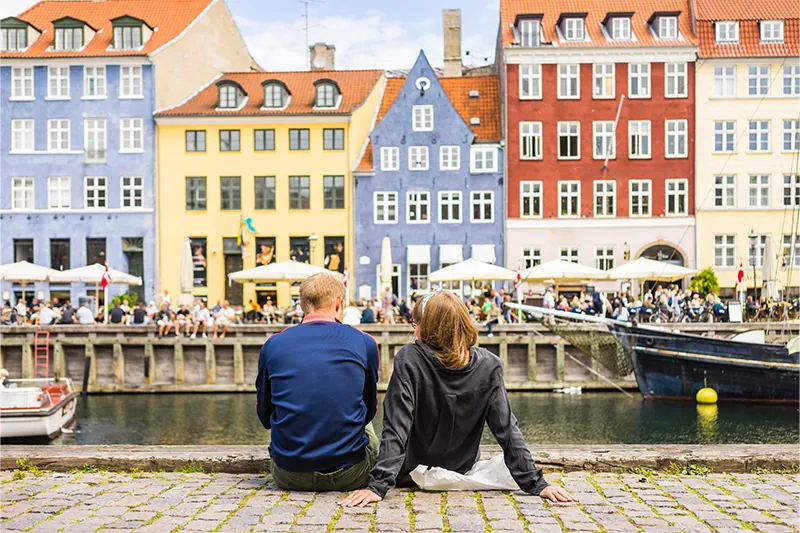
9. Tackle last-minute logistics.
A few weeks before your departure date is the right time to start taking care of a number of key logistics: money, phone, house-sitter, pet-sitter.
Call your credit card companies to let them know you’ll be traveling abroad. While you’re at it, find out if you’re going to be charged a fee for using your card overseas. Research the locations of ATMs in your destination, especially if you’ll be relying on cash.
Does your cell phone plan allow you to make calls overseas, and if so, how much will it cost you? Many cell phone companies offer temporary international plans that you can purchase for the month you’re traveling. You might also want to consider a mobile hotspot device to keep you connected.
5 Ways to Use Your Phone GPS Without Data
Packing for Europe requires both different items and a different mindset in comparison to some other types of trips. After all, there’s no arguing that Parisians are more stylish than your typical North American tourist. Most of central and western Europe have milder climates throughout the year, but that doesn’t mean you won’t encounter rain or a heatwave. You should pack clothing that’s easy to layer , and always include a packable raincoat or travel umbrella in your suitcase when traveling to Europe. Think about how you’ll be carrying your money —pickpocketing schemes are more common abroad, so it’s important to carry your money and personal belongings securely. When researching your European destination of choice, consider the overall climate and time of year you’ll be traveling. Then, about a week before your trip check out the forecast, mobilize a packing list , and ensure your suitcase is in working condition and meets your airline’s size restrictions.
Pro packing tip: If you’re tight on packing space, invest in a packing cube set . They do wonders, especially if you’re stopping in multiple destinations as they make repacking a breeze.
Editor’s note: This story was originally published in 2017. It has been updated to reflect the most current information. All of the products featured in this story were hand-selected by our travel editors. Some of the links featured in this story are affiliate links, and SmarterTravel may collect a commission (at no cost to you) if you shop through them. As an Amazon Associate, we earn from qualifying purchases.
You Might Also Like:
We hand-pick everything we recommend and select items through testing and reviews. Some products are sent to us free of charge with no incentive to offer a favorable review. We offer our unbiased opinions and do not accept compensation to review products. All items are in stock and prices are accurate at the time of publication. If you buy something through our links, we may earn a commission.
Top Fares From

Don't see a fare you like? View all flight deals from your city.
Today's top travel deals.
Brought to you by ShermansTravel
London Cruisetour
Norwegian Cruise Line

Ohio: Daily Car Rentals from Cincinnati

Shop and Save with Country Inns...
Patricia Magaña

Trending on SmarterTravel
Jetsetting Fools
Travel Far. Discover More. Spend Less.
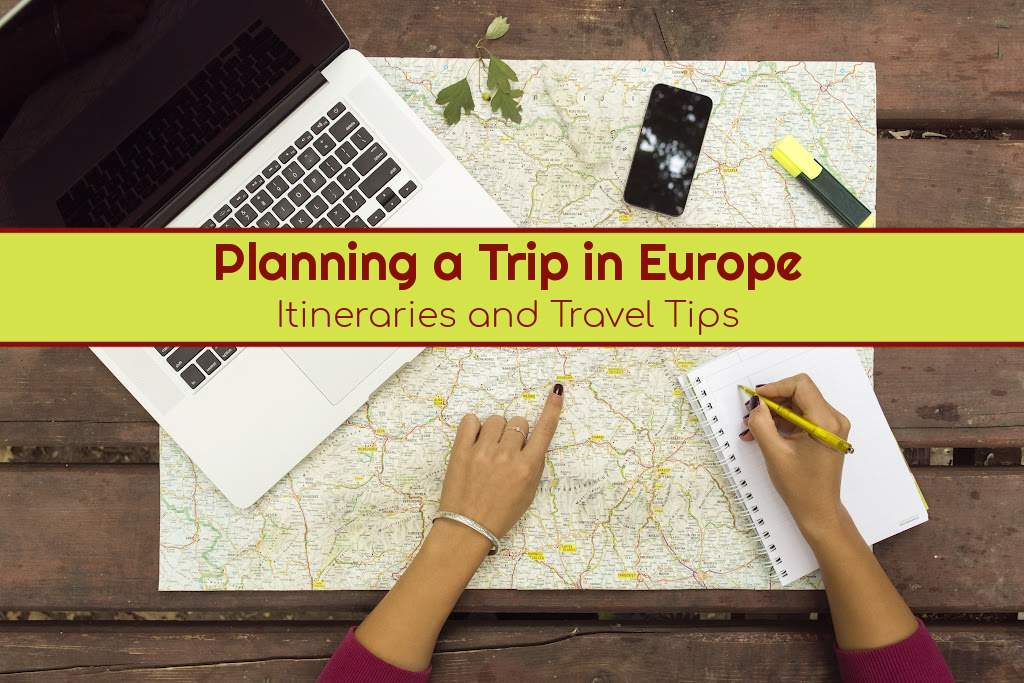
Planning a Trip in Europe: Top Itineraries and Travel Tips
Welcome to JetSetting Fools, here you will find our best travel tips for destinations worldwide. Some of the links on this site are Affiliate Links and if you use them to make a purchase, we may earn a commission. For more information, read our Disclosure Policy .
Planning a trip in Europe is exciting and fun…but organizing the details can make it feel like a monumental chore. Don’t let planning a trip around Europe overwhelm you! Whether it’s your first trip to Europe or the tenth time you have traveled abroad, our travel tips will streamline your Europe trip planning!
Planning a Trip in Europe
Making travel plans for Europe is a big task. Not only do travelers have to choose where to go and what to see, but they also need to consider how to get there, where to stay, how to get around and what to eat. Additionally, a trip through Europe requires tackling language barriers, balancing foreign currency and avoiding scams.
Travelers trying to figure out the best way to plan a trip to Europe can easily get bogged down in the process.
What is the Right Way for Planning a Europe Trip?
The good news is that there is no right or wrong way to plan a trip to Europe. The best way to travel Europe is in a way that fits your style, budget and purpose of the trip.
That said, there are a few oversights and common missteps that many travelers make when planning a trip to Europe. To help you better navigate the process, we are sharing our top tips for how to plan a European vacation so that you can have your best trip!
How To Plan a Trip in Europe

Planning a trip through Europe should be fun, not frustrating. Our Planning a Trip to Europe process shows the steps that we personally take while preparing to travel. Additionally, we outline sample Europe itineraries and divulge our top travel hacks for Europe.
Save, Pin or Bookmark our Travel to Europe Guide for planning your next getaway!
European Vacation Planning: Where To Go
The first step in how to plan a trip to Europe is choosing where to go – and it’s not an easy decision. Because of the relatively small size of the continent, Europe travel plans can include multiple cities and several countries. That said, it is exhausting to try to see everything. Believe me, I’ve tried!
Historic European cities, stunning seaside escapes and unbelievable charming towns dot the landscape, making it difficult to decide which places to include in your Europe itinerary.
In fact, choosing where to go is often the biggest hurdle in planning a Europe trip. Our tips will help give you inspiration and direction for how to plan European vacation destinations.
Plan European Vacation to One Destination
For many travelers, the best way to tour Europe is to visit one city – and one city only. It is certainly the easiest way of how to plan an overseas trip. Staying in one location for the duration of your visit requires less planning, which also can mean less stress.
Furthermore, devoting an entire trip to one destination allows you to explore it more deeply or relax completely, if that is the intent of your European vacation! Rather than skipping through Europe’s top cities and only seeing the highlights, travelers can discover hidden gems, get a real sense of the culture and take excursions to nearby sights.
Multi-City Europe Trip Planner
Most travelers going abroad will opt for planning a multi city Europe trip. Overseas flights are expensive and long – so you want to get the most out of a single trip.
There are hundreds – thousands – of different ways for how to plan a multi city trip in Europe. Before you pick your European destinations, however, we have pertinent advice that will help maximize your time and enjoyment.
Multi City or Multi Country Trip to Europe
With a common currency among many EU Nations and border-free crossings within the Schengen Area , traveling through Europe to multiple countries can be nearly seamless.
You can book a trip to Europe to see multiple cities within one country (like our One Week Spain Itinerary ) or plan a trip around Europe to cities in different countries (such as Two Weeks in London, Paris and Rome ).
The benefits of staying within one country is that (usually) you will only be tested by one foreign language and it’s a shorter distance to travel between destinations. And, just like visiting one city in Europe, staying within one country can give you a more immersive experience.
On the other hand, it is difficult to resist experiencing several cultures on a single trip to Europe. Again, the best way to plan a trip through Europe comes down to your style, interests and budget.
Understand that More Is Not Better
When you first start the process of how to plan a multi country trip to Europe, understand that more is not necessarily better. Traveling too quickly results in ‘checklist’ sightseeing. Including too many destinations in a trip to Europe can wear you down. Instead, limit the number of stops you include in your vacation plan so that you can truly enjoy each place.
Calculate Travel Time
If you take a multi city Europe trip, the time it takes to travel between destinations needs to be calculated in your overall plan. While Europe is compact, it can still take significant time to travel between locations. You don’t want to spend your entire vacation in transit!
Furthermore, before settling on specific locations, research options for how to get from one place to the next. Can you fly, take a train, hop on a bus? How long will it take? How much will it cost?
Pro Tips: Investigate how you could make the journey part of the experience. Find out if there is a scenic train route connecting your two European destinations or if there is a place of interest between the two cities that could be a fun stop or overnight stay. An overnight train sleeper car can be another great way to maximize your time.
Moving Multiple Times Can Take a Toll
While visiting multiple destinations can sound like an exciting way to experience Europe, it can be stressful constantly changing accommodations. Although the packing-checking out-transit-checking in-unpacking conundrum should not necessarily deter you from taking a trip in Europe to multiple cities, it is important to understand the toll it can take. It is also a good reason to expertly pack your luggage – and we have advice for how to do that later in the article.
Getting Off the Beaten Path Requires Effort
Europe is home to some of the most charming towns in the world…and many wouldn’t be so charming if they were easy to get to. While traveling out of the way places can be a highlight of any trip, consider the time required to reach far flung spots. If your travel plans do include off the beaten path destinations, just be prepared to make the effort to get to them.
Budget Your Planned Trip to Europe
We’ll cover the cost of a trip to Europe a bit later, but it’s of the utmost importance to keep your budget in mind when deciding where to include on your itinerary.
Some cities in Europe are notoriously expensive, while other destinations are considered ‘cheap’ places to go. While we believe it is possible to travel anywhere on a budget, those looking for an affordable European vacation will need to consider how much they want to spend when selecting which locations to visit.
For example, budget travelers might find it cost prohibitive to take a trip to London , Edinburgh and Dublin . Planning a trip to Lisbon and Porto or Poland and Hungary is often more affordable.
How Many Days and How Many Cities?
Deciding how many cities to visit – and how many days to spend in each – is a key element to planning your Europe trip. We believe most travelers need a minimum of 3 days in a city to thoroughly enjoy it. Of course, that is our rule of thumb and there are exceptions.
Travelers could easily spend several days in most big cities – and might be able to get away with spending just a day or two in smaller destinations. In France, for example, Paris visitors could stay for an entire week without seeing all the sights and visit Colmar in just two days’ time and see everything.
What it really boils down to is your desired pace of travel. We’ve been traveling to Europe for 30 years, and we moved much faster then than we do now!
One Week Trip to Europe: How Many Destinations?
Ideally, on a 1 week trip to Europe, travelers will stay in two destinations and take a day trip. However, it is also quite possible to stay in three different destinations, especially if they are close together and one is a smaller city.
7 Day Trip to Europe Formula
- 3 Days in City + 4 Days in City with a Day Trip
- 3 Days in City + 2 Days in Smaller City + 2 Days in City
Plan a Trip to Europe for 10 Days
With 10 days in Europe, travelers can squeeze in a few more stops. We feel it would be best to see three destinations – but possible to see four places with the right plan.
10 Day Europe Trip Formula
- 3 Days in City + 3 Days in City + 4 Days in City with a Day Trip
- 3 Days in City + 2 Days in Smaller City + 2 Days in Smaller City + 3 Days in City
Plan 2 Weeks in Europe
Many US travelers plan a 2 week European vacation. With 2 weeks in Europe, it is possible to stay in 4 different places. In fact, ambitious sightseers could stay in 5 destinations, but ideally these cities are in close proximity, well-connected and simple to navigate.
On the other hand, it might be better to slow things down and enjoy each stop more thoroughly by choosing 3 destinations.
2 Week Europe Trip Plan Formula
- 5/4/5 Days in 3 Different Locations
- 4/3/3/4 Days in 4 Places
Plan a Month Long Trip to Europe
Visitors who are planning a month trip to Europe will still want to carefully consider their route. Although lengthy trips allow for more destinations, long term travelers can experience burn out – trust us – so avoid packing your vacation with too many locations. Instead, settle into one spot and plan day trips.
One Month Europe Itinerary Formula
- 1 Week in 4 Different Cities
- 7/5/5/5/6 Days in Multiple Places
Trip Planner Europe: How to Plan your Itinerary

Now you hopefully have an idea of how many days to plan in each destination for a multi city trip to Europe, we have a few quick tips on the best way to plan a Europe itinerary.
When choosing your destinations, figure out how you will travel between them – and book in advance if possible. We recommend transiting between destinations in mid-morning. This provides enough time to eat breakfast and pack – and should allow for late afternoon exploration after you check-in at your next destination. Allow at least 3 days in your first destination; you will need time to adjust to the time zone and new surroundings.
While many European countries use the same currency and allow border free travel, not all do. Before choosing your destinations, find out if you will be required to go through immigration and what is required for your country of citizenship.
Sample Itineraries for a 2 Week Trip to Europe
Since choosing where to go is the exciting first step in European travel planning, we are sharing a few specific itineraries that might help you decide how to plan a trip to Europe for 2 weeks!
London, Paris, Rome

When it comes to deciding where to go on a first trip to Europe, many travelers stick with the three most visited cities: London, Paris and Rome . Well-connected and offering heaps of attractions, seeing three top European destinations on a single trip is understandably a popular choice!
Top Tip: For this Europe trip, we recommend spending 5 days in London , 5 days in Paris and 4 days in Rome .
Budapest, Vienna, Prague

Fascinating, historic and architecturally stunning, visiting Vienna, Prague and Budapest is an excellent trip plan! For this Europe itinerary, we recommend staying in Budapest for 5 days, Vienna for 4 days and Prague for 5 days. This would also allow for day trips to Bratislava, Cesky Krumlov and/or Dresden .
Pro Tip: European travelers eager to see more places could condense their route and add Krakow as a fourth destination!
Barcelona, Madrid, Porto, Lisbon

A Europe itinerary dedicated to exploring Spain and Portugal is a fabulous trip plan! How to plan a vacation in Europe to these two countries on the Iberian peninsula can be done a multitude of ways. We suggest spending 4 Days in Barcelona , 3 days in Madrid , followed by 3 days in Porto and the final 4 days in Lisbon .
Top Tip: Drop one day from each of the above and spend 4 days on Madeira Island, Portugal !
Berlin, Dusseldorf, Frankfurt, Munich

Germany is a classic example of how to plan a trip around Europe within one country. What we love about Germany is that the cities are steeped in history and traditions, yet each one is truly unique. Our ideal Germany itinerary would include staying in Berlin for 4 days, seeing Dusseldorf in 3 days, exploring Frankfurt for 3 days and ending with 4 days in Munich .
Alternatively, make room for a day or two in Wurzburg or Nuremberg when traveling from Frankfurt to Munich. We visited these two cities on an Amsterdam to Budapest Cruise and they were two of our favorite places along the entire route!
London, Amsterdam, Brussels, Bruges, Paris
A wonderful way of planning a trip to Europe for 2 weeks includes both major cities and charming towns – and it’s possible with a London, Amsterdam, Brussels, Bruges, Paris trip plan.
Start with 3 days in London , then spend 3 days in Amsterdam (with a day trip to Haarlem ), followed by 2 days in Brussels (or Ghent) and 2 days in Bruges – then end with 3 days in Paris .
Paris, Strasbourg, Colmar, Basel, Zurich

Another example of how to plan a two week trip in Europe visiting cities large and small in multiple countries is a combined France and Switzerland vacation. With the right itinerary, you can visit Paris, Strasbourg, Colmar, Basel and Zurich!
On this trip, visit Paris in 4 days, Strasbourg in 3 days, Colmar in 2 Days, Basel in 2 days and Zurich in 3 days.
Dubrovnik, Hvar, Split, Zagreb

Croatia is a fascinating and beautiful country to visit – and one of our favorite places in the world. In fact, the region offers so much, spending 14 days here is quite possibly not enough!
To plan a 2 week trip to Croatia , you could start in Dubrovnik for 4 days and take a day trip to Kotor , Montenegro. Next, stay in Hvar Town or Stari Grad on Hvar Island for 2 days enjoying the sun and sea before taking a ferry to Split .
Then plan to stay in Split for 5 days – allowing plenty of time for a day trip to Mostar and additional Croatian Island Exploration . Next, travel from Split to the famous Plitvice Lakes National Park for 1 night and spend the last 2 nights in lovely Zagreb .
Pro Tip: Read more advice in our Guide on How To Plan a Trip to Croatia and get additional details for a 1 Week Croatia Itinerary .
Plan Trip to Europe: What Type of Vacation?

Before we dig even deeper into the details of how to plan a Europe trip, you will want to decide what kind of vacation you want. Are you interested in popular sights or local experiences? History and art? Architecture and culture? Active excursions or beaches and parties?
The answers to these questions may dictate when and where you choose to go in Europe. If you want a fast-paced itinerary with loads of sightseeing, big cities are likely the best choice. If a leisurely trip is more your style, smaller cities and resort towns might be a better fit.
Personally, we like a bit of everything. We schedule some days of seeing the major sights and others for immersing ourselves in the local culture. We’ll go on long walking tours or hikes and then plan time for sampling the cuisine.
If you are taking a solo trip to Europe, planning what to do is fairly simple – as it is all up to you! However, if you are planning a family trip to Europe, a group vacation with friends or designing a once-in-a-lifetime honeymoon in Europe, you will want to make sure you are planning activities that suit everyone going on the trip.
Be sure to include kid-friendly activities for a family vacation, seek out optional ideas for group trips and plan special experiences for your romantic getaway to Europe.
Book a Trip to Europe: With or Without Guide
As you consider the best way to travel through Europe, determine if you want to plan on your own or have a guide lead the way.
Throughout this travel guide to Europe Trip Planning, we are sharing steps to travel independently – but we do want to mention a few benefits of hiring a guide instead.
Traveling on a guided trip is quite a bit more expensive, but it alleviates the stress and hassle of making plans and decisions on your own. Rather than worrying about where to go next and how you will get there, you get to sit back, relax and enjoy your hard earned vacation.
How To Plan a European Trip that is Partially Guided
Travelers can opt to join a complete tour of Europe – or plan part of their vacation on their own and join a guided tour for the rest. For example, plan your own time in London and Edinburgh , then head to the Scottish Highlands and take a multiday tour . Likewise, plan your own trip to Athens , then set off to see other parts of Greece on a 4-day guided tour before catching a ferry to the Greek Islands .

Travel Plan for Europe: Getting There

After choosing your destinations, the next step in how to plan a Europe trip is determining how to get there. There is no question that the best way to travel to Europe affordably and quickly is by flying. Before you book your round trip flight to Europe, we have tips that will save you money and time!
Round Trip to Europe
Typically, round trip tickets to Europe depart and arrive from the same airport. The problem with these traditional round trip tickets is that they limit your flexibility and creativity. In the case of visiting multiple cities and countries, travelers will need to spend precious time backtracking to their European gateway city.
One Way Flights
Purchasing one way tickets to and from Europe can solve that problem. Travelers who opt to buy one way tickets will need to figure out how to travel within Europe (and we have a few tips on that next!).
The downside is that one way trips are usually outrageously expensive, sometimes nearly as much as the round trip route. However, that is not always true, so pricing out the different options well in advance is always the best idea.
Open Jaw Flight Tickets
Open Jaw Tickets are a type of ticket that not all travelers don’t know about – and it is our favorite way to save time and money. How Open Jaw Tickets work is just like buying two one-way flights, but they are purchased together on the same ticket, so it’s usually much cheaper.
When searching for Open Jaw Tickets using an airfare search engine, like Skyscanner , select the Multi City option to find the best routes and prices.
Multi City Flights in Europe
Travelers can opt to add additional segments in the Multi City search option. However, we strongly recommend pricing out the options (and considering other methods of transit between European cities) before booking 3 or more multi city flights on the same ticket. Research is always key when planning a European trip!
Finding the Best Fares
One of the biggest concerns when it comes to how to plan a vacation to Europe, is the cost of the flight – and rightly so. Plane tickets to Europe are at an all time high!
We think it is best to price out different flights by numerous carriers to several destinations before booking a ticket. You can also use all our insider tips on How to Find Cheap Flights to make sure you are getting the best deal!
Surviving the Long Flight to Europe
From the US, the plane trip to Europe is a typically a long, overnight flight. You want to be as comfortable as possible to start your Euro trip off on the right foot. From what to bring on the plane with you to what to wear for the flight, we share our honest advice in our article, Long Haul Flight Tips .

How To Travel Europe: Best Way to Get Around

When you plan a vacation to Europe, one thing to also consider is how to travel in Europe. There is not just one ‘best way to travel in Europe.’ There are several factors to consider – like time, budget, comfort and overall experience.
Transit between Destinations
One of the great things about Europe is that there are several ways to get between cities and most journeys take just a few hours. Travelers can choose to fly, take a train or ferry, use a bus or rent a car.
Flights in Europe
Flying between cities is an easy way to get around Europe. If flying within the Schengen Area, travelers will not go through customs and immigration. Most flights are short and tend to be on schedule.
European low cost carriers – like Ryanair, Easy Jet, Vueling and Wizz Air – offer inexpensive and direct flights from major cities to top vacation spots. They do, however, charge a bundle for baggage (even carry-on) and seat assignments, so plan accordingly or prepare to pay a lot more than the low base fare.
Train Trip Europe
For many thinking about how to travel around Europe, trains are what come to mind. It can be an excellent way to get around the continent.
Often, we prefer train travel to flying in Europe – as it can be less time consuming. Train stations tend to be in the city center and there is no need to be there 2 hours before departure. Plus, there is no extra fee for bags and the seats are usually more comfortable!
Because there are fast trains, slow trains and scenic trains, you will need to check a specific route to determine if traveling by train in Europe is the best option. Those opting for train travel throughout their trip should price out the benefits of purchasing a Eurail Pass .
Travel by Bus
Traveling by bus in Europe can be a simple and economical way to get from one destination to the next – especially for places that are close in proximity.
While not as fast as flying or as comfortable as train travel, it is often the most affordable method of getting from one destination in Europe to another.
FlixBus is our preferred company – as they offer exceptionally low early-bird fares between major cities. Plus, their buses tend to be newer, comfortable, clean and usually have a toilet (and free WiFi) on board.
Car Rental in Europe
Although we prefer to travel car-free in Europe, renting a car is a popular way to plan a Europe trip – especially if traveling to smaller towns or through picturesque regions. Those who plan a road trip in Europe will have the freedom to get off the beaten path and move at their own pace.
The downside to having a car is that parking can be problematic in many European towns, tolls can add up and travel times are often longer than anticipated. If you plan to drive in Europe, you may also need to get an International Driving Permit.
How To Get Around European Cities Using Public Transit

Most cities in Europe offer an impressive public transportation network – from underground subways to city buses to electric trams. Even better, it is usually at a fairly affordable price.
Tickets vary by location, of course. Sometimes single tickets are purchased on board, while other systems require pre-loaded transit cards. Unlimited travel passes and European tourist cards might save money on transportation, too. Many transit systems in Europe now accept payment with contactless credit cards, as well.
If you plan on using public transit (and we highly recommend that you do), research how to buy tickets in advance for the places you are visiting. There’s typically a Tourist Information Desk at your arrival airport/station, too.

How To Decide Where To Stay in Europe

Determining where to stay is a big part of how to plan your Europe trip. Travelers can choose from a range of accommodations – from hotels to hostels to vacation apartments.
Hotels in Europe
Nearly all hotel chains are represented in major cities across Europe – so if you are loyal to a particular brand, you will likely find it at your destination. However, chain hotels do tend to be outside of the city center, near airports or in business districts and they typically lack European charm.
We recommend seeking out smaller, independent hotels that offer a unique experience. It’s an added bonus if they have a typical breakfast included in the price. Also keep in mind that hotel rooms in Europe tend to be smaller than most US hotel rooms. Bathrooms can be especially cramped, but it’s all part of the experience!
Our tips for Finding the Best Hotels at the Best Prices can help you find one that is right for your trip to Europe.
European Hostels
With the right mindset, staying in hostels can be a very fun experience. Much more popular in Europe than in the United States, hostels are an excellent place to meet people. For solo travelers to Europe, Hostels also keep your budget in check.
Most hostels now offer a wide choice of room types. Guests can choose to stay in bunkbed dorm rooms, a private room with a shared bathroom or a private room with ensuite bathroom.
Airbnb in Europe
For many years we have used Airbnb as our go-to resource for accommodations in Europe and around the world. What we love about staying in vacation rentals is that they usually offer more space than hotel rooms, a kitchen where we can prepare simple meals and a washer for doing laundry.
On shorter stops – when we are staying for 3 days or less – Airbnb is not always the best choice. Not only can the fees dramatically increase the price-per-night, but the extra amenities are unnecessary and getting an early check-in is unlikely.
International Housesitting
House and Pet Sitting can be another way to find European accommodations. As International Housesitters , we have stayed in top cities in Europe for free! There is, of course, a big responsibility that comes with watching someone’s house and pet while they are away and it is not typically suited to the vacation traveler. However, if you are interested in Long Term Petsitting , it could be a great fit for you, it is for us!
Tips for Where To Stay in Europe
Choosing what type of accommodation is just one facet of planning where to stay. We have some advice to help you pick a desirable area to stay in. These are things we do every time we travel to Europe, or anywhere for that matter!
Research the Neighborhood
Picking the best place to stay in a big city in an enormous task – so do a little neighborhood research to help you narrow down where you want to be.
For example, if you are looking at accommodations in an area with an extraordinary high number of bars, it could be a fun place for nightlife…but it could also be incredibly noisy at night. On the other hand, if you find a great deal on a hotel in the business district over the weekend, it could be because the area is vacant outside of the work week.
Stay near the Sights
When visiting someplace for just a few days, we think it’s a good idea to stay close to the sights you are most interested in seeing. In fact, we feel it is best to be within walking distance to the places you want to see most.
Find Accommodations near Public Transit
In big cities, staying near a public transportation line is key. Not only will you be able to quickly route your way to top sights and fun districts, but you will likely have better access to and from the airport, train station or bus station when you arrive and depart.
Book in Advance
Typically, the top places at great prices get snapped up in a hurry – especially in the summer. The earlier you start looking, the more likely you will find the best accommodations for your Europe trip!
Choosing When To Go to Europe

When you go to Europe – as in what time of year – can have a big impact on how to plan your trip. There are pros and cons to traveling to Europe in every season. Knowing what to expect may help you decide when to go, and when not to go.
Summer Trip to Europe

Summer is the most popular time for travelers to visit Europe. The warmer weather and longer days are ideal for sightseeing, exploring and dining outdoors.
However, traveling to Europe in the summer means thick crowds, long lines and more expensive accommodations and transportation. It can also mean little to no air conditioning and ice is used far more sparsely.
If traveling to Europe in the summer months, it is imperative to book flights, transport and lodging in advance.
Europe in the Fall

Autumn is an ideal time to travel to Europe. The days tend to still be warm and sunny, but the crowds have thinned. Even in seasonal locales (like Croatia ), most places are still open. That said, traveling to Europe in the fall is becoming increasingly more popular every year – prices can still be near the peak, so still plan well ahead.
Winter in Europe

Winters can be cold, but there are several magical reasons to go. Of course, we mean the amazing European Christmas Markets !
Still, Europe can be somewhat of a mixed bag in winter; cities with popular holiday markets actually see an increase in tourism, while popular summer destinations are all but completely shut down.
Overall, winter can still be a great time to travel to Europe. Travelers from North America are choosing more and more to visit countries like Italy , Portugal and Spain in winter. Even our trip to Iceland in Winter was spectacular – and the chilly temperatures in Berlin didn’t keep us from exploring the sights. Plus, during January and February, prices are at their lowest – which is fantastic for budget travelers.
Going to Europe in Springtime

Spring in Europe can bring largely unpredictable weather, but it can still be a wonderful time to go. Cherry Blossoms in France , Tulips in the Netherlands and Poppies in Tuscany are all in bloom and there’s a sense of a renewed spirit for the upcoming season.
Overall, costs are usually still low, having not yet reached the height of summer pricing and there are minimal crowds. Just bring an umbrella and raincoat !
Trip to Europe Cost

One of the most common questions asked about planning travel overseas is “How much does a trip to Europe cost?” Generally speaking, your flight and accommodations will account for the biggest portion of your Europe trip cost.
Where you travel to and the season you travel in will also have a big impact on your overall Europe trip budget. However, you can easily spend a bundle on dining out, drinks and activities, too.
How Much is a Trip to Europe?
Those wanting to know how to budget for travel in Europe need to consider all expenditures of the trip. We break down the costs into the following categories: Flights, transportation, accommodations, activities, meals, and souvenirs.
For an example of what a 2-week trip to Europe in the summer might cost (per person), we are providing some figures (in USD) based on 2024 research.
- Flight: $750
- Local Transport: $200
- Accommodations: $2000 (less if sharing/hostel dorm)
- Activities: $450
- Meals & Drinks: $1500
- Souvenirs: $100
- TOTAL: $5000
Tips for How To Plan a Europe Trip on a Budget
Don’t panic! In our experience, if you do the research, price out your options, plan ahead and make conscious decisions about your spending, you can plan a budget trip to Europe well below those numbers above.
When planning a trip to Europe on a budget, it’s also important to remember that the cheapest is not necessarily the best option. The cheapest flight might look like a great deal, but not if there are multiple connections, long layovers or inconvenient times. Likewise, the cheapest hotel might be appealing, but not if it’s uncomfortable or at an inconvenient location.
Planning an affordable trip to Europe does not mean missing out! In fact, travelers will likely find that some of the very best things to do in Europe are free. Gathering picnic fare from a local market and eating it with a view of the Eiffel Tower can be more memorable than a restaurant meal. Discovering a destination on your own self-guided walk might be more enjoyable than paying for a tour.
Backpackers Trip to Europe
For many considering how to travel Europe on a budget envision taking the backpacker route. Staying in hostels, eating spaghetti every night, and drinking cheap lager are signatures of a classic European backpacker trip. For many young travelers – it’s a fantastic way to experience Europe!
Just bear in mind that planning a cheap trip to Europe does not necessarily mean that you have to stay in hostel dorm rooms or eat all of your meals in. Do research and find a balance that will fit your budget!
Preparation for a European Vacation

While it is easy to get caught up in the excitement of deciding where to go and what to see, a little preparation is required for planning a European vacation that will be truly enjoyable.
Passport and Visa
For US citizens, a passport is required to enter all countries in Europe. If you do not currently have a passport, get one as soon as possible and consider paying the expedited fee if your trip is soon approaching.
Before you pay for flights and book accommodations, check the expiration date of your passport, which needs to be valid for at least 3 months after the end of your European trip.
Currently there are no visa requirements for US travelers to Europe. However, starting in 2025, US travelers will need to obtain a ETIAS travel authorization to enter European countries within the Schengen Zone. The application process includes completing an online form and paying a fee of 7 euros.
For the most current European entry requirements, immigration details and customs information, always check your home country’s state department website before making any travel plans.
The Need To Knows of Traveling to Europe
Part of making travel plans to Europe or any other international destination is educating yourself about the local currency and language. We are sharing a few tips that work for us!
European Currency and Exchange Rate
Before setting off on your journey to Europe, make sure you know what currency is used in the countries you plan on visiting. Also check the current exchange rates – and then do a little math so that you have a rough idea of how much things should cost.
The Euro is the form of currency used by many European nations – but not all. In the United Kingdom, it’s GBP, commonly called the Pound and in Switzerland they use the Franc – and those are just two common examples.
Pro Tip: Prices in non-euro countries are sometimes quoted in euros and they may even accept euros, but it’s always better to pay in the local currency.
Exchanging Cash, ATMs and Credit Cards
To obtain the local currency in Europe, we recommend taking cash out of an official Bank ATM (not EuroNet or any other non-bank ATM machine). Check with your own bank about fees associated with withdrawing cash from a foreign ATM and if they want notification of your travel plans.
Possibly consider exchanging a small amount of money ($100 or less) at your own bank before you leave for your trip. They may offer a decent exchange rate – and this way you will have a little money when you arrive and can avoid using high-priced airport ATMs.
In most cases, the best way to pay for things during your trip is with a credit card. In fact, a lot of Europe is largely cashless now. We use this Chase Sapphire Card – which is excellent for world travelers! Not only do they waive foreign transaction fees and offer consistently good rates, you also earn extra points when using the card to book travel!
European Languages
Visiting a foreign country can be intimidating if you don’t speak the local language – but there are ways you can confidently travel without being fluent in a second language.
First, learn a few basic words. Hello, goodbye, please and thank you are a good place to start. Some additional phrases that are good to know in the local language are: Do you speak English? How much is it? Can you help me? Also, keep in mind that smiles are universal and can go a long way!
English is widely spoken in Europe – especially by those in the travel industry. However, it’s a good idea to pick up a phrase book before you go!
Understand the Schengen Zone
We have referred to the Schengen Zone (or Schengen Area) a few times throughout this guide – but what exactly is it?
In Europe, more than 20 countries have banded together to create the Schengen Area. The zone allows travelers to Europe to cross borders from one Schengen country to another without going through immigration and customs. Travel between Schengen countries is typically as seamless as traveling from one state to the next in the US.
There are a maximum number of days travelers can stay within the Schengen Zone; but tourists from many countries (including US citizens) can stay 90 days within a 180 day period.
Notable European countries that are not in the Schengen Area are the United Kingdom , Ireland , Turkey, Bosnia Herzegovina and Montenegro .
Final Travel Tips for a Trip to Europe
We have covered the major aspects of how to plan a trip across Europe, but there are some general travel tips that will help you have your best Europe trip!

Euro Trip Organization
There are a lot of things to think about – especially if you are deciding how to plan your first trip to Europe. Staying organized is key. We make it easy to keep track of all the details with our Travel Planning Printables !

Plan Down Time
One downfall of many Europe trip plans is not allowing for some down time. It is all too tempting to fill every single minute of your Europe trip itinerary with sights, attractions and activities. We highly recommend leaving some space for relaxation. Plan to spend time sitting at a café on a square or wandering through a park.
Research Local Culture
Once you choose your destinations, spend a few hours researching not just sights to see, but the local culture. Understanding a little more about the people that live in the place you are visiting will make your trip more meaningful.
Plus, you may learn about local intricacies (like that some shops in Italy close mid-afternoon for lunch or that in Barcelona they eat dinner very late) – and then you can adjust your Euro trip plan accordingly.
Starting a trip with jet lag is no fun! If you’re traveling to Europe from the US, the time change will be anywhere from 5 to 11 hours later. Travelers can do their best to avoid jet lag by adjusting sleep patterns prior to the trip, staying hydrated and trying to sleep on the plane ( ear plugs and an eye patch can help).
However, if you are feeling the drag of jet lag when you arrive, have a plan to conquer it. Do your best to stay active during day light hours and try to acclimate to the new sleeping schedule as quickly as possible. Limit alcohol and caffeine and see if taking melatonin, No Jet Lag , or other meds prescribed by your doctor is right for you.
European City Passes
When sightseeing on a short trip to a city, we love to take advantage of money saving passes. We usually opt for the multiple day, all-sights-included passes – and it is even better if the card provides skip-the-line access and public transportation.
Before buying a pass, however, review what sights are included and if there are any special requirements for use. Compare different passes to find one that will be most useful and cost efficient. We prefer to search on Viator to find tourist passes in European cities.
We are fiercely independent travelers, but we do enjoy joining excursions – like free walking tours and affordable food groups – on occasion. On a guided tour, participants can get a local perspective, insider tips and meet fellow travelers in Europe!
Hop On Hop Off Buses
There’s much debate about these massive, double-decker, open air tourist buses, but we have found them occasionally useful for getting quickly acquainted with a new destination. They can also be helpful in traveling to the top tourist spots in a short period of time and the onboard commentary, while corny, is insightful.
Look Beyond Tourist Sights
Seeing the top tourist sights when visiting Europe is essential – but, if time permits, seek out attractions beyond the typical track. For example, theater tickets in some destinations are incredibly cheap. Check to see what is playing and you might be able to catch a great production inside an epic theater!
Finding a local farmers or flee market can be insightful and fascinating. Likewise, you can learn a lot by just sitting at a corner cafe in a typical neighborhood and observing the life of the community.
Always Carry Small Change…and Tissues
In many European cities, public toilets are few and far between. Those that do have public restrooms often charge – usually about .50c to 1 Euro. Sometimes you can pay with a credit card, otherwise you’ll need to feed the coins into a machine or pay an attendant directly. Regardless, it’s always a good idea to carry small change for bathrooms – and carry tissues just in case there is no toilet paper!
Tipping in Europe
The tipping etiquette in Europe is very different than in the United States. For sit down meals with good service, tipping 10% is considered a decent tip. Before adding at tip, check the bill to see if a service charge has already been included. If you wish to tip, you may have to ask to have the amount added on before tapping your credit card.
At a café where you only have a coffee or glass of wine, you can just leave the small change. If there wasn’t any, or you paid with card, don’t worry about it. Tipping guides and hotel staff is considered nice – especially if they did an excellent job. Consider leaving 5 to 10 Euros per person, depending on the situation.
Luggage Storage
In order to make the most of your time at each destination, it may be necessary on your travel days to store your luggage. Depending on where you stay, you may be able to store luggage at your accommodations – so always ask. Otherwise, there is usually luggage storage at train stations and you can also use luggage apps (like Nanny Bag or Luggage Hero).
Be Aware of Common Scams
Unaware tourists are prime targets for pickpockets and scammers. In our travels, we have been approached with the Ring Scam, the Bracelet Scam, the Petition Scam, the Cup and Ball Scam and the Distraction Scam – just to note a few! Before your Europe trip, do a quick search of common scams so that you can identify one immediately.
While traveling in Europe is generally safe, pickpockets are common. Keep wallets, phones and cameras zipped up in your day bag and out of reach of sticky-fingered thieves.
Most People are Nice
While there are plenty of scammers in cities around the world, there are also an incredible number of kind people – and you will hopefully meet many of them on your Europe trip! If you don’t understand something, don’t panic. Speak slowly, clearly and politely.
Trying to figure out the nuances and how things work in another country can feel overwhelming. Remember to be patient – with yourself and everyone else. Not everything will go exactly as planned. Be prepared for things to go awry and roll with it, you are on vacation after all!
European Trip Insurance
While it’s unlikely something major will go wrong on your trip in Europe, but if it does, travel insurance may help. Not only can it reimburse for cancelled flights and lost luggage , but could assist if you get sick or injured abroad. Check the affordable plans and coverage with a trusted travel insurance provider – we use World Nomads .
What To Pack for Europe

Deciding what to pack for trip to Europe can be a real conundrum. In addition to choosing what clothes, travelers will need a few specific accessories for a trip abroad. We’ll share some advice about what to pack for a trip to Europe, but you can find our complete Packing List along with other Packing Hacks on our dedicated Travel Packing page.
Best Luggage for a Trip in Europe
We prefer carrying backpacks instead of roller suitcases. Dragging a rollaboard over uneven streets and up flights of stairs is never fun, and there are loads of cobblestones and very view elevators in Europe! Read more in our breakdown of the Suitcase vs Backpack debate.
Packing Cubes
Packing cubes make traveling so much easier! When planning a trip to Europe to multiple cities, you will be packing and unpacking several times. Find out why Packing Cubes are our little traveling all-stars.
Passport Document Holder and Digital Copies
International travel requires additional documents – and keeping those precious items organized and easy to reach is essential. We keep everything neat and accessible in a zippered document holder .
Making digital copies of your most important documents, as well as your travel confirmations, is always a good idea. In fact, we store a backup on a flash drive and in the cloud!
There is no doubt that an universal adapter needs to be on your list of what to bring to Europe. Most of Europe uses a 2-prong outlet, but in the UK and Ireland, the outlets are a flat 3-prong style.
Portable Charger
Google Maps, Apple Pay, QR codes and paperless tickets make exploring Europe easier than ever…but it also can drain your phone battery fast. Bring a reliable portable charger to top up your devices during long days of sightseeing.
We know, it’s a vacation, but you will need connectivity when traveling in Europe. For far too long we tried to get by with public Wi-Fi networks – and it was both unsecure and frustrating. Instead, we now use a GlocalMe WiFi Hotspot . We can connect multiple devices and buy inexpensive plans online so no SIM card required. If your phone is locked, read about the other Benefits of Traveling with Pocket WiFi .
Walking Shoes
We absolutely love walking in Europe! Exploring atmospheric streets and lush landscapes requires a good pair of durable shoes. We have three basic requirements for the best travel shoes – they must me lightweight, comfortable and versatile. I wear sneakers that go with everything, Kris prefers Merrell Trail Shoes .
Travel Camera
Europe is incredibly photogenic and you will want to capture the sights with a real camera . We carry a DSLR Canon Rebel , as it takes high quality photos and is great for all conditions. Use our tips to help you decide what camera to bring on your trip to Europe .
Water Bottle
While it may taste different than at home, the water is safe to drink nearly everywhere in Europe. Be sure to bring a refillable bottle, like these collapsible bottles that are great for travelers.
Hand Sanitizer and Wipes
Don’t forget hand sanitizer and personal wipes for your travels to Europe. You will be in contact with numerous high-touch surfaces and will want to stay healthy for your trip !
Make sure to bring a day bag for exploring Europe. We typically carry small backpacks – as they are perfect for stowing our essentials. Travelers going to crowded cities might also want to wear a money belt (or bra stash) to keep your valuables concealed.
Start planning your vacation to Europe ! Search for the lowest airfares , the best accommodations and fun things to do …then start packing ! Want more travel advice? Head over to our Travel Planning Page for more tips on traveling – and for country-specific information, take a look at our Travel Guides Page !
We Want To Know: What are your top tips in preparing for a trip to Europe this year? Share with us in the comments!

Pin it! See all of our travel pins on our JetSetting Fools Pinterest Board .

Share This Story!
- Click to share on Pinterest (Opens in new window)
- Click to share on Facebook (Opens in new window)
- Click to share on Twitter (Opens in new window)
- Click to share on LinkedIn (Opens in new window)
10 things you need to know before your first trip to Europe

Update : Some offers mentioned below are no longer available. View the current offers here .
Update: The Wells Fargo Propel American Express® card is no longer open to new applications. View the current offers here.
Some of us first go to Europe as study-abroad students, but many of us never make it across the Atlantic until later in life. I was one of those latecomers, arriving in Europe for the first time in my late 20s.
I've been dozens of times since then, but no matter how often you explore Europe, or whether you do it alone, as a couple, with friends or with your family , the first time is always the most exciting and memorable. Europe can be overwhelming, but figuring out how to make the most of your trip is not impossible. These tips will help ensure your first trip to Europe goes smoothly — and that you'll go back again.
Related: The best ways to get to Europe using points and miles

Pick which city to fly into by comparing costs
Europe is small compared to the U.S. and it's easy to land in one country and go visit others by train or cheap, short flights. Pick a region of continental Europe -- western, central, eastern -- or the U.K., and then choose your destination city because flights there are the cheapest. Be careful, however, of low-cost carriers which charge for extras like bags, seat choice and water.
Airlines flying to certain cities like Dublin or Kraków, which is one of TPG's 20 hottest travel destinations of 2020 ), are known for having low fares, or offering tickets for very few miles or points. But be careful -- some airlines, like British Airways and Virgin Atlantic, may not charge a lot of miles to get to London but often charge astronomical taxes and fuel surcharges, so be sure to check all airlines for the best deal. And watch for award-redemption deals. Business-class flights on American Airlines to Europe were pricing out at 84,000 AAdvantage miles round-trip just this week. Tips and tricks abound for how to take advantage of these deals.
Related: How vacationing too long in Greece almost got me banned from Europe

You can't do everything
One of the most common mistakes that first-time visitors to Europe make is trying to cram in too much. Unless you've got several months (or years), you won't be able to see every recommended museum, historic building, neighborhood, city or country. Instead of trying to check off multiple places in one week, focus on one or two cities that you can experience more thoroughly and allow time to get off the beaten tourist track occasionally.
In some of the larger cities, you won't even be able to see all the museums and attractions in one go. After all, a thorough visit to the Louvre in Paris can take a half-day or longer. Better to fully enjoy it than try to hit everything else there is to see in the City of Light in one trip. In Europe, there are just too many "must-sees." I recommend at least three nights in larger cities and one to two in smaller cities and towns. Also, building in one day of relaxation per week will make your trip more enjoyable.

Take the train
Although some of the low-cost carriers like Ryanair and EasyJet offer tempting ultra-cheap airfares within Europe, taking the train is often the better option. No need to deal with extra security time, zero legroom or tons of hidden fees that add up fast. Plus, it's hard to deny the romance and epic scenery of train travel in Europe.
If you're staying within one country, take the local trains for high-quality service and some of the best trains in the world. If you're visiting multiple countries, the Eurail Pass has you covered. The Eurail Pass provides access to 31 countries and roughly 40,000 destinations. Use its recently launched Rail Planner mobile app (which also works offline) to check train schedules, book reservations and plan trips on the fly or in advance. Travelers can see their whole route as a day-by-day itinerary and routes can also be tracked on the map.
An added bonus is that Eurail passholders get dozens of additional discounts and benefits in each country at places like hotels, restaurants, attractions and museums, and for local transportation.

Related: How to plan a train trip around Europe
Don't forget to build in travel time
Although Europe is small and many cities are surprisingly close to each other (London to Paris is 2.5 hours by train; Rome to Florence and Brussels to Amsterdam are each about three hours), many people forget to build in this travel time into their packed itineraries. Even on short flights (less than an hour), you need time for security and dealing with baggage.

Walk and use public transit
Most European cities are extremely pedestrian-friendly and walking is often the best way to experience them. You can meander down alleys and narrow cobblestone streets, stopping at charming cafes and small ateliers you might never have discovered otherwise. Although it may seem easy to take a taxi, sometimes it can be hard to decipher local taxi laws and tourists can be targeted by illegal cab drivers. If it's too far to walk, look into local public transit like subways, trains and buses which are often easier to figure out than you may think — and super cheap. Plus, there's no better way to feel like a local.
Get a credit card with no foreign transaction fees
Make sure you have a credit card that doesn't charge foreign transaction fees. If vendors ask whether to charge you in the local currency or U.S. dollars, always choose local currency and let your bank do the conversion to dollars. Most vendors in major cities accept credit cards but it's always a good idea to carry some local currency.
Here's a quick list of some of TPG's favorite cards without foreign transaction fees:
- Chase Sapphire Preferred Card
- Capital One Venture Rewards Credit Card
- Chase Sapphire Reserve
- Wells Fargo Propel American Express® card
- The Platinum Card® from American Express (see rates & fees)
- Capital One Savor Rewards Credit Card
- Bank of America® Premium Rewards® credit card
- American Express® Green Card (see rates & fees)
- United Explorer Card
- Hilton Honors American Express Aspire Card (see rates & fees)
- Marriott Bonvoy Boundless Credit Card
The information for the Capital One Savor Cash Rewards Credit Card, Amex Green Card, and Hilton Aspire Amex card has been collected independently by The Points Guy. The card details on this page have not been reviewed or provided by the card issuer.
Check museum hours and buy tickets in advance
Some of Europe's most popular attractions are closed on certain days of the week — and not the days you assume (like Mondays). Check museum hours carefully and plan accordingly. It's a good idea to buy tickets for popular museums and attractions online in advance, especially in cities like Paris, because times may be sold out or there may be long lines to get in without an advance ticket. City Passes may be worth it if you've got several pricey attractions on your list.
Costco sells discounted passes for many city attractions. For example, a four-day London Pass with hop-on, hop-off bus access costs $125.99 per adult. The official London Pass website doesn't sell a four-day ticket but a three-day pass costs $142.99 per adult, so Costco's offering is definitely a deal.
Related: Does the Costco Anywhere Visa deserve a spot in your wallet?
Don't eat the bread — Unless you want to pay for it
It's common in many cities for waiters to set down a bread basket at the start of a meal but you may be charged if you eat it. The same is true for water — bottled water, which does cost money, is typical at most restaurants and you may get a strange look if you ask for tap water.
Claim your VAT refund
An easy way to save money if you do any shopping is to claim your Value Added Tax (VAT) refund at the airport before you leave. Ask cashiers for the forms when you make a large purchase and follow the signs for VAT refund at the airport.

Be open-minded
Be open to experiencing local foods, customs and language. Europe can sometimes feel like the United States, but it's not. Things are different there, which is part of its charm.
For rates and fees of the Amex Platinum card, click here. For rates and fees of the Amex Green card, click here. For rates and fees of the Hilton Aspire card, click here.

Love to read? Prefer the movie or TV series? Either way, see how your next binge can make a difference.
100+ Things Every American Should Know Before Visiting Europe for the First Time

In this Article

If you’re one of the 12 million Americans visiting Europe this year, this detailed list will help you plan and enjoy your experience to its fullest. Chock full of important things to know when visiting Europe, it’s a tremendous resource, especially if you are traveling to Europe for the first time.
I am an American who was lucky enough to spend about half of my formative childhood years living and exploring travel destinations in Europe. I’ve been able to return to Europe regularly since then, both for work and for pleasure, and have used that experience to build out this detailed list to help you prepare for (and make the most out of) your first trip to Europe.

Have You Visited Europe?
Share your favorite photo with me by tagging @sagescott.kc on Instagram and using the hashtag #everydaywanderer
To help offset the costs of running EverydayWanderer.com, you’ll find affiliate links lightly sprinkled throughout the site. If you choose to make a purchase via one of these links , there’s no additional cost to you, but I’ll earn a teeny tiny commission. You can read all of the legal blah blah blah (as my little niece says) on the full disclosure page .
Planning Your First Trip to Europe
Yes, Europe is the second smallest continent on Earth, but that does not mean it’s small! If you plan to hike a glacier in Iceland , cruise the fjords of Norway , cross the English Channel by ferry, take a selfie at Neuschwanstein Castle , and walk along the sandy beaches of Greece all in one week, you are only setting yourself up for disappointment.
When visiting Europe for the first time, one of the most important tips is to FOCUS! Pick a place or two, depending on the time and budget you have to explore Europe, and really experience it.
Sage Advice: This comprehensive travel planner is a great tool if you’re visiting Paris for the first time
2. Appreciate that there are many countries in Europe
While the United States is one country made up of 50 states, Europe is a continent of similar size made up of 50 different countries . Each country has its own history, culture, foods, and language. Don’t let the Euro as a common currency in about 20 of those countries trick you into thinking France and Germany are alike. They are actually quite different.
Sage Advice: Learn a bit of the local language before you go with Babbel . With bite-sized lessons no longer than 10 to 15 minutes long, this app makes learning French, German, Spanish, or any other language a snap!
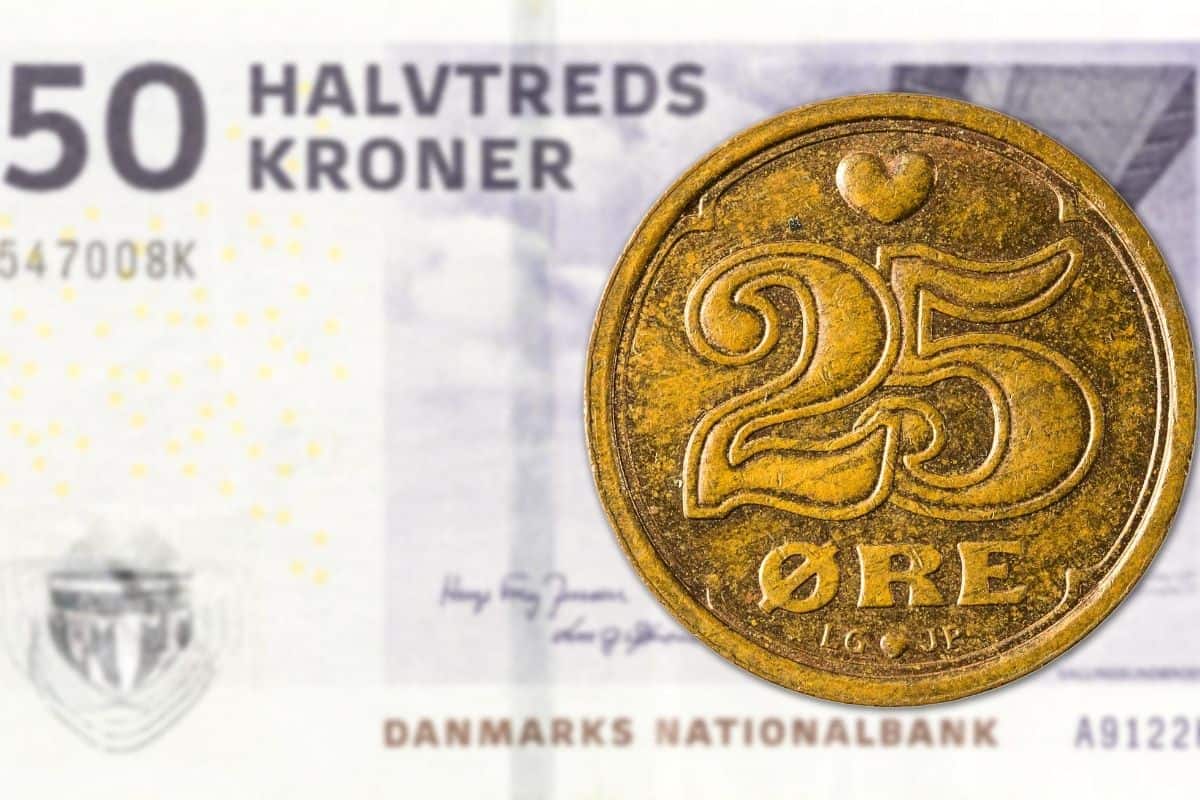
3. Do your homework before visiting Europe for the first time
Americans are notoriously ignorant about the world outside of our borders. Rise above the reputation and take the time to educate yourself before traveling to Europe for the first time. At a minimum, you should know historical highlights, key cities, the currency, and the languages spoken .
Related Article: England, Great Britain, and the United Kingdom – What’s the Difference?
Sage Advice : Looking for an unusual European destination that is filled with hidden beauty, hipster hangouts, and delicious wine? Then consider adding Moldova to your European travel plans.

4. Learn a few words and phrases in the local language
Sadly, only one in five Americans believes learning another language is important . In contrast, about half the people in the European Union speak at least two languages , and about 40% speak English. While it’s generally very easy for Americans to visit Europe relying exclusively on their mother tongue, I still recommend learning a bit of the local language.
Knowing a few expressions in the local language has helped me order breakfast in Berlin, ask for directions to a cash machine in Italy, and get a colleague’s suitcase out of a locked room after hours in Sweden (accompanied by world-champion level charades).
Learning a second language is hard, especially if you’re trying it for the first time as an adult. Make it easier by carrying a phrase book with you, or keeping a cheat sheet of important words either printed out or on your phone.
If you have easy access to Google Translate , it can help you through most language barriers. Duolingo is also a fun, free way to build local language skills before visiting Europe for the first time, and Babbel is an affordable way to build foreign language skills with ease.
Related Article: 7 Easy Ways to Overcome Language Barriers When Traveling Abroad
5. research local holidays.
Another important thing to know when traveling to Europe for the first time is that public holidays vary by country . Most European countries recognize Christmas Day and New Year’s Day as public holidays (like we do in America). But they also recognize additional religious and country-specific holidays that may be foreign to most Americans.
For example, many attractions and shops will be closed around Easter. In some countries, the subsequent holidays of Ascension Day and Pentecost are also observed. No one in Europe celebrates America’s Independence Day on July 4th, but Sweden celebrates the summer solstice on Midsummer’s Day near the end of June, France celebrates Bastille Day on July 14th, and Belgium celebrates Armistice Day on November 11th.
Related Article: 25 Surprising Facts About Christmas in the Netherlands
6. consider the time of year when planning your first trip to europe.
If you’re looking for the perfect time of year for visiting Europe for the first time, I recommend late May and early June. The weather is nice, the days are long, but most European children are still in school. This means European families aren’t competing with you for rooms and restaurants while on their own vacations.
Note that air conditioning isn’t widespread in Europe. If you don’t like the heat, you’ll want to avoid visiting Europe for the first time in July and August.
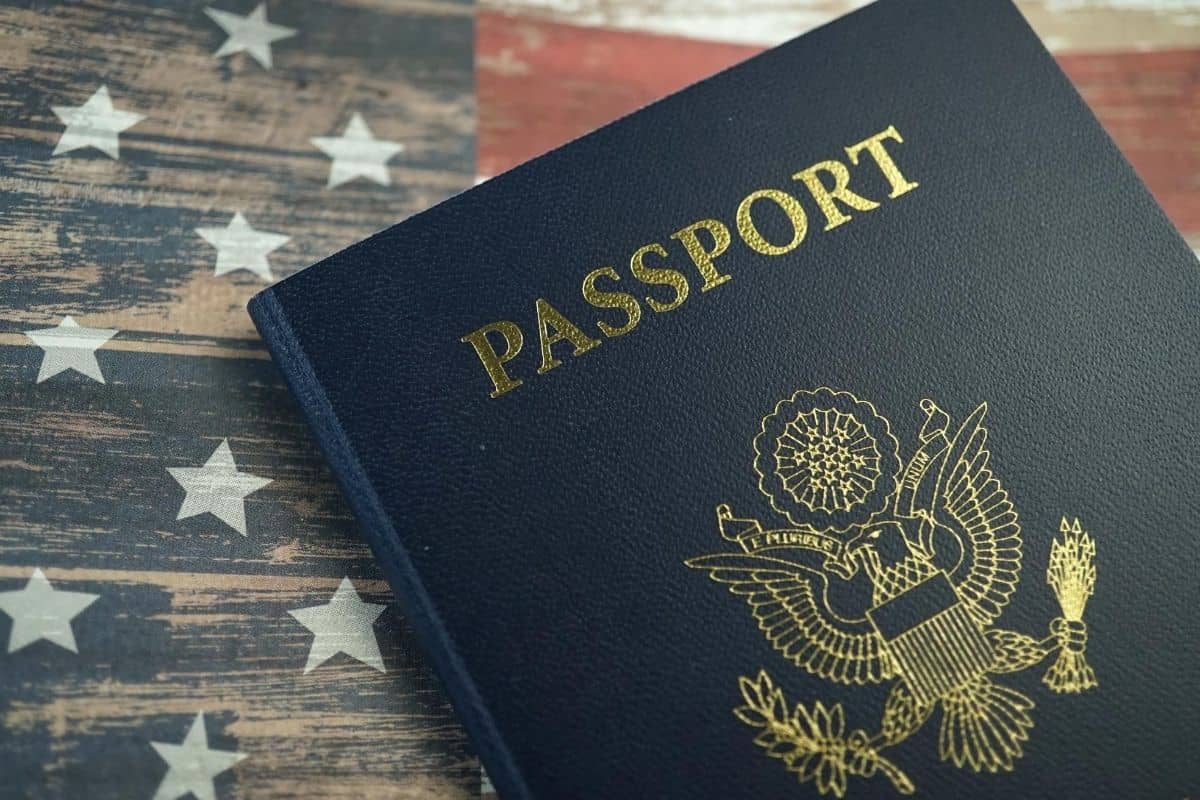
7. Check the expiration date
Be sure your passport will be valid for the entire duration of your trip, and then some. Many European countries require that your passport be valid for three to six months beyond your planned departure date.
After all, you never know when volcanic activity in Iceland , a pandemic, or some other unexpected event may keep you in Europe longer than planned.
8. Flying times
My preference is to fly to Europe in the evening. I have found that I do best when I get on my Transatlantic flight, eat dinner, and try to get some sleep before landing the next day.
When I arrive in Europe, I have a little energy to do and see a few things before going to bed at a reasonable time. Returning to the US, I prefer an early morning flight home so that I arrive in time to say hello to my loved ones, eat dinner, and go straight to bed.
Sage Advice: Find cheap flights to your dream destination in Europe at Airfarewatchdog .

Preparing to Travel to Europe
9. make copies.
Be sure you have multiple copies of your important documents including your passport, detailed itinerary, credit and debit cards, and medical insurance card. Keep one set of copies with you at all times, ideally in both a printed and digital format.
I like to keep a scanned copy of my documents both on a flash drive that travels with me and posted to Evernote or Google Drive. I also recommend keeping a second set of documents in another location, like with a traveling companion or hidden in your suitcase. Be sure to leave a full set with a loved one back in the United States, too.
10. Take US embassy and consulate information with you
As part of your important document packet, take the address and phone number of the nearest US embassy or consulate with you, especially the emergency after-hours phone number. They are ready and able to assist you with any emergency that may arise when visiting Europe for the first time. And, having this information always at your fingertips all but guarantees that you’ll never need to use it, right?!?
Visit USEmbassy.gov , a website managed by the US Department of State, for a full list of US embassies, consulates, and diplomatic missions by country.

11. Take your extra passport photo with you
You know how you’re always given two passport photos but only need one to get your passport? Pack that extra photo! It can be a lifesaver when visiting Europe for the first time. If your passport is lost or stolen while you’re abroad, you’ll be glad you have your extra photo with you and don’t have to also mess with getting a new passport picture taken.
Sage Advice: Will your first trip to Europe include the kids? Get detailed tips and tricks about traveling in Europe with a baby by European city.
12. Jot down the conversion rate
If you are only visiting countries that use the Euro, this isn’t such a big deal. But, if you will be using multiple currencies during your trip, this will help you a ton. Last fall, I visited Denmark, Sweden, Germany, Czech Republic, and Hungary. Two weeks, five countries, and five different currencies.
In Hungary, when I went to tip the cab driver, I had a different exchange rate in my head and ended up tipping about 10x more than I intended. My mistake was realized only when I looked back to see the cab driver counting his tip and acting as if he’d won a small lottery.
13. Buy travel insurance
I don’t think I ever purchased travel insurance until it was mandatory for my daughter’s high school choir trip . Now that we’ve all survived a pandemic, I don’t think I’ll ever travel without it! So be sure to purchase travel insurance when visiting Europe for the first time.
Related Article: How to Take Your First Solo Trip Abroad without Prematurely Aging Your Parents
14. contact your bank.
Be sure to contact your bank before visiting Europe for the first time. Not only will you want to fully understand the costs associated with using your cards abroad — including withdrawing cash from an ATM — you’ll also want them to know that you’ll be traveling abroad so that they don’t turn off your cards when foreign transactions start coming in.
If the conversion fees are reasonable, consider converting some cash into the currency of your destination before you go. Because I bank with USAA serving active duty military and dependents around the world, I never bother to convert currency before my trip. And it’s never been a problem.
However, I do have friends whose banks will allow them to easily and inexpensively convert US Dollars into Euros. In that case, and especially for Euros which are widely accepted even in the countries not officially using the Euro, it’s not a bad thing to depart for Europe with a small amount of Euros already in your wallet or purse.
15. Fill ‘er up
Ensure you have an adequate supply of any prescription medication before your trip. Trying to get a refill in Europe will be difficult, if not impossible. Do the same with any over-the-counter medications you take regularly or anticipate you might need including vitamins, herbal supplements, essential oils , cold and flu medicine , antacid tablets , anti-diarrheal caplets , cough drops , and allergy tablets .
16. Can you hear me now?
While Wi-Fi access is fairly prevalent throughout Europe, international phone and data charges can quickly add up. Contact your cell phone provider before visiting Europe for the first time to be sure you understand your coverage options, plan costs, and other charges. Take step-by-step directions for any phone settings that need to be changed when you arrive in Europe and how to make a local call from each country.
17. Contact your healthcare provider
While the local US embassy or consulate can help you obtain medical care abroad , you still need to know what coverage you have outside the US and what medical expenses you’d be expected to pay in case of a medical emergency.
Depending upon your medical plan, you may want to buy travel insurance to help provide you with adequate coverage in case of emergency.

18. Book some sightseeing tickets in advance
Once you have finalized your dates and destinations, start purchasing some of the hotter sightseeing tickets in advance. When I was in Milan , I waited too long to look into tickets for Leonardo da Vinci’s Last Supper and they were all sold out.
If ascending the Eiffel Tower is on your sightseeing list, purchasing those tickets in advance can save you hours of time wasted waiting in line. That said, don’t pre-book every single activity leaving you no room for flexibility or adjustments based on the weather.
19. It is okay to skip the things that aren’t of interest to you!
Growing up, my artist mother dragged me to every art museum in Western Europe. While I love Impressionist artists like Claude Monet , I have absolutely no appreciation for the dark, gory, religious paintings of the Baroque period.
I don’t think twice about skipping the sections of the Louvre that don’t appeal to me. Or skipping the Louvre completely in lieu of the Musee d’Orsay. While Disneyland Paris may have rave reviews online, it’s about the last place I’d visit if I were in France.
Related Article: A Day Trip to Giverny from Paris to See Claude Monet’s House and Gardens
Sage Advice: For advice on what to do and see when visiting Paris for the first time, check out this three-day itinerary.

20. Pack snacks
I recommend high protein, low sugar snacks like nuts, protein bars , granola bars, beef jerky, and trail mix . Plus also, emergency chocolate can come in handy when visiting Europe for the first time. You never know when you’ll be stuck at an airport and the shops are closed or when you’ll wake up in the middle of the night from jet lag and be hungry.
Sage Advice: Speaking of packing, this carry-on only packing list is one of my favorites to help ensure I don’t leave any essentials behind.
Related Article: 8 Ways to Eat Healthy While Traveling

21. Square peg in a round hole
American electronics will not plug into European outlets. So be sure you have the proper outlet converters before visiting Europe for the first time. Note that the United Kingdom has different outlets than continental Europe. Therefore, I recommend an all-in-one converter . Yes, they are a little bit more pricey, but you’re pretty much set for any outlet in the world with one of these bad boys!
One of my current favorites is this wall charger that sails across the Atlantic with ease, but can keep going and circle the world. To transform this fast-charging, wall plug from an American power outlet to a European one, simply slide the adapter over the prongs. This option has the added benefit of two USB ports so you can quickly charge multiple devices with just one adapter.

I usually take multiple converters with me, and I recommend carrying at least one converter with you on the plane so you can immediately recharge your phone, laptop, or any other device on the ground in Europe, as needed.
Sage Advice: If you just need a reliable but super cheap option, this is one of the best simple adapters for Europe .
22. Plan to be without your suitcase for 24 hours
While my luggage has never been lost on an international flight, planning to be without it for up to 24 hours helps prepare you for that possibility. I always carry at least one clean t-shirt, a fresh pair of undies, a toothbrush and toothpaste , and a day’s worth of snacks with me. Tucking everything (except the snacks) in a small compression packing cube keeps my change of clothes together, saves space in my carry-on, and prevents my undies from accidentally falling out with my tablet.
Sage Advice: If you wear contacts or take medication, be sure you have contact solution, your glasses, and your medication in your carry-on luggage, as well.
23. Block it
Any US passport issued since 2006 includes an RFID chip that allows your passport to be read with ease. While I’ve read mixed things about RFID blocking holders — some say you absolutely need one, others say they are unnecessary — I’ve chosen to take no chances.
Sage Advice: As you prepare for your first trip to Europe, this guide will help you find the best travel backpack based upon your needs. And, if you plan on backpacking around Europe, don’t miss this complete backpacking gear list .

Getting to Europe
24. drink lots of water on the plane.
Airplane cabin humidity levels are generally lower than the Sahara Desert, and dehydration amplifies jet lag, so be sure to drink plenty of water on your flight.
Sage Advice: If you plan to visit the Alps or another area of Europe that is at a higher altitude than your home, be sure to read these tips for adjusting to higher altitudes . And get answers to all of your embarrassing altitude sickness questions in this related article.
Enjoying This Article?
Sign up for the newsletter!
Thank You for Subscribing!
25. Keeping germs at bay
The good news is that your Transatlantic flight will be filled with people from many countries around the world. The bad news is that you never know what germs you might be exposed to in the hours you spend with them in the relatively close quarters of the airplane.
Known as Thieves by Young Living customers, On Guard by dōTERRA fans, and Immune Strength by Rocky Mountain Oils lovers like me, I swear by one of these essential oil blends to help protect me from the germs on board the plane, from the common cold in the seat next to me to the potential flu bug a few rows back.
I apply the essential oil at least 30 minutes before boarding the plane and then another time or two while on board. With clove, cinnamon, and orange oils as key ingredients in this blend, I find the scent of these blends to be quite pleasing and reminiscent of Christmas. One of my co-workers refers to my oils as Hot Damn! because it reminds her of cinnamon schnapps.
Related Article: Why You Should Never Travel Without These Three Essential Oils

26. Try to sleep
As someone who has a hard time sleeping in the comfort of my own bedroom most nights, I feel like a bit of a hypocrite giving this advice, but resting as much as you can will help you enjoy your time on the ground when visiting Europe for the first time. You’ll be excited for your trip and distracted by the in-flight movies and entertainment.
Pack a neck pillow ( inflatable is best so it doesn’t take up much room), sleep mask , and earplugs to help you get comfortable and get some rest. I also pack lavender essential oil to help me calm down and relax. And I always have tart cherry extract (which contain natural melatonin) as well as melatonin fast dissolve tablets with me.
Sage Advice: You do not need to pack a full-sized pillow or bring a quilt with you; the airline will have a small, sanitized pillow and blanket for each passenger.
Related Article: Ready, Set, Snooze! How to Get a Good Night’s Sleep Away from Home

27. Minimize alcohol intake
Most international flights will include beer and wine at no additional charge. When it’s included in your ticket price, and especially if you are a bit nervous or excited, it’s easy to over-indulge on wine on the plane. Enjoy a cocktail before dinner or a glass of wine with your meal, but try to limit your alcohol to one glass so you can stay hydrated and sleep on the flight.
28. Brushing your teeth
If you want to brush your teeth on the plane before you land, do not brush your teeth with the water from the tap in the bathroom. Take a cup of bottled water in with you instead.
29. Don’t pass up a chance to pee
When you land in Europe, don’t pass up the first chance you get to use a real restroom on the ground. Once you get in line to enter the country and have your passport stamped, you might not see a restroom for a while and sometimes the lines can be quite long.
Getting Around Europe
30. if at all possible, do not drive when visiting europe for the first time.
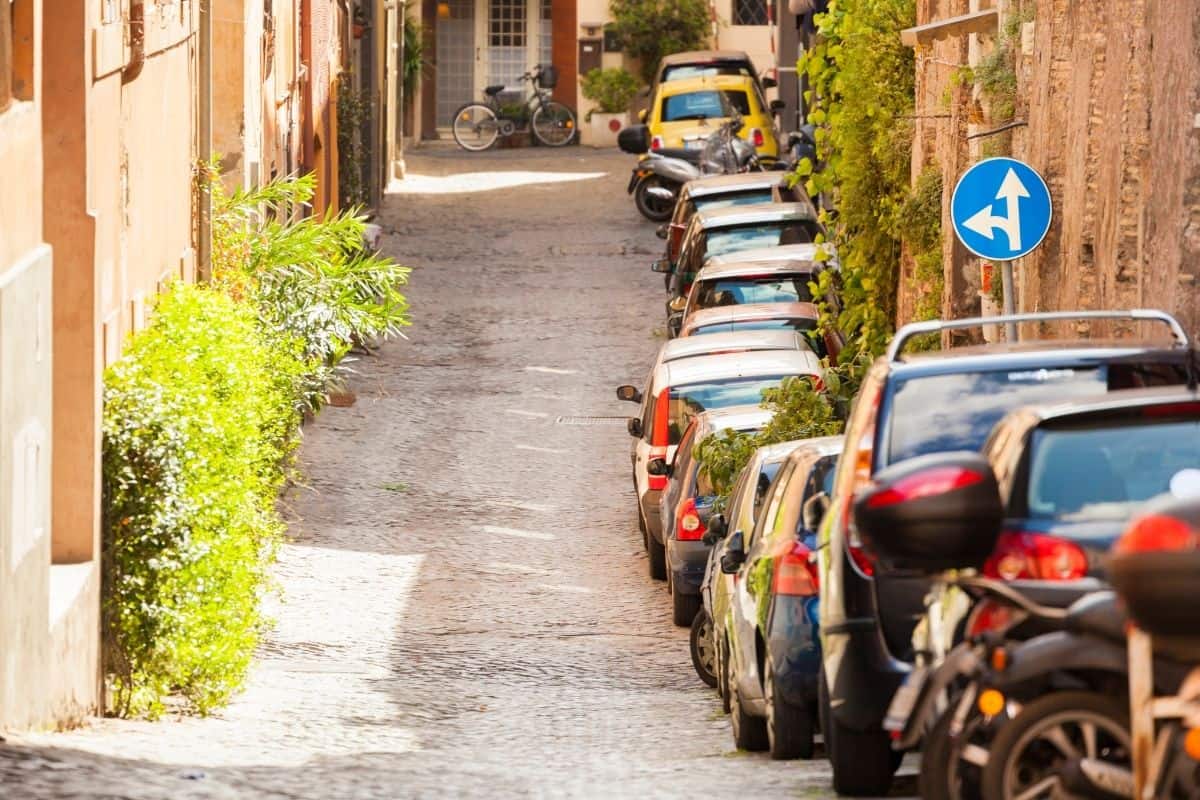
Sage Advice: If you do choose to drive when visiting Europe for the first time, here are 12 tips for saving money on a car rental . And if you decide to tour Italy by car, you’ll want to read this guide to driving in Italy .
31. Bring good walking shoes
Whether you’re in a big city like Amsterdam or a smaller town like Maastricht , walking is one of the fastest, scenic, most efficient ways to get around the historic, densely populated continent of Europe. Cobblestones are prevalent in towns and cities of all sizes, so flat, comfortable, practical shoes are a definite must.
32. Expect bicycles everywhere
Bicycles are very common throughout Europe, perhaps nowhere as much as in The Netherlands where they outnumber people. It’s relatively easy to rent a bike throughout much of Europe, especially now that kiosk options exist.
Sage Advice: Before you hit the road on a bicycle, be sure you know (and follow) these important biking rules !
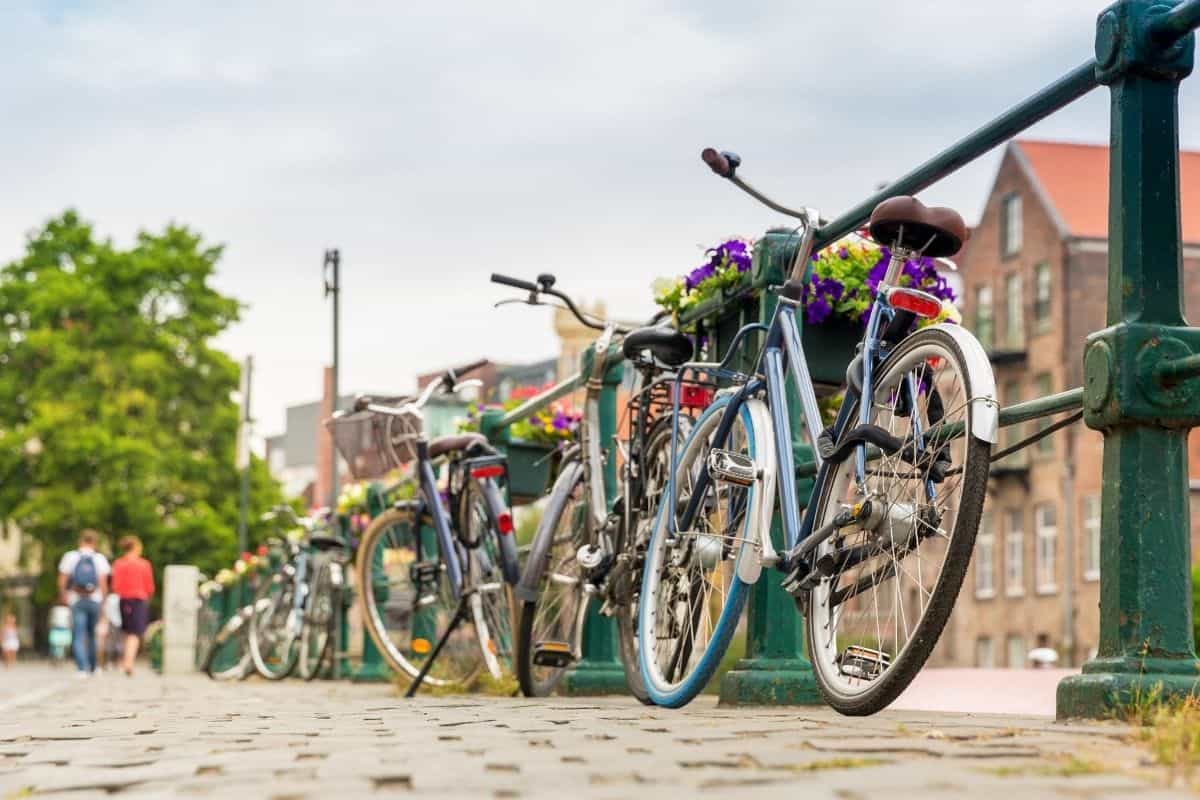
33. Take advantage of mass transit when visiting Europe for the first time
If you don’t use public transportation frequently in the US, European mass transit can sometimes be a bit confusing or even overwhelming. Within cities, subways like the Paris Métro and city buses can quickly and affordably get you to the places that are beyond walking or biking distance.
When traveling between cities, consider buses or trains for affordable travel. In many stations, tickets can be purchased directly from a kiosk. This is a fast, convenient way to purchase tickets if know what you’re doing, but a confusing option if you don’t. While the lines are often long, especially during peak travel, don’t be afraid to stand in line at the ticket counter to work with someone face-to-face.
Sage Advice: Once your ticket is purchased, it often still needs to be stamped at the machine on the platform before you board, so don’t forget this important step!
34. Security in public places
Don’t be alarmed if you see police officers decked out in what looks like combat gear carrying heavy-duty machine guns in airports, train and bus stations, and even at popular tourist locations.
35. Transportation strikes
These can be a relatively common occurrence, especially in France and Italy. While they sound scary and are absolutely a nuisance, they are usually announced in advance. Watch for any signs announcing an upcoming strike, and ask your hotel front desk for more information and assistance.
A transportation strike hit France a few years ago on the day I was scheduled to fly home. The hotel staff knew how to contact an independent, Vietnamese cab driver who wasn’t striking, and I was able to get to the airport without any trouble!

36. All aboard!
Once you’re on board a train, be mindful of local customs. While Americans will happily chat up a stranger on a flight, this is less common in Europe. Even within your travel party, be mindful of the volume and nature of your conversation.
One American colleague and I took the train from Amsterdam to Paris and sat in business class seats across the aisle from one another. On board we carried out a work conversation at our normal speaking voices for about 30 minutes before another passenger very politely told us that we shouldn’t be talking in this train car because everyone else was there to work during the trip.
37. Air travel within Europe
If you travel by plane within Europe, be mindful that the airline travel rules vary. For example, most European airports I’ve been in recently do not require you to remove your shoes. Watch for signs, nearly all of which are in English, and look ahead of you in line to see what others are doing.
38. Hidden fees
Like many domestic carriers do, several continental airlines will charge you for each checked bag. You may also be asked to pay extra fees if your bag weighs more than the domestic carrier’s limit.
Experiencing Europe
39. be mindful of pickpockets.
Just like you would in any large city in the world, be especially mindful of pickpockets, especially in heavy tourist areas, when stopping to observe a street performer, and when using mass transit. I recommend taking a small, anti-theft cross-body bag to keep your essentials safe on your first trip to Europe. Men, put your wallets in your front pocket.
Split your cash and bank cards up, and stow them in a few different places, like your wallet, zipped into an interior pocket of your purse or backpack, and in the safe at your hotel. Do not walk around with your phone in your hand unless you’re using it at that moment to snap a photo or look something up.
I wish I didn’t have as many firsthand stories from American colleagues who have had their cell phones, passports, or purses stolen in Paris as I do!
From the seasoned American traveler whose instincts told her to wrap her arms around her cross-body purse when a small group of gypsies approached her by the Notre Dame (only to realize they’d slipped her cell phone from her hand while she protected her purse) to a Dutch colleague whose phone was lifted from a table at a sidewalk cafe while she was telling the others in her travel group about the importance of not leaving your phone on the table.
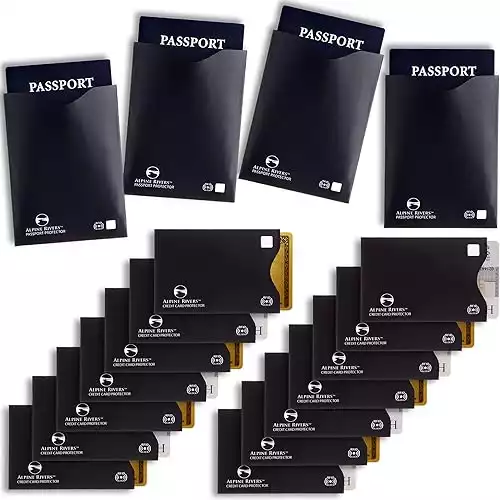
40. If you have a hard time communicating, don’t get frustrated
And absolutely do not raise your voice.
While Americans are fortunate that most Europeans speak English, chances are you’ll likely have at least one encounter with someone who do not. After all, t here are 84 languages spoken in Europe, plus more localized dialects. When you play charades and your team doesn’t understand what you’re trying to convey, you have to take a different approach. That will serve you well in this case, too.
Use simple English words free of idiomatic expressions or slang. Speak slowly. Try gestures, but be mindful that the gestures we use in the US don’t always translate the same way across the Atlantic Ocean. For example, a thumbs up sign signaling that something is okay is akin to ordering one of something in Europe.

41. We’ll never be royal
Most Europeans will have learned Queen’s English and will use British, not American, words like lorry (truck), trolley (cart), lift (elevator), bin (trash can), courgette (zucchini), crisps (potato chips), chips (French fries), and rocket (arugula). So you might even need to learn a few new words in your mother tongue before traveling!
Related Article: How to Speak Yankee – A Guide for People Who Speak Queen’s English
42. watch what you say.
While you may not be able to understand the conversations around you, nearly everyone you pass can understand you. Be thoughtful about what you say in front of others!
43. Expect a different sense of personal space when visiting Europe for the first time
In a continent three times more densely populated than ours, Europeans from all countries tend to have a different sense of personal space than Americans. As someone who lives in the Midwest, where things are even more wide open and spacious than the big cities on either coast, I have to be especially conscious about not taking a step back to add space to my interactions with European colleagues. Don’t feel threatened or like someone is “all up in your space” if they are closer than is typical back in the US.
44. Handshakes and social kissing
While American handshakes are all about a strong grip and length (at least two or three “pumps”), European handshakes are typically soft and short in comparison. After an initial introduction, I’ve found it common for personal and professional acquaintances from all European countries to move from handshake greetings to social kissing. While Americans are more likely to hug, reserving kisses for extremely close friends and families, the opposite is typically the case throughout Europe.
When it comes to social kissing, here are a few guidelines. Limit your smooch to the cheek, and always start with the right. Know how many kisses are typical in each country, like usually two kisses in France and three in The Netherlands , but don’t worry about it too much as it’s usually pretty easy to follow the lead of your European counterpart.
45. Typically not a 24/7 kinda world
While Americans from cities and towns of all sizes are fairly accustomed to extended hours at grocery stores, transportation counters, and pharmacies, this isn’t as common throughout Europe. Many businesses may be closed on Sundays, for local holidays, and many stores will close by 6:00 pm most days of the week. Do your best to plan ahead, and always double-check the posted hours.

46. What’s in a name?
Many cities are known by different names based on the language. What is Prague to Americans is Praha to the Czech. The German town of Aachen is listed as Aix-la-Chappelle in the neighboring, French-speaking part of Belgium. Knowing each city on your itinerary by its various names is especially important when driving or taking mass transit.
Sage Advice: Speaking of the capital of the Czech Republic, these are the best things to do in Prague in winter .
47. Always be aware of your surroundings
In the four decades I’ve lived in or traveled within Europe, I’ve experienced anti-American protests in London , Occupy Wall Street protests, violent brawls between Algerian and French World Cup soccer fans in Paris , and pro-Democracy riots in Istanbul . As you admire the architecture, savor the new foods, and drink in the experiences that surround you, watch for warning signs.
Some of the most obvious are crowds of people chanting, streets lined with police vans, and people carrying gas masks . Look at the locals — shopkeepers, people carrying grocery bags, front desk personnel at your hotel — and watch for any signs of hesitation or concern. Know the areas of town you should avoid after dark by doing your homework and checking with the hotel staff.
Related Article: 13 Things to do in Istanbul, Turkey
Getting a good night’s sleep, 48. room for one.
While Americans are used to hotel rooms that usually contain either one king or two queen-sized beds and enough bath towels for four people, European accommodations are usually quite different. There is such a thing as a single room, and it is what it sounds like: a room with a single bed and one bath towel. A room with a double bed is not uncommonly two single beds pushed together.
Sage Advice: Determine the perfect part of Paris for your lodging with this detailed guide by arrondissement .
49. Washcloths
There are usually no washcloths in Europe, so if you regularly use one, be sure to pack one plus a plastic bag to keep it in if it’s not fully dried when you check out.

50. Double duty
The sleep mask you used to block out light and catch a few zzzzzs on your flight across the ocean will also come in handy in your hotel room. If you visit Europe in the summer, you’ll likely experience much earlier sunrises and much later sunsets than back home. Unless you’re visiting Europe for the first time from Alaska.
51. Double duty, part deux
While grocery stores and pharmacies might close by 6:00 pm most days, the bars and nightclubs throughout Europe are often open until nearly dawn. The earplugs you used on your flight to Europe will also minimize the sounds of the locals stumbling home in the wee hours.
52. The key to keeping electricity costs low
To help manage electricity costs, many hotels require you to place your room card in a special slot near the door before any lights or electrical outlets will work. Keep in mind that when you leave your room and take your key, the power outlets often cease to work. I learned this the hard way when I left my laptop charging while I went to grab breakfast only to learn that it wasn’t charging at all!
Sage Advice: Any plastic hotel key card will work in the light slot. If you have an old key from another hotel floating around, use it to keep the electricity on when you leave your room. Or, ask the front desk for a second key to your room.
53. Stairway to heaven
Especially in older, more historic hotels, elevators are small. And by small, I mean that you and your bag may be the only items that will fit in some of the elevators! Unless you are on a high floor, are lugging heavy suitcases, or have a physical condition that makes it difficult, the stairs are usually used to leave the elevators open for other guests.
54. Ground zero
While Americans consider the ground floor to be the first floor, Europeans consider the first floor above the ground floor to be the first floor. This tidbit will help you find your hotel room. And it will help you count how many more flights of stairs you have to lug your suitcase in a building without an elevator.
What to Eat and Drink
55. amazing food.
While it is possible to find a bad meal in Europe, it’s usually pretty hard. After hundreds and hundreds of meals in Europe, only two have been less than stellar.
Most restaurants prepare foods from scratch with fresh, seasonal ingredients. Along the coasts, fish and seafood is often caught and served the same day. Desserts are incredibly flavorful and not as sickly sweet as they often taste in the US. Enjoy the food to the fullest, and know that you’re likely walking enough to compensate for any incremental calories!
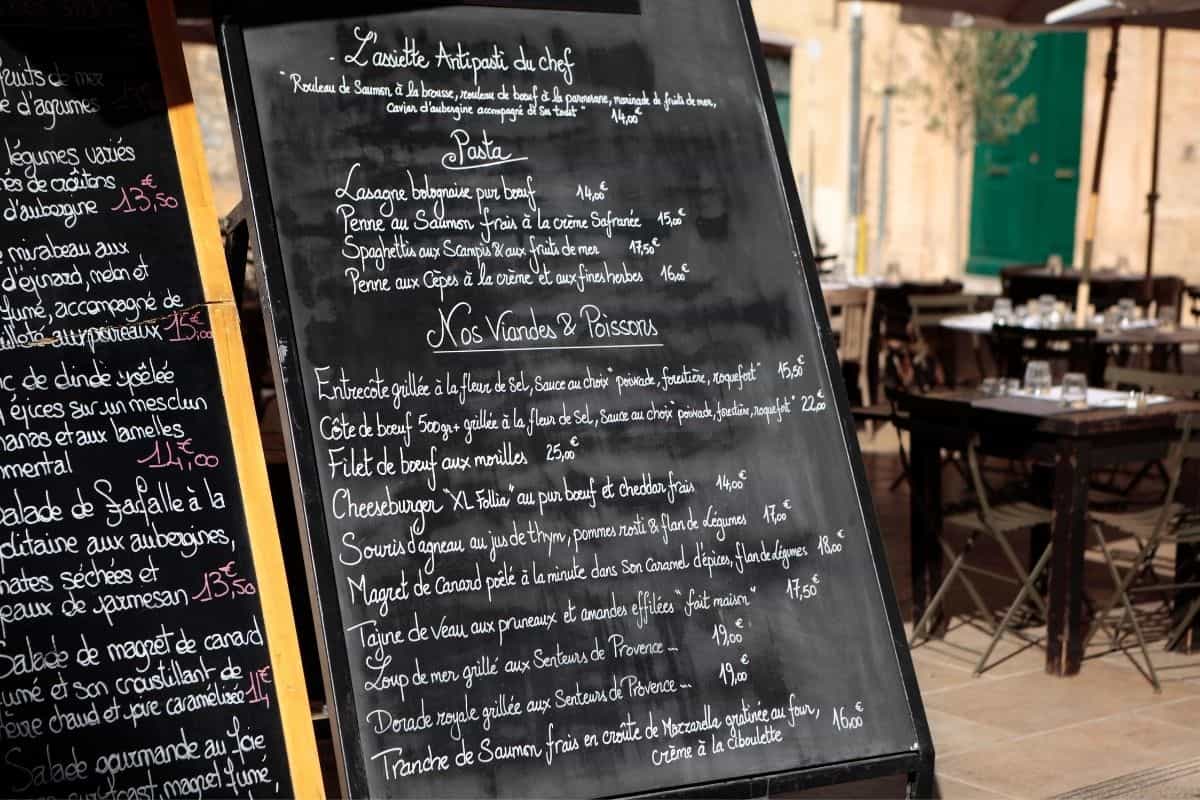
Sage Advice: Experience Italy’s amazing cuisine in a unique way by taking a cooking class in Florence .
Related Article: French Food You Have to try Before Leaving France
56. eat away from tourist attractions when visiting europe for the first time.
To increase your chances of an amazing meal, eat at places away from the main attractions. Research your options online, read reviews, or ask a local contact for recommendations.
57. Stretch your food budget
To experience as much as possible while getting the most bang for your buck, eat at least one nice, big meal a day. For the other meals, try grabbing a coffee and a baked good from a local bakery, a sandwich from a street stand, or items from a grocery store. Sample the local beers, wines, and spirits by purchasing them at a store rather than a bar.
58. Request an English menu when visiting Europe for the first time
If one is not automatically offered to you, ask your server if they have an English menu. Most restaurants have a few available, and they make it easier for you to order your meal.

59. With gas or without?
This is often one of the first questions you’re asked in a restaurant. The term “with gas” translates to “carbonated water” to us Americans, and is a common option throughout Europe.
60. Chill out
From water to beer, drinks throughout Europe are typically served without ice and at warmer temperature than Americans tend to prefer.
61. No “free” refills
The concept of unlimited drinks is very American and not common elsewhere. I’ve read several theories about why there aren’t unlimited refills in Europe. One theory is because sodas in Europe are served from individual glass bottles rather than the huge fountain dispensers common in the US. Another reason cited is that European beverages use real sugar instead of high-fructose corn syrup, and that increases the cost.
Either way, expect to be charged several Euros for a small bottle of soda in most of Europe and enjoy the quality — real sugar — over quantity — no 48 ounce glasses.
62. In most countries, beer and wine can be consumed starting at age 16
I share this in case you are the parent of a child who is under 21 and headed to Europe.

63. My food is looking at me
Seafood dishes will often be served with the heads still on the fish and full shrimp that need to be pulled apart before consuming.
64. 100% Angus
Unless you’re interested in trying horsemeat , don’t eat any steak, chopped meat, or beef that isn’t defined as 100% Angus. While it is usually listed as horsemeat on the local language menu, I’ve experienced at least one restaurant in France that only translated it as “chopped steak” on the English menu. Yes, my American colleague was grateful that I studied French and had a French menu in front of me.
Related Article: 14 Tasty Dutch Treats You Must Try in the Netherlands
65. dinner is an experience.
Set aside plenty of time for dinner in Europe. It is an experience that should be savored and not rushed. Additionally, as you travel south in Europe, expect dinner to be later and later in the evening. Scandinavians typically eat around 6:00 pm, like the average American. Central Europeans eat around 7:00 pm, and Southern Europeans eat at 8:00 pm or later.

66. Seat yourself
For drinks, refreshments, or meals at cafes or bistros, you can generally seat yourself and wait for someone to take your order. Avoid any table with a reserved sign, and only sit at an open table set with silverware if you plan on eating. If you’re just grabbing a drink, opt for a table without silverware instead.
67. Sharing tables
In some countries, especially in Germany, it’s not uncommon to be seated at a table already partially occupied by other diners.
68. Limit special requests
Unless you truly have a critical, life-threatening dietary restriction, avoid making changes to the dishes as listed on the menu. If you have a serious food allergy, pack allergy food cards translated into the languages of the countries you’re visiting to help ensure you stay safe. There are laminated cards for gluten , milk , nut , shellfish , and other food allergies, translated into every European language that help make it easy for you to communicate this important information in every country you visit.
69. Different meaning of the same word
The word entree in European dining usually refers to a first course, like an appetizer in America. Main dish is the term Europeans use for what Americans call an entree.

70. Holler if you need anything
Because dining with friends is a social occasion, servers will not interrupt you every five minutes to ask if everything is okay. If you need something, simply make eye contact with your server or raise your right hand to signal that you need something.
71. Request the check when ready
Because enjoying a delicious meal with friends is a social occasion, most European waiters will wait until you ask to bring you the check. Overall, the best way to ask is to either make eye contact or raise your right hand and make a signing motion. In some countries, it’s rude to wave your hand, and in just about all countries, it’s rude to snap your fingers.
Sage Advice: Earn bonus points as a seasoned world traveler by learning how to say, “Sir/Madam, the check please” in the local language!
72. A tip about tipping
While we usually tip around 15% in the US, in part to fully compensate wait staff who receive lower hourly wages, tipping is much less expected throughout Europe. This is because most countries fully compensate their staff for their work and the service is already included in the prices listed on your bill.
If you order your food at a counter, you do not need to tip at all. However, if you are served by a waiter or waitress and want to add five to ten percent for excellent service, your server will usually appreciate the gesture.
Whether paying in cash or by card, your server will typically want to know what you’d like the total charge to be at the time of payment. If your bill is €22 and you want to add a €3 tip, simply tell the waiter €25 when you hand him your card or cash.
Because European wait staff know that Americans tend to be generous tippers (by their standards), it’s not uncommon for them to stamp “Service Not Included” on the receipt in English to try to get a 15%+ tip out of tourists. When in doubt, research the tipping customs for each country you plan to visit in advance.
73. Hot dog!
In most European countries, it’s not uncommon to see dogs in restaurants. They are usually very well behaved, resting patiently under the table for hours while their owners enjoy their meal.
Paying for Things
74. always pay in local currency when visiting europe for the first time.
When swiping your debit or credit card, you might be asked if you’d like to pay in US dollars or the local currency. Always pick the local currency or you may unknowingly be charged an additional 3-5% for the “convenience” of having your purchase converted from the local currency to dollars.
75. Cards with chips
While American banks and credit card companies began issuing cards with embedded chips in 2015, cards with chips have been prevalent across Europe for years. If you have both an embedded chip and a four-digit PIN for your card, you should be able to use your card in about every instance. Without a chip and PIN, you may experience issues at kiosks, like train station ticket machines, and with some point of sale machines.
76. Don’t let your credit card out of your sight
While Americans routinely sip their cards in bill portfolios that waiters whisk away to run at a register elsewhere in the restaurant, that doesn’t happen in Europe. The wait staff will always bring a portable reader to your table to settle up with you.

77. Carry enough cash
While just about every business in America, including some vending machines, accept debit and credit cards, many small businesses and eateries only accept cash. And if you withdraw cash in Europe, be sure to follow these travel safety tips when using an ATM.
78. Keep the change
The first Euro bill is a €5. Everything else is in coin form, so you may want to take coin purse along, even the men.
79. Keep each currency in its own coin purse when visiting Europe for the first time
The last place we lived in Europe was in Maastricht, in the very southern tip of the Netherlands. In less than 30 minutes, we could be in either Belgium or Germany. Because this was before the Euro, my Mom usually had Belgian Francs, German Marks, and Dutch Guilders in her purse. She kept each in its own coin purse to keep things straight, a concept I still use on my trips today.
I have a small coin purse for Euros and another for British Pounds. Any other currencies go into their own, super classy, snack-sized Ziploc bag marked with the currency and current exchange rate.
80. No hidden charges
Taxes, while usually quite high, are included in the price as marked. There is nothing more to pay at the register, as is the case in most states.
Other Tips and Tricks
81. not free to pee.
You may need to pay a small fee, either via a coin-operated entry door or to a restroom hostess, to use the restroom in Europe. This is yet another important reason to be sure you have cash on you at all times, especially smaller coins.

Europeans typically call the restroom the “water closet” or WC. However, Joy from FatMoments.com joked that she believes that means “with coins.”
Sage Advice: While it’s usually not free to pee in Europe, check out this walking tour of London that includes a secret tip on where to pee for free.
82. It’s a small world after all
As mentioned above in the “personal space” section, the European continent is about three times more densely populated than the United States. Expect things to be much smaller than you’re used to back home, from hotels to cars, from bathrooms to parking spaces.
83. Twenty-four hours in a day
Europeans use 24-hour time, rather than AM and PM. Additionally, it’s typically written with the hour, the local language abbreviation for hour, and the minutes. So what would be 4:24 pm in Chicago would be written as 16h24 in France. While it does take some getting used to, it’s simple to convert any afternoon time to PM by simply subtracting 12.
84. It’s a date!
In addition to using 24-hour time, Europeans usually write dates following a Day/Month/Year format rather than the Month/Day/Year format used most commonly in America.

85. Eight days a week
Unlike American calendars that start on Sunday and end on Saturday, European calendars typically start on Monday and end on Sunday.
86. A logical measurement system
Farewell confusing, archaic imperial measurement system; hello brilliantly logical metric system ! Prepare to hear the day’s temperature in Celsius, not Fahrenheit. The distances between cities will be provided in kilometers, not miles, and the gas you fill into a rental car will be measured in liters, not gallons. The fresh cherries you purchase at the market will be weighed in kilos, not pounds.
87. Breathe happy
If you are a non-smoker, be sure to pack a travel-sized bottle of Febreze . Not only do the residents of many European countries consume more cigarettes per person than in the US, but also they are allowed to smoke in places not commonly allowed anymore in the US. Febreze does a good job of reducing the lingering, second-hand smoke smell from the items you plan on wearing more than once — like jeans and jackets.
88. Naked truth
Across the continent, Europeans have a much different philosophy about nudity and sex. Shower gel commercials will feature women’s breasts, younger children will often be completely naked at the pool, and public service announcements promoting condoms to practice safe sex will be rather graphic.
89. Pardon my French
American swear words aren’t really swear words to Europeans who speak English as a second language and hear them regularly in American movies and song lyrics. Years ago, when my children were young and impressionable, my German friend regularly used the word ass around them when referring to her rear end because she’d never learned any different word for this part of one’s anatomy.
I’ve heard young elementary school children in Europe use the “f-word” without any context to how offensive and inappropriate a word that is in our country. I guess it’s not much different from elementary school kids in America who only know how to say “Voulez-vous coucher avec moi” in French.

90. When in Rome
Do your best to blend in rather than shining a bright spotlight on your nationality. Don’t wear clothing with the American flag on it, or use a suitcase, backpack, or purse with one, either. Don’t dress too casually by donning sweats, athletic shorts, beat-up tennis shoes, or yoga bottoms.
Be mindful that some brands just scream American, like Uggs and North Face. So does sporting a t-shirt emblazoned with your favorite American sports team or alma mater.
91. Sunday best
Be mindful and respectful of local customs when visiting religious sites. Most cathedrals, churches, synagogues, and mosques expect visitors to have their shoulders and knees covered. Women visiting mosques will be expected to cover their hair, and both men and women are expected to cover their heads when visiting a synagogue. Head coverings are often available for tourists.
If you are visiting a warmer climate during the hotter months, stay cool and be appropriately covered by selecting a long skirt over short shorts. Carry a lightweight sweater with you to put on when entering sacred places to cover up any bare shoulders.
Know which days of the week are worship days for each religion — Friday at mosques, Saturday for those of Jewish faith, and Sunday for Christians — and be mindful of religious holidays. Some site may be closed for religious holidays, as the Dohány Street Synagogue was for Rosh Hashana when I visited Budapest.
92. All smiles
Most Europeans think Americans are super friendly, maybe too friendly. If the situation feels right, don’t be shy about speaking to others. I made a new friend on the train between Paris and Normandy by striking up a conversation with the woman sitting across from me when she asked about my Dentyne gum , a treat she remembered from her trip the United States that she couldn’t purchase in Paris. Nearly five years later, we still exchange Christmas cards.
However, don’t be like my middle-aged, first time abroad co-worker who aggressively approached everyone he could — cab drivers, restaurant hostesses, train ticket agents — with a recurring soliloquy about where he was from, how wonderful America was, and how his great, great grandparents immigrated to the US from Croatia.
Returning Home
93. perishable items.
Be sure that any perishable items you purchase for your flight home from Europe are fully consumed before you deplane. This includes fresh fruit, sandwiches, or that one last amazing croissant. They’re not allowed to enter the United States, and carrying any of these items through the customs line will only delay your return.

94. Liquid refreshment
Wine, beer, spirits, perfume, or other liquids purchased in the duty-free shop at the airport or on the plane may cause problems if they’re in your carry-on baggage and not in your checked luggage. Be thoughtful about making these purchases once your luggage has been checked for the United States.
95. Anything to declare?
Shortly before your Transatlantic flight lands back in America, flight attendants will distribute declaration forms. Read the form carefully and thoroughly before you start to complete it. There’s a very good chance that you won’t have anything to declare if the items you purchased abroad are for your personal use or gifts.
96. You smell suspicious
As you wait in line to officially re-enter the US, don’t be surprised if officers with drug and bomb sniffing dogs are hard at work.

97. No photos, please
You are prohibited to have a cell phone or recording device out while you wait in line. Watch for signs telling you to put your phone away, and know that they are serious about enforcing the rule.
98. Meeting the man
When it’s your turn to submit your papers and passport for inspection, answer any questions in a simple, straight-forward manner. The officer does not want to hear long-winded stories. Customs and Border Protection officers can search you or your belongings without a warrant to enforce US laws. Don’t give them a reason to do so.
99. Connecting flights
If you’re not lucky enough to live in a city that has direct flights from Europe, you’ll have to gather your luggage , carry it to the designated area, and go back through a dedicated airport security check. If you have any liquid items in your carry-on baggage, this is the time to move them to your checked luggage.
It was heartbreaking to watch a group of first-time travelers throw away the snow globes they purchased as gifts and had carefully hand-carried on the plane in London because they were in violation of the domestic air travel laws in the US.
100. Embrace your experiences
Whether you spend one week in one city or all summer exploring many countries, once you’ve expanded your horizons by experiencing another country and culture, your life will forever be changed. Incorporate this new knowledge and perspective into your life going forward, and do your part to foster peace and understanding in our world.
Travel Hacks and Other Travel Advice
The additional tips below have been submitted by blog visitors. Do you have a tip to share with your fellow American visiting Europe for the first time? Be sure to leave your travel tip, travel advice, or travel hack in the comments section below!
101. At some point the trip you’ve planned becomes the trip you’re on
Heather from Heather Blog advises that no matter how meticulously you plan, something might go wrong. For example, Tip #35 Transportation Strikes. If you experience a roadblock, don’t let it ruin your trip, put that American creativity and ingenuity to work and find a workaround!
102. Slow down and savor every moment when visiting Europe for the first time
In the spirit of Tip #1 Focus and Tip #65 Dinner is An Experience, Englishman David Oakes suggests that Americans just slow down. There is no gold medal for rushing through your European adventures, so just slow down and take it all in!
103. Train schedules at your fingertips
Building on the “Getting Around” section above, Jenn from The Solivagant Soul recommends using the German rail website for up-to-date train schedules across Europe. It’s available in eight languages, including English.
104. Get up occasionally and walk around the plane
Chasa has an important addition to the “Getting There” section. Occasionally get up and walk around the plane during long flights to help reduce the risk of blood clots.
105. Stretch your budget
One common source of affordable meals is every city’s downtown department store (think IKEA). Maggie from Totally Teen Travel further adds that there is always a bonus when the food market is on the top floor delivering a stunning view!
Ready to Go? Use These Helpful Links to Book Your Trip!
- Find low fares with airfarewatchdog and Skyscanner
- Book your plane ticket with Expedia or Kayak
- Or take the scenic route on an epic road trip in a rental car or an RV from Outdoorsy
- From hotels to private homes, find the perfect accommodation with Hotels.com or Vrbo
- Travel in style with a suitcase, carry-on, backpack, or handbag from eBags
- Save on tickets to attractions, sightseeing tours, and more with CityPASS , Tiqets , and Viator
- Don’t leave home without travel insurance from AXA
- Discover the sights, history, and culture of your destination with an interactive scavenger hunt
- Need something else to plan your perfect trip? Visit my travel resources page for more trusted partners. Happy wandering!
Thank you for sharing!
105 thoughts on “100+ Things Every American Should Know Before Visiting Europe for the First Time”
The first time I visited Europe was in my early teens. At that age, the thing that surprised me most about Spain was their connection to food being an animal. The meat was presented with body parts, like heads and feet, that I was unfamiliar with in the US. Quite a shock!
Oh, yes! And fish heads still in place!
It’s always so funny to read about those things that are unusual – or even shocking – to visitors from the US that are so normal to us. On the other hand, on my first trip to the US – which was before the invention of this wonderful thing called internet – I was quite unprepared and did some pretty crazy things like walking or taking public transport 😀
Yeah, public transportation in the US is quite a shock for Europeans who expect something similar to what’s available at home. I had a co-worker visit the US from Colombia for the first time recently, and he’s STILL talking about how baffling it is that the US doesn’t really have public transportation!
Oh yes it is best advice. I am going to europe for first time and this has been helped me alot. I have write your advices and i will do on arriving. Thanks buddy for this great advice and help.
This is an amazing, insightful list! I wish I had it on my first foray into Europe three years ago. I definitely tried to jam pack too much into a few days and wish I had spent longer in fewer countries. Haha, I remember being so bewildered when stores closed at 6pm. It seemed so early! I’m definitely saving your advice for a future trip.
I’m glad you found it helpful! Where do you hope to go on your next trip to Europe?
As a European I really found interesting your advice for US travelers in Europe. It was like a little window to look into your preparations.
It’s funny to hear you say that. I feel the same way when I read articles written by non-Americans about visiting my homeland. I always get a chuckle out of what others feel is unique or unusual about my country (and when I stop and think about it, they’re always right)! I mean seriously, our tipping practices are confusing as heck to me, and I’m an American! 🙂
Wow! A lot of tips here which are very useful when coming over to my ”home’ of Euroland from America. At first I kinda found it funny seeing Americans getting so frustated and annoyed when they come over, espeically in England and we both speak the same langauge (well, 99% of it is the same). But then I went to the United States and now I can see why Americans are the way they are when they first come over this side of the Atlantic (but then after the while, they mellow). I was the same in America, like driving a car etc, but after a while, I mellowed and now I love going over there. 😀 Still dont like airport security mind you. 😀 I am just blabbing now…..but this is a very good guide.
I’d argue the language is closer to 95% the same, but you know to-MAY-to, to-MAH-to. LOL!
This is super helpful! We have visited Europe several times in the last few years, but your post still has a lot of great tips for us. Love how much information you’ve offered here!
I’m glad you found the advice helpful! It’s amazing what you can learn from living in Europe for seven years and returning frequently after that! 🙂
GREAT post and list of tips. The thee most valuable to me are focus (same goes for Europeans trying to visit the U.S. as we have friends to describe plans to us that are literally impossible given the expanse of area trying to be seen … things do look smaller on a map), recognize each country is different, and learn a bit of the language. Followed by it is not a 24/7 world. 😉 So many of your other tips apply to any travel anywhere! Nicely done.
Thank you so much, Michael! You’re right about the inverse being true when it comes to European friends taking on more of the US than is reasonable. I have witnessed a few examples of that myself. While I haven’t been to Australia or New Zealand yet, another favorite of mine are the folks who talk about planning a “day trip” from Australia to New Zealand. Sydney and Auckland are more than 1,000 miles apart. Would you take a “day trip” from Chicago to New York? Or a “day trip” from San Francisco to Denver? But they don’t look that far apart on a globe at all! 🙂
What an absolutely thorough and amazing list. I think you have thought of everything! I love the advice about tipping as I still get mixed up sometimes and revert to North American ( Canadian) thinking which leads me to leaving an excessive tip…. ! And the cheek kissing…. always good to know! Will keep this on hand for friends heading over to Europe for the first time!
Thanks! The more I think about tipping in the US, it is a truly weird concept. I know to tip 15-20+% at full-service restaurants, but even as a native I’m often baffled by when else I need to leave a tip (and how much).
I SO wish I had had this tips list when I went to Europe for the first time 10 years ago. Maybe even the second time too! I do or don’t do most all of these now, but it took me a few times over to Europe to learn the hard way on a lot of them. Now I go so much that I convert automatically if that makes sense. However, the one thing I’m thrilled to pick up is keeping a copy of my important travel documents in Evernote. WHY haven’t I thought of that before? I carry multiple copies in different places/forms, but I can’t function without Evernote and that’s genius! Thank you!
“Convert automatically.” I get it. Having lived overseas for seven years growing up, it’s like I flip a switch. This is what I do, say, eat, etc. on this side of the Atlantic. (Flip a switch halfway over the ocean) And this is what I do, say, eat, etc. on the other!
I bring my Young Living’s Thieves oil with me on every trip. I was so happy to see this on your list. Great tip about checking your passport’s expiration date and to buy traveler’s insurance. Those are always at the top of my list to check 🙂
I’m always glad to know another essential oil advocate! I absolutely swear by a blend like Thieves to keep germs at bay. And, since using lavender oil to manage the chronic migraines I’ve dealt with since childhood, I haven’t had to take ANY prescription meds. Amazing plant juice! <3
First of all, the number of US travelers coming to Europe is a lot higher than I imagined. Second, great article to help them prepare for their trip, but also to understand Europeans better once they get here
Thanks! I’m glad you feel it’s a helpful tool. I tried to make it as comprehensive as possible! 🙂
Wow what a helpful page. So many things I think everyone should consider and tend to forget about. I think the most valuable one is don’t feel like you need to see places just because everyone says you should.
I’m glad you like it! (That’s one of my favorite pieces of travel advice, too!) 🙂
This is such a thorough and comprehensive list! As a Canadian who travels solely to Europe and tries her very best to blend in with the locals, I do think you have captured everything. There are nuances to every country as you stated, but this is broadly applied to the continent. Well done.
Wow, thank you! Your kind words made my day!
Such a comprehensive list, I don’t think this is just for Americans, I’m Australian and could also benefit from such an amazing list. You’re right though doing your homework and attempting to learn a little of the language goes a long way.
We haven’t got to Europe yet (I went when younger but not with the family) and I will definitely be pinning this post for future reference.
I’m so glad to hear that it would be helpful to other non-Europeans outside of North America. Because I can’t help but be entrenched in my culture (and my perspective) I wasn’t sure. Lovely to know! <3
Definitely some good peeing advice here. Even as a man, I found it hard to pee in Europe. One time in Amsterdam (always a good beginning to a story) I used the public 4-pack urinals where you face inward but it’s open air to a crowd of a million people. Moral of the story is, never pass up a chance to pee.
I don’t know what part of this is better, the part where you acknowledge that “one time in Amsterdam” is always the good beginning to a story (so true!) or the fact that, after living in the Netherlands for nearly four years, it doesn’t surprise me at all that the urinals were open air to a crowd. Ha! Thanks for sharing! <3
Wow what a great list 🙂 I live in Europe myself and these things would be very helpful to an incoming traveller.
Thanks! Is there anything you feel is missing?
Wow, what a huge list! Some great advice in here – even for me, who lives in Europe already. I definitely need to explore more of the continent though!
Thanks so much! Oh, how I miss living in Europe! <3
Wow! What a comprehensive list! We recently experienced using the hotel key for electricity in Ireland for the first time. And as a former foreign language teacher, I wholeheartedly agree with #4–learn key words and phrases. It’s not only courteous, but helpful, as well.
I’m glad you agree! Knowing a few phrases in the local language has always served me well!
Very interesting article! As an European, I never realized that different nations would have a different sense of personal space… that’s good to learn 😉 Great read!
I was reminded recently about the huge difference between the US and Europe when it comes to kisses on the cheek and hugs. A British colleague was saying goodbye to all of the American colleagues. We were all hugging, and he was visibly rigid. Poor guy!
Love this list. We live in Europe but I’m a Brit and my partner is American. Some of the questions we get asked when friends from the states are coming over make us crack up! Think I’ll just send them this guide instead!
I’m glad you enjoyed it!
Awesome post! I learned a lot. I definitely want to take my mom on her first international trip to Europe and I think this post will be very useful to her! I also didnt know the castle in Hawaii was the only one in the USA. I visited there. It’s beautiful!
While I’ve been to Hawaii, I haven’t seen that castle. I bet it was amazing! Have fun with your mom in Europe. What a great adventure you two will have!
This are great tips! After visiting Europe a few times I can attest to many of these and wish I had read this sooner!
I’m so glad you found them helpful! What has been your favorite thing to do, see, or eat in Europe so far?
There are too many things to be considered before travel! Thanks for the advice!
This is soooo helpful and extremely thorough, thank you for sharing this guide! I would say that these are useful for even people visiting a second or third time- there’s just so much to know!
These are great tips! I’ve never been to Europ although Italy, Greece, & Germany are on my wish list! I’m keeping this list for that day!
That’s one very thorough list! You have managed to put in all the important and practical stuff. Sharing this with my readers.
Fantastic! Thank you!
Great extensive list of tips! I’m a Singaporean living in the UK and the tips are pretty relevant for me too! Would have been glad if I had read this many years ago before I moved here.
I am European myself, but my partner is Canadian and he took it the hard way and visited and moved to Europe at the same time 😀 He could talk about so many points you mentioned, so many “different” and confusing aspects. I will definitely recommend your article to him!
These are all so true!! As a Brit living in Europe (well until Brexit happens next year haha!), I get so frustrated with people thinking they can spend Euros in England LOL x
Such a comprehensive list! Can’t think of a single thing more. A lot of these could be useful for any first time trip abroad!
This is a fab and extensive list. I love the tip about appreciating that Europe is more than one place. I am from the UK but have many American friends that go on to say, “The one time I visited Europe…” Hahahaha! They don’t seem to realise that there are 40+ countries in Europe! Also investing in good walking shoes is a must. So many, many free walking tours!
I’m always soooooo happy to have a European weigh in on this list. Thanks for stopping by and sharing your perspective! Oh, and one time, I went to Asia. LOL! 🙂
This is a great list! I’m from the States but have lived in Europe (Spain) for the last 7 years and I often forget all the details people have to think about when planning for their first transatlantic trip! I’ll forward this list along the next time a friend packing up for their first trip abroad asks me the infamous question “Erica, what am I forgetting??”
Thanks! I’m glad you found it helpful! I have shared it with many of my children’s friends who are headed to Europe for the first time, either for a semester abroad or for a two-week summer tour.
This is a very complete list. I haven’t been to Europe for more than 20 years. So, this will help a lot.
I ama European and I agree with most of them in the opposite way. Great to have an health insurance to cover yourself during all the trip and don’t occur in a bad surprise. Always I tried to store in my personal backpack some clothes just for avoid the bed way to don’t have the luggage for long, due lost somewhere in the world.
This list is awesome… you’ve thought of everything! Europe is very diverse with a complete mix of cultures and each country should be researched before going as the rules will differ amongst them!
Dang, this is a very comprehensive post! I definitely agree with a lot of it. Europe can be pretty overwhelming when thought of as an entire continent, and I’ve found that a lot of Americans have very ambitious itineraries when taking on the continent.
This is an excellent guide for Americans! I’m European, and unfortunately see many Americans do quite a few of these things on the list. I do understand that the US is so big however, but there is a narrow-mindedness I see whenever I visit. Learning another language is a must in Europe, but the Brits are pretty bad too so don’t worry!
Great list! Number 30 is a mistake my husband and I made on our first trip to Europe. It’s amazing we stayed married. Now, we NEVER drive.
#30 is a big one! How long have you been successfully married, despite this common faux pas?
Soooo many awesome tips here. Most of my work clients are from the States and they really do find some things quite strange. Paying to use public toilets, the lack of hotel elevators and the ground floor/first floor thing always seems to amuse people. It’s also great advice to pick a few countries in Europe and research ahead for travel plans as Europe is not as small as people think.
OMG. Not a 24/7 kind of world at all… especially when you’re traveling to Europe for work and you need copies or a resource or an early start to your day. And genius about having copies of all your documents and passport photo too.
Oh my gosh this is SUCH a fantastic, important, and comprehensive list! I swear so many americans NEED to read this so they can seem a bit more… natural…. while traveling (or ‘vacationing’) 😛
I’m glad you think it is a helpful resource!
Wow! This is a huge list and well put together!! Very helpful to people who have never been!!
Excellent tips! Very exhaustive list. Wish I would have had this before my first trip to Europe!
Woah!! That’s like a travel bible!! Very well put, you have covered every aspect to keep in mind when traveling to EU. Great post 🙂
Wow! Thanks so much for the kind words! Happy wandering!
Wonderful and knowledge sharing article.You have made things so clear and easy for readers!
This is a great article! Being European, I totally agree with most of them, especially the ones about taking your time for dinner and how you have to signal to get your check or anything else you might need. When I went to the US, that constant attention by the waiters and the way they automatically brought me the check was one of the first things I noticed. Also, I found that thing about personal space interesting. I never even noticed that we have a different definition of how large personal space should be. Oops. I will have to keep that in mind when I visit the US next time.
I *always* appreciate a European perspective and thank you very much for yours! It’s good to know I’ve done a good job representing cultural differences between two key continents. 🙂
Fantastic tips that should be mandatory reading for any American crossing the pond for the first time!
I would just add that one source of inexpensive meals is most every city’s downtown department store. Like IKEA in the states, you can find infinite varieties of delicious yet cheap food to enjoy (keeps you shopping longer). Bonus if the food market is on the top floor. Hello, stunning European cityscapes!! ?
Excellent point! It’s like IKEA is a European company, or something. LOL! I’ve added your advice to the bonus tips!
Great article! It’s actually funny to read this as a European as most of these things are so natural to us. What you could add is that Europeans are a lot more direct than Americans, this is the one thing I always notice when I go to America or interact with Americans in Europe. Most Europeans (especially Germans, Eastern Europe, Scandinavia) have no issue at all telling you exactly what they think. In America this would be considered rude but here it is actually considered honesty and thereby virtuous. Another point which you touched upon a bit and which is related is the fact that Europeans do not like small talk as much as Americans, there is nothing wrong in being silent if you have nothing of substance to say. And the last point is please dear Americans, DON’T TALK IN LIFTS (elevators). Happy travels ! Cheers, Jack
Great additions from a European! I will try to neither smile nor talk next time I am in a lift in Europe. 🙂 Thanks for sharing, Jack!
I would have loved for someone to tell me most of this! I messed up my feet pretty bad on my 3 week trip in Europe. I took about a month to competently heal. Lesson learned. Another thing I would add in is make sure you get up and walk around on the plane so often. I don’t want to scare anyone but blood clots can happen. I only got up once up on my 12-13 hour flight over. I didn’t know that it was that serious, but it can be.
You are absolutely right! Blood clots are very much a threat to those who fly and very dangerous. I added your tip to the bonus section. Thank you!
What a comprehensive list – great job putting it together!
Thanks so much! I’m *REALLY* proud of it. 🙂 If you can think of anything I’ve missed, let me know and I’ll add it to the bonus section at the end!
Holy moly thats quite a list! But super useful!
Thanks! Let me know if you can think of anything I’ve missed! 🙂
I so agree with these list even if I’m not American. WC for me in Europe is no longer Water Closet but With Coins. Thanks for sharing! It’s fun to read. 🙂
WC = with coins. I love it! 🙂 I added an update to #81 that gives you credit for that clever takeaway! Thanks for stopping by and leaving your comment!
Awesome! Thank you so much! 🙂
Very practical and helpful tips. I think most of these also applies to other travelers (not just Americans). It’s good to familiarize ourselves of the countries we’re visiting. it becomes easier when we get there. 🙂
Yes, you’re absolutely right! Thanks for stopping by and leaving a comment! Happy wandering!
Great list – I love the way you wrote it. Very well explained and with a touch of humour. And number 2 needs to be stressed, you can’t just say you went to Europe ahah.
Seriously, #2, right?!?! Thanks for stopping by and leaving a comment!
Wow! What an impressive list! All 100 of them! I frequent Europe quite often as I have family in England, Holland, Germany and Austria, and it’s really important to be open-minded, as many of your tips have pointed out!
Thanks for stopping by and leaving a comment! If you can think of anything I’ve missed, especially since you’re a frequent traveler to Europe, let me know and I’ll add it to the bonus section and give you credit. Happy wandering!
Led me add another tip: for any of your train trips, check the schedules using the German rail website (bahn.de), they are updated for all Europe at all times =). Lovely post btw!
Very good advice! I’ve just added this to the “bonus tips” section with a credit to you for this tip! Thanks!
As someone who has spent the better part of 3 years in Europe I think that you nailed it with this list! Amazing, You actually covered every point very well! This is all stuff that I have tried to tell me friends and family back home about, but I always miss points, I will be sharing this with them because they will finally understand everything!! Hahaha. I think a big point that you made, that I loved is when you said that you don’t have to see everything. The first time I went to Europe I felt so much presssure to see it ALL. But you don’t have to! Europe has so much to offer. I love that! Thanks for putting this list together.
Thanks for stopping by and leaving such a thoughtful comment! With three recent years in Europe under your belt, if you can think of anything I’ve missed, please let me know and I’ll add it to the bonus tips section with credit. Happy wandering!
This is a very thorough list! Well done ?
Thank you for stopping by and leaving your comment! If you can think of anything I missed, please let me know! Happy wandering!
You have so many great tips here! Having spent 6 months in Europe recently I agree with everything you said. I especially loved “take any chance to pee” haha so true!
Thanks! Can you think of anything I missed?
Great list – very thorough and helpful. As an American also living in Europe (Copenhagen!) I see the good, the bad and uninformed traipsing around town all the time. Thanks for sharing!
Ah, Copenhagen. What a beautiful place! Lucky girl!
P.S. Let me know if you want to be featured in Everyday Postcards with a photo from either Denmark or your travels around Europe!
Leave a Comment Cancel Reply
Your email address will not be published. Required fields are marked *
Get the latest articles delivered to you!
Thank You! You have successfully joined our subscrib er list.
MEET SAGE CONTACT US MEDIA KIT
DESTINATIONS
Travel interests.
ANIMAL ENCOUNTERS FOOD AND WINE GREAT OUTDOORS MUSEUMS AND MORE NATIONAL PARK SYSTEM ROADSIDE ATTRACTIONS SEASONAL TRAEL STREET ART TRAVEL PLANNING
TRAVEL RESOURCES
COMPANIES I USE TRAVEL GUIDES
LET'S CONNECT!

Disclosure Statement
To help offset the costs of running EverydayWanderer.com, you’ll find affiliate links lightly sprinkled throughout the site. If you choose to make a purchase via one of these links , there’s no additional cost to you, but I’ll earn a teeny tiny commission. You can read all of the legal blah blah blah (as my little niece says) on the full disclosure page .
Copyright © 2023 | Made with love in Kansas City by Sage Scott | Privacy Policy

The Ultimate Guide to Traveling to Europe for the First Time in 2024
Traveling to Europe for the first time was such an exciting experience for me. I couldn’t wait to try the incredible cuisine, see all of the wonderful attractions, and get lost in the cobblestoned streets I had heard and read so much about!
After visiting, I realized there were so many things I wished I had known before getting there. From planning my trip to the return journey, I learned so much along the way.
Now, I have finally written it all down to help my fellow travelers and any first-time visitors to Europe! From what you need to do to prepare for your trip to the best places to travel in Europe for the first time, I’ve covered it all.
My first trip to Europe truly changed my life and I’m so glad that you’re considering a visit to this endlessly surprising continent! If you want to know what my first trip was like, check out my short eBook Transformed by Travel: How My First Trip to Europe Changed My Life .

Things To Know When Traveling to Europe for the First Time

If you’re traveling to Europe for the first time, many things may come as a shock to you. Now, these won’t all be bad, in fact, most of them will be good!
But, it’s still good to have at least a small grasp on what to expect if you’re traveling to Europe for the first time.
Hotels, Hostels, and Airbnb’s

✔️ I touched on this briefly below, but your hotel and hostel rooms are likely going to be very small. Much smaller than what is common in South America, North America, or even Asia, so don’t expect any closet space.
✔️ You’ll sometimes be given an actual old-time key, not a swipe card.
✔️ If you book a room with “one large bed”, it’s likely going to be two twin-sized beds pushed together.
✔️ Many times, common items like mini toiletries and wash cloths are not found in the hotel rooms.
✔️ Airbnb’s can be a great way to save some money and meet locals, but most of the time the Airbnb that you’re looking at is just a hotel room that someone from the hotel is booking out indivudally. If this is the case, book directly through the hotel instead.
✔️ The outlets in Europe operate on 220V whereas most North American outlets operate on 110V. If you’re appliances don’t use this voltage, you’ll need to purchase an outlet converter.
Restaurants and Dining

✔️ If you order water in a restaurant, it’s common for them to arrive with a plastic bottle. The tap water is safe to drink, however, so if you prefer not to pay for the bottle, then specifically ask for tap.
✔️ In countries like Spain and France , it’s normal to eat dinner around 8-10:00PM. This threw us off when we started walking around looking for dinner menus at 6:00PM and found none available.
✔️ Similar to what I said about the olives, restaurants will often put out bread or a different starter to hold you over while you order your meal. But, it is NOT free.
If you don’t want to pay for whatever they bring to the table, then ask for it to be removed immediately (kindly of course).
Safety in Europe

✔️ Unfortunately, pickpocketing is extremely common in most cities across Europe .
It’s important to be diligent about paying attention to your belongings and never allowing yourself to get distracted by street performers, locals asking for pictures, and so forth.
✔️ Each city you visit will have its own good and “not so good” streets and neighborhoods.
Do your research ahead of time to figure out the safest places to stay and where not to wander. It’s also a good idea to research if certain areas should be avoided at night.
📖 If you want a full breakdown on how to stay safe in Europe, check out my eBook : The Adventurer’s Guide to Navigating Europe Safely! It has over 150 pages and 25 chapters on how to stay safe while traveling the world’s most popular continent!
Tips for Traveling to Europe for the First Time
Think of this first part as your traveling to Europe checklist ! This travel guide will help you get an idea of how far in advance to plan a trip to Europe, the best way to visit Europe for the first time from the USA, and more!
1. Get Excited – the most important step in traveling to Europe for the first time!

Deciding to travel to Europe for the first time is a huge step. Seriously! The majority of people around the world will never get to experience the beauty of this diverse continent, and there’s really no need to be nervous about traveling to Europe.
The entire process of planning a trip, getting everything you need together, and going through the paperwork and nitty-gritty travel requirements takes a lot of time and effort which causes many people to avoid making the decision to go altogether.
So, by making the choice to start the planning process, you really should be excited. You are about to embark on a journey to a whole new world entirely different from your own! That takes a lot of courage… be proud of yourself because that decision is not easy.
Now, get ready for some very exciting moments as you start the planning process. You have your pick of travel methods, accommodations, sites and activities, and everything in between!
Now is the time to just soak it all in because half of the enjoyment of a trip comes from the anticipation of getting there… the journey!
2. Choose Solo Travel or Buddy Travel

This is going to be the first option you have to consider. Do you want to be entirely on your own schedule? Or, would you rather share the experience with your family, a significant other, or a friend?
Don’t take this one lightly as this is a big decision. If you are someone who enjoys being alone more often than not, then choosing to travel with your most talkative friend might be a poor choice.
You’ll want to make this decision on your own before you tell anyone that you are thinking of traveling to Europe for the first time. Why?
Otherwise, you are going to hear from everyone you know about where you should go, what you should do, and possibly even get asked if someone can tag along on your journey.
Unless you are a very social person who doesn’t mind the company and input of others on your personal vacations, then I suggest figuring out your first time Europe trip itinerary and personal travel style before telling people of your plans.
Now, don’t get me wrong. The input of people who have traveled to the places you are going can be extremely helpful.
They may know that you should arrive very early in the morning at the Eiffel Tower if you plan on going to the top or that you should plan to spend at least a week in the French Alps if you plan on doing any hiking due to the vast amount of trails.
This advice can be great, but I highly recommend getting an idea of what you are looking for out of your trip first, then asking for the advice of others when you are ready.
3. Consider Your Options

Europe may be one of the smallest continents, but that doesn’t make it a small place to visit. There are dozens of countries you can travel to over thousands of miles, and endless combinations of memorable itineraries you can make.
To create your ultimate vacation, you’ll want to ask yourself a few questions:
- Do I prefer warm weather or am I looking for snow?
- What kinds of activities do I want to do the most? Beach days, skiing, museums, medieval castles, folk music?
- What kind of authentic food do I want to try the most?
- How much time do I have for travel?
- Are language barriers going to be a problem for me?
Once you have your answers to these important questions, you’ll be able to better narrow down your list of possible countries.
Keep in mind, you don’t need to be fluent in several languages to visit Europe, especially if you plan on traveling to popular destinations like Paris , Barcelona , Rome, etc. Many locals will be able to speak at least some English.
4. Do Your Research – one of the most important steps when traveling to Europe for the first time

Once you have figured out what you are looking for in your vacation, you can begin researching possible destinations!
For example, if you are looking for a medieval town filled with narrow alleyways, cobblestoned streets, and meandering canals, then Bruges, Belgium would be a great destination for you.
If you want to spend your time sipping wine and sampling French cheese on a lakeside beach underneath the French Alps, then Lake Annecy, France is probably more your style.
There are countless options for your first trip to Europe, so be sure to do your research on which destinations have exactly what you are looking for.
5. Pick a Region

With so many different regions in Europe, it’s important to pick one and explore it to the fullest with your allotted time. Narrowing down to a specific country or a few countries within close proximity to one another will help you save time, money, and assist with your packing list.
Some of the most popular regions include Western Europe, the Balkans, Scandinavia, the British Isles, Southern Europe, Eastern Europe, Northern Europe, and Central Europe.
Each of these regions will have their own climates (for the most part), geographic layouts, cultural heritage, and cuisine. Of course, each country will vary vastly from one to the next, but you can expect similarities when traveling within the same region.
6. Consider Multi-City Flights – often overlooked by people traveling to Europe for the first time

Multi-city flights are exactly what they sound like… flights that travel to multiple cities. Now, you can occasionally find great travel deals by doing this, and other times you’ll get a better deal by sticking to roundtrip flights.
For instance, if you are flying from the U.S. to Paris but also want to see Madrid, then you could book a multi-city flight from your nearest international airport in the U.S. to Paris, add a flight from Paris to Madrid, then fly back home to the U.S. from Madrid.
Now, this is a great way to get between destinations if you have the time to deal with busy airports, but if you are on a time crunch, I would recommend sticking with the local train system, also called the Eurail .
Multi-city flights can be booked through any airline or third-party booking website. There is usually an option next to the other options for “roundtrip” or “one way”.
If you are thinking of doing this, I highly recommend comparing prices and travel time for one-way flights and train tickets first.
7. Consider the Best Month to Visit Your Destination

Before choosing your destination, it’s a very good idea to check out a few things first. If you only have a specific week off of work to travel during a certain month, I highly recommend looking into the best destinations to visit during that month based on weather and tourist levels.
If you have the freedom to travel whenever you would like, then research your preferred destination and see what people are saying about the best time to visit.
A few questions to look into:
- What is the weather like throughout the year?
- How many tourists am I able to deal with?
- Am I on a tight budget or do I have some leeway with prices?
Many popular destinations in Europe get an influx of tourists during the peak travel months between May and September for the nice weather and November and January for the holidays.
If you have any issues dealing with a lot of tourists and longer wait times for attractions, I suggest traveling to Europe for the first time outside of these months or in the shoulder season when they are just beginning or ending.
Along with the beautiful weather and tourists, prices tend to skyrocket. You can expect an increase in flight and train costs, accommodations, and food prices throughout much of the summer in Europe.
So, if you are traveling on a tight budget, I also suggest visiting during the other months of the year.
If you truly want to see the best a destination has to offer, then visit whenever you would like! Just do a little bit of research on what month has your preferred weather and available activities, and book your flight!
8. Research Holidays, Events, and Festivals

If you are planning to visit Germany with your best bud to enjoy all the beer you can drink, then you should be planning your trip around the famous Oktoberfest festival in Munich!
Events and festivals can be a fantastic addition to any trip! You’ll get the opportunity to celebrate with locals and enjoy traditional experiences you won’t see during the rest of the year.
The holidays are also a great time to go on a trip. Europe is known for its festive Christmas markets and winter-long celebrations between October and January! Head there before the holiday to pick out some authentic gifts and handmade European crafts for your loved ones back home.
9. Plan for Rest Days – I forgot this when traveling to Europe for the first time by myself

What many people don’t realize is traveling takes a lot out of you. You are going to be tired, cranky, hungry, and frustrated at times. That’s a fact! Europe may be a magical destination filled with beautiful landscapes and breathtaking cities, but not everything goes to plan when you are traveling.
Many of us only get a couple of weeks of vacation per year, so don’t spend it running ramped through 8 cities in 10 days just so you can say you have been to 8 countries in Europe. Trust me, it’s not worth it.
Factor in at least one day just for relaxation and rejuvenation. You don’t have to book a spa treatment (though that is a great idea…), but plan for a day just to sit on the beach in Barcelona or have a picnic in front of the Eiffel Tower. Your sore feet will thank you!
When you return from your trip, you don’t want to feel stressed and overtired from scrambling to fit too much into a short amount of time. Instead, you’re going to want to feel happy that you went and excited to tell people all about it. Therefore, plan for rest days!
10. Create Your European Itinerary

Now that you have considered all of your options, chosen a region, picked your cities or towns, and know what activities you want to do, you can create your European itinerary!
This task becomes much easier once you have done all of those previous steps, so don’t skip out on them. Figure out the most efficient way to travel between cities and book your flights, trains, buses, or ferries.
Example of an inefficient trip: Paris –> Brussels –> Lisbon
Example of an efficient trip: Brussels –> Paris –> Lisbon

✈️ Click this link for my complete step-by-step guide on how to plan a trip to Europe !
11. Check Your Passport – don’t forget this if it’s your first time traveling to Europe

This is a quick step, but it’s very important.
If your passport expires within 6 months of your departure date, you may not be allowed to travel. Check that your passport has at least one year before expiration to ensure a successful departure.
If it doesn’t, you can go to your country’s government website to renew it. Keep in mind, you may need to pay extra to have your passport renewal expedited if you are departing within one month.
12. Research if You Need a Visa
Some countries require a temporary visa to enter if you plan on visiting for 90 days or more or plan to work. If you plan on just visiting as a tourist, you most likely will not need a visa.
13. Get a Good Suitcase or Backpack

This is important for any trip, but especially when you are traveling to Europe for the first time. Europe is filled with cobblestoned streets, big airports, train stations, and hilly landscapes.
You are going to need a suitcase that can withstand a lot. I prefer to backpack since it’s easier than having to lug around a suitcase, but suitcases can usually hold more items (unless you are carrying a very large travel backpack like my Osprey).
Soft suitcases are easier to store on planes, but hard ones usually hold up better. Depending on your destination, look into a good suitcase that will work for what you need it for.
I recommend the Away Carry-On (my favorite hard luggage) and the Osprey Fairview Women’s 40L Backpack (my favorite travel backpack).
14. Plan to Spend At Least 2-3 Nights in Each City

One day simply isn’t enough time to see and do everything you want. You’ll feel rushed and will end up feeling disappointed when you don’t get the experience you hoped for.
Instead, spend 2-3 nights in each city, and plan a couple of activities for each day. This way, you’ll get to experience the city the way you want.
In fact, you should always plan to spend the first night of your trip in the city you fly into. It may not be the most fun night of your trip, but I recommend it for a couple of reasons.
First, if the airline loses your luggage you can pick it up easily when it arrives. Second, you aren’t going to want to continue traveling after you get off a long flight.
This will allow you to check into your accommodation, get some food, and relax for a little while before possibly starting your exploration around the city.
15. Account for Travel Time

When choosing your itinerary, keep in mind how much time you’ll be spending traveling. If you book a multi-city flight plus several trains and buses between Portugal and Belarus, the majority of your trip is going to be spent en route.
When picking your destinations, account for how much time will be spent on travel, and possibly reconsider your itinerary at this point.
16. You CAN Go Back, so Slow Down!

There is a common theme amongst new travelers that revolves around only visiting a place once in their lifetime, so they try to cram as many destinations, activities, and sites into each trip as possible.
But, that is simply not true. You CAN go back! Europe is not going anywhere (at least in our lifetime) so do yourself a favor, and slow down. Pick a few places and really explore them to the fullest.
On my first trip to Europe, I backpacked across 4 countries in 9 days because I was in college, didn’t have much money or time available to me, and thought it might be the only time in my life I’d ever get there. I have visited several times since then.
You can decide where you go during your lifetime, so just relax and enjoy this trip for what it is. When you get back, start planning your next trip!
Budgeting for Traveling to Europe for the First Time
17. purchase cheap flights to europe.

So, I know what you are probably thinking. How am I supposed to find cheap flights to some of the most expensive countries in the world?
Well, believe it or not, they are out there. Here are some of my best travel tips for booking cheap flights to Europe:
- Search for flights on Tuesday mornings (prices increase through the week and are at their highest on weekends and Mondays)
- Book domestic flights between 4-6 weeks in advance
- Book international flights as far in advance as possible
- Midweek, late night, and early morning flights are the cheapest
- Not all cheap flights have 2+ stops. Many nonstop or 1 stop flights are cheaper
- Keep your dates flexible, if possible
- Prices increase during peak season
- Be willing to fly into nearby airports, if possible
18. Book Your Accommodations in Advance

Unlike flight prices that drastically change over the course of several months, hotel prices tend to increase over time as your preferred dates get closer.
It is always best to book your accommodations in advance since you will save money and have better options to choose from. Once a hotel is fully booked, there is no standby available.
You will be stuck trying to find another hotel with your preferred amenities and location.
19. Check the Conversion Rate

When traveling to Europe for the first time, budget is usually a consideration for most people. To know if you will be getting a good deal on visiting a particular destination, it’s a good idea to check the conversion rate ahead of time.
For example, visitors coming from Canada to Europe have a rather poor conversion rate when using the Canadian Dollar. One Canadian Dollar is worth about €0.68 (varies). This means that when you go to buy currency, 100 Canadian Dollars are only going to buy you about €68 in Europe.
The worth of the Euro does fluctuate relatively often, but you usually won’t see any drastic changes. Depending on your home country’s currency, you may either gain or lose currency over the course of your trip.
20. Research the Cost of Living

A good way to know how much money you should budget for your trip is to get an idea of how much the average meal, beer, bus ticket, and local activities cost.
If you know how much money you can plan to spend on food and sites during your trip, you’ll have a better idea of how much money you will need to have available. Countries like Portugal are rather cheap, but countries like Switzerland are among the most expensive countries in the world.
Researching the cost of living in your destination is a good way of knowing if you’ll be able to stick to your budget or not.
21. Choose Your Activities

If you plan on visiting Paris , there is a good chance you’ll want to see the Eiffel Tower and Le Louvre. If you want to go inside them, however, you are going to need to pay for that.
Research ahead of time what sites or attractions you may want to pay to get a closer look at, and include them in your budget.
22. Purchase a Rail Pass

Eurail is Europe’s vast train system that can take you across over 40,000 destinations! This is by far the best way of traveling Europe for both money and efficiency depending on the proximity of your destinations.
Rail passes can be purchased for single countries, a number of rides over the course of 1-2 months, or you can buy a Global Pass that can take you through 33 different countries in Europe.
If you are traveling to Europe for the first time and are visiting a single country, I highly suggest their single country pass that starts at €51 for countless city itineraries throughout your preferred country.
23. Purchase Travel Insurance

No matter where you’re going or how long you’ll be traveling for, travel insurance is essential. Especially if you or someone you are traveling with is at a higher risk for medical complications, then I highly suggest travel insurance.
Travel insurance covers almost everything that is out of your control… flight delays and cancelations, lost baggage, damage to your belongings, illness, injury, family emergencies, and even pandemics!
I personally always use SafetyWing because it’s extremely affordable, covers pretty much every activity you can think of, and covers everything I just listed.
Seriously, it’s extremely affordable. I recently returned from a 3-week trip with Sean to the Middle East and Central Asia and it only cost us a total of $82. We did everything from horseback riding to archery and we were 100% covered the entire time.
Book Your SafetyWing Travel Insurance Here!
24. Purchase a Converter – you’ll need to buy this if you’re traveling to Europe for the first time

European outlets are different from those found in other parts of the world. In the U.S., outlets carry 120 volts versus in Europe where they carry 220 volts.
If you are traveling to Europe with anything that needs to get charged (i.e. phone, laptop, tablet, hair dryer, etc.) then you’ll need a converter.
Converters can be found at your local electronics store or on Amazon .
25. Ensure Your Credit Card Has Sufficient Funds and Check its Foreign Transaction Fee Policy

Before traveling to Europe for the first time, pay off your credit cards. In the unfortunate case that you need to leave the country abruptly, you’ll be happy to have enough funds to cover the change fees for a return flight home.
Another good idea before heading off on vacation is to check your bank’s foreign ATM fees. Some banks offer no fees on foreign transactions, whereas some banks charged upwards of $30 per transaction!
If that is the case, you’ll want to make sure you get currency prior to departing from your bank.
26. Plan for Unexpected Costs

Unfortunately, not everything goes to plan while traveling to Europe for the first time.
If you rent a car, you may be forced to pay unexpected fines from tolls or damages. If you leave your iPod on the table of a café while you run to the bathroom, it might not be there when you get back. If you take a taxi, you may be subjected to increased milage rates and fraudulent fees.
People aren’t always honest, especially to foreigners, so keep your wits about you and plan to budget for at least an extra $200-300 in costs just in case something were to go wrong.
How to Prepare for Traveling to Europe for the First Time
27. learn to read a map – one of the most important things when traveling to europe for the first time.

After my first trip to Europe, I realized how important it was that I learned how to read a map. I was able to find the street names that surrounded me, but getting my bearings was all too difficult.
Once I learned how to get from point A to point B without having to ask the locals for directions, I started to save a significant amount of time (and money if I got on the wrong bus or train) getting to my next destination.
If you are unsure how to read a map, follow these simple steps:
- Get a good quality map (don’t depend on Google Maps, you may lose service and it won’t update when you need it to)
- Locate your accommodation (circle it!)
- Find your destination on the map
- Get your bearings (find 2 streets signs and figure out which direction you need to walk)
- Follow the map until you reach your destination
28. Learn a Few Phrases in the Local Language

Learning a few phrases won’t only help you, but the locals as well if you need to ask for help. Simple communication is key to an enjoyable trip. Plus, learning new languages is fun!
A few good phrases you should know how to say before visiting a new country include:
- I would like… (useful when ordering food)
- Where is the bathroom?
- How much is… (useful when buying something)
- Numbers 1-10 (useful when ordering or purchasing multiple items)
29. Get Currency – important when traveling to Europe for the first time

The best way to ensure you will have some money in the local currency before arriving is to order it from your bank ahead of time. Many larger chain banks carry euros on hand, and other smaller banks often tend to have to order it for you.
If that is the case, be sure to order some currency at least two weeks prior to departing. This way, even if there is a delay in shipment, you still should get your currency on time.
If you don’t have an account with a local bank, you can buy currency at the airport.
Now, this usually is not recommended since kiosks tend to charge inflated rates and give you poor return values. You will likely not get the same value for your dollar as at a local bank, but this is an option if you don’t get any currency prior to departing.
30. Check the Local Weather

Don’t assume that you have a good idea of what the weather will be like! The weather in Europe varies significantly between countries and regions, so be sure to research average weather trends before packing your suitcase.
For example, you might be heading to Chamonix in the southeast region of France in July, however, you will need a jacket due to the cooler air that floods the town from the surrounding snow-covered Mont Blanc Range the majority of the year.
If you are traveling to Europe for the first time in the middle of summer, be sure to pack a warm sweater or some extra layers. Temperatures drop a lot at night and you’ll be wishing you didn’t only pack shorts and tank tops.
31. Make Copies of Your Passport and Important Travel Documents

Make two sets of copies of your passport, any applicable travel visas, and your license or government-issued ID. Leave one set at home and bring the other set with you and store it in a safe place somewhere in your luggage.
If anything were to happen to your passport or other documents, you would still be able to prove your citizenship while abroad. Also, if anything were to happen to you while you were abroad, your family would have proof of your citizenship back home with them, as well.
Unfortunately, traveling doesn’t always go as planned. Having these extra precautions in place is a good way of ensuring your safety when abroad.
32. Sign Up for the STEP Program (if a U.S. Citizen)

If you are traveling to Europe for the first time from the USA, you are eligible to sign up for the free traveler’s program called S.T.E.P.
This program stands for the Smart Traveler Enrollment Program and allows U.S. citizens to declare where they are traveling, their dates, who they will be with, etc.
They will also alert you of travel precautions you should be taking, current travel restrictions, and any other travel-related news that might be beneficial to you.
S.T.E.P also allows the U.S. Embassy to contact you in the case of an emergency (civil unrest, natural disaster, or family emergency).
33. Call Your Bank – don’t forget this if you’re traveling to Europe for the first time

Have you ever been abroad and had your debit card shut off for possible fraudulent charges? If the bank doesn’t know you are traveling and you make a purchase in another country, they may shut your card off which can really put a damper on your trip.
To prevent this from happening, be sure to give them a call at least 24 hours before departure or on the Friday before you leave if you depart on a weekend.
Let them know where you will be traveling to including any airports you’ll be stopping in, the dates of your trip, and that you plan on using your debit card while abroad.
This will go on your account so your card will not be shut off while you are abroad, but it will also let the bank know to keep an eye out for any seemingly fraudulent charges.
Even though you’ll be using your card, it’s unlikely you’ll be making very large purchases abroad, so they’ll be watching for any purchases that don’t seem to have come from you.
34. Call Your Phone Service Provider

To prevent severe data roaming charges and fees on your phone bill, you’ll either have to plan on keeping your phone in airplane mode the entire trip or adding a travel plan to your account.
The added travel plan typically lasts for 30 days and allows you to make calls and send unlimited texts while abroad. It usually costs around $30-45. If you know you’ll need to make calls, then this will save you money in the long run since individual calls and texts without the plan are very expensive.
If you don’t want to pay for an added phone plan and don’t think you’ll need to make any calls, you can choose to keep your phone in airplane mode and download an app called WhatsApp. The app is free and allows you to “text” anyone else who has the app for free.
35. Give a Close Friend or Family Member Your Itinerary

It’s always a good idea to tell people where you are going and for how long. For an extra safety measure, type out your itinerary with hotels included and email it to a friend or family member.
This way if something were to go wrong, they would know where you were every day that you were abroad.
36. Fill Any Medications or Prescriptions

Any medications that you are going to need with you in Europe should be filled in the week before your trip.
This way you won’t need to worry about running out while abroad.
37. Find Your Glasses Case

Pull out that dusty glasses case! When traveling to Europe for the first time, you’ll probably find that your glasses are going to be left on crooked café tables and rickety seatback airline trays. If they aren’t on your face, they should go in a case.
Glasses cases also make great wire holders while traveling! Neatly fold up your chargers and headphones and they’ll fit perfectly inside making for an efficient way of carrying all of those wires.
38. Pack Appropriately

Packing for the weather is a good start, but you’ll want to do a little research on how locals tend to dress, as well.
Now, I’m not saying you need to wear a lederhosen when you visit Germany, but fishnet leggings with heels in Ireland will definitely make you stand out… not in a good way.
Opt for nice clothes when traveling to Europe for the first time. Europeans tend to dress rather nicely every day of the week, plus you’ll feel more confident and won’t stand out as very underdressed or overdressed.
39. Sleep Well Before Departing

Whether or not you are flying overnight or during the day, planes typically make people tired.
Getting a healthy amount of sleep in the nights before departing will significantly improve your flight experience. Unless you are keen on sleeping on planes, chances are you won’t get much rest during the flight.
40. Account for a Time Difference

If you are flying from the East Coast of the U.S., you will most likely experience +6-7 hours in time difference. From the West Coast of the U.S., +9-10 hours is likely if you are coming from California.
No matter where you are flying from, do a quick search to see what time it will be when you land. This will help you plan your eating and sleeping schedule immensely!
If you are taking an overnight flight and are landing around 8:00am in your destination, plan to eat dinner before boarding then brush your teeth and go to sleep after take off. This will greatly improve your sleep quality on the flight since you are maintaining your brain’s sleep schedule.
If you are departing at 6:00am and will arrive at your destination around 8:00pm, try to stay awake during the mid-day flight and eat lunch at a normal hour. This way you’ll be tired when you land, can go check into your accommodation, then go to sleep as normal without disrupting your sleep schedule.
41. Prepare for Jetlag

Unfortunately, if you land early in the morning after a long-haul flight, chances are you will suffer from some level of jetlag. This is perfectly normal and does go away after some time, but there are a few things you can do that will help.
First, drink plenty of water. One of the most common symptoms of jetlag is having a headache which can be significantly reduced by staying hydrated.
Second, rest up. Like I said before, the more sleep you get in the days leading up to your flight, the better you will feel when you land in your destination.
Lastly, stick with your normal schedule. Even if you are on a flight or in an airport, eat when you normally would, do activities when you normally would (i.e. read, draw, listen to music), then sleep when you normally would.
Staying on your normal schedule will reduce how severe your jetlag symptoms are and how long they last.
Getting to Europe
42. arrive early – please do this when traveling to europe for the first time.

For international flights, you should plan on arriving at the airport about 3 hours before your departure time. This will give you enough time to check in, check any bags, get through security, and find your gate.
The stress of missing a flight is not fun for anyone and sets the trip up for a bad start. Three hours may seem like a lot of time, but there are several variables that can cause you to still be late to your gate even if you are extra early.
I have stood in security lines that took two hours to get through, had random bag searches that took an extra 25 minutes and almost caused me to miss a flight, and realized I had to take several trains and shuttles to get to my gate.
You never know what may happen, so arrive early and bring something to do at the gate.
It may feel unnecessary to sit at the gate for an extra hour or two, but you won’t be stressed about missing any announcements or being late. Start your trip off right by being early to the airport!
43. Plan for the Airline to Lose Your Checked Bag

Especially if you are heading to Switzerland in the winter to go skiing, don’t pack your winter jacket in your checked luggage. Pack your carry-on bag with everything you would need to get you through 48 hours in your destination. Toiletries, an extra full outfit, and a jacket or sweatshirt should be included.
Unfortunately, airlines make mistakes. I don’t check bags anymore since I have had at least one of my bags get lost with half a dozen different airlines before. These were quality airlines too, not budget airlines.
So, do yourself a favor and plan ahead for them to lose your bag by packing a useful carry-on. This, of course, is not guaranteed to happen, but you’ll be grateful you were prepared if it does.
44. Avoid the Middle Seat (if possible)

Everyone has their own personal preference, but from personal experience, the middle seat is the worst. In my opinion, the aisle seat is the best! Yes, the window seat is fun and offers cool views, but nobody likes having to crawl over strangers to use the bathroom.
The aisle seat allows you plenty of opportunities to just get up and stretch your legs whenever you feel like you need to and to use the bathroom without disrupting other people.
The middle seat doesn’t allow you good views out the window without entering the personal space of someone else, and you have to make someone move every time you need to get up.
If you have the option, choose the aisle seat or the window seat with the understanding that you should use the bathroom before departing.
45. Pack All Your Liquids in One Clear, Ziptight Quart Bag

TSA now requires travelers to fit all of their 3.4-ounce liquids into a single quart bag that can zip shut. If the bag can’t shut, they may have you discard some of the items. This makes it extra simple when they ask you to remove all of the liquids from your bags during the security check.
Keep in mind that this includes all liquids. Ladies, liquid concealer or other liquid makeup products also need to be included in your quart bag!
46. Pack an Empty Reusable Water Bottle

When traveling to Europe for the first time (and preferably every time after), you should be bringing a reusable water bottle with you. Many countries in Europe don’t have potable drinking water, so one with a filter is especially useful.
Be sure to fill the bottle after you get through security! If it’s full, they may have you discard the item entirely since it is over the 3.4 ounces limit.
47. Don’t Assume You’ll Get a Meal on the Flight

If you are like me and pretty much always feel hungry, then this one is for you. Don’t assume you are getting a meal on the flight! Especially during these times with the pandemic, meals are never a guarantee.
Pick up some food at the airport and bring it on board. You can ask one of the flight attendants if they will be serving a meal, and if not, you’ll be glad you have a backup meal ready.
If they are, it’s never a bad thing to have an extra sandwich with you in case you end up sitting on the runway for a couple of hours.
48. Pack Snacks

Individually wrapped snack bars are a great way to keep yourself from getting hangry (hungry and angry) on a long haul flight, train, bus, or ferry rides, or even just while you are out exploring.
They also keep well and you don’t have to worry about the meat and cheese in a sandwich going bad.
49. Pack Hand Sanitizer – a must when traveling to Europe for the first time

Whether you are traveling to Europe for the first time or not, you should always pack hand sanitizer.
You will be touching airline tray tables, public door handles and railings, and everything in between.
When you don’t have a way of washing your hands before you eat, hand sanitizer is a great substitute when traveling.
50. Don’t Assume the Airline Will Have Seatback TVs

Always pack a book, some headphones, a puzzle of some kind, anything!
If your flight gets switched at the last minute due to complications, you’ll be glad you have something to entertain you.
51. Bring a Battery Pack

Those headphones aren’t going to be very useful if your phone or iPod dies.
So, bring along a fully charged battery pack so you can recharge your phone before getting off the plane in your destination. This might be a lifesaver if you don’t have a map with you!
52. Limit Your Alcohol Consumption

Alcohol will not only make you tired and groggy, but it’ll also make you have to use the bathroom a lot more often.
Avoid alcohol if possible, or at least limit your intake to only one drink, then stick to water for the rest of the flight.
53. Go Over Your Travel Guide

Travel guides are a great way to get an in-depth look at your destination before getting there. You can practice the local language, look at the map and get a feel for how big the city is, and even plan out the attractions and activities you want to see and do each day.
Travel guides are a must if you are traveling to Europe for the first time!
54. Drink Plenty of Water

Planes are especially dry and cause you to become dehydrated much faster than normal. It’s important to drink water throughout your flight and to avoid soda and alcohol as best you can.
55. Stretch Your Legs

You might become a nuisance to the other people in your row if you do this too often, but get up at least a couple of times over the course of the flight to stretch your legs.
If you don’t, your legs will probably end up feeling very tight and sore when it comes time to get off the plane.
56. Hit the Bathroom

If you are staying hydrated, you’re going to need to go to the bathroom at least once during the flight.
It’s a good idea to go even if you don’t think you need to because it will give you another opportunity to stretch your legs and will prevent you from getting that “oh no” feeling when you land!
57. Brush Your Teeth

I’m not sure about you, but I always feel significantly better after brushing my teeth on a flight.
It wakes you up, removes that bland taste from your mouth, and helps you feel cleaner even after sitting on an airplane for a while.
58. Get Some Sleep

If you can sleep well on planes, lucky you! Getting some good quality sleep can improve your overall travel experience and can leave you feeling livelier than ever even after a long-haul journey.
Exploring Europe
59. avoid renting a car when traveling to europe for the first time.

Renting cars in Europe is a nightmare… it’s as simple as that. Even for the seasoned traveler, this process and experience can be overwhelming and frustrating.
If you are from the U.S. (like me) and are not prepared for driving on the opposite side of the road and on the opposite side of the car while driving manually, I warn you not to rent one.
Almost every city in Europe is extremely walkable and has a great metro or bus system making it easy to get around for people traveling to Europe for the first time.
60. Avoid Cabs and Taxis Altogether

Taking taxis or cabs is one of the most common ways to get scammed in Europe. Even for a short ride, you can end up being told you have to pay up to €100. Cabbies are also known for claiming that you didn’t pay them enough money after they have already put the money in their pocket.
If you must hail a cab, be sure to find one with a real company logo and telephone number. You can also ask any hotel concierge to call you a taxi since they will likely be using reputable services for their guests.
61. Avoid Street Scams – the most important thing to remember when traveling to Europe for the first time

Street games are one of the most common ways tourists get scammed in Europe. Figuring out which cube the dice is under, card games, etc., should all be avoided.
Additionally, you should never exchange your money for local currency with someone on the street! The money is almost always fake and locals will be able to tell the difference and won’t accept it.
62. Keep Your Personal Items Close

Pickpocketing is a real problem in Europe. In fact, many people make a living off of it! Keep all of your important items in a zipped bag on the front of your person at all times.
If you are at a restaurant and need to run to the bathroom, bring your items with you. Never leave your important items unattended or you could become a victim of the common petty theft problem in Europe.
63. Research Transportation Strikes

Transportation strikes can undoubtedly cause issues on your trip, but the good news is you’ll know when they are going to happen!
Simply research your destination and if they have any scheduled strikes. I recommend doing this before you book your trip just in case, but it is avoidable if you end up traveling to Europe for the first during a strike.
This would give you a great opportunity to rent bicycles and explore the city on two wheels (my favorite way of exploring Europe!)
64. Expect Heavy Security

In airports, train stations, bus stations, and government buildings, expect to see armed guards around every corner. This does not mean anything has happened recently, but since Europe is a common victim of attacks and political violence, they are there in the event of an emergency.
Don’t let this frighten you away from Europe! Every country in the world has its own levels of violence and crime, and the only thing you will most likely have to look out for is petty theft.
65. Your Hotel Room May Be Very Small

Pay no attention to what the photos look like online when you booked your room… they are probably showing a much larger version than what you are getting! Most European hostels, inns, and hotels can only offer tiny rooms.
If the room you are looking at offers a “shared bathroom”, you can almost guarantee you’ll have a small square with a single bed and a single bathroom per floor of people.
This is all part of the fun of Europe, however. We have gotten lucky before with beautiful, massive rooms overlooking the city of Bruges in Belgium, and have gotten stuck in a step above a broom closet in Amsterdam. You never know what you are going to get, so don’t stress over it!
66. Be Prepared to Walk… A Lot

Good walking shoes are one of my number one tips for traveling to Europe for the first time!
And even if you do pack good shoes, be sure to pack some bandaids, as well. Blisters are nearly unpreventable if you are planning on taking to the entire city on foot!
To reduce the amount of walking you do, you can do two things:
- Rent Bicycles – the best in any European city!
- Take advantage of the local bus or metro system
67. Expect a Language Barrier

Especially if you are traveling to Europe for the first time, you can expect to get hit with at least a small language barrier in restaurants, stores, etc. This will become more apparent as you leave the major cities, as well.
✔️ Pro Tip : Carry a travel guide on your destination with you! It should have great travel tips for getting through the city as well as common phrases with pronunciations to help you communicate. Rick Steves has a great one on The Best of Europe Travel Guide!
68. Carry Cash With You

By cash, I mean euros. Don’t carry a lot of your home country’s currency with you since you will most likely receive a very poor exchange rate from the locals.
I would carry around €60-70 on me at any given time but never above €100. This gave me enough to buy food and maybe purchase an impromptu attraction ticket if I find something I decide I want to do in the moment.
But, pickpockets are still very real in Europe, so if this does happen to you, you don’t want to lose all of your money at once!
69. Smoking is Allowed Almost Everywhere

If you are like me and are really put off by the smell of cigarettes, you might have some trouble adjusting to life in Europe.
Many restaurants and hotels still allow smoking indoors, so be sure to ask for a non-smoking section or room ahead of time if you aren’t comfortable with it.
70. Pick Up a Metro or Bus Schedule

Even if you plan on walking most of the time, having the local bus or metro schedule with you is a good idea.
This way, if you end up covered in blisters and simply need a ride, you’ll know where all of the stops are and what time the pickups are.
71. Try to Fit In With the Locals

But, be yourself! You don’t need to walk, talk, and dress as they do, but standing out like a tourist will draw some unwanted attention (especially from pickpocketers).
Put your massive city map and travel guide away until you are indoors and don’t stop to take pictures of the sidewalk and random objects all around town.
By fitting in, you are less likely to become a victim of petty theft and will be treated better than your fellow tourists.
72. There is a Fee to Pee

If you are traveling to Europe for the first time, you may be surprised to hear that there is usually a fee to use the bathroom. This includes many chain restaurant bathrooms, as well (i.e. McDonald’s, Starbucks, etc.)
The fee ranges from place to place, but about €0.50 is typical.
If there is no attendant outside of the bathroom collecting money, don’t be surprised if you have to pay for toilet paper when you get inside. Don’t be fooled by the large bills in the coin jar though, €0.50 is plenty!
73. You May Be Asked To Leave Your Room Key With the Receptionist

If when you are checking into your hotel they ask you to leave your room key with them when you go out, don’t be surprised. This is typical of many European hotels, especially ones offering unique door keys that they don’t want to get lost.
I have never had a problem with anything getting stolen, but for extra safety, I would always carry your passport and money on your person if they do take your room key.
Unfortunately, if something gets lost or stolen while you are out, by signing the contract and agreeing to their terms and conditions the hotel can’t be held liable.
74. Everyone Can Understand You and Your Conversation

Many people in Europe, and around the world, can speak multiple languages. Keep this in mind when you are walking down the street having a conversation.
Be mindful of your words and the language you use while in Europe, the majority of people around you can understand everything you’re saying!
75. Avoid Kissing Cheeks

Kissing cheeks is a cultural tradition in mainly French culture, but in other European countries, as well. Kisses are exchanged between two people who know each other very well such as family members or close friends, but never when meeting someone for the first time.
If you do this, you are likely to get yelled at and most likely physically removed from the person you are attempting to kiss!
76. Avoid Sidewalk ATMs

Sidewalk ATMs are another common way locals scam tourists. They have special readers that fit perfectly over the ATM that steal your card information which is then removed at the end of the day, night, or week.
Once they have your card information, there is no saying what they will do, but you may end up with some fraudulent charges that will take you a long time to sort out with your bank.
Instead, only use ATMs inside of a local bank or behind a locked door. These rooms have cameras, so your information is less likely to be stolen here.
77. Plan to Eat At Different Times of the Day

When I was traveling to Europe for the first time, I had no idea that it was customary to eat dinner around 10:00pm in several popular countries. In Spain, they typically don’t even bring out the dinner menu until after 7:30pm.
This was a shock to us since we were so used to eating dinner around 6:00pm, so the first couple of nights we ended up snacking on whatever we could find until dinner time.
If you also eat an early dinner, plan to eat a late lunch in Europe so you don’t find yourself extremely hungry by the time dinner rolls around!
78. Burnout is Real

If on your first trip to Europe you start to feel tired, overwhelmed, easily irritated, or even exhausted… that’s okay!
Burnout happens to almost everyone at some point in their journey. The best way to fix it is to shift your plans for the day and just spend a day relaxing.
Head to the beach, get a massage, sit at a café and people watch, or anything that will make you take a step back and rest for a little while.
79. Pick Out a Souvenir

If you are traveling to Europe for the first time, be sure to pick out a souvenir!
We collect shot glasses from everywhere we visit since they are easily packable and are unique to each place we go. Whether it’s a t-shirt or a cool mug, be sure to bring something home for yourself.
80. Enjoy Yourself

Even if you are traveling to Europe on a budget, you should enjoy yourself. Be sure to step back from all the things you were told you had to do when visiting Europe and ensure you do what makes you happy.
If you would rather read a book on a park bench than see the Eiffel Tower when visiting Paris , do it! This is your trip too, no matter who you may be traveling with, so be sure to fit in at least a couple of things that you want to do too.
Experience the Cuisine
81. avoid the tourist hot spots – very important when traveling to europe for the first time.

Every city in Europe has its heavy tourist areas, but they are easy to seek out. If all you see are tourists, restaurants, and long lines, leave! The best food of any city is almost always outside of these tourist zones.
For high-quality food at reasonable prices and local bars serving up pints for less than €7, hit the smaller neighborhoods outside the city center.
Of course, there will be some attractions and activities you may want to do if you’re traveling to Europe for the first time, but don’t spend your entire vacation in the most touristy spots of the city. You’ll miss out on unique experiences and hidden gems only known to locals!
82. Get Out of Your Comfort Zone

Don’t be afraid to try new things! Europe is known for its sensational cuisine of all different varieties and styles and should be explored to the fullest.
Try squid ink pasta in Portugal (my favorite!), pan-seared octopus in Barcelona , or extra smelly cheese in France . Food has a way of making a trip special, so enjoy it while you are traveling to Europe for the first time.
Remember, you can always go back, but that’s no reason not to indulge in all of the Belgian chocolate you can!
83. Expect to See Teenagers at the Bar

You may be surprised to be drinking next to an 18-year-old (or even 16 years old in Germany and Austria) at the local pub, but it is legal. Unlike the U.S., Europe has a rather young drinking age.
84. Seat Yourself

Rarely will you find a restaurant in Europe with a dedicated host or hostess. Normally, you’ll go in and seat yourself and one of the few waiters or waitresses will bring over a menu.
It’s typical to walk in, give a wave to one of the employees so they see that you’re there, then sit where you would like. If there is a host or hostess, they will be standing right at the front door similar to the U.S.
85. Eat Out At Least Once – a must when traveling to Europe for the first time

Unless you are renting an apartment with a full kitchen, you most likely will be buying your food out pretty often. But, if your budget allows, you should try to enjoy at least one meal at a nice sit-down restaurant in each country you visit.
You can find fantastic food on the streets of Europe, but sometimes the best local and authentic cuisine is waiting indoors. Even if it’s just a small shop with a few tables, try it out!
✔️ Pro Tip : Try the Doner Kebab! This is one of my all-time favorite meals to get in Europe! They are very affordable and customizable to your liking. Think warm pita bread stuffed with flavorful meat, vegetables, and sauces.
86. Expect Slow Service

Waiters and waitresses don’t truly wait on you hand and foot like they do in the U.S. It could be a long time before your food comes out and you should not expect an apology from the waitstaff.
87. Be Prepared to Initiate Communication With Your Server

If you need something, you are most likely going to have to get your waiter or waitress’ attention.
Don’t be disrespectful by waving them down, but a simple head nod or some eye contact usually does the trick.
88. You’ll Have to Ask for the Check

Waiters and waitresses won’t ever bring you the bill.
In Europe, dinners can last up to 4 hours! If you aren’t looking to be at a restaurant past closing time, then you’ll need to wave down your server and ask for the bill.
89. Tipping Is Not Always Customary

Tipping is not expected in many countries in Europe. It’s customary to round the bill up to full dollars, but the typical U.S. amount of 20% is far above what you need to tip your waiter or waitress.
The staff makes good wages, so they do not rely on tips for the majority of their income.
When I was in Ireland, I left a few euros for the bartender as a tip and left. He then proceeded to run out of the pub to give me the money he thought I had forgotten on the bar. Like I said, tipping is not always customary!
90. If You Don’t Want the Bread and Olives on the Table, Have the Waiter Remove Them

If you are traveling to Europe for the first time, don’t be surprised if there is already food on your table when you sit down in a restaurant or you have food brought to you the moment you sit down.
In several European countries, especially Portugal, it’s customary for bread and olives to be brought as the first part of your meal. However, if you don’t plan on eating them, have the waiter or waitress remove them.
Otherwise, you will be charged! It’s not a free appetizer, you will be charged between €2-5 for the extra food.
91. If Your Order a Coffee, You Might Get an Espresso

If you are a strong coffee lover and are traveling to Europe for the first time, you may or not be happily surprised. In Europe, the locals tend to drink more espresso than coffee flavored with milk and sugar.
If you want to get your usual coffee, be sure to read the menu and take a look at their cup sizes. If you only see 4oz mini cups, they may only serve espresso.
If that is the case, you can usually ask for an Americano which is watered-down espresso. It tastes very similar to coffee in the U.S. and can have cream and sugar added as normal.
92. Hit the Local Supermarket – try this if you’re traveling to Europe for the first time

You can find great food options in the local supermarkets for very cheap.
They are a great place to grab a baguette, some meat, and cheese for a picnic in the park in France, or some snacks to have in your room if you are on a tight budget.
93. Try the Local Beer, Wine, or Spirits

Unless you are sober, no trip to Europe is complete without trying the local beverages.
In France, wine is the most popular beverage of choice. If you order beer, be ready for a hefty tab. Expect the opposite in Germany or other countries with a large beer menu.
94. Alcohol May Be Cheaper Than Water

Many countries in Europe charge a significant amount more for bottled water than they do for alcohol.
Now, this does depend on the country you are in, but if you don’t drink alcohol, then that reusable water bottle with a filter will come in extra handy for your budget.
95. Splurge and Eat Decadently – treat yourself when traveling to Europe for the first time

You are traveling to Europe for the first time ! Be sure to budget for some Belgian chocolate and waffles, some melty French Raclette, or some Portuguese custard tarts!
96. Buy an Airport-Approved Treat

One of the best ways to remember a trip is by bringing home a decadent treat for yourself (if you are able to avoid eating it on the return flight home).
Many chocolate and cheese shops sell TSA-approved goods for travelers. Take advantage of this option and return home with some goodies for yourself or your loved ones!
Returning Home from Traveling to Europe for the First Time
97. plan your route to the airport ahead of time.

Traveling to Europe for the first time can definitely bring on some challenges. Finding the best route to the airport can certainly be one of them!
At some point during your trip, be sure to figure out the best way of getting yourself to the airport on time.
Many major cities have direct metro lines and bus routes to the international airports but find which one is the closest to your accommodation and book tickets in advance, if necessary.
98. Purchase Any Bus or Train Tickets in Advance

It is very possible to go on a 2 week Europe itinerary by train as long as you are aware of when train tickets are going on sale for your routes.
If you are going to need any form of transportation to get yourself from your accommodation to the airport on the day of your return flight, be sure to check the schedules and buy any tickets you can in advance.
Train travel is usually very reliable, so you won’t have any leeway at the station to grab tickets last minute if you’re running late. This will save you time and stress on the day of your flight.
99. Organize Your Suitcase

Separate your dirty laundry from your clean clothes, ensure all of your liquids are back in that clear, quart-sized ziplock bag, and fold everything up neatly before closing up your bag.
This will save you a lot of time when you get home, and in the event that you need something, you’ll be able to find it easily!
100. Cushion Your Souvenirs

There is nothing worse than arriving home from your wonderful vacation with a suitcase full of broken glass! Be sure to wrap up any souvenirs, especially anything fragile, with bubble wrap or clothes.
Anything will work as long as there is enough of it to keep the items from moving around too much.
101. Be Prepared to Declare Any Perishable Items

On your way back from Europe, you will be given some documents to fill out on the plane regarding the amount of money you are traveling with (including the value of your items) and if you have anything to declare.
While you most likely won’t have anything of dangerous value, you may have some other items that TSA will need to know about.
Anything perishable, like produce, plant life, or living organisms of any kind will need to be declared during TSA and included on the form.
They won’t necessarily take everything away from you as long as it is cleared, but if you don’t declare something and they find it, they will definitely take it away and possibly fine you.
102. Reflect on Your Experience

Once you return from traveling to Europe for the first time, you are going to be elated! At least, you should be. Visiting Europe, for many people, is a once-in-a-lifetime experience.
Reflect on how it went, what you enjoyed and didn’t enjoy, what you would do again, and what you would do differently the next time you go to Europe.
Hopefully, you have some wonderful memories and phenomenal pictures to bring home with you!
“Travel is the only thing you buy that makes you richer” – Anonymous
103. Plan Your Next Trip – one of the most important things to remember when traveling to Europe for the first time

Now that you have visited Europe, start planning your next trip right away!
Where do you want to go next? Do you want a more adventurous or a more relaxing vacation next time you visit?
Don’t fall into the mindset that you’ll probably never return or that you can’t afford another vacation for a long time. Traveling can be done in all forms for all different lengths of time. Do what is right for you and what makes you happy!
↪️ Need some help deciding on an itinerary? Here are 11 of My Most EPIC European Itineraries !
FAQ: Traveling to Europe for the First Time
To answer this question most effectively, we’ve broken down the answers into a few different specific questions that will better help you to understand what you need to know before you get to Europe.
Where Should I Go for my First Time in Europe?

For first-time travelers to Europe, I usually suggest starting with classic European destinations such as Paris, Rome, or London. Each of these cities offers a diverse range of historical sites, famed landmarks, cultural experiences, and delectable cuisines.
Paris, known as ‘The City of Lights’, is famous for its iconic Eiffel Tower, the Louvre Museum, and its charming café culture. Rome, the ‘Eternal City’, is a treasure trove of ancient history, from the awe-inspiring Colosseum to the stunning Sistine Chapel.
London, a vibrant cosmopolitan city, boasts sites like the British Museum, the Tower of London, and the bustling Oxford Street for shopping enthusiasts.
Remember, there’s no definitive ‘best’ destination – the best choice will depend on your personal interests. Whether you’re a history buff, a foodie, a lover of art, or an outdoor enthusiast, Europe has something to offer for every traveler.
It will always be in your best interest to think about your personal interests, then research destinations that have what you’re looking for!
What Do I Need to Buy Before Going to Europe?

The biggest question I get asked from newbie travelers is “ is there anything I need to do before traveling to Europe? ” and every time I respond with an answer along the lines of not stressing over what you pack.
On every trip I take, I always bring along my packing cubes since they are great for organizing my clothes and toiletries and separating my dirty and clean laundry.
I also suggest purchasing a good suitcase , a travel wallet that can hold your passport and necessary items, a day backpack , and good walking shoes .
Contrary to popular belief, you don’t need to go out and buy a bunch of stuff for your trip to Europe.
Depending on the season and your destinations, there’s a good chance you already have plenty of appropriate clothing, a decent suitcase, and all of the hygiene stuff you’ll need.
I do recommend picking up some reusable travel bottles so you don’t have to spend a ton of money on disposable shampoos, conditioners, and so on.
This makes it easy to pack all of your daily lotions, creams, sprays, and such without worrying about being over the 3.4-ounce TSA carry-on limit. Otherwise, as long as your house, pets, and anything else you’re leaving behind is well looked after, then you don’t have to worry.
Which Country in Europe Should I Visit First?

Some of the best places to visit in Europe for first timers include London , Paris , and Brussels . These are some of the must see cities for first time visitors in Europe since they are easy to navigate, have lots of fun attractions, and don’t require too much planning.
Personally, I would suggest visiting London and Paris if you are trying to create a traveling to Europe for the first time itinerary since you will experience similar time differences, climates, and food.
If you are really looking to explore some of the more off-the-beaten-path areas of Europe, I highly recommend visiting the French Alps town of Chamonix or the smaller towns of Belgium including Bruges and Ghent .
Of course, you can branch out like we did and visit other popular cities such as Budapest , Prague , and Berlin . These are all must-see cities in Europe, but don’t try to squeeze them all in on your first trip to the continent.
Instead, space them out among your other future trips so you have enough time to enjoy each city and everything it has to offer!
How Do I Start Planning a Trip to Europe?

Deciding where you want to travel in Europe is the first step of planning your trip, which makes it all the more daunting.
With so many amazing countries to visit in Europe, it can be hard to narrow it down to just a destination or two. But there are some key things you should consider when making your decision: budget, climate, attractions, food, and culture.
Get a pen and paper (I’m old-school, I know…) and write down your priorities for each of these topics. What is your absolute maximum budget? What kind of weather are you hoping for? Do you prefer museums and art galleries over shopping?
Ask yourself about everything you would consider doing on your trip, and that will help you narrow down which destinations may be the best fit for you!
How Many Countries Should I Visit in Europe in 2 Weeks?

If you’re planning a trip to Europe for 2 weeks, take my advice… from personal experience, I wouldn’t suggest trying to visit more than 4 or 5 countries in 2 weeks. I backpacked across 4 countries in 9 days, and boy was it a lot!
It was the experience of a lifetime and I’ll cherish those memories forever, but holy blisters and sore backs.
To get the best experience from each country you visit, opt to instead think about how much time you want to spend in each country versus how many countries you can fit into 2 weeks.
For example, if you know you want to go to France and plan on visiting Paris , Normandy , Chamonix , Bordeaux , and Lyon, then you probably have a week minimum set aside for France already. So, if you’re planning a trip to Europe for 1 week, then you may want to consider visiting 1-2 countries at most .
Don’t cut back on the things you want to do in a particular country just so you can say you went to more countries… it’s all about the experiences and memories you make while you’re there!
What Should You NOT Do When Traveling to Europe?

As in many countries, there are certain things you should not do when traveling to Europe.
✔️ First, avoid drinking in public.
There are still laws about this and you will get fined by the local police. You might be extra excited to be traveling to Europe for the first time, but not every city is like Amsterdam.
In fact, even Amsterdam doesn’t allow public drinking. The city’s current fine for public consumption of alcohol or any open containers is €90!
✔️ Second, don’t litter.
You may see trash on the streets, but don’t become part of the problem. Hold onto your trash and recycling until you find the proper bins.
✔️ Third, don’t assume that since you are in a popular tourist city everyone knows English.
Always start a conversation by asking if they know any English, and if not, hopefully you learned a few useful phrases in the local language!
What Month is Best to See Europe?

This completely depends on your tolerance of weather and tourists.
If you want the nicest weather, longest daylight hours, and longest opening hours at all of the attractions, then the best months to visit Europe are between June and August .
If you have a low tolerance for tens of thousands of other tourists, then you should avoid the summer months and visit in the shoulder months of May and September.
The winter months can be especially enjoyable if you enjoy winter sports and holiday markets, but tourist levels will be high during this time, as well.
How Do I Not Look Like a Tourist in Europe?

To avoid looking like a tourist, wear semi-nice clothing and avoid pulling out your map or travel guide at every turn in the road.
Tourists are easily spotted by their bulky backpacks and large cameras, so try to limit what you walk around with and fit in with the locals as best you can.
What Should You Not Wear in Europe?

✔️ Try not to dress too sloppy or too nice.
Europeans dress casually, but still well, every day of the week. Avoid wearing baggy sweatpants or ball gowns down the street as you may attract some unwanted attention.
✔️ Avoid wearing heels since cobblestoned streets are typically everywhere throughout Europe along with rolling hills and uneven sidewalks.
Good walking shoes are a must!
✔️ Also, avoid political, racial, or inappropriate clothing.
It’s okay to be you and stand out with your own style, but wearing offensive or inappropriate clothing is going to attract the wrong attention that you likely don’t want.
How Much Money do you Need Per Day to Travel in Europe?

The amount of money you need per day to travel in Europe depends on your spending habits and the type of trip you are planning. For a budget backpacker, it is possible to get by on as little as $25-35 USD per day.
However, if you want more comfort and luxury, then you should plan to spend closer to $100 USD per day or more. The cost will also increase significantly if you are hoping for an accommodation with breakfast included, a pool, or multiple beds and a view.
The amount of money per day you’ll need to budget will also vary greatly depending on the countries you choose to visit ( I can’t stress this one enough! )
You’ll find Portugal to be far more affordable than Switzerland or Ireland , and will need to ensure you take into account which countries you plan on visiting before and after setting your budget.
Is $5000 Enough to Travel Europe?

Unfortunately, it’s very difficult to say whether or not $5,000 is enough money for your trip to Europe. We would need to consider your length of trip, your destinations, your accommodation choices, food preferences, and so forth.
Now, can you visit Europe with $5,000? Absolutely! I’ve done it with less than $1,000 coming from New England and had money to spare on my return home. However, I was staying in hostels, backpacking, sitting in luggage carts on trains, and so forth. Don’t worry… I’ve upgraded my budget since college.
You can certainly plan an incredible European vacation with $5,000, but how far it gets you will be entirely up to you. You could make $5k last 2 months or 2 days depending on how you want to enjoy your trip and the accommodations and activities you choose.
How Much Money Should I Save for a 3 Week Trip to Europe?

The amount of money you should save for a 3-week trip to Europe can vary widely based on various factors such as your travel style, the countries you plan to visit, and the time of year. If you prefer budget traveling, staying in hostels, eating at cheap places, and minimizing your activities, you might get by on an estimate of $75-$100 USD per day.
For a more comfortable but still budget-conscious trip, a daily budget of around $150-$200 USD would be more suitable, covering a decent hotel, restaurant meals, and admission fees for attractions.
For a luxury experience, you might need more than $300 USD per day. Therefore, for a 3-week trip, your savings should range between $1,575 – $6,300 USD.
Always remember to add a little extra for emergencies or unexpected expenses. However, these are rough estimates, and the actual amounts may vary. Be sure to do your research on the specific costs related to your chosen destinations and planned activities.
How Much Does a 1 Week Trip in Europe Cost?

If you’re planning a trip to Europe for 1 week, you’ll need to create a budget based on your destinations, the time of the year, where you’ll be staying, restaurants and food, attractions, and so forth.
Add up the cost of every place you want to stay (before booking) in addition to everything you want to do while you’re there.
This will give you a good idea of how much money you need for the trip. Generally, for a budget-friendly 1 week trip, you should plan to spend around $500 – $950 USD. If you want more comfort and luxury, expect to allocate at least $1,400 USD or more.
Also remember to factor in additional costs such as airfare and transportation expenses. With careful budgeting and research, you can plan a great European vacation with almost any amount of money.
Other Helpful Resources for Europe
The Ultimate Europe Bucket List: 101 Experiences to Have in Europe The Top 40 Hidden Gems in Europe To Visit in 2021 Packing List for Europe in Winter: A Full Country by Country Guide Minimalist Packing List for Females Traveling to Europe 5 Things You Must Include on Your Travel Essentials List Backpacking Europe Routes for 2 Weeks: Routes & Tips European Honeymoon Itinerary: 9 Incredible Options for 1 Week, 2 Weeks, + 1 Month 143 Once in a Lifetime Experiences for Your Europe Bucket List 30+ Best Places to Visit in Europe in December 73 Best Places to Visit in Europe in January 2024 30+ BEST Places to Visit in Europe in March 2024 30+ BEST Places to Visit in Europe in April 2024 20 Best Places to Visit in Europe in May 2024 (Weather & Tips!) 28 Best Places to Visit in Europe in July (from a Backpacker!) 25 Best Places in Europe for New Years Celebrations Is Azerbaijan in Europe? The Facts for 2024 Is Norway in Europe? Norway & the EEA EFTA States Is Denmark in Europe? The EU, the Danish Krone, & Its Territories Explained
Traveling to Europe for the first time is a truly wonderful experience! Now that you know what to do and what to avoid, you are bound to have a wonderful first trip to Europe.
Hey there! I'm Emily Concannon, a seasoned globetrotter who has backpacked her way across over a dozen European countries, immersing myself in the diverse cultures, languages, and cuisines of the region.
My passion for travel transcends personal experiences; I've spent years learning how to transform my globetrotting knowledge into personalized itineraries for fellow travelers worldwide.
With a tally of 26 countries (and counting!) under my belt, my day job involves extensive research on different countries which often leads me to booking a new adventure every chance I get!
- Skip to primary navigation
- Skip to main content
- Skip to primary sidebar
- Skip to footer
TravelAwaits
Our mission is to serve the 50+ traveler who's ready to cross a few items off their bucket list.
8 Things I Learned Preparing For My First Trip To Europe

- Destinations
- News and Tips
- Travel Tips
While I love exploring new hiking trails across the U.S., experiencing culinary treasures in every state, and visiting historic American sites, I have always wanted to travel overseas, but either the timing wasn’t right or I didn’t know where to begin. The latter was the big stickler.
My wife and I have finally decided to carve out the time to make it happen. We thought we would start with an easy trip across the sea — either a trip to Ireland where my wife’s ancestors are from or the Czech Republic where my grandparents hail from. What we have learned is that there is a lot to know and things to do before boarding that plane.
For those of you who face the same dilemma — wanting to head overseas for a vacation but not knowing where to start — here are eight tips I learned in my journey that I hope will help you.
1. Get That Passport Early
No matter where you will be traveling to, you will need a passport, and the worst feeling is to have booked your dream vacation and then realize that your passport won’t arrive in time. Before you pay for your tickets, make sure you have obtained a passport or renewed your old one.
As of this writing, it takes approximately 6 to 9 weeks to obtain a standard U.S. passport, but remember, that does not include mailing time.
As of 2022, the standard price for a passport book is $130. The price varies slightly depending on if you are renewing your passport, getting a new one, if you are securing one for minor children, etc. And while it could take up to 9 weeks to receive your passport in the mail, you can expedite the process by paying an additional $60 fee.
You can apply for a passport online or at a local Passport Acceptance Facility (i.e. a post office).
The U.S. State Department website is a valuable and easy-to-use resource that can answer all of your questions about obtaining a passport.
2. Choose Your Destination By Asking These Simple Questions
Seems simple enough, right? Where do you want your first overseas adventure to be? For my wife and I, it was a no-brainer. We want to experience the homeland of our grandparents. For others, it’s not as easy.
Ask yourself these questions:
- What is your comfort level with interacting with new lifestyles and cultures?
While I relish the idea of immersing myself in a new culture, my wife, on the other hand, is more the “dip your toe in the water first” type.
- Do you speak a foreign language?
You could feel overwhelmed and frustrated visiting a far-off land where you have a difficult time communicating.
- What interests you most about traveling abroad?
Determine what you are looking forward to on an overseas vacation: visiting historical sites? Culinary adventure? Sunning on an exotic beach?
3. Find Out If A Visa Is Required
Now that you have determined where you will be going, find out if you need a visa to enter that country.
A visa grants entry into a country by a traveler for a certain period of time. For most countries in Europe, Asia, and Latin America, a passport is all that is needed, but some countries require an additional visa.
Learn more and find out if the country you are planning to travel to requires a visa on the U.S. State Department Americans Traveling Abroad webpage.
4. Shop And Compare Travel Options
Getting to a country is easy. Once on the ground, that is a different story. How you will move about the country and where you will stay are important considerations when booking your trip.
For the first-time traveler, many travel agencies and national tourist councils offer special packages that make your first overseas adventure much easier and enjoyable. For example, when looking into spending 2 weeks in Ireland, my wife and I found three possible options: guided tour, coach tour, or self-drive. The same options are available for many other travel destinations around the world as well.
A guided tour pairs you up with an experienced local driver who will personally take you to all of the sites you want to see. Generally, your schedule is less stringent when doing a guided tour.
A bus tour allows you to see the sights while traveling with a group of like-minded individuals. The schedule is very regimented on one of these tours.
The self-drive tour is the most leisurely, where you can pick and choose your destination and how long you will visit each one. Just be ready to adapt to completely different driving rules and regulations than you are used to.
What makes any of these tours nice is that they normally include dining packages and accommodations ranging from 5-star hotels in castles to quaint country inns and bed and breakfasts. The hard work of setting up these accommodations is handled for you — one less thing for the first-time traveler to worry about.
5. Give Your Bank A Heads Up
Before stepping on that plane, let your bank know about your travel plans and have them set up a travel alert so that they know when and where you are traveling. That way you won’t be surprised when you try to use that debit card in another country and find out there has been a block put on it for suspicious activity.
While you are talking with your banker, find out about what additional access fees may be charged when you use your debit or credit card in another country. They may be able to direct you to affiliate banks in your country of travel that charges reduced fees for accessing your money.
6. Bring Cash And Two Cards
Your debit card will “probably” work no matter where you travel, but it is still a good idea to carry at least $100 in cash and a credit card just in case.
Many travel professionals suggest that you take a debit and a credit card with you. When you are out exploring, take your debit card with you and leave the credit card in your hotel room. That way you will have a backup in case one is lost or if your wallet is stolen.
7. Prepare For The Dreaded Jet Lag
Even the most experienced traveler will experience jet lag, that feeling of exhaustion one gets after traveling through multiple time zone changes and extended duration flights. Jet lag may lead to extreme daytime sleepiness, fatigue, headaches, and a general feeling of not feeling well.
There is no way to avoid jet lag, but you can reduce its effects. First, get plenty of rest before you leave on your trip. The Mayo Clinic recommends that you start changing your schedule to match that of your destination before you leave. For example, if you’re heading east into an earlier time zone, go to bed one hour earlier each night a few days before you leave.
Also, stay hydrated on your flight by drinking plenty of water. And be sure to plan for a day or two of recuperation when you return home from your trip to relax before getting back to your normal routine.
A great source for tips on beating the dreaded jet lag is the British Airways Jet Lag Advisor . Simply answer a few questions about your upcoming trip and up pops some helpful tips.
8. Keep Yourself Safe While Traveling The World
Pickpockets and petty thefts are common no matter where in the world you travel. Keep these tips in mind for keeping you and your belongings safe:
- Never carry a backpack on one shoulder or hang it on a chair.
- Avoid putting your wallet and cell phone in your back pocket.
- The best deterrent is to use a crossbody bag or fanny pack to carry belongings and valuables.
- When making your travel plans, obtain travel insurance to protect your property and in case of illness.
Register with the U.S. State Department’s Smart Traveler Enrollment Program . This program lets the State Department where you will be in the world and notify you of natural disasters, political unrest, and other emergencies in the area you will be traveling.
Entering The Unknown
You booked your flights, your hotel rooms, and your transportation. You have a whirlwind itinerary of sites to see all lined up. Now you’re standing in the terminal and getting the boarding call. Suddenly you feel apprehension. Nervousness and a bit of anxiety set in.
For the first-time overseas traveler, the feeling is perfectly normal. You are jumping out of your comfort zone and into something completely new and different. By carefully planning your trip, you will alleviate some of the anxiety but still, there will always be a bit of nervousness.
Try doing some mindfulness meditation to relax and think about the joys that the trip you have planned will bring you. It is an exciting moment in your life. As Chinese philosopher Lao Tzu said, “A journey of a thousand miles begins with a single step.” Embrace that step and enjoy the world.
For ideas on where to go in Europe , explore these articles:
- 7 Lessons I Learned Traveling By Bus, Boat, And Train Through Europe
- 10 Unforgettable Experiences To Add To Your Europe Bucket List
- 7 Amazing Wildlife Experiences In Europe

- Space Oddities: Forgotten Stories from Mankind's Exploration of Space
- Everyone's Gone to the Moon: Life on Earth and the Epic Voyage of Apollo 11
- A Travel Lover's Guide to Mobile and the Alabama Gulf Coast
- Hidden History of Mobile
- Baseball in Mobile
Recently retired, Joe plans to continue his love of traveling while sharing his adventures and exploration of the U.S. and the world with TravelAwaits readers.

10+ Europe Travel Essentials: Must-Haves for Your Trip
E mbarking on a European adventure in 2024? Are you curious about what Europe travel essentials you should pack? Well, our family just returned home from a two-and-a-half-week trip to Europe. We spent time in Paris, Brussels , Bruges, Amsterdam, Bath, and London, which was incredible.
I am excited to share our adventures in several blogs and Instagram posts in the coming weeks. Follow along here at OurLittleLifestyle.com and on social media for all the photos and fun details.
And I am seeing more and more people on their Bucket List Europe trips this year! Do you remember how I predicted this in my 2023 travel predictions blog post ?
So, if you are one of those planning or considering planning a trip overseas for your family, you have come to the right place!
Preparing For Your Trip To Europe
Things went incredibly smoothly on this trip. We didn’t encounter any delays or travel-related issues. I credit that to some simple planning and preparation. Before sharing our adventures, including everywhere we stayed and everything we did, I want to share a handful of items essential to a successful European vacation.
There is a lot to consider when packing for a three-week trip to Europe . Today, I want to share some of my travel tips and part of my Europe packing list. In addition, you will also need basic luggage !
Europe Travel Essentials: Must Haves For Your Trip to Europe
I want to stress the importance of having the necessary essentials to make your trip hassle-free and enjoyable. In this blog post, we will explore the top Europe travel essentials you must pack to ensure your family can make the most of your trip. From electrical converters to Apple Pay, I’ve got you covered.
Here are nine items that you should not go to Europe without in 2023 /2024!
Portable Charger
A reliable portable charger is one of the most important items to have with you in Europe. With all the photos, maps, and navigation tools you’ll be using on your smartphone, keeping your devices fully charged throughout the day is essential.
As I will mention in a moment, almost everywhere uses Apple Pay. You will want your phone to be usable at all times. Trust me, you don’t want to miss capturing those stunning European moments due to a dead battery.
Opt for a high-capacity portable charger that can provide multiple charges and has compatibility with your device. Make sure it can fit in your bag or purse. My family uses this Anker Slim Powerbank , which I highly recommend.
If you want a more slimmed-down version, try this credit card-size portable charger . However, having one great charger that can power up multiple devices, such as the one we have, can be overall easier than everyone having their own to keep track of while out and about.
We have these mini usb cords on hand to use with ours. Another option is to buy a portable charger with built-in charging cables .
Travel Wallet
Ok, this is neither fashionable nor sexy, but hear me out. A dedicated travel wallet will make your life so much easier. We use the ZOPPEN RFID Travel Passport Wallet & Documents Organizer Zipper Case with Removable Wristlet Strap , and it is where we store our passports, vaccine cards, travel insurance documents, travel-related credit cards, foreign currency, and important documents at all times.
And I must mention that it is the perfect place for my Southwest Airlines drink vouchers. Because until now, I only had them when I needed them!
I always keep this somewhere safe, like the back zippered pocket of my Way B Ready to Roam backpack , which I never travel without. Using a travel wallet helps me keep our travel documents organized and easily accessible.
Look for a wallet like the one we have , with RFID-blocking technology to safeguard your cards from unauthorized scanning, providing an extra layer of security against potential digital theft.
I want to add that you should also have digital copies of your passports. Before your trip, please take a minute to scan each passport into your phone or simply take a photo of it. This will be very helpful to have at your fingertips if you ever lose a passport or find yourself in an emergency.
Electric Converter
Europe operates on a different electrical system than many other regions, so packing an electric converter is vital if you want to do anything beyond just charging a mobile device. A converter is different than a simple European plug-in. This device allows you to safely plug in and charge your electronic devices, regardless of the voltage differences.
We learned this the hard way after not purchasing one before our family trip to Greece last November. We lost our favorite CHI hair straighter after it melted. Luckily, the smell of melting plastic made us aware that our daughter had plugged it in downstairs.
Ensure you choose a converter that covers many plug types commonly found across Europe. We purchased the ALLWEI International Travel Adapter for our recent Europe trip, which worked perfectly. I liked how there were numerous plug-in types on the device and for the device itself since the UK uses a different type of plug than the rest of Europe.
European Plug-Ins
Besides an electric converter, a set of European plug adapters is necessary. Europe uses various plug types, such as Type C, Type E, and Type F. Carry a set of adapters to ensure you can plug in your devices and charge them seamlessly regardless of your destination. Adapters are small and lightweight, making them easy to slip into your luggage or day bag.
We have several TESSAN European Travel Plug adapters , which worked great for us in Greece, France, Belgium, and the Netherlands. But always double-check which type of plug is used in the country or countries that you are visiting. For example, France, Belgium, and the Netherlands used the Type C plug on our recent trip, but when we went to England, we had to use the Type G plug . We didn’t buy an extra set and just used the converter mentioned above for everything since it had a Type G adaptor.
Cross Body Bag
You do not need a large or oversized purse when traveling in Europe. A cross-body bag or a fanny pack is an excellent choice for your European journey. It offers both convenience and security, allowing you to keep your essentials close at hand while keeping your hands free to explore. Look for a bag with multiple compartments, sturdy zippers, and an adjustable strap for a comfortable fit like these .
An added bonus would be a waterproof bag to wash after your trip, such as the Lululemon Belt Bags . I have found myself using a small cross-body purse daily these days. It’s so nice not to be bogged down with a bunch of extras when out and about. If you want to invest in a luxury bag for both everyday and travel, the Saint Laurent Lou Mini Quilted Leather Camera Bag is one of my favorites!
I was very surprised to see that Apple Pay was the preferred payment method almost everywhere we went in Europe. We even used it to board the local transportation trams and trains in most places, including Amsterdam .
In recent years, contactless payments have become increasingly popular across Europe. Apple Pay can be a lifesaver when you want to make quick and secure transactions without worrying about carrying cash or dealing with foreign currency. Before your trip, make sure that you are comfortable using Apple Pay and set it up on your phone for easy and hassle-free Visa, MasterCard, and American Express payments.
Also, do some advanced research, determine which of your credit cards do not charge foreign translation fees, and always use those. And when given a choice, always process the transaction in the local currency and not USD to save a little money on the conversion.
We do make sure to bring some foreign currency along with us and like to order it in advance through our bank, Bank of America. It is delivered in a day or two, and the conversion rates are usually the best you’ll get.
Packable Jacket
Unless you are 100% certain you will not need one, a packable, lightweight puffer jacket is a smart buy. I have the Pack it Down jacket from Lululemon , but we have also bought the Amazon Essentials coats . And Abby’s is just a basic one from TJMaxx.
We used these throughout our November visit to Greece and brought them to Europe this summer. They came in handy on a few chilly mornings and doubled as pillows on long-haul flights. Make sure to buy one with a hood for rainy days!
Comfortable Tennis Shoes
Many of you are shocked when I mention on social media that we only use carry-ons when we travel! One of the secrets to doing this boils down to shoes. Having a great pair of tennis shoes for day-to-day wear and a cute pair of neutral flat sandals for everything else would be best. Packing bulky shoes like wedges and boots not only consumes quite a bit of your luggage space, but you will likely not even wear them.
Plus, Europe is known for its charming cobblestone streets and extensive walking tours. We walked over 15,000 steps most days on our recent trip. To ensure your feet stay happy throughout your journey, invest in a comfortable pair of tennis shoes and make sure to break them in before your trip. Opt for lightweight, breathable options that provide excellent support and cushioning. I love wearing my On Cloud tennis shoes when traveling.
And one not too glamorous thing to point out is that the streets can be very dirty in these big cities, especially after some rain. So, leave the fancy shoes at home.
Packing Cubes
This is one of those “once you know, you know” things. Color-coded packing cubes make it easy to pack and unpack while on the go in Europe. We use these exact ones , and everyone gets a color. This allows me to combine suitcases along the way yet still keep everyone’s clothing organized.
I have recently discovered these compression packing cubes and plan to invest in those in the future.
Laundry Bag
I always travel with two portable laundry bags . It keeps dirty clothes separate from clean ones and makes it easy to transport items to a laundromat if you want to do a mid-trip load. As we moved from city to city on our last trip, we merged our packing cubes of clean clothes into fewer suitcases while stuffing our dirty laundry into the others.
Additional Europe Travel Essentials
While the abovementioned essentials cover the basic needs for a trip to Europe, every traveler has unique requirements. Depending on where your travels take you, consider packing a few extra items like a compact umbrella , a versatile scarf, a universal travel adapter, microfiber beach towels , a reusable water bottle to save money with tap water, and a small first aid kit .
I also put a small roll of 3-4 trash bags in my bag as well. I typically use these for wet swimsuits between stops and to put dirty shoes in between cities.
Considering and packing some of these extras can enhance your travel experience and prepare you for unexpected situations.
Below, I made a printable checklist for you with a couple of extra slots for these items!
What Shouldn’t You Bring On Your Trip to Europe
It can be tempting to pack everything under the sun, but remember that you can buy many things, such as toiletries, while overseas, especially when visiting big cities.
What is not a Europe Travel Essential?
When embarking on a trip to Europe, it’s important to pack smart and avoid carrying unnecessary items that could weigh you down or hinder your travel experience. Here are a few things you should consider leaving behind:
Don’t Bring Bulky Guidebooks : While guidebooks can be informative, carrying heavy guidebooks can become burdensome. Instead, opt for digital travel resources or lightweight, pocket-sized guides that provide essential information.
Leave Excessive Valuables at Home : Avoid bringing expensive jewelry, unnecessary electronics, or flashy accessories that may attract unwanted attention. It’s best to leave valuable items at home to minimize the risk of loss or theft.
You Don’t Need Multiple Pairs of Shoes: While comfortable shoes are essential, packing an excessive number of footwear options can take up precious space in your luggage. Stick to versatile and comfortable shoes suitable for various activities and occasions. Two or three pairs are enough!
Ditch the Full-Sized Toiletries : Travel-sized toiletries are your best friend when saving space and adhering to airport security regulations. Leave behind full-sized bottles of shampoo, conditioner, and other toiletries, opting for travel-sized alternatives or just purchasing them upon arrival.
Skip the Bulky Towels and Blankets: Most European accommodations provide towels for guests, so there’s no need to pack large, bulky towels. Instead, carry a lightweight, quick-drying microfiber towel that takes up minimal space in your luggage. And, on pretty much every long-haul flight, the airline provides guests with a small pillow and blanket to use.
Avoid Packing Excessive Clothing: Resist the urge to overpack. Europe offers numerous laundry facilities and services, allowing you to refresh your wardrobe during your trip. Pack versatile clothing items that can be mixed and matched to create different outfits, minimizing the number of clothes you need to bring.
Remember, traveling light and efficiently can enhance mobility and enjoyment of your European adventure. When deciding what to bring along, focus on essentials and prioritize comfort, flexibility, and convenience.
Grab these Europe Travel Essentials and Enjoy Your Trip
Don’t overthink, and don’t stress while preparing for your trip to Europe! But by packing these European travel essentials, you’ll be well-equipped to make the most of your journey and avoid any unexpected surprises in European countries.
Bon voyage, and enjoy the trip of a lifetime!
You May Enjoy These Related Posts
- Using Airtags For Family Travel
- Top Tips For International Travel
- Can You Visit Fiji For $5000?
- Using SpaceSaver Bags To Pack
- Top Family Tours In Paris

"Improve the way you travel"
10 Must Do's when Preparing your Trip to Europe

You decided to go to Europe anytime soon? Now you are thinking about what to prepare in advance in order not to forget anything? We recommend you to prepare your trip well in advance for a couple of reasons: it saves money, stress and useless trouble. Here is our 10 Must Do List for everyone planning on traveling to Europe and not getting lost before.
10 Essential things to Prepare Before Traveling to Europe
Here are our 10 points you should definitely prepare before you are traveling to Europe :
1. Get your Documents ready
Without the right documents you also will not be able to even start your trip. Most countries require a passport that is valid for the next six months at least, so double check the validity of your documents well before. In case you need to apply for a new passport, bear in mind that the application and processing of a new passport can take up to six weeks. This process can be accelerated if you use an expedited process (please check if available at your Citizens Registration office!).
If you are planning on renting a car at your destination make sure to check out the website of local car rental services before. The requirements vary from country to country and sometimes you even need an international driving licence which also needs to be requested before.
2. Check Visa Requirements
Before you visit a foreign country, especially on another continent, you should certainly check for a necessary visa. Although tourist visas are not required in all countries, application processes for visas can take up to 10 weeks (China for example) and can be expensive. A typical Schengen tourist visa costs around 60 Euros, whereas a tourist visa for the US is around 150 Euros. If you are an American citizen, check out the website for international travel for necessary visas.
3. Book Attractions in Advance
If you are planning on visiting one or more of the major cities in Europe like London, Paris, Berlin, Rome or Venice, you will most likely be facing long queues in front of the popular attractions. It is very common to wait up to three hours in front of the Louvre or up to five hours in a queue before being able to enter the Eiffel Tower for example. In order to save costs and especially your limited time on your vacation, it is important to book your tickets in advance. Visit GetYourGuide in order to browse through the best attractions and cultural sights.
4. Pack a Light Baggage
Especially when you are planning on visiting Paris or Berlin, you should not pack too much. This is for two reasons: airlines are more and more decreasing their baggage allowance. If your baggage is over the allowance benchmark of 20kg (in most cases), you will be heavily charged, which can be up to $50 per kilogram. Secondly, many places in Europe can be a pure shopping heaven. Think in advance what you need and how likely you are going on a shopping tour!
5. Book Pocket WiFi
You are going abroad and want to stay connected with friends and family at home? Or just browse Facebook and post your holiday pictures on Instagram? Data Roaming abroad can quickly make a nightmare out of your holiday. The Roaming costs charged by your own cell provider can be immense and can reach up to $5 per MB. In addition, hotel-, coffee shop- and public WiFi can be a usual source of unstable and insecure internet connection.
Rent a Pocket WIFI from My Webspot and avoid this problem. A Pocket WiFi is a device that is smaller than an ordinary smartphone. It acts as your mobile high speed internet router, shareable with up to 10 devices (notebook, tablet and smartphone). It also allows you to use unlimited data, whereby you are offered 1GB of data volume of 4G LTE internet per day. Order it to your hotel or accommodation to stay connected .
6. Fight your Jet Lag
You probably know this problem from previous trips into different time zones and it is annoying. You can avoid arriving tired and sleepy by preparing yourself with a few simple methods. Try to sleep early the night previous to your flight. Second, as soon as you are on the airplane set the time to the timezone of your destination and try to sleep and eat at times of your destination. Third, as soon as you arrive, although you might be tired, stay awake until the nighttime, go out as soon as you arrive and start exploring the new environment. These simple ways will help you most in adapting to the new time zone as quick as possible.
7. Inform your Credit Card Company
Prior to your travel you should tell your credit card company when and to what places you are traveling to. Credit Card companies have security procedures whereby your card gets blocked as soon as an unfamiliar transaction is made. Assuming you are traveling to Europe could expose you to a situation where your transaction is denied. This can happen because your Bank considers this transaction as a credit card hacking. Give your bank a call or visit in order to avoid any inconveniences.
8. Do not Overestimate yourself
One important and most of the time underestimated point when you prepare your itinerary should be to add some buffer time. Many tourists plan a lot in advance and rush from one attraction to the other. By rushing through many tourists end up seeing less and being totally stressed out. Our recommendation is to prepare an adequate amount of time for your sleep, between activities and your meals.
9. Make copies of your personal documents
Although it is most likely not going to happen, still it is good to prepare for the worst case - your passport or other important documents get lost or stolen. In order to prevent this case, make copies of your documents and store your original passport and other documents in the hotel safe. You can also save the files at your personal cloud provider in order to avoid unnecessary paper.
10. Travel Insurance
If not included already in your normal health insurance plan you should prepare yourself to be on the safe side and buy a travel insurance. Furthermore travel insurance is usually very cheap. Although having a travel insurance is included in the visa requirements for many countries, it is not a requirement for all countries. Many tourists get stuck in foreign countries and come into financial distress every year because they cannot pay the hospital bills from an unlucky accident.
Pocket Wifi
- Our coverage
- Buy your webspot
Professional
- Affiliation programm
- Referral Program
- Legal Policies
- Terms & Conditions
*Unlimited internet with Daily Fair Usage Policy applies. Europe & USA: 1GB in 4G/LTE - Mexico : 2GB - South East Asia, Japan & China: Unlimited 4G/LTE - Rest of the world: 500MB in 4G /LTE. Throttled speed of up to 512kbps afterwards.
- Search Please fill out this field.
- Manage Your Subscription
- Give a Gift Subscription
- Newsletters
- Sweepstakes
Travelers Should Be Extra Mindful of Pickpockets in These European Countries, Study Shows
The study also mentioned specific attractions where pickpockets may be most prevalent.
:max_bytes(150000):strip_icc():format(webp)/alison-fox-author-pic-15f25761041b477aaf424ceca6618580.jpg)
Getty Images
Nothing can ruin a vacation like being the victim of a pickpocketing scam. Throughout Europe specifically, a new study shows that there are some destinations where theft is more prevalent than others.
Travelers to Italy should be on their guard since the country ranked the highest for pickpockets among all popular European hotspots, according to a recent study by UK insurance price comparison platform Quotezone.co.uk . To determine the ranking, the study looked at pickpocketing mentions in visitor reviews at popular attractions like the Colosseum, Trevi Fountain, and Pantheon in Rome, the Duomo di Milano in Milan, and the Gallerie Degli Uffizi in Florence.
Overall, Italy had 478 pickpocketing mentions for every million British visitors, the highest of countries studied in Europe, according to the report.
“Theft can happen anywhere and tourist hotspots are convenient places for criminals to target holidaymakers’ wallets and purses whilst they are busy taking in the sites,” Greg Wilson, the founder and CEO of Quotezone.co.uk, said in a statement. “It is essential always to remain vigilant, leave valuables, like expensive [jewelry], in a safe in the hotel and always travel with a secure cross-body bag with zips to secure phones and wallets or even a money belt.”
Travelers heading to France should also be aware of their surroundings since the country ranked second on the list with 251 mentions of being pickpocketed for every million British visitors. That’s especially true for the area around Paris’ most iconic structure, the Eiffel Tower, which the study found was the worst for pickpockets in the country.
That was followed by Spain — and particularly Barcelona’s Las Ramblas — and Germany, which each saw 111 mentions of being pickpocketed for every million British visitors.
On the other end of the spectrum was Ireland, which had only seven mentions of pickpocketing for every million British visitors, according to the study. Where you want to watch out for your bag is the Guinness Storehouse in Dublin, a notorious tourist trap but a worthwhile one nonetheless .
If you do get pickpocketed, Wilson encouraged travelers to file a police report to be covered for any possible insurance claims.
It’s also a good idea to make copies of important documents and make sure all your devices are password-protected.
And remember: you’re not alone. Even the most seasoned travelers can fall victim to pickpockets, just like Rick Steves did when he wasn't wearing his money belt on the Paris Metro a few years ago.
Related Articles
Election latest: Betting scandal continues to grow - as Rishi Sunak and Sir Keir Starmer prepare for final head-to-head debate
The betting scandal is continuing to engulf the Tory party as candidates and officials come under scrutiny from the gambling watchdog. Meanwhile, Rishi Sunak and Sir Keir Starmer are preparing to face off in the final head-to-head debate of the campaign.
Wednesday 26 June 2024 08:01, UK
- General Election 2024
Please use Chrome browser for a more accessible video player
- Betting scandal continues to engulf Tories - as leaders prepare for final debate
- Labour candidate suspended after betting against himself
- Sam Coates: Scale of gambling scandal for Tories is different magnitude to Labour's issue
- Where is the cabinet? Stride speaks to Sky News nine times since start of May
- Live reporting by Ben Bloch
Election essentials
- Manifesto pledges: Alliance | Conservatives | DUP | Greens | Labour | Lib Dems | Plaid | Reform | SNP | Sinn Fein | Workers
- Trackers: Who's leading polls? | Is PM keeping promises?
- Campaign Heritage: Memorable moments from elections gone by
- Follow Sky's politics podcasts: Electoral Dysfunction | Politics At Jack And Sam's
- Read more: Who is standing down? | Key seats to watch | What counts as voter ID? | Check if your constituency is changing | Guide to election lingo | How to watch election on Sky News
Since the start of May, Work and Pensions Secretary Mel Stride has been on the morning media round a whopping nine times.
As much as we at Sky News enjoy hearing from Mr Stride, there are 22 cabinet ministers - and overall, there are 125 people holding a government job.
To that end, we asked where the rest of the cabinet is, and why they aren't out in public hailing the work of the government under Rishi Sunak.
Mr Stride replied: "Well, I think there's probably a good reason why I'm sent, which is that this election is about tax and also how you're going to fund tax cuts, which is predominantly, in our case, through controlling the welfare budget.
"So I'm the secretary of state for work and pensions, and that includes the welfare budget, which funds about two thirds of the tax cuts that we're bringing in, so I'm often speaking about that."
The chancellor is responsible for the budget, and therefore taxation, but he has been speaking in public far less frequently as he fights to keep his seat in parliament.
But Mr Stride noted that he served as the financial secretary to the Treasury for two years and has a "particular interest and expertise" in that area.
The prime minister yesterday withdrew support from two Tory candidates at the general election amid allegations they placed bets on the date of the election using insider knowledge (they both deny wrongdoing).
Asked if it was a relief action was finally taken, work and pensions secretary Mel Stride said Rishi Sunak has "done exactly the right thing, which is to have conducted internal inquiries within the party to establish enough information to take a decision".
He praised the PM for having "promptly" decided to withdraw support, and said the "process has worked its way through".
Sky's Wilfred Frost noted that the Gambling Commission's investigation was first revealed two weeks ago, and the PM came under huge pressure to take action, and could have acted much sooner.
But Mr Stride said we do not know exactly what process was undertaken internally in the party to reach the decision yesterday to suspend the two candidates.
More broadly, the cabinet minister said it is "disappointing" that we are discussing the gambling scandal with the election just over a week away - although he did accept that this matters "a great deal", and said gambling and "insider dealing" is "utterly wrong and should be condemned in the strongest terms".
But he went on: "There is also, though, a decision that we're going to be taking in a matter of days now about the future governance of our country.
"And we need to be, I think, focusing on a Conservative Party that has got the economy under control, is going to be reducing people's taxes, taking that pressure off them - and a Labour Party that has not explained enough at the moment about the taxing increases we know it's going to be bringing in."
More broadly, Mr Stride said there is a "broader debate to be had about gambling, around politics and politicians' involvement in that, and to try and establish where the line should be drawn".
We've just been speaking with the work and pensions secretary, Mel Stride, and we started by asking about the news that more than 500 Scottish inmates, serving short-term sentences, are due to be released early to ease prison overcrowding (see previous post).
This is also a major issue in England, and Mr Stride insisted that "building more prisons in the longer-term".
He conceded there is "pressure on prison spaces", with around 1,500 remaining at present.
But he said those being released early are not a "danger to society", and the prison governor will have the final say on who is let out early.
We pushed Mr Stride on why the UK Ministry of Justice, that oversees prisons in England and Wales, is not being transparent about the number of people being released early.
He could not say, pointing out that he is the work and pensions secretary, not the justice secretary.
By Connor Gillies , Scotland correspondent
Victims are being taunted by criminals who are being released early from Scotland's prisons today under emergency plans to tackle overcrowding, Sky News has been told.
Jails across the UK are in crisis with governors in England and Wales warning they could run out of space within days.
From this morning, the SNP government in Edinburgh is allowing more than 500 Scottish inmates, serving short-term sentences, out early in a bid to tackle the issue.
Prisoners inside for under four years who have 180 days or less left to serve are being released in waves over the coming weeks across all Scottish prisons.
Sex offenders and domestic abusers are among those exempt, with governors handed a veto.
The charity Victim Support Scotland told Sky News the system will lead to reoffending.
The prison population in Scotland is almost 8,300, more than exceeding the target operating capacity of 8,007.
The Scottish Prison Service insists safety is a priority.
Read more here:
After days of furore directed at Rishi Sunak for the election betting scandal, now a Labour candidate is under investigation by the Gambling Commission for his own betting activity - and is immediately suspended.
Is this an equaliser in one of the grubbiest electoral sagas of recent elections? Quite possibly not.
There is no doubting the utter dismay in Labour HQ at the revelation that they too have a candidate caught up in the betting scandal.
It lends itself to the easy narrative that there's a plague on all politicians' houses - everyone as bad as each other.
However, if the facts are as presented, the scale of the challenge for the Tories is of a different order of magnitude to that now facing Labour.
Read Sam's full analysis here:
By Jennifer Scott , political reporter
A Labour candidate has been suspended by the party after betting against himself - with the Gambling Commission launching an investigation into him.
Kevin Craig is running to become the MP for Central Suffolk and North Ipswich - a safe Conservative seat previously held by ex-Tory Dan Poulter, who defected to Labour ahead of the election and is not standing again.
Sky News' chief political correspondent Jon Craig understands the bet was relating to the outcome of the vote in his constituency - and the candidate had actually been betting he would lose the contest.
Labour confirmed Kevin Craig had been suspended by the party - though at this late stage, he will still appear on the ballot paper with "Labour" next to his name.
It is also understood that the party will return £100,000 in donations to the businessman that he has made since Sir Keir Starmer took charge of Labour.
The gambling scandal continues to grow as we count down to polling day on 4 July.
Up to 15 Conservative candidates and officials are being scrutinised by the gambling watchdog, BBC Newsnight is reporting.
The Conservative Party yesterday withdrew its support for two candidates who are being investigated over betting on the timing of the general election.
In addition to those two candidates, two officials, and an officer from Rishi Sunak's close protection team are being investigated by the Gambling Commission.
It also emerged yesterday that Russell George, a Conservative member of the Senedd, faces a probe, and has stepped back from the Welsh shadow cabinet as that is conducted.
And the Scotland secretary, Alister Jack, is also under fire after it was reported he claimed to have won more than £2,000 betting on the date of the election.
However, he insists that he did not place any bets in May - the period under investigation by the Gambling Commission - and says he has not been contacted about a probe.
The series of further revelations comes hours before Rishi Sunak faces Sir Keir Starmer in the final head-to-head debate of the campaign.
Good morning!
Welcome back to the Politics Hub on this Wednesday, 26 June.
There are just eight days to go until polls open and you, the voters, get your say after weeks of campaigning.
Until then, all parties will be doing their best to win your vote - here's what's coming up today:
- Rishi Sunak and Sir Keir Starmer will go head-to-head in the final leaders' debate of this general election campaign - and it'll be one of the PM's final opportunities to really shift the polls - something that has eluded him so far;
- But he is likely to face tough questions about the betting scandal that continues to engulf his party, with it emerging overnight that a fifth Tory is under investigation by the gambling watchdog over an alleged bet on the election timing;
- It's also slightly awkward for the Labour leader, with him having had to suspend one of his own candidates last night for betting against himself to win in the constituency he was contesting;
- Sir Keir is expected to be out and about this morning as the party promotes its pledge to "end the 8am scramble" and make it easier to get GP appointments;
- Mr Sunak will spend much of the day preparing for the debate - but Home Secretary James Cleverly will be out promoting the party's pledge to implement its planned tax cuts in their very first budget after the election, should they win;
- In Scotland, the Alba party will be launching its manifesto later this morning as it tries to win support from Scottish voters supportive of independence;
- SNP leader John Swinney will be out campaigning today, and we are expecting to hear from him this afternoon;
- In Northern Ireland, both the Ulster Unionist Party (UUP) and the Social Democratic and Labour Party (SDLP) will be launching their manifestos;
- And Sir Ed Davey will hit the campaign trail to promote the Lib Dems' plan to give every cancer patient a dedicated specialist nurse supporting them throughout their treatment.
We'll be discussing all of that and more with:
- Mel Stride , work and pensions secretary, at 7.15am ;
- Liz Kendall , shadow work and pensions secretary, at 8.20am .
Follow along for the very latest from the general election campaign.
We'll be back at 6am with all the latest from the general election campaign.
There are just eight days of campaigning left until the polls open on 4 July, and political parties from across the House of Commons are busy trying to win your votes.
Join us from the morning for more live updates.
Labour's Kevin Craig was suspended immediately after the party was informed by the Gambling Commission of the probe.
You can read more from our deputy political editor Sam Coates below:
Be the first to get Breaking News
Install the Sky News app for free


IMAGES
VIDEO
COMMENTS
US Department of State's travel site Info on foreign-entry requirements, travel warnings, and more; TripAdvisor and Booking.com Traveler reviews, and hotel prices and availability; Via Michelin Maps and route planner; Deutsche Bahn Train schedules for anywhere in Europe (see my tips for using it); Rome2Rio Compiles different transportation options from one destination to another
For first-time travelers to Europe, I always suggest visiting in the late spring or early fall. May and September are good bets in terms of weather, prices and crowds. 7. Be Prepared to Learn Public Transportation. Compared to the US, most European cities are well-serviced by public transportation. In addition, public transport is typically the ...
Skogafoss Waterfall on the South Coast of Iceland. 8. Make a Realistic Budget. Traveling to Europe from overseas might be very pricey, so be sure to make a realistic budget for your trip. Keep in mind that the biggest cost of your trip to Europe will likely not be the transatlantic flight, but accommodations and meals.
Step 11: Purchase travel insurance. Don't forget to purchase travel insurance before jetting off to Europe! While Europe is generally a perfectly safe place to travel, the reality is that traveling in general opens you up to vulnerabilities that you simply don't have at home. READ NEXT.
What to Bring to Europe. Start working on your packing list a few months beforehand. What you bring will vary depending on destinations, length of trip, and your fussiness level, but there are a ...
1-2 Tank Tops/Base Layers. If your trip is during winter, having a tank top or light base layer will keep you warm without having to result in a bulky coat or jacket. 1 Sweater. Depending on the season or region, a cosy wool sweater or a light cardigan is a great idea when packing for 2 weeks in Europe.
An important must-know for all first time visitors to Europe is that border-free travel doesn't exist across the continent (as is commonly believed). Rather, border-free travel apples only between countries in the Schengen Area, this group of 27 countries (accurate as of 2023): Austria. Belgium. Croatia.
Salzburg, Austria. You also may want to avoid the rainy season in some cities like Amsterdam or London. These are all factors that need to be considered when planning a trip to Europe. 3. Figure out your budget for a European Vacation. The third major thing to consider when planning a trip to Europe is budget.
2. Establish a budget. When planning a trip to Europe, establish a budget as early as possible—even before you know your destination, travel dates, or itinerary. Some destinations are generally ...
Plan a Trip to Europe for 10 Days. With 10 days in Europe, travelers can squeeze in a few more stops. We feel it would be best to see three destinations - but possible to see four places with the right plan. 10 Day Europe Trip Formula. 3 Days in City + 3 Days in City + 4 Days in City with a Day Trip.
Plus, it's hard to deny the romance and epic scenery of train travel in Europe. If you're staying within one country, take the local trains for high-quality service and some of the best trains in the world. If you're visiting multiple countries, the Eurail Pass has you covered. The Eurail Pass provides access to 31 countries and roughly 40,000 ...
8. Stay Longer in One Place. Staying in one place longer can allow you to experience the city or neighborhood like a local. Making friends with locals, finding local restaurants restaurants and venturing off the beaten path, can make for exciting travel stories and often the most memorable experiences.
Preparing to Travel to Europe. 9. Make copies. Be sure you have multiple copies of your important documents including your passport, detailed itinerary, credit and debit cards, and medical insurance card. ... Additionally, as you travel south in Europe, expect dinner to be later and later in the evening. Scandinavians typically eat around 6:00 ...
Off-Season. Every summer, Europe greets a stampede of sightseers. Before jumping into the peak-season pig pile, consider a trip during the off-season — generally November through March. In the off-season, you'll enjoy an amazing slice of Europe where the only crowds are festive locals. Expect to pay less (most of the time).
Choose Solo Travel or Buddy Travel. 3. Consider Your Options. 4. Do Your Research - one of the most important steps when traveling to Europe for the first time. 5. Pick a Region. 6. Consider Multi-City Flights - often overlooked by people traveling to Europe for the first time.
Prepare for European Plugs and Voltage (220v) In Europe, you'll need an outlet adapter and electronics that are compatible with 220v. ... Other ways to check out bus travel in Europe: Omio is a helpful resource that allows you to search for train and bus route availability between destinations. The site tells you the bus company, route ...
8. Check Your Phone Plan. Before you start using all of your apps, make sure your cell provider won't bankrupt you. Before leaving on your trip, call your provider and ask them if you are covered for the countries you are traveling to. If not, either turn your phone off or put it in airplane mode and just use WiFi.
Here's how we're preparing to travel to Europe this summer - and what you should expect if you're heading there, too. Record Demand & High Airfare Prices. Last summer was a big one for travel to Europe, but lingering pandemic restrictions deterred many Americans from planning a big trip overseas. Now, all those requirements are long gone, and ...
Flights to Europe are cheaper, too. A new survey by CheapAir.com shows that the average lowest international airfare to Europe is down 15.1% from last year. Last year, flights to Europe departing ...
For most countries in Europe, Asia, and Latin America, a passport is all that is needed, but some countries require an additional visa. Learn more and find out if the country you are planning to travel to requires a visa on the U.S. State Department Americans Traveling Abroad webpage. 4. Shop And Compare Travel Options. Getting to a country is ...
Preparing For Your Trip To Europe. Things went incredibly smoothly on this trip. We didn't encounter any delays or travel-related issues. I credit that to some simple planning and preparation ...
Here are our 10 points you should definitely prepare before you are traveling to Europe : 1. Get your Documents ready. Without the right documents you also will not be able to even start your trip. Most countries require a passport that is valid for the next six months at least, so double check the validity of your documents well before.
Travel; Americans Are All Over Europe This Summer. Here's How to Outsmart the Crowds. Expect even more tourists than usual in the U.K., Italy, France and wherever Taylor Swift is performing
Lastly, because Europe is known for its cuisine and fresh ingredients, Pieri recommends her favorite digestive enzymes, Enzymedica GlutenEase, $26.24, in case you happen to be gluten sensitive ...
Travelers to Italy should be on their guard since the country ranked the highest for pickpockets among all popular European hotspots, according to a recent study by UK insurance price comparison ...
Paris is feverishly preparing for the Summer Olympics, with mass construction and renovations of streets, highways, monuments, tourist sites, metro and train networks, and museums in the city and ...
Rishi Sunak and Sir Keir Starmer are both set to attend a banquet as part of a state visit by the emperor of Japan. Meanwhile, Ruth Davidson has called for the prime minister to ignore the ...
Issued on: 24/06/2024 Deadline: 31/08/2024The World Health Organization (WHO) is seeking experts to serve as members of the Technical Advisory Group on Behavioural and Cultural Insights (TAG-BCI), established in the WHO Regional Office for Europe (WHO/Europe). This Call for experts provides information about the TAG-BCI, the expert profiles being sought, the process to express interest, and ...